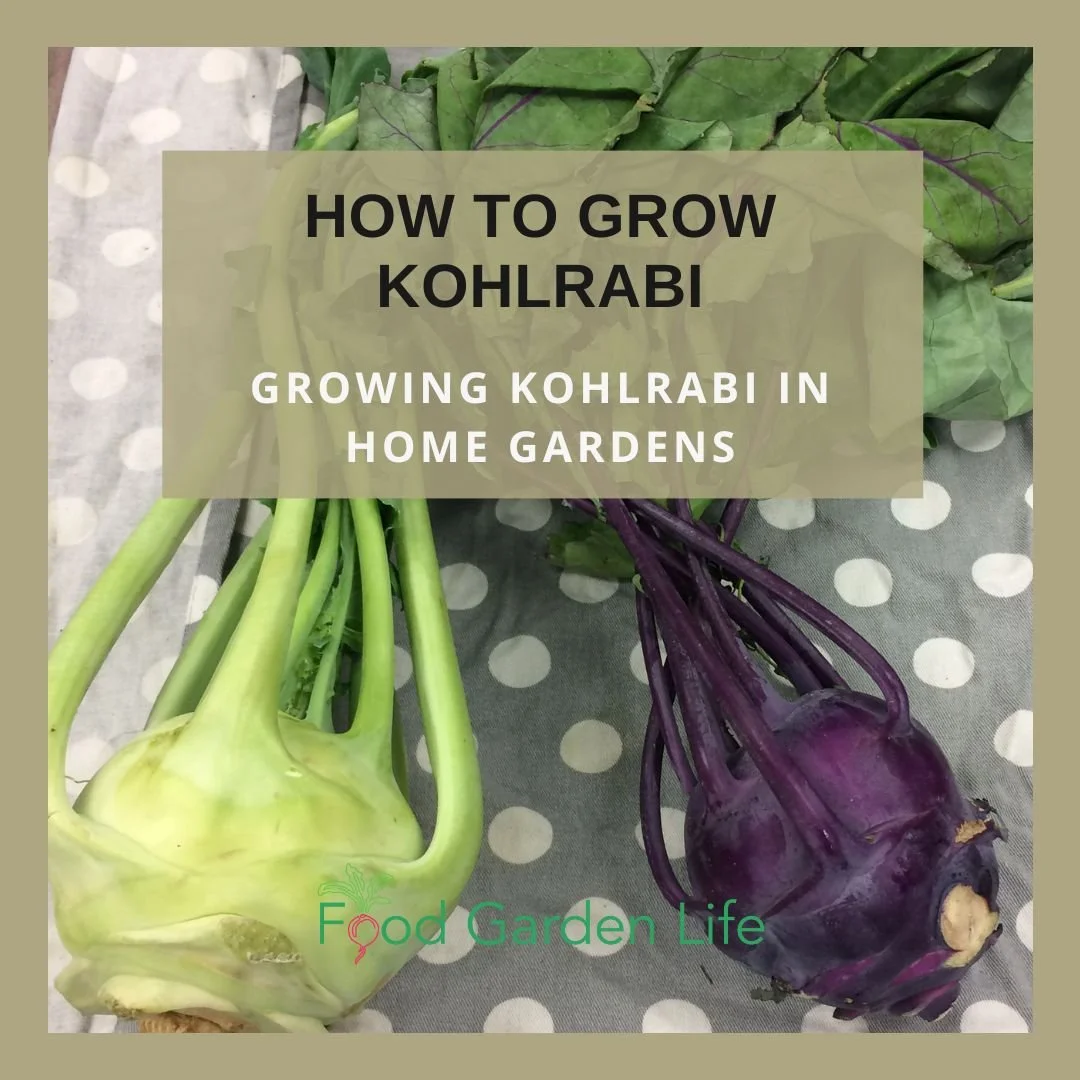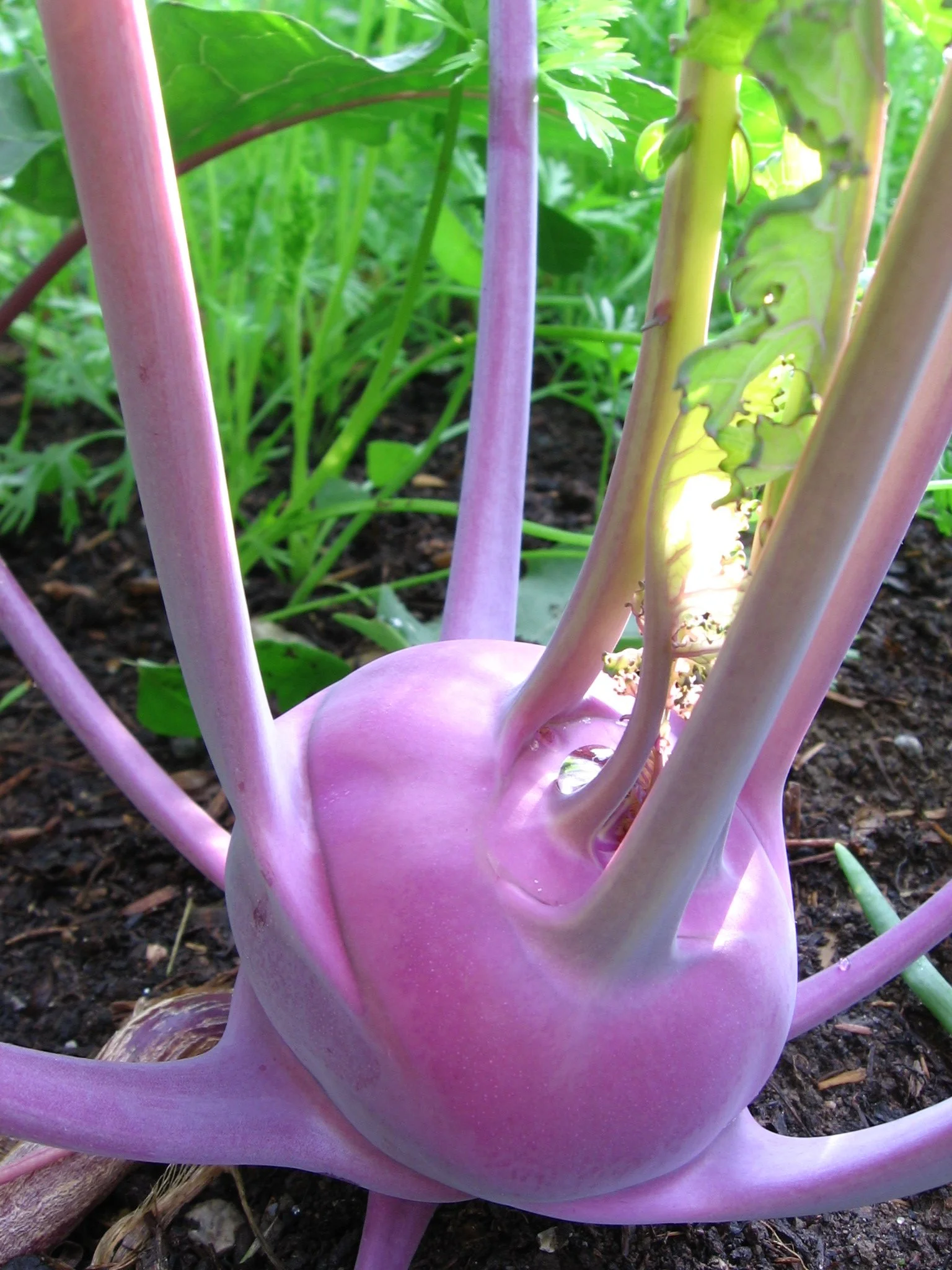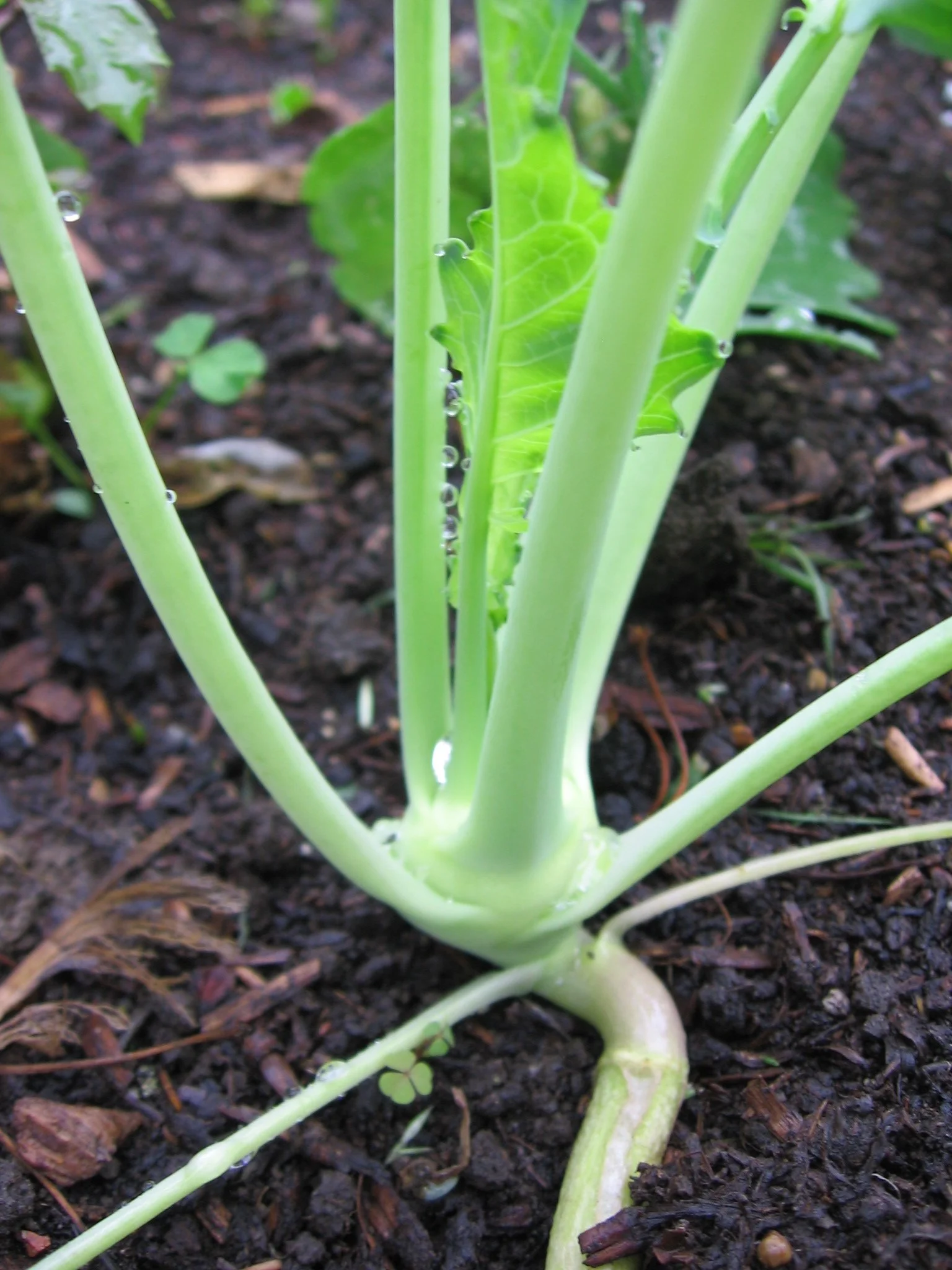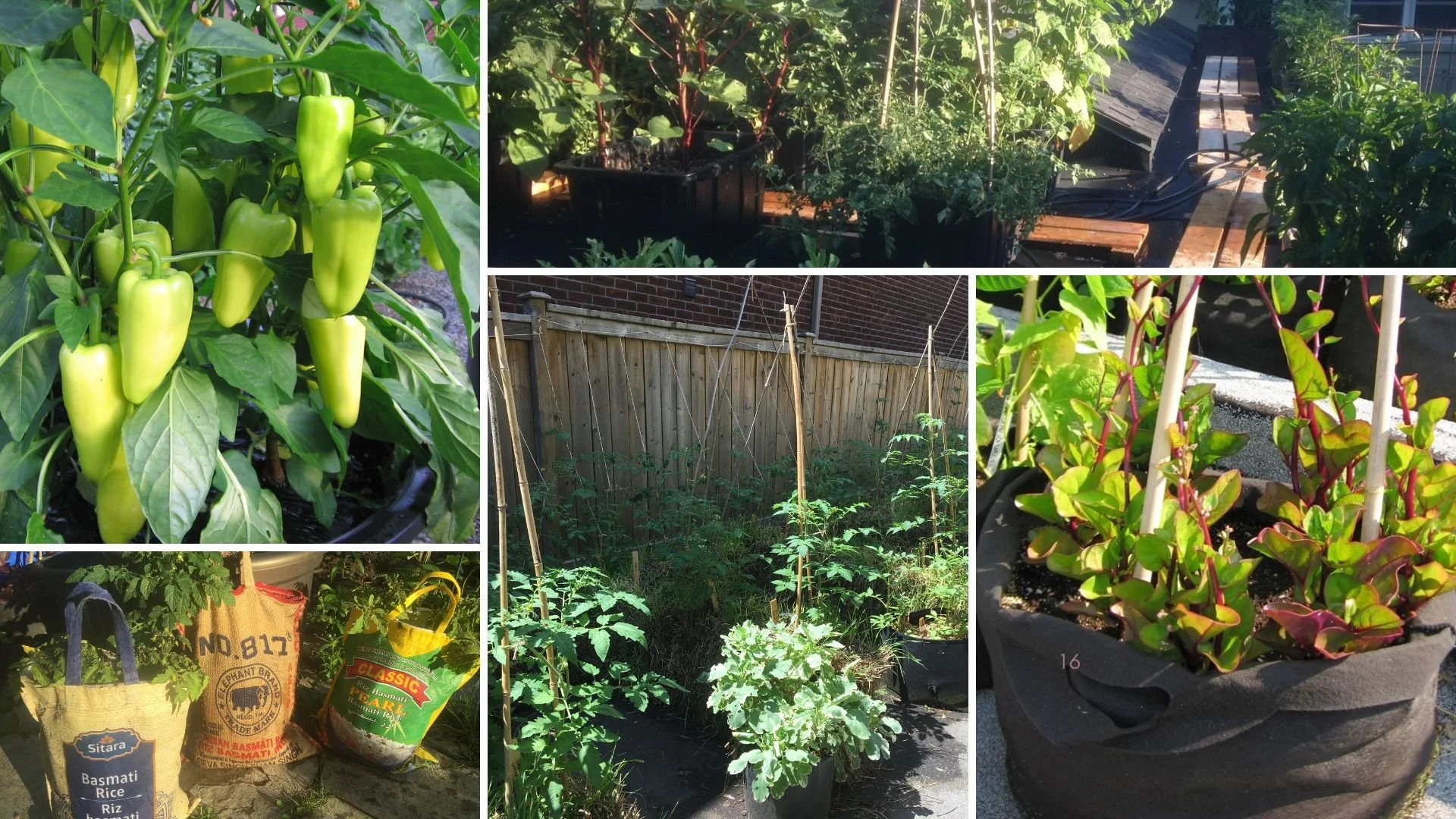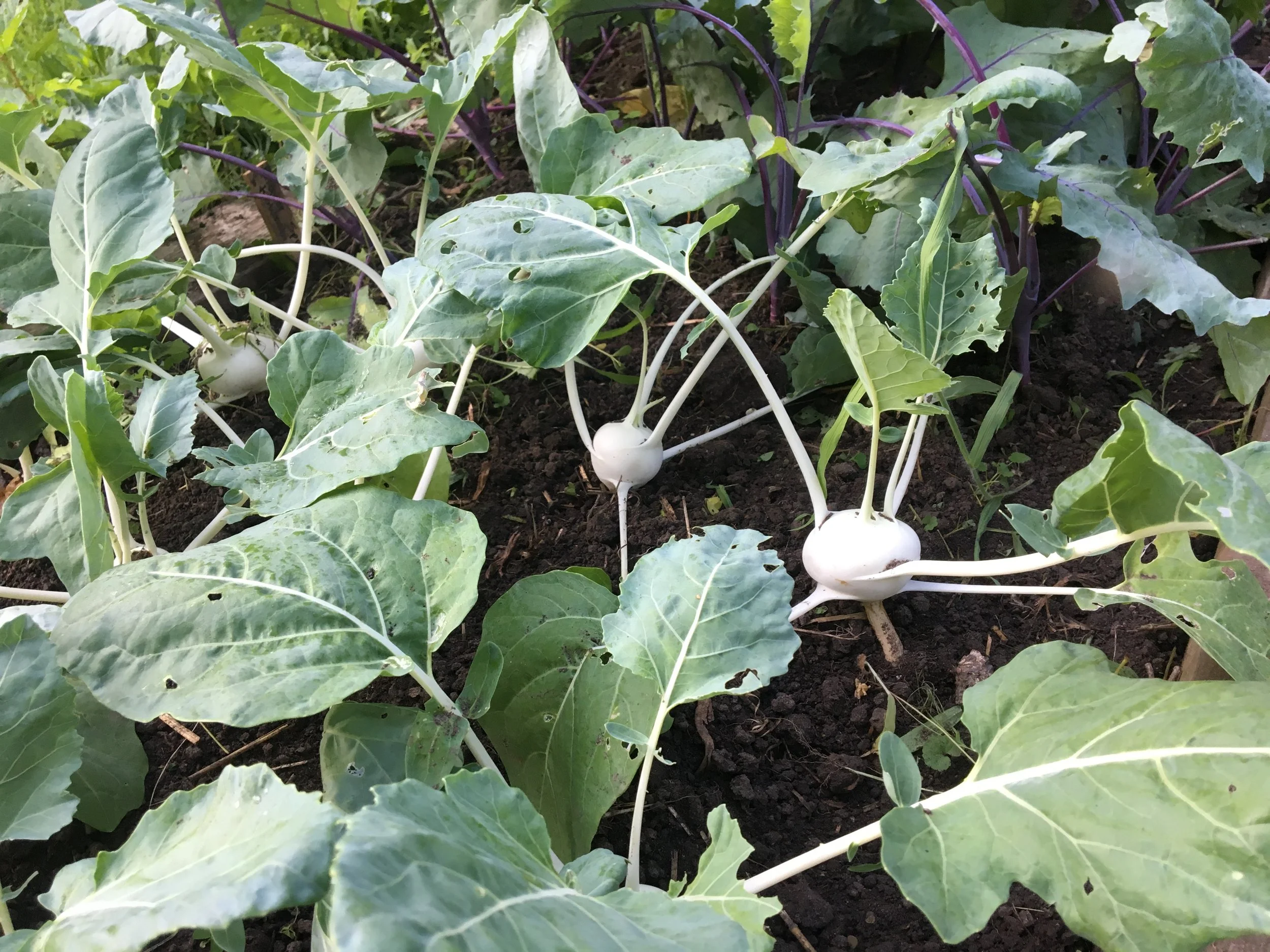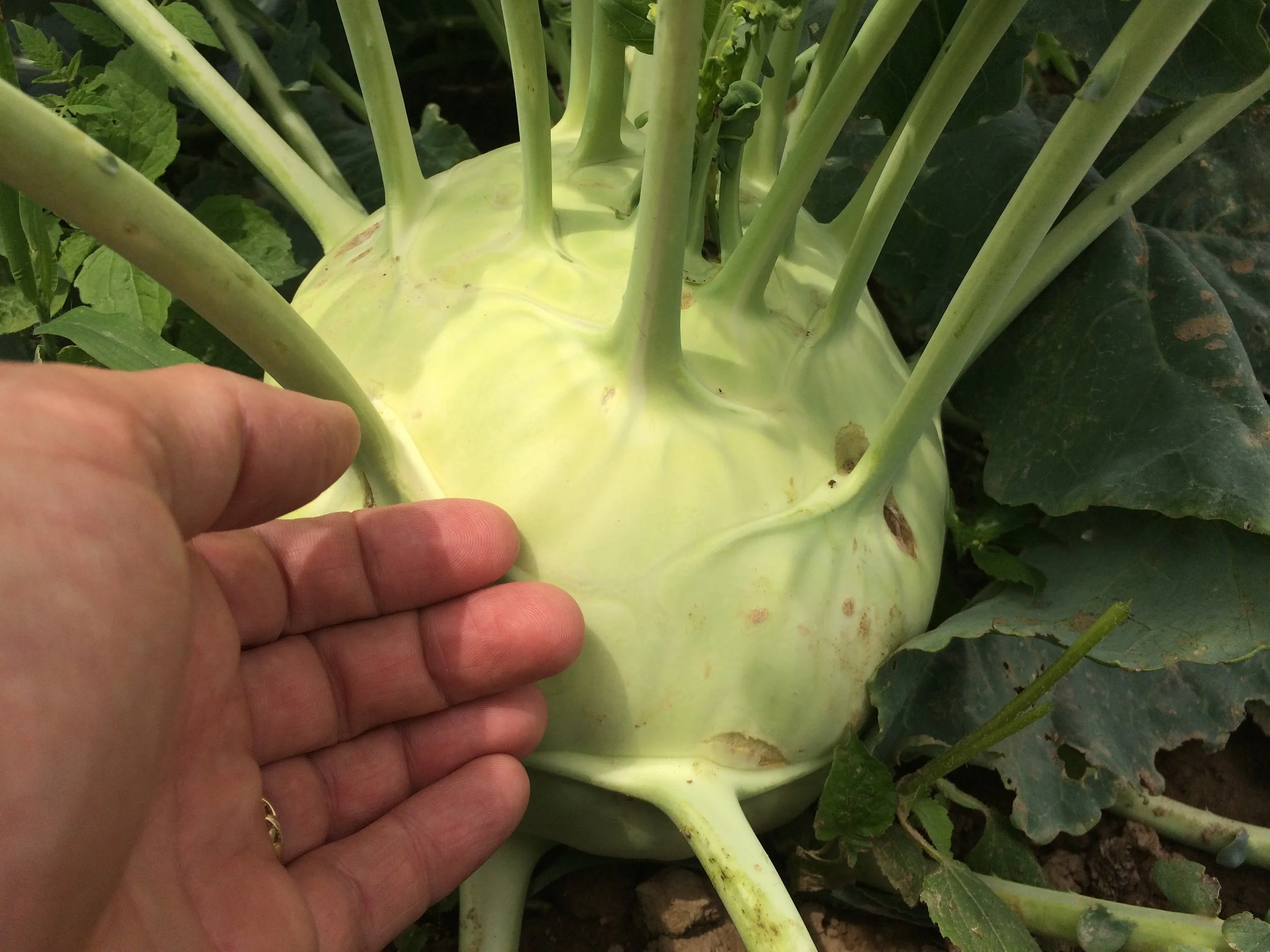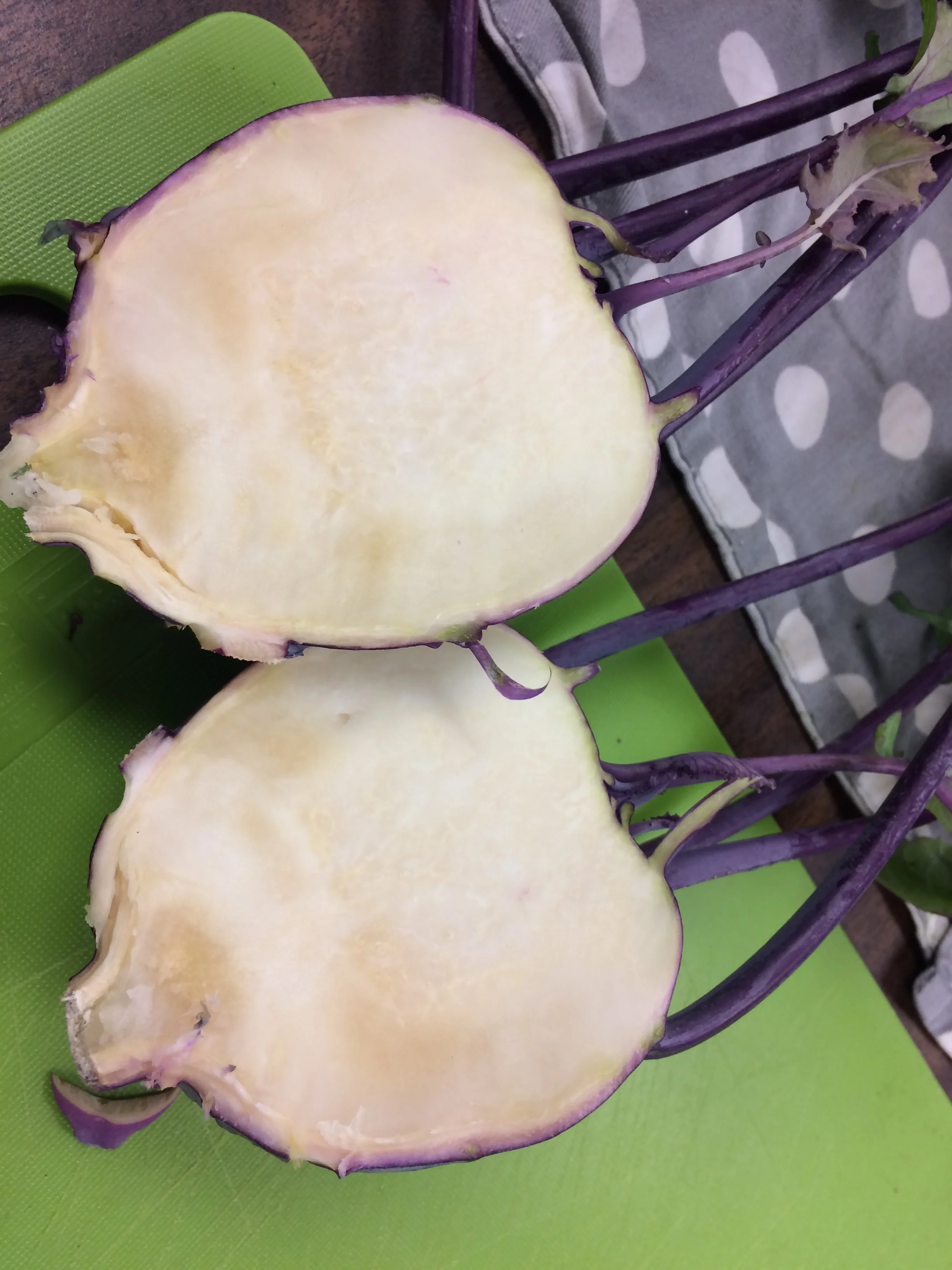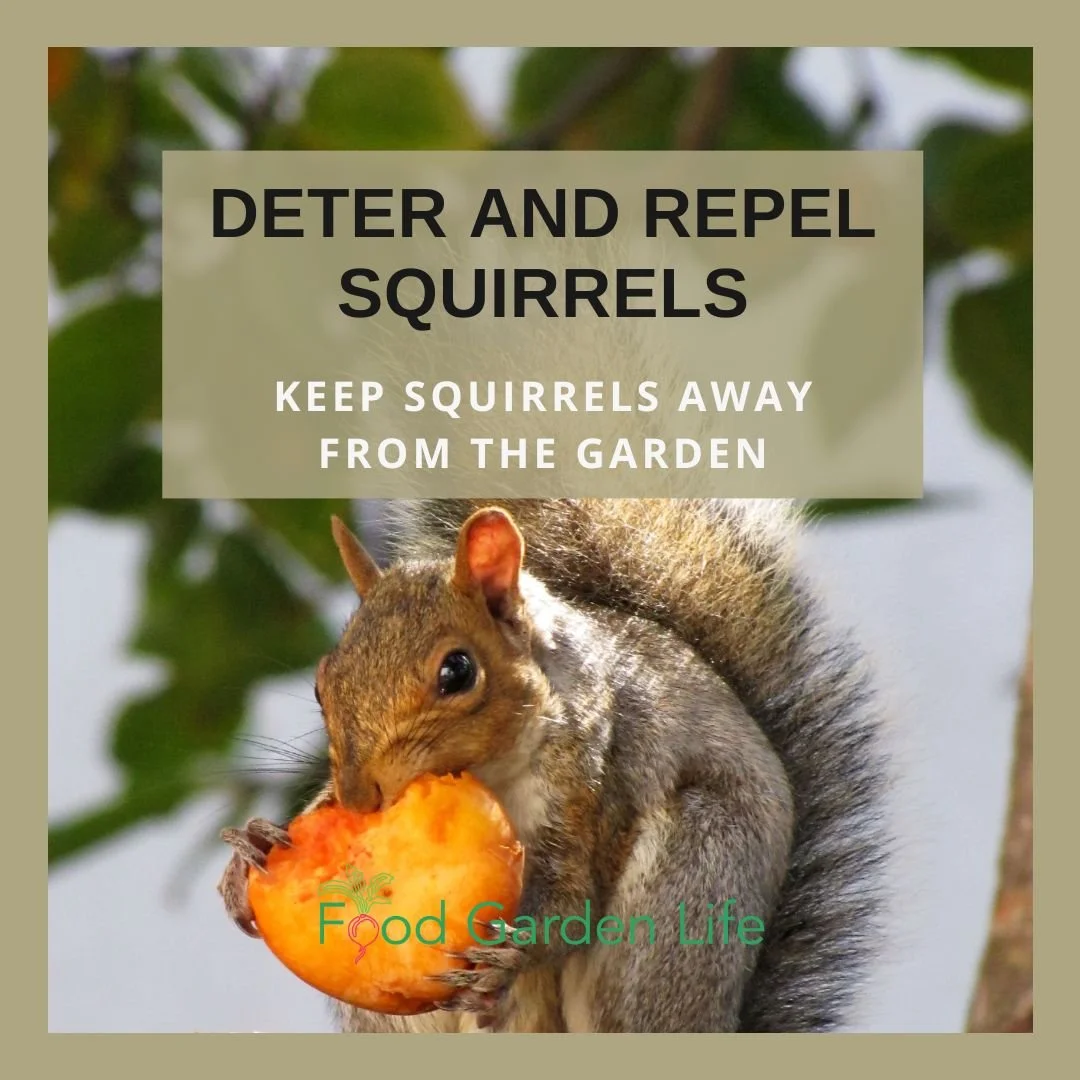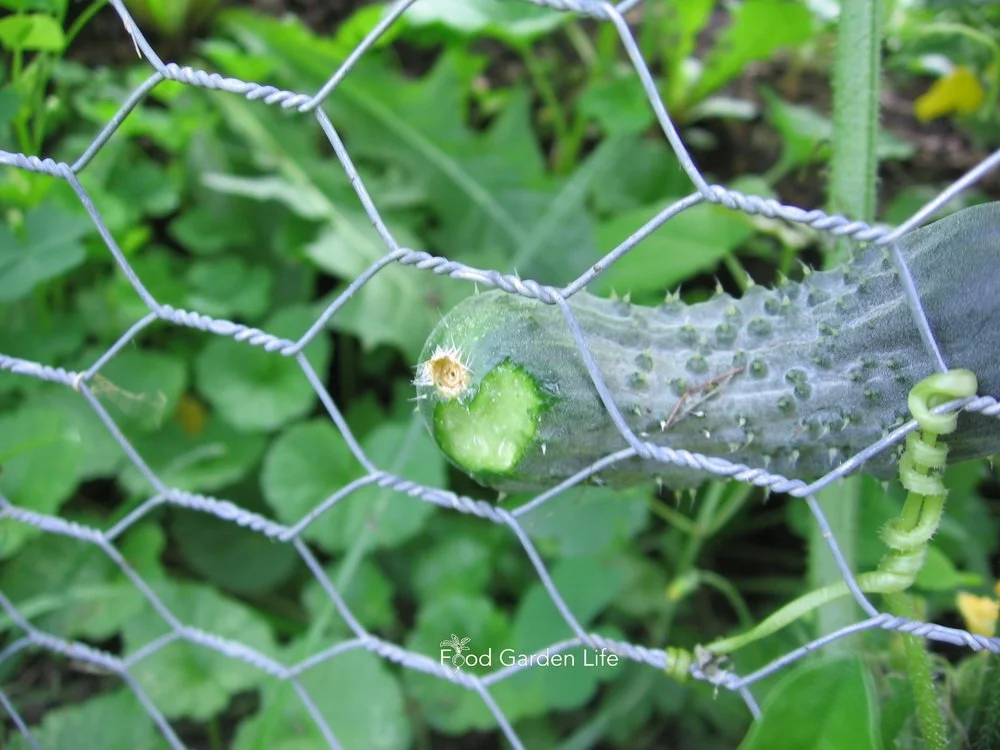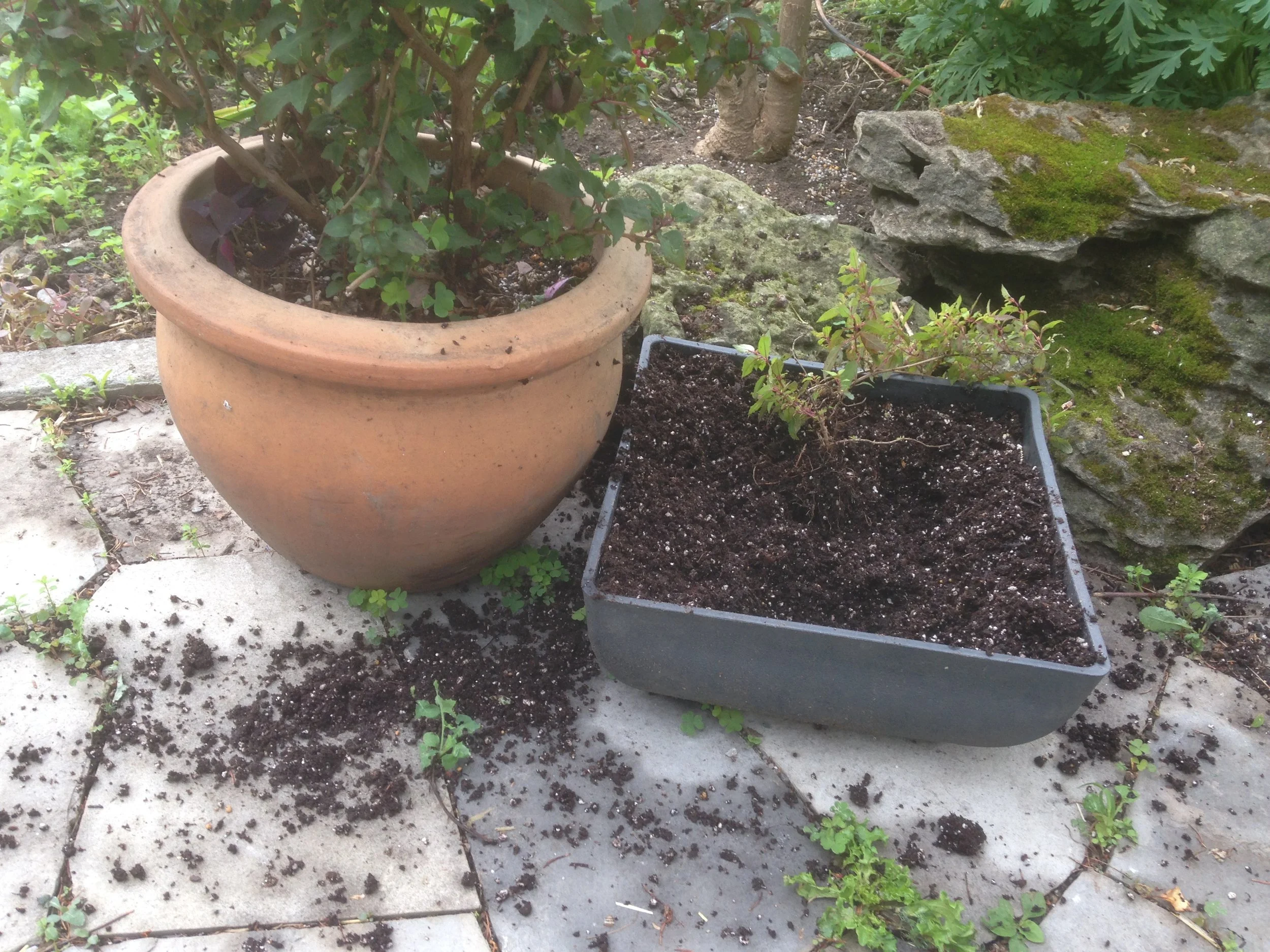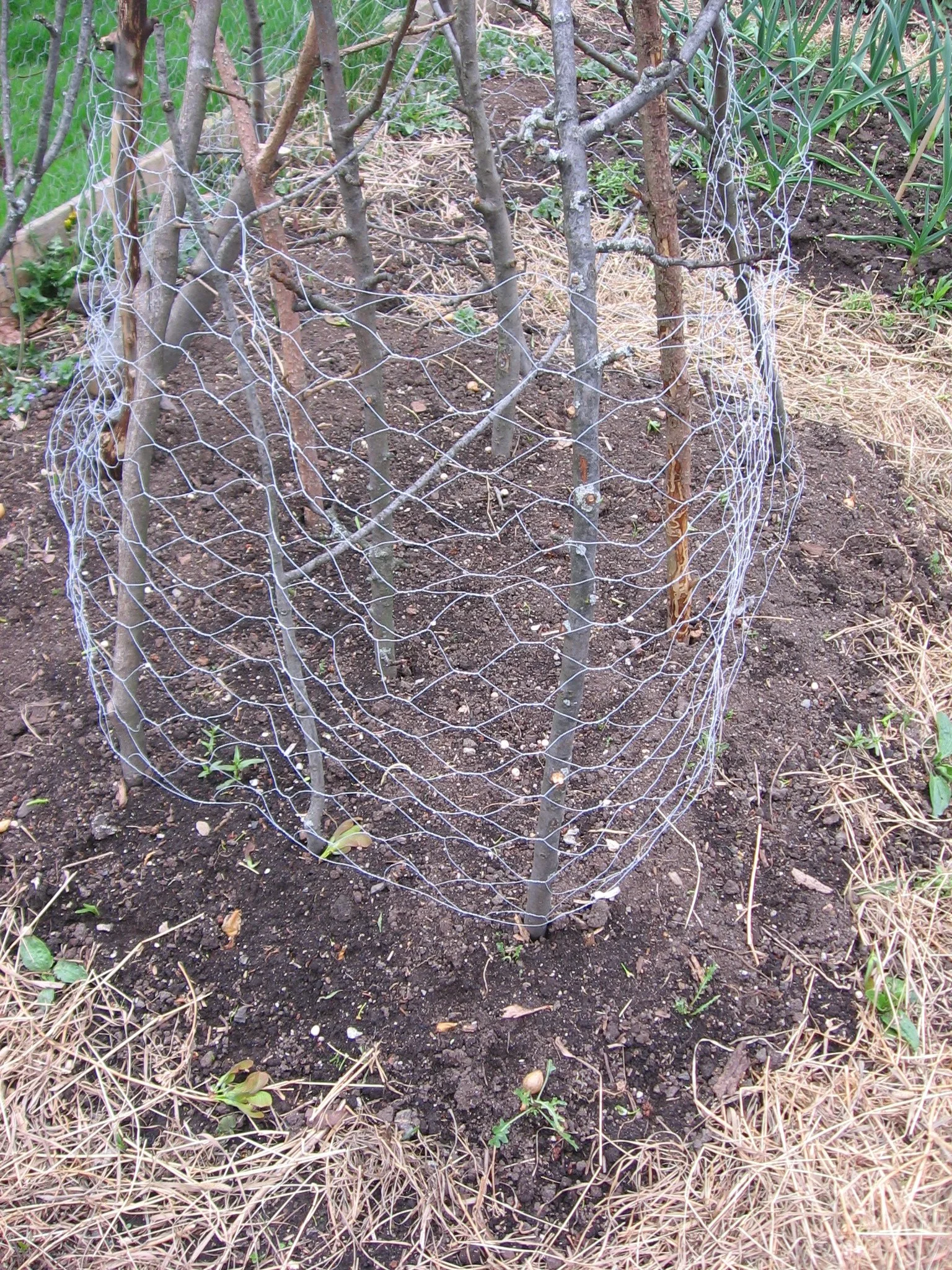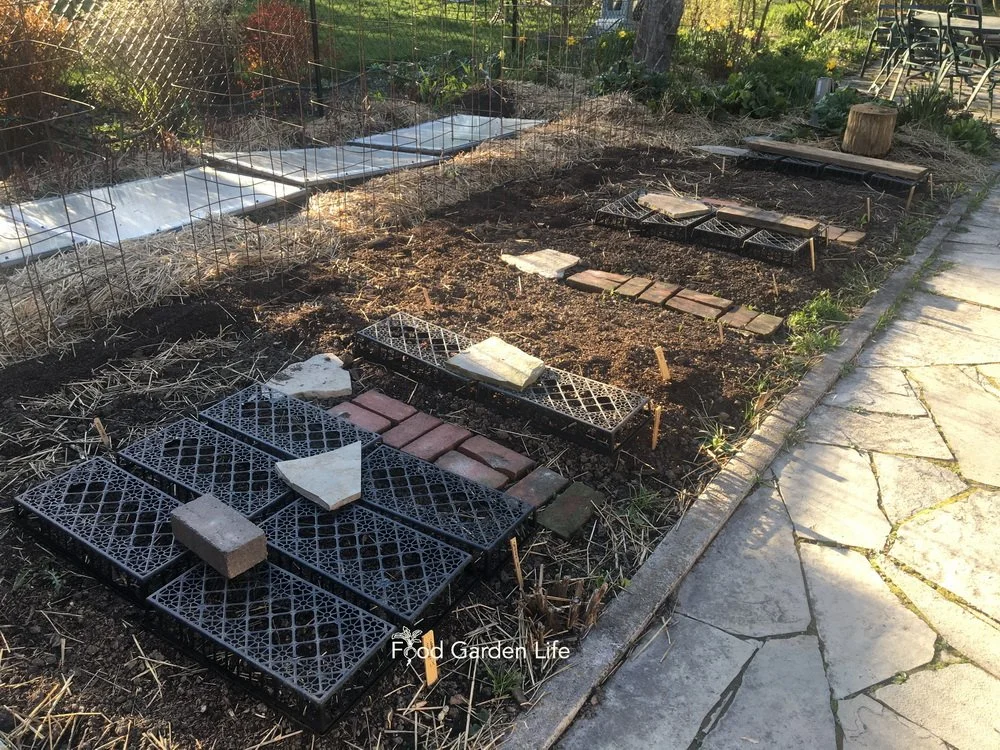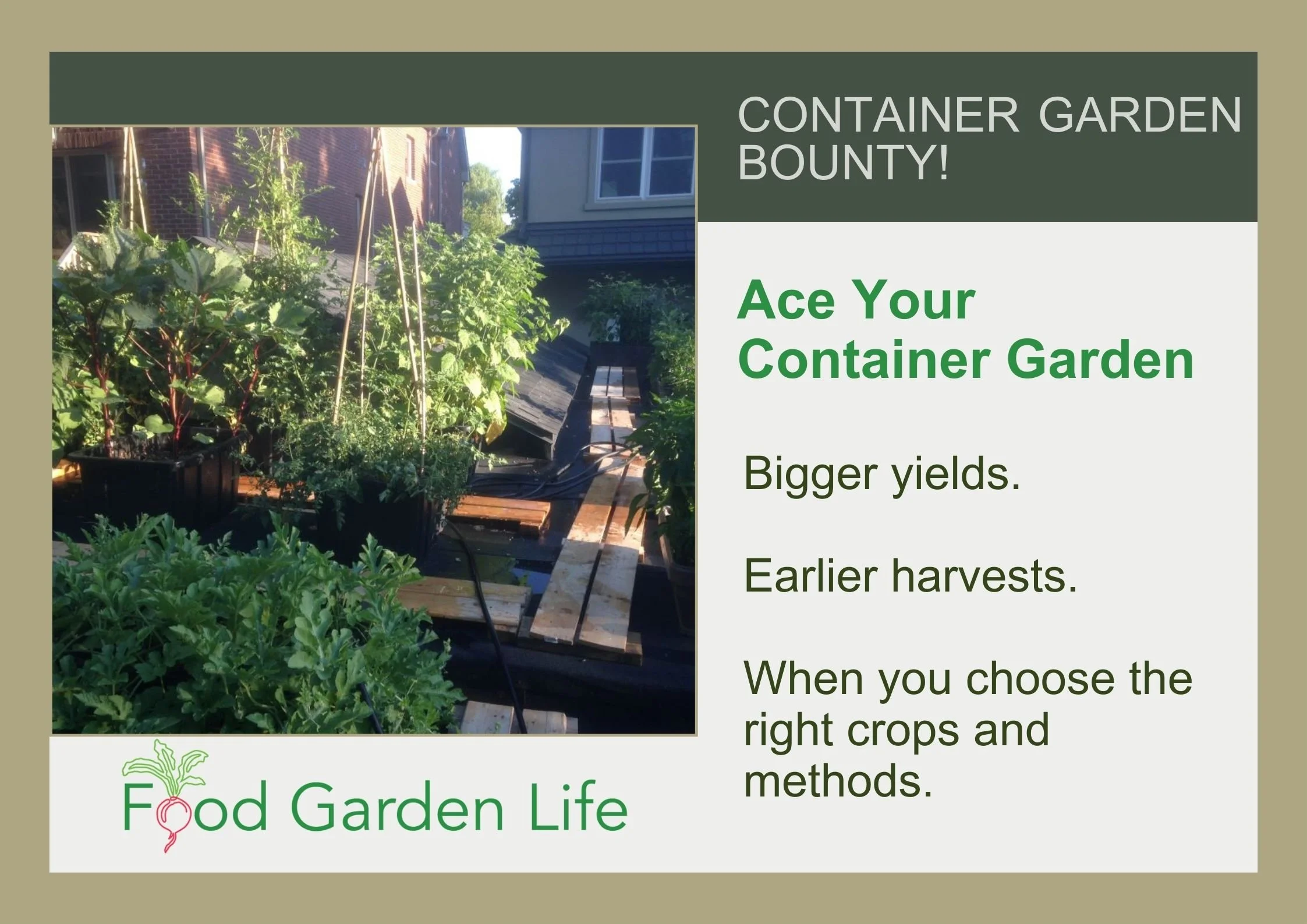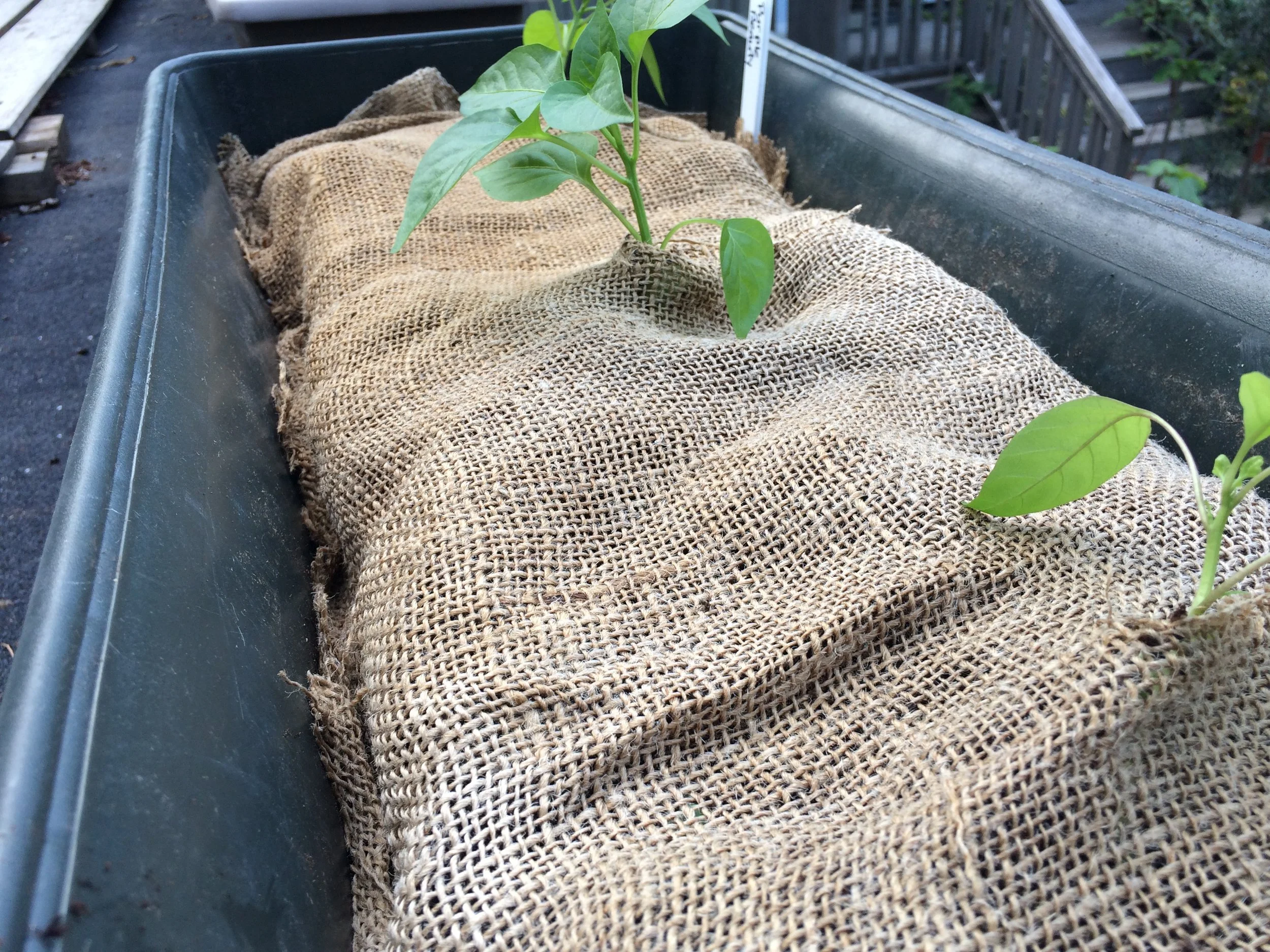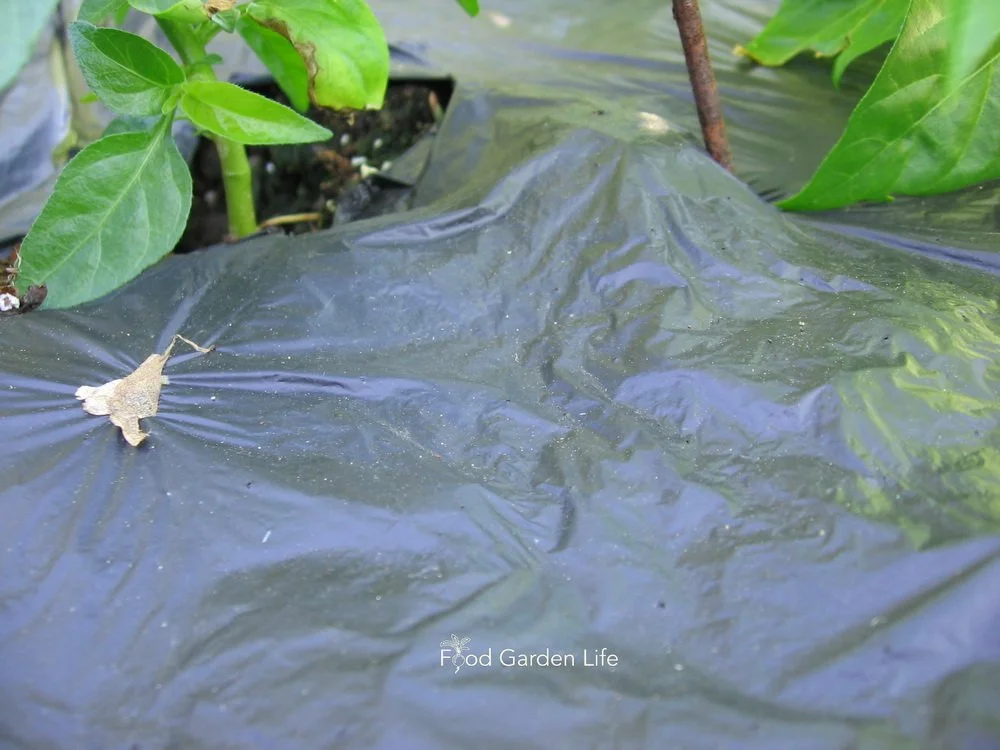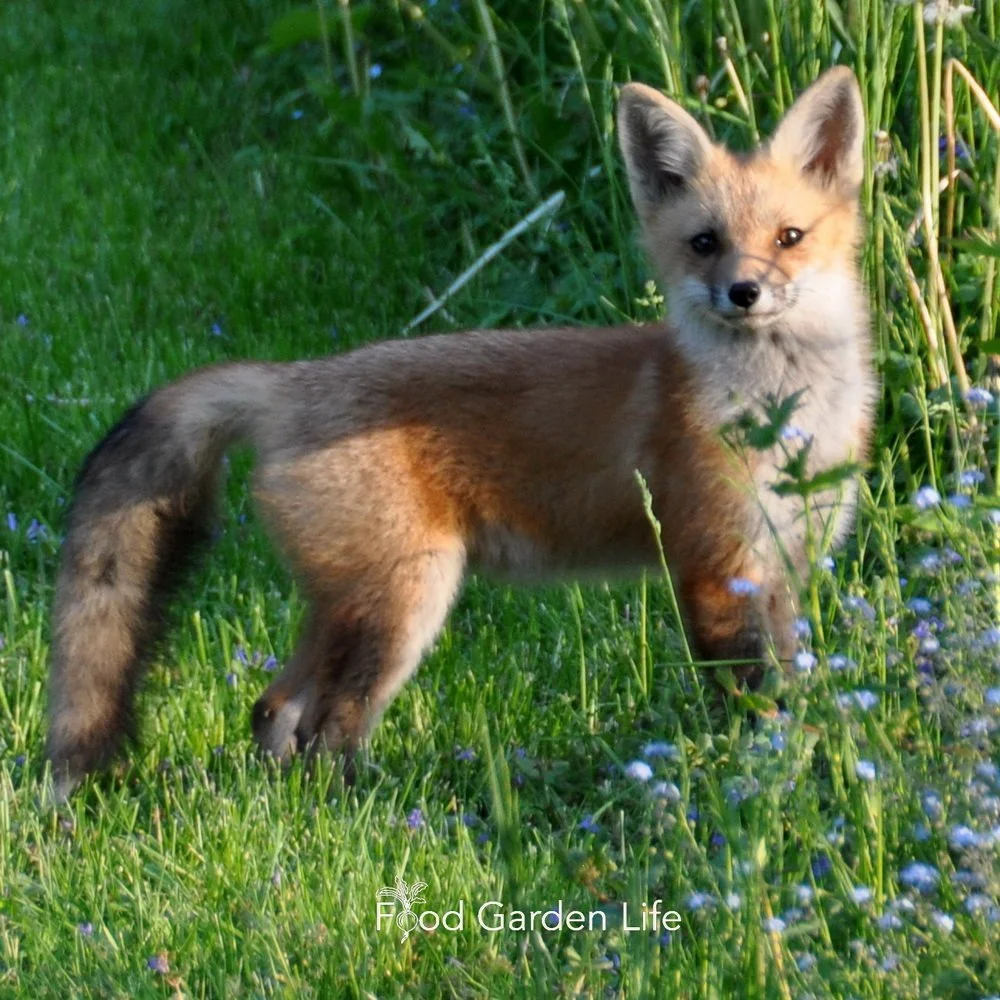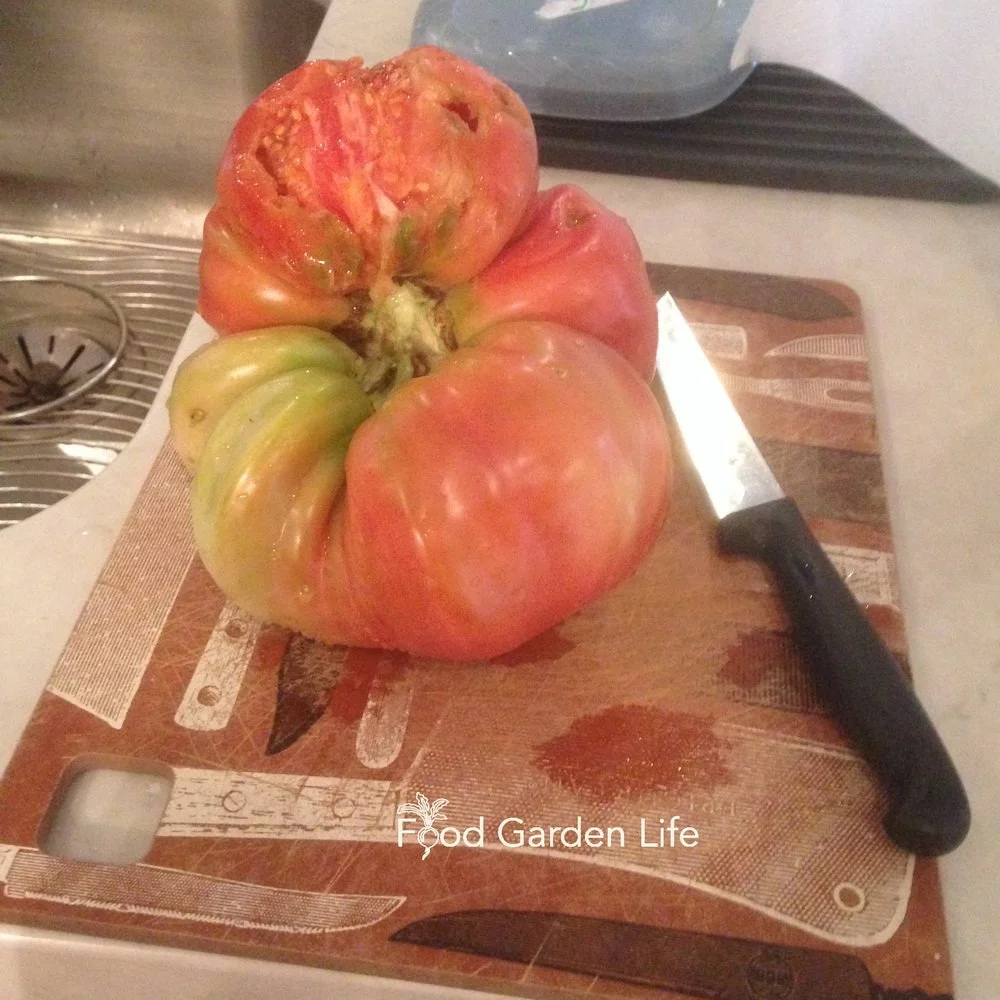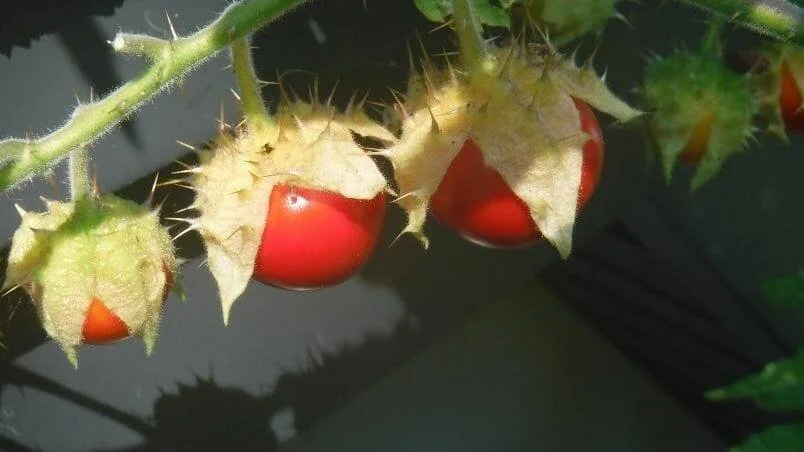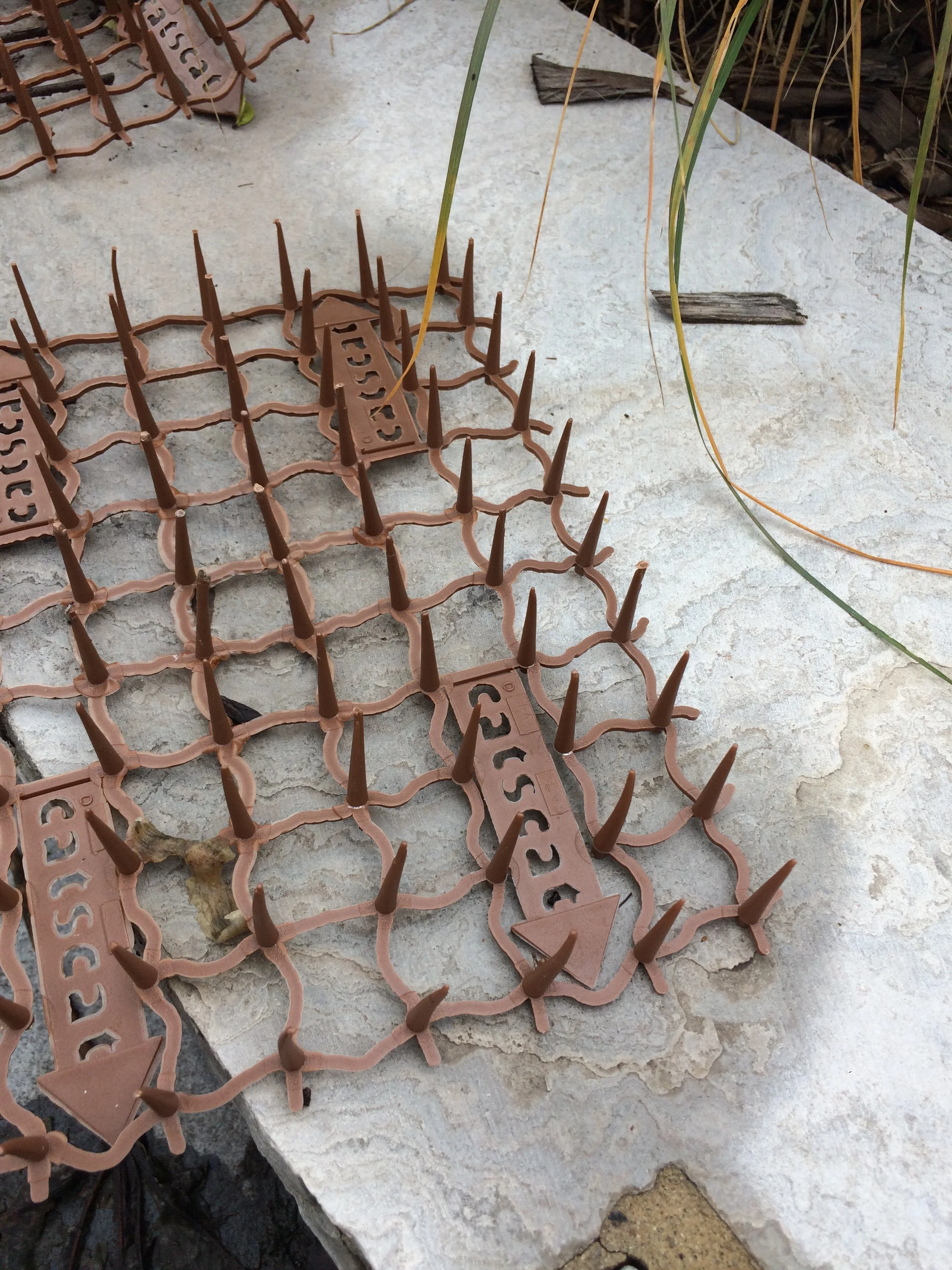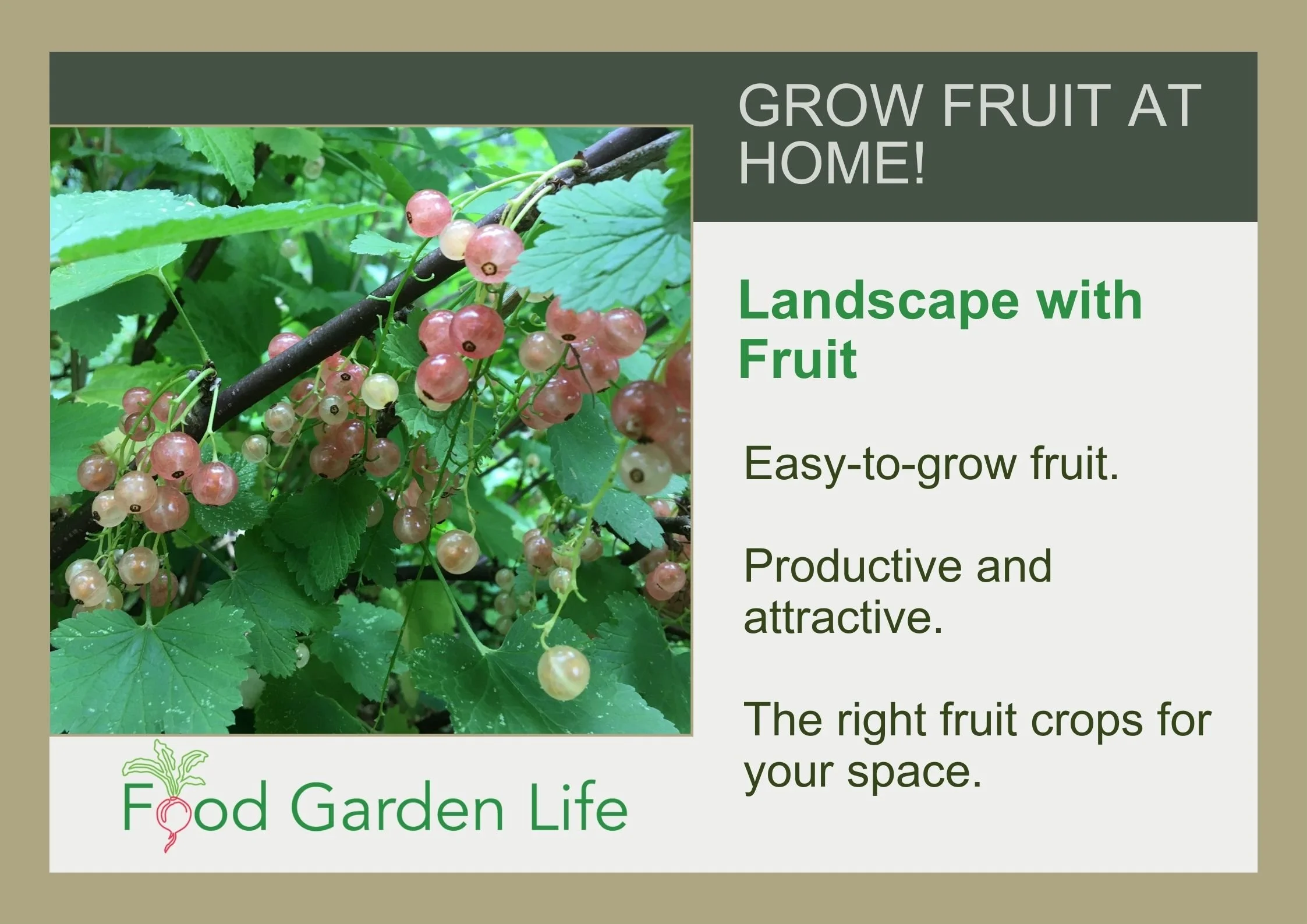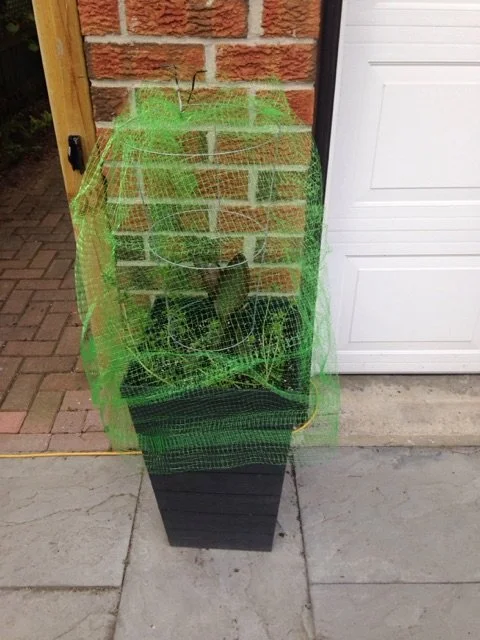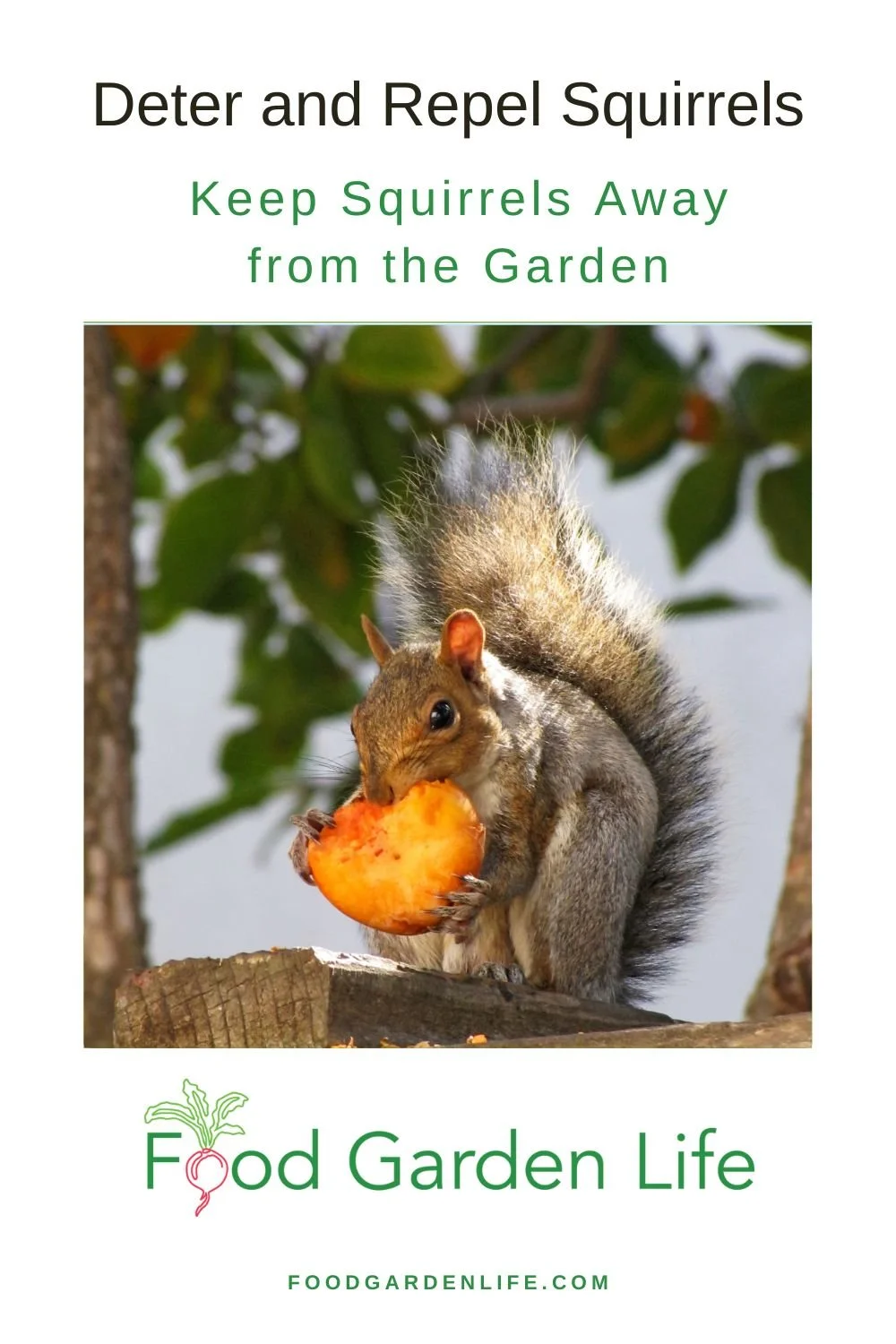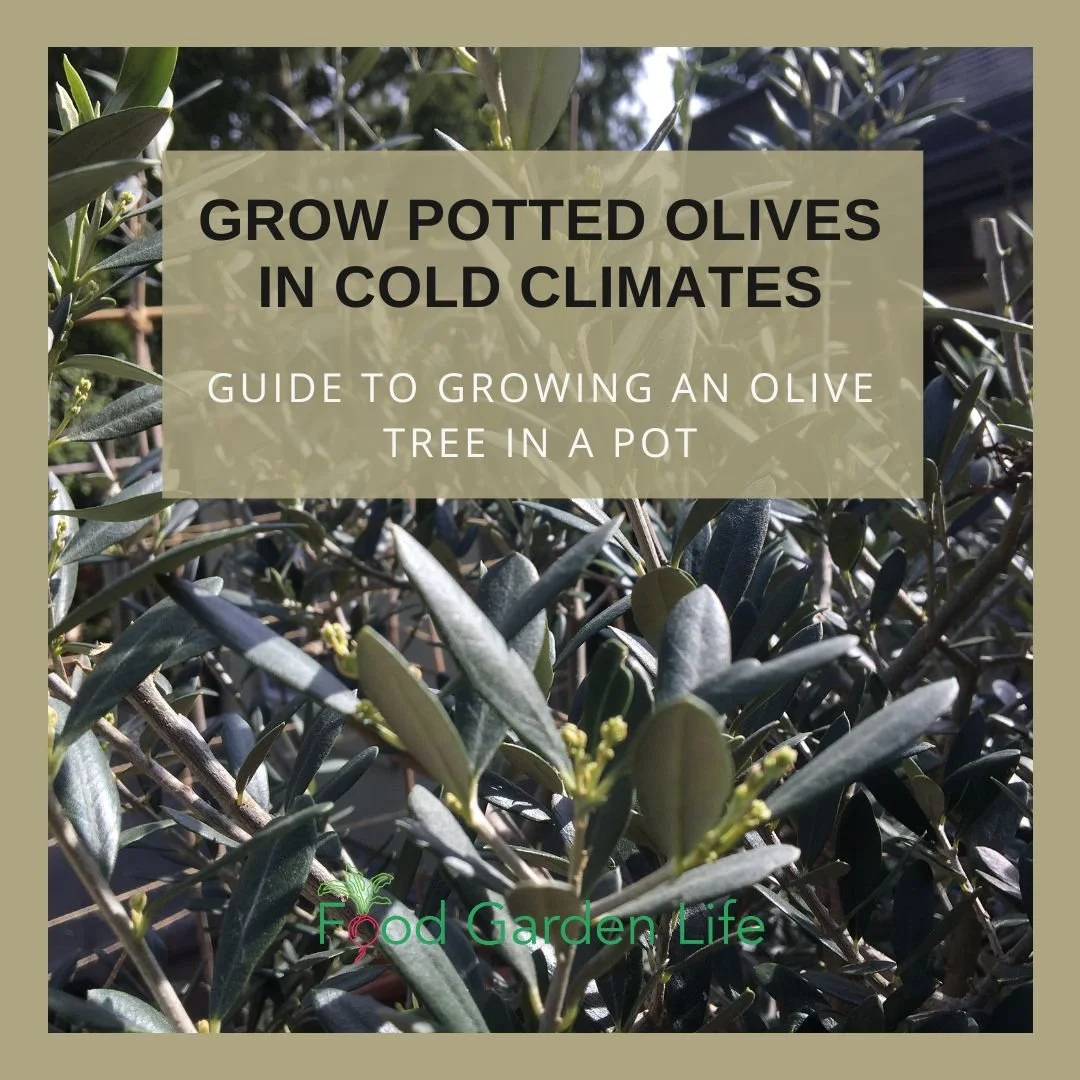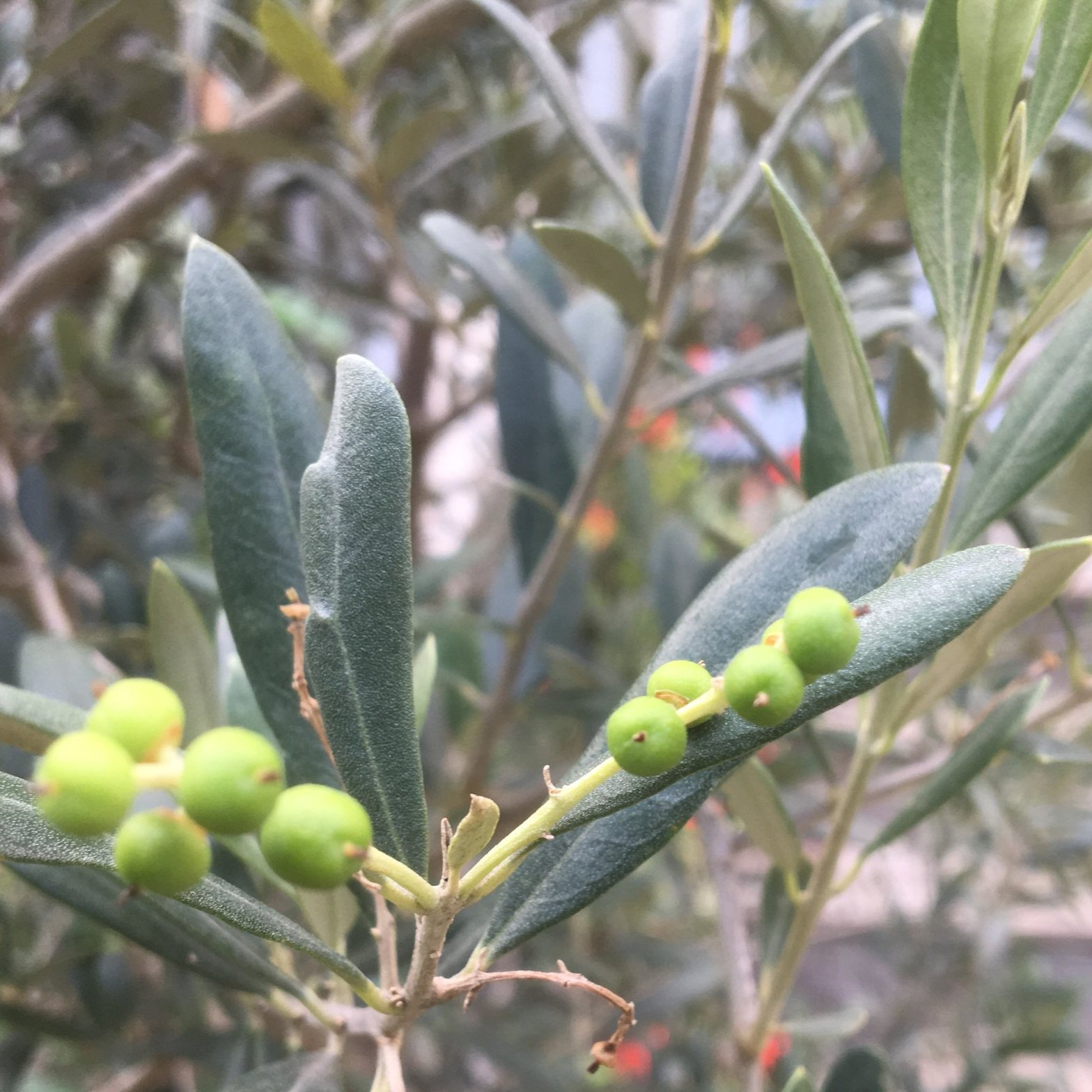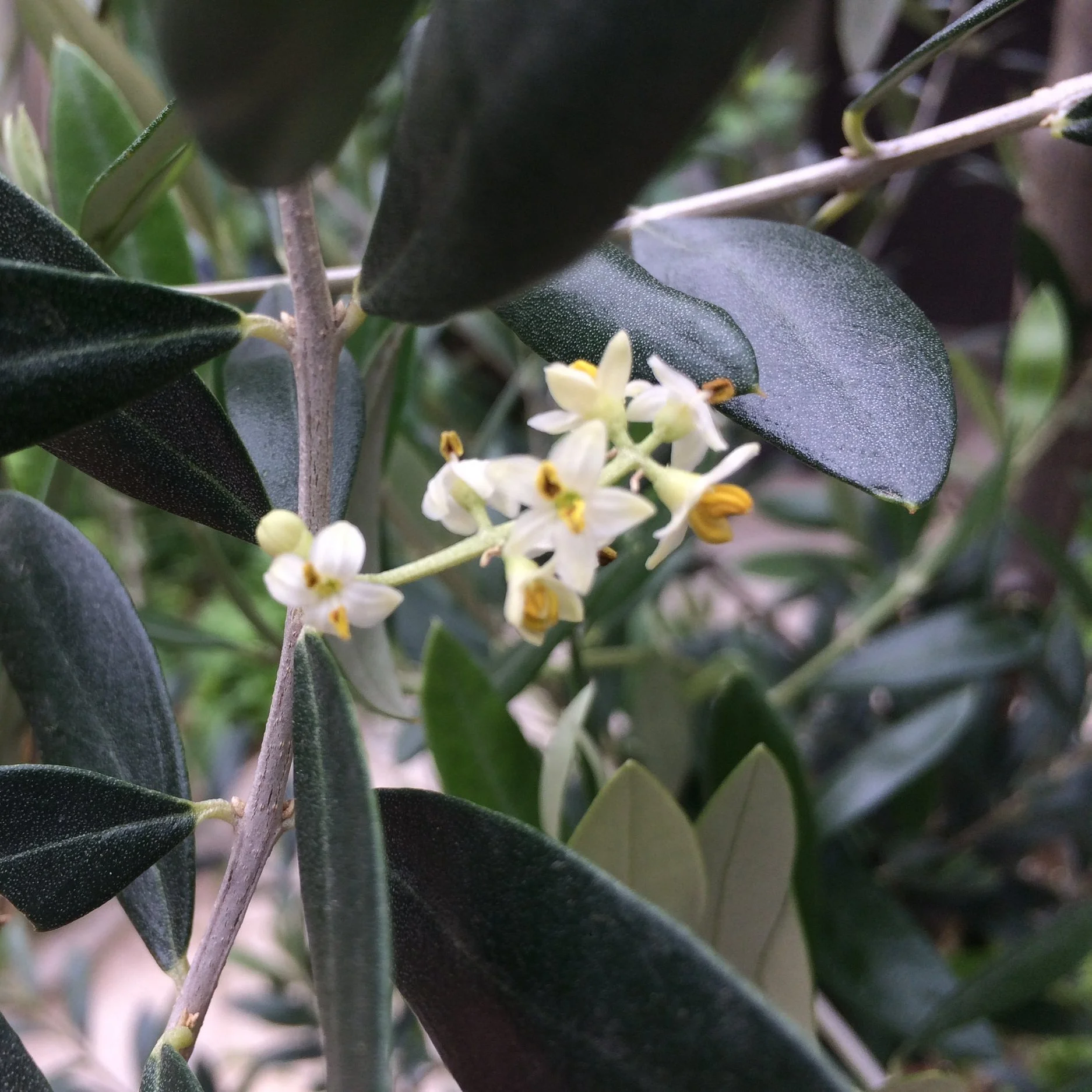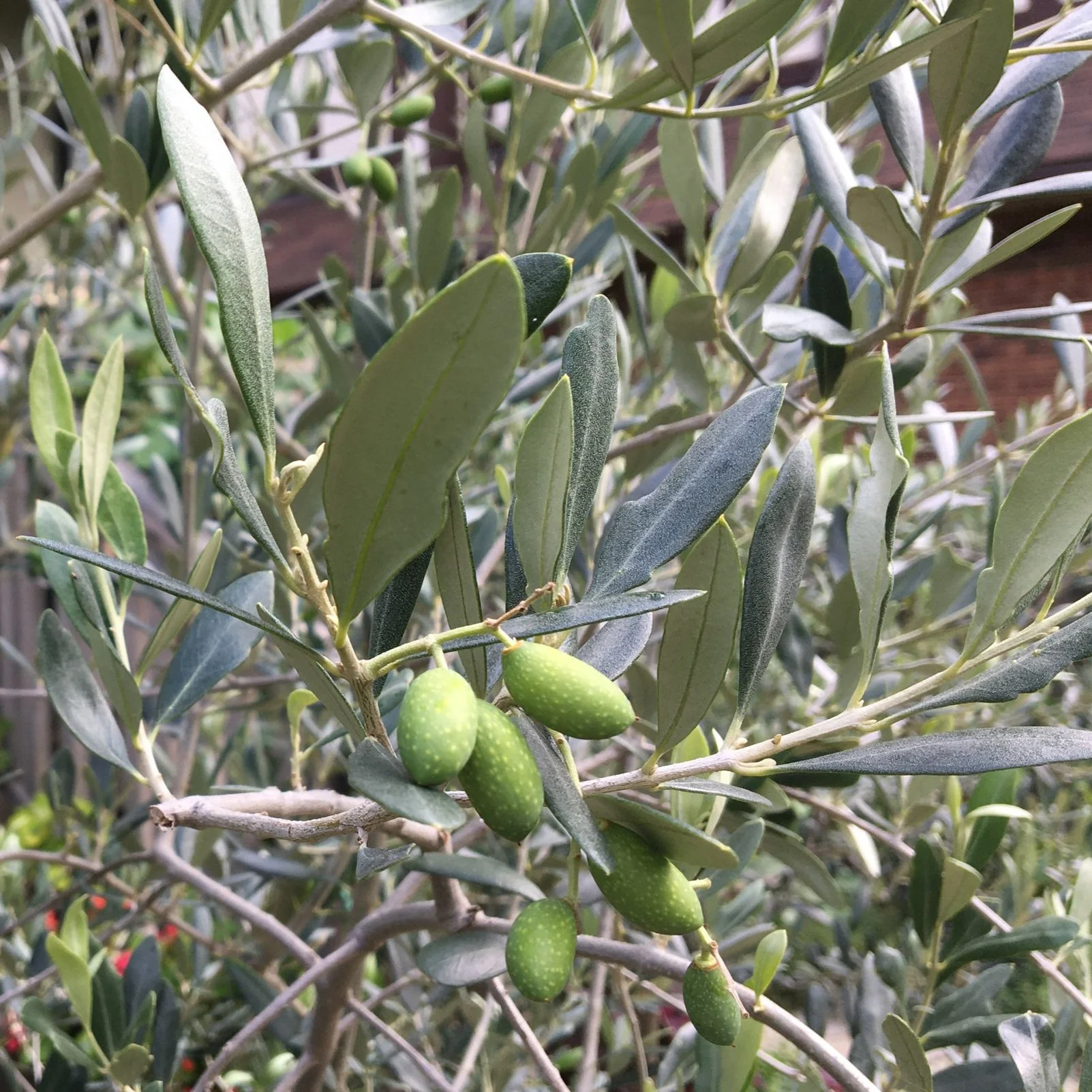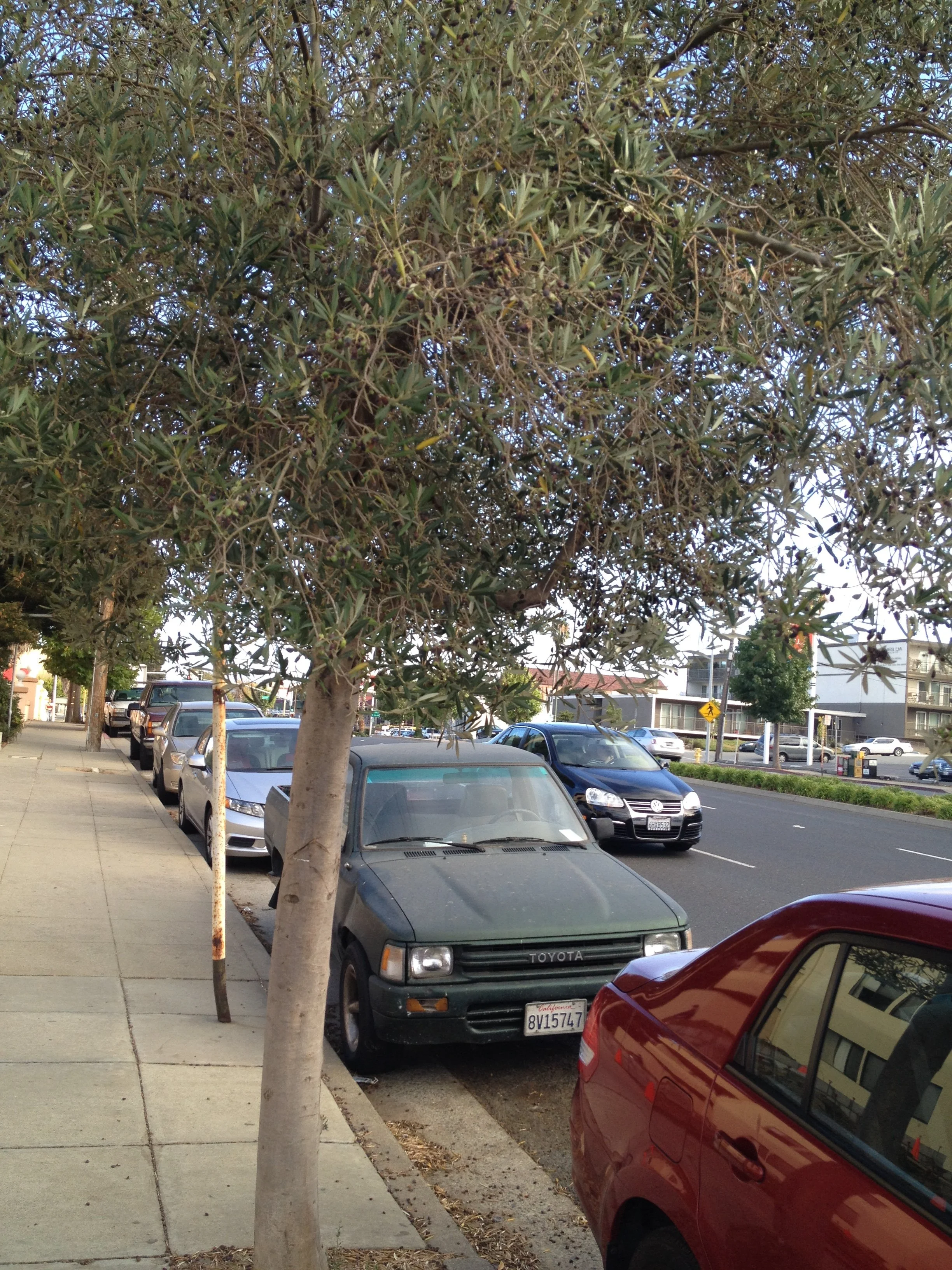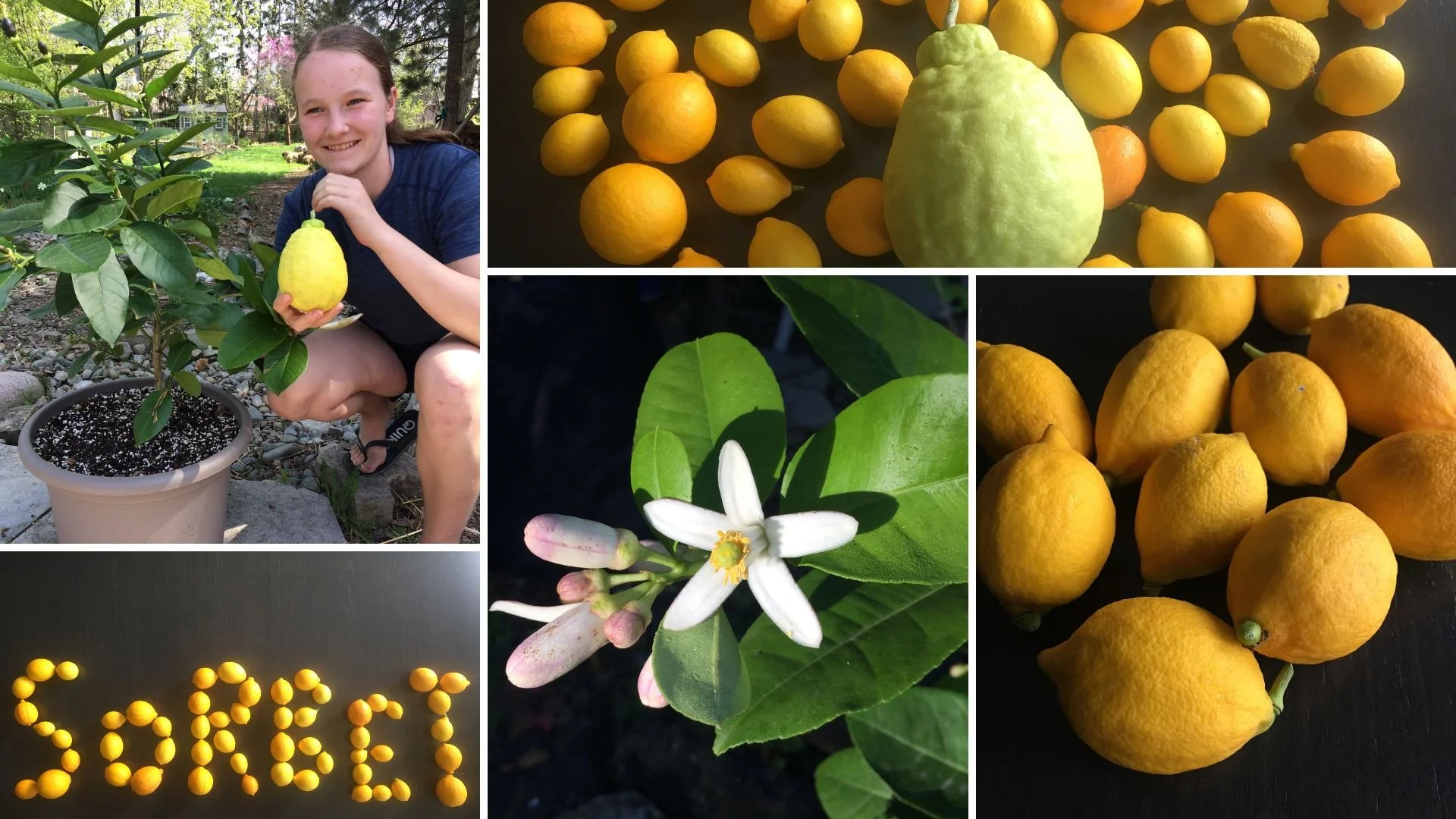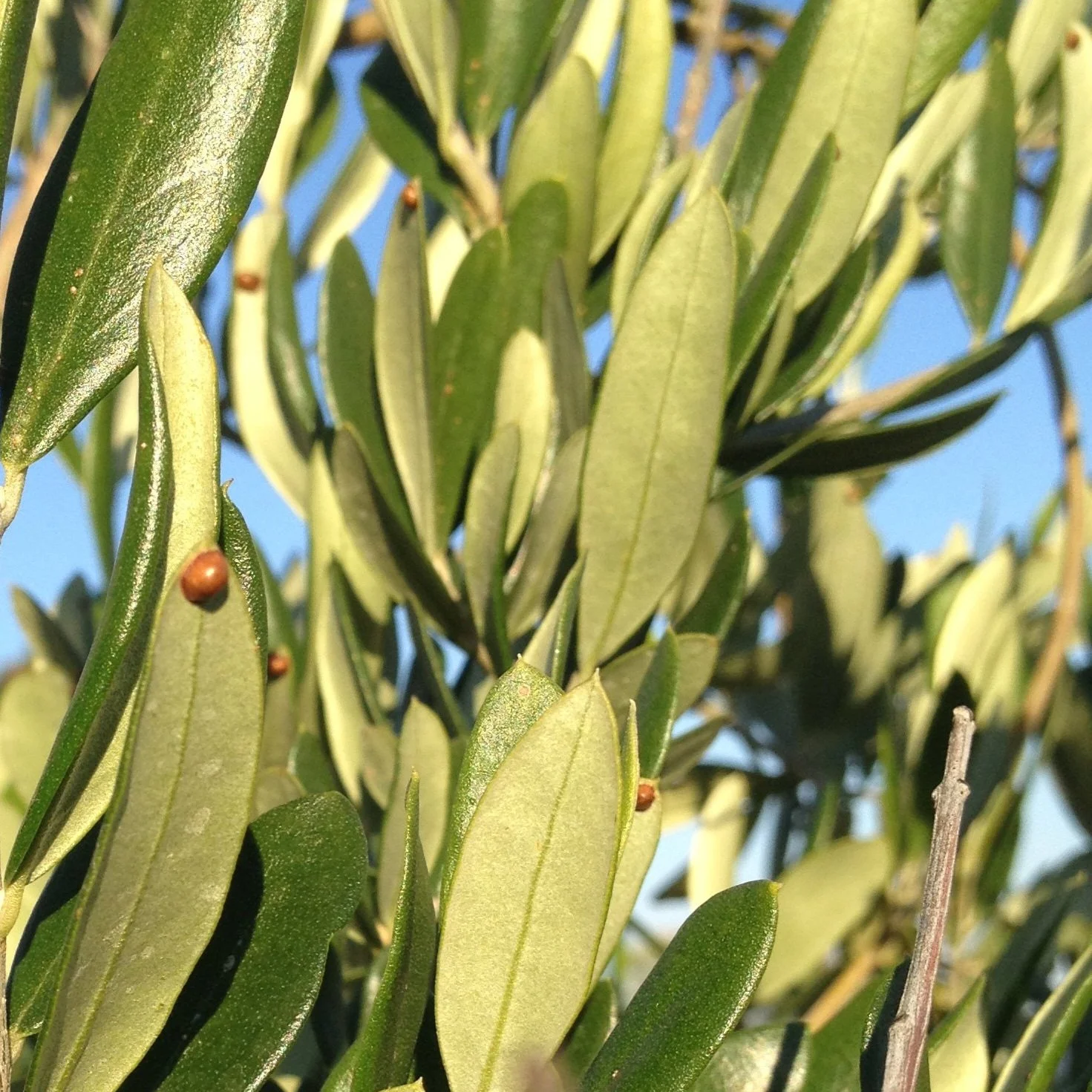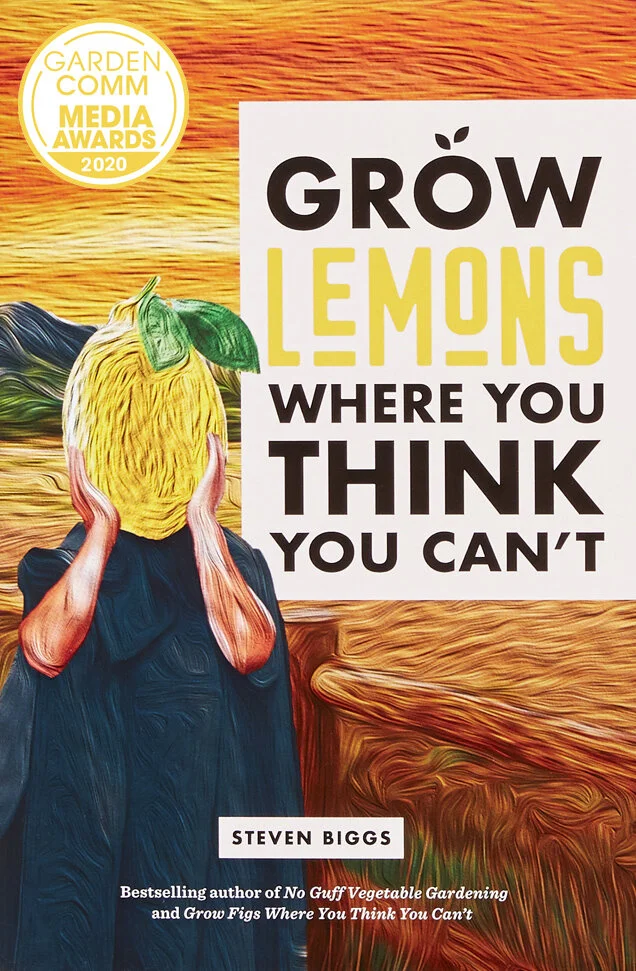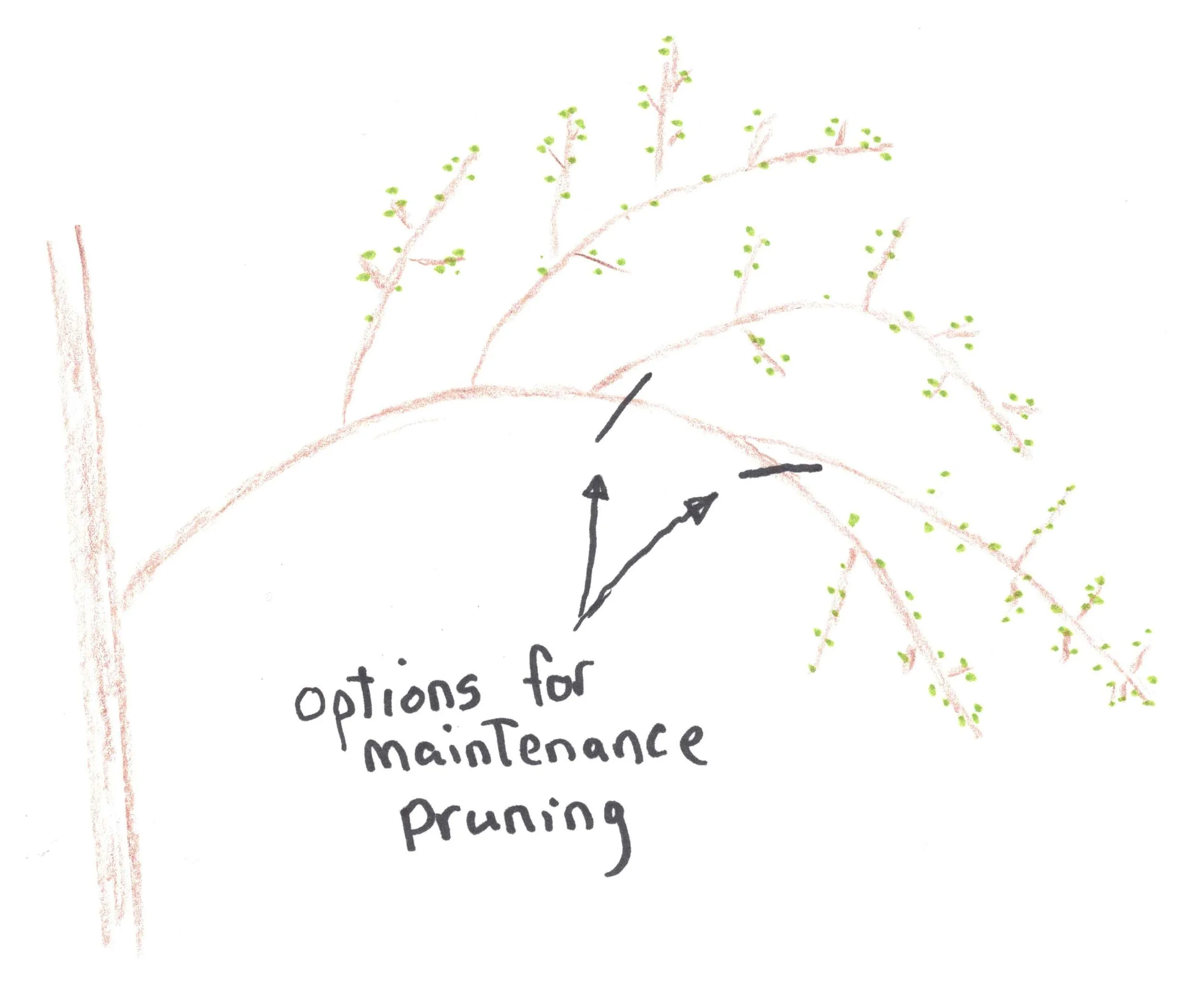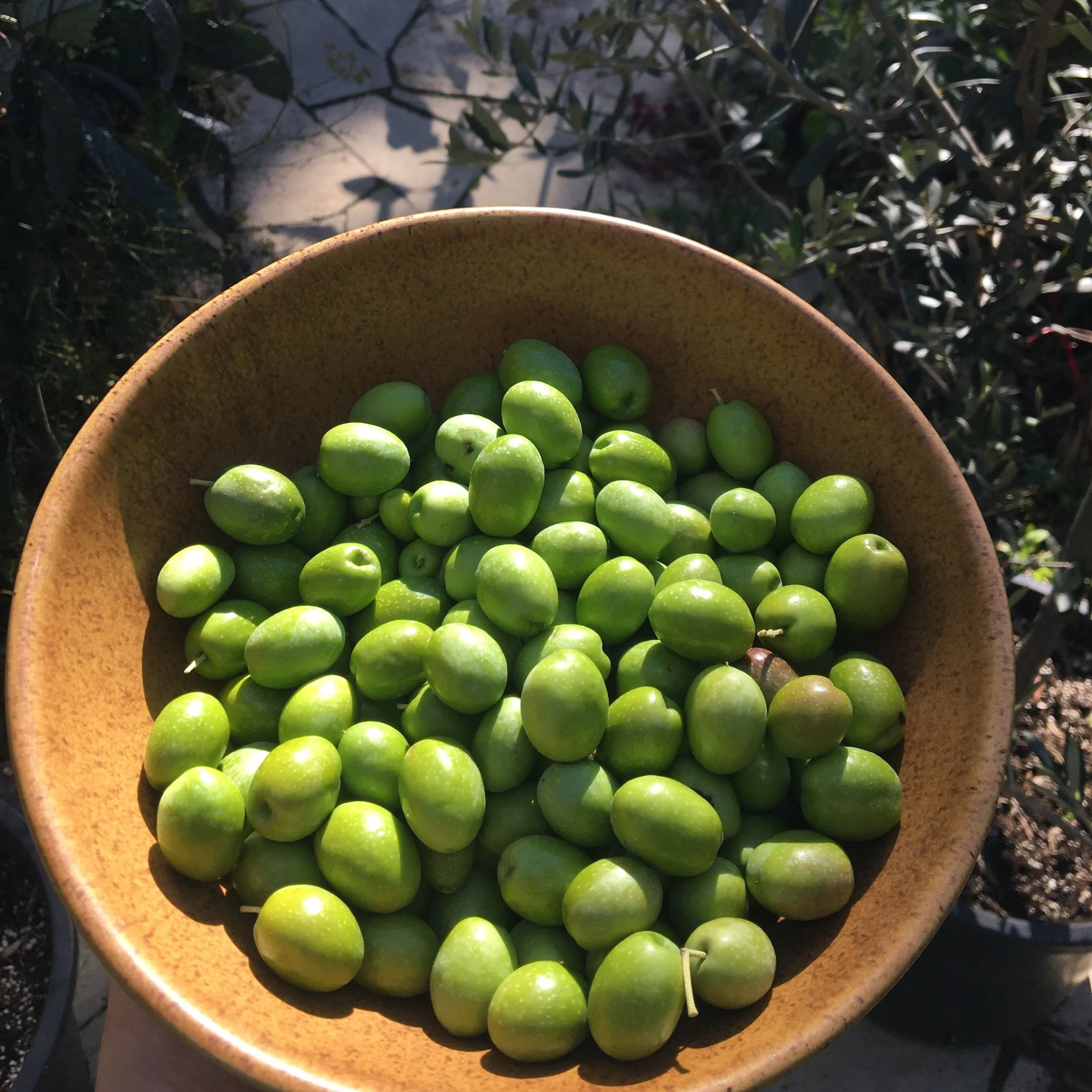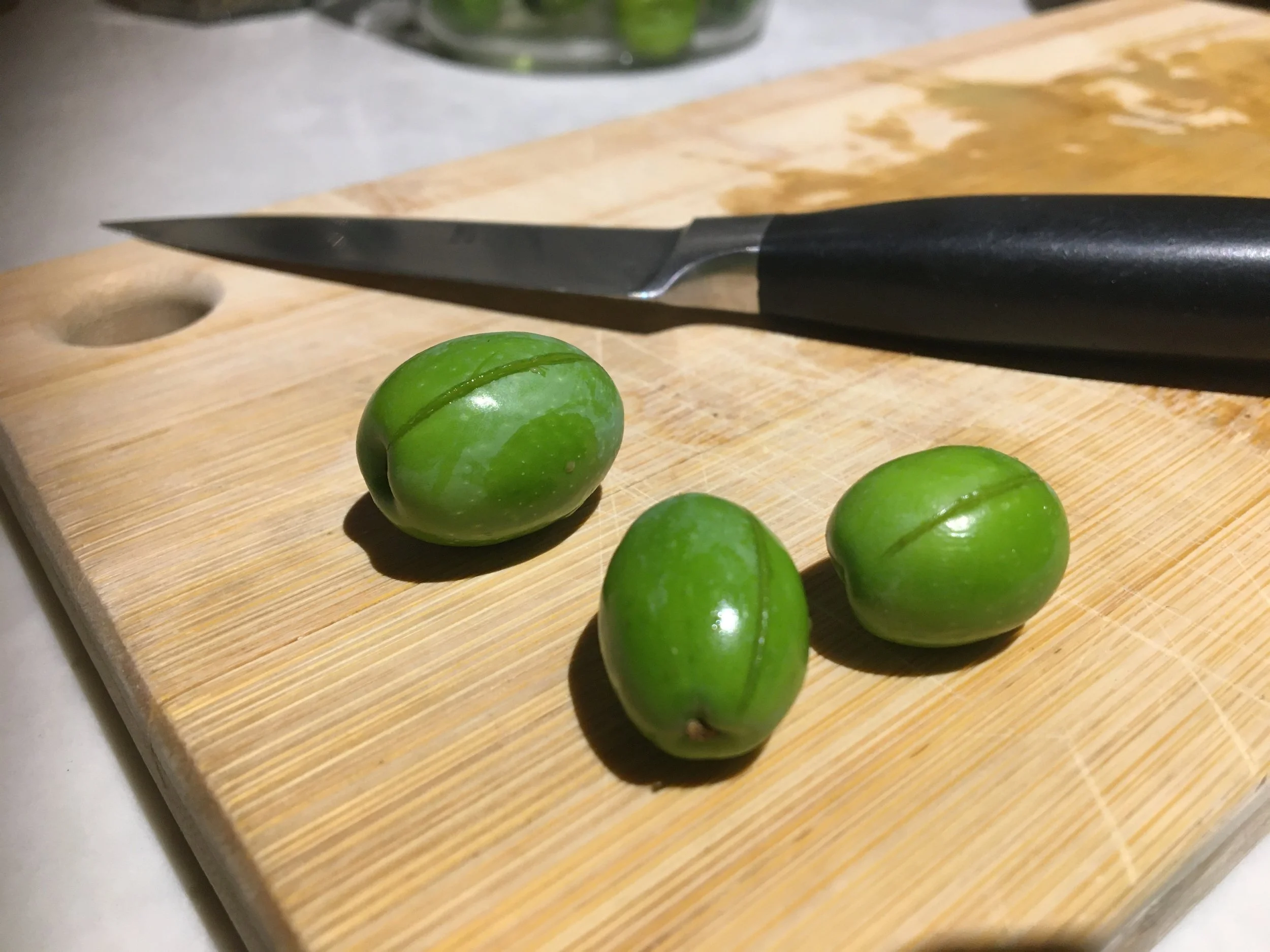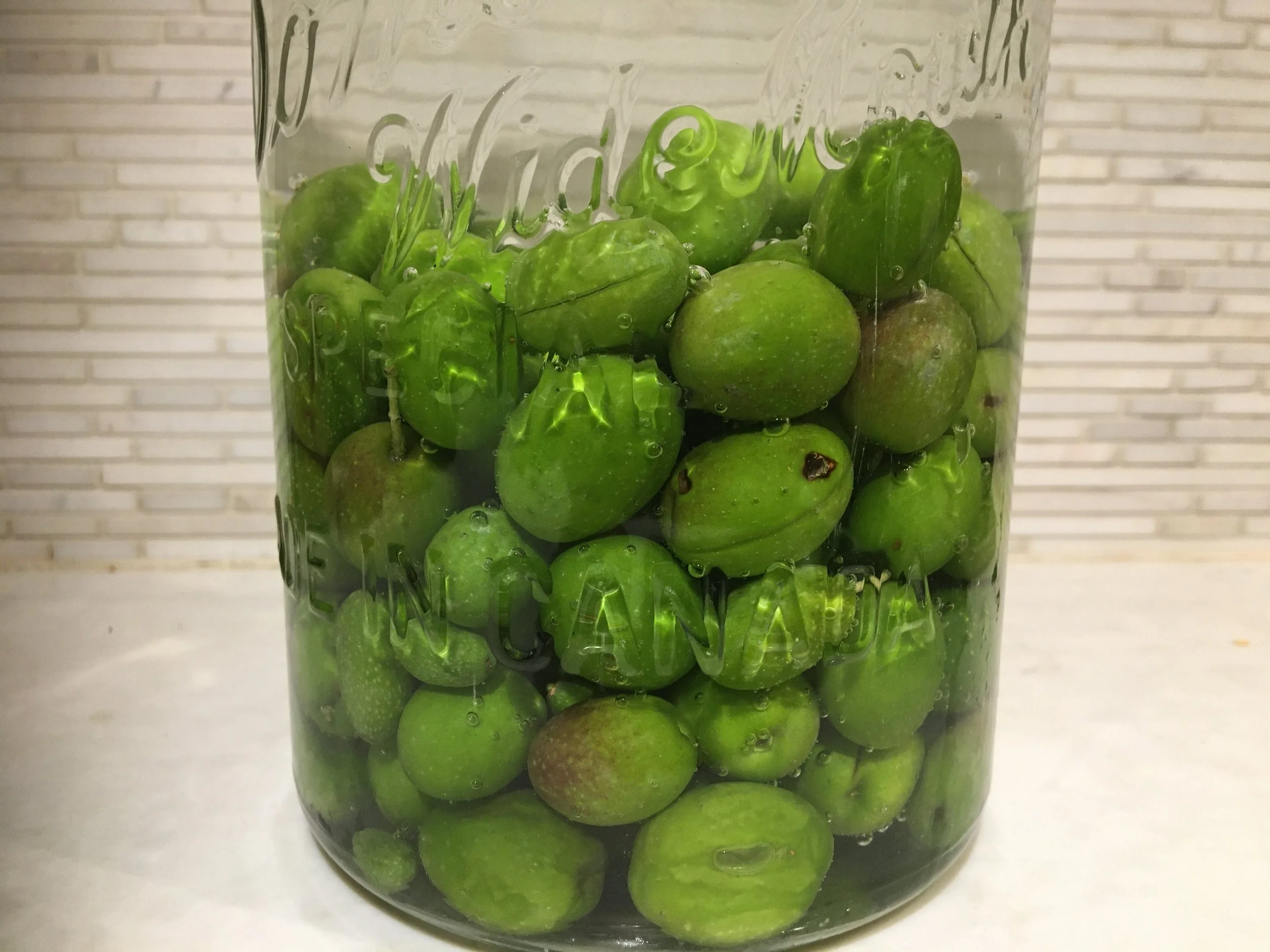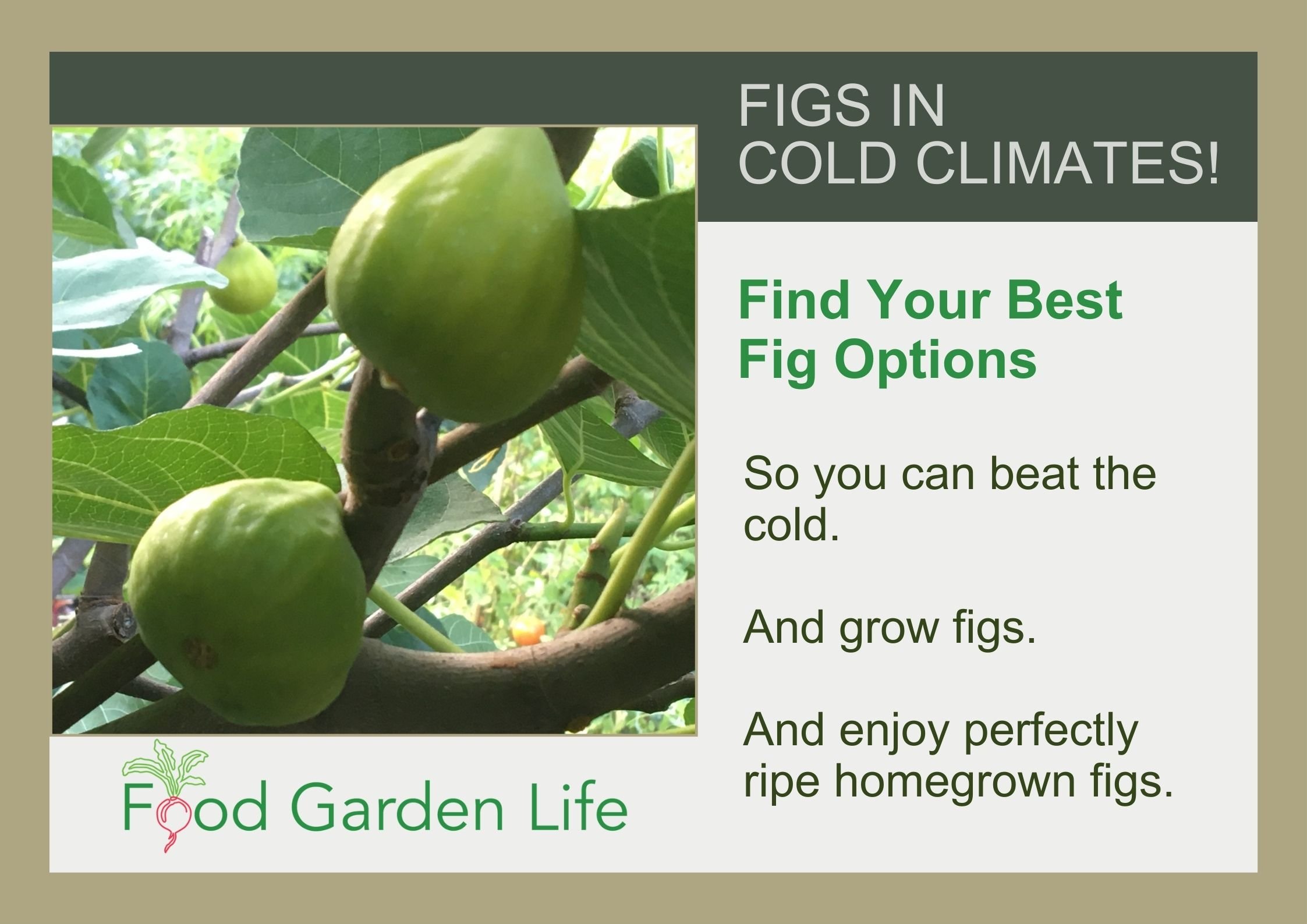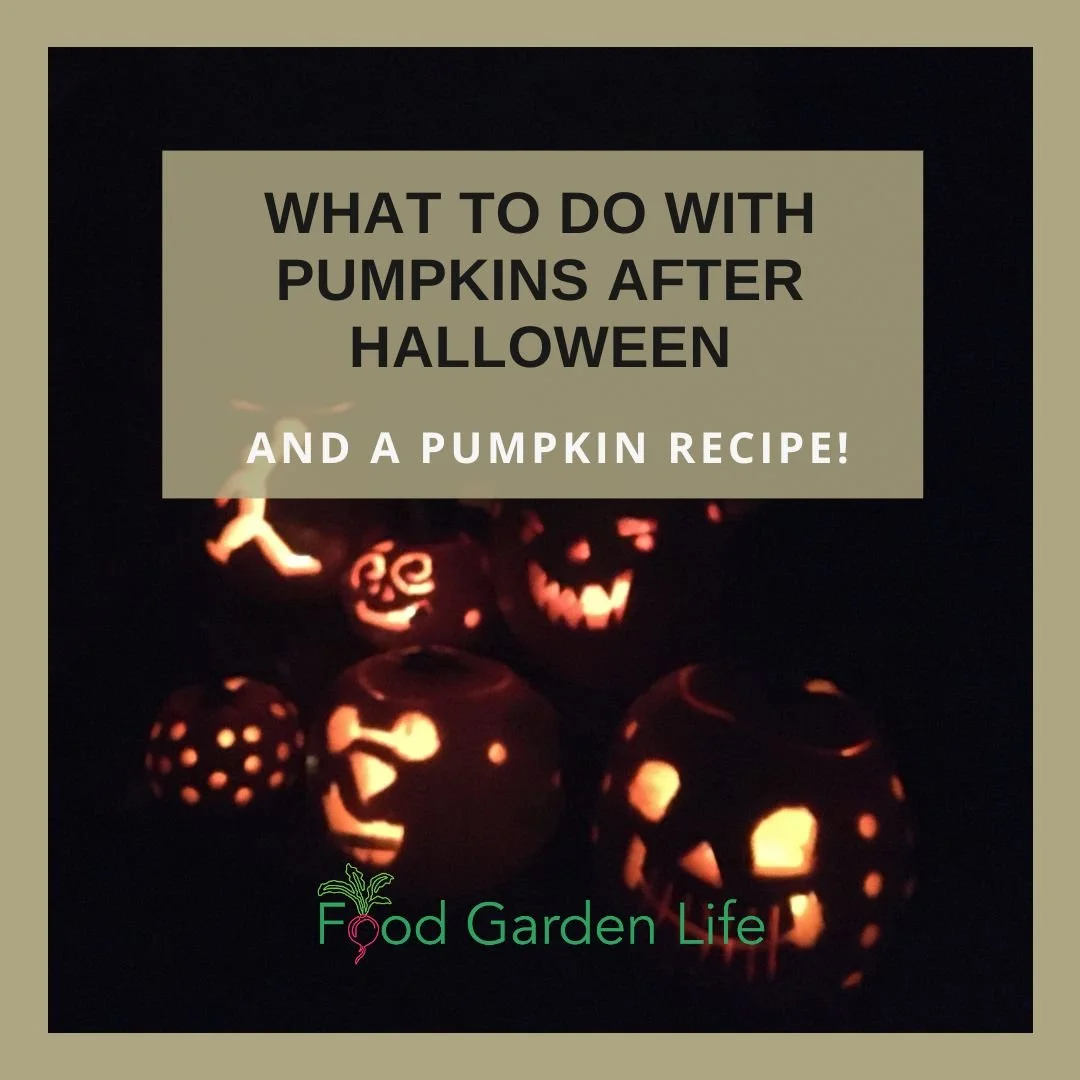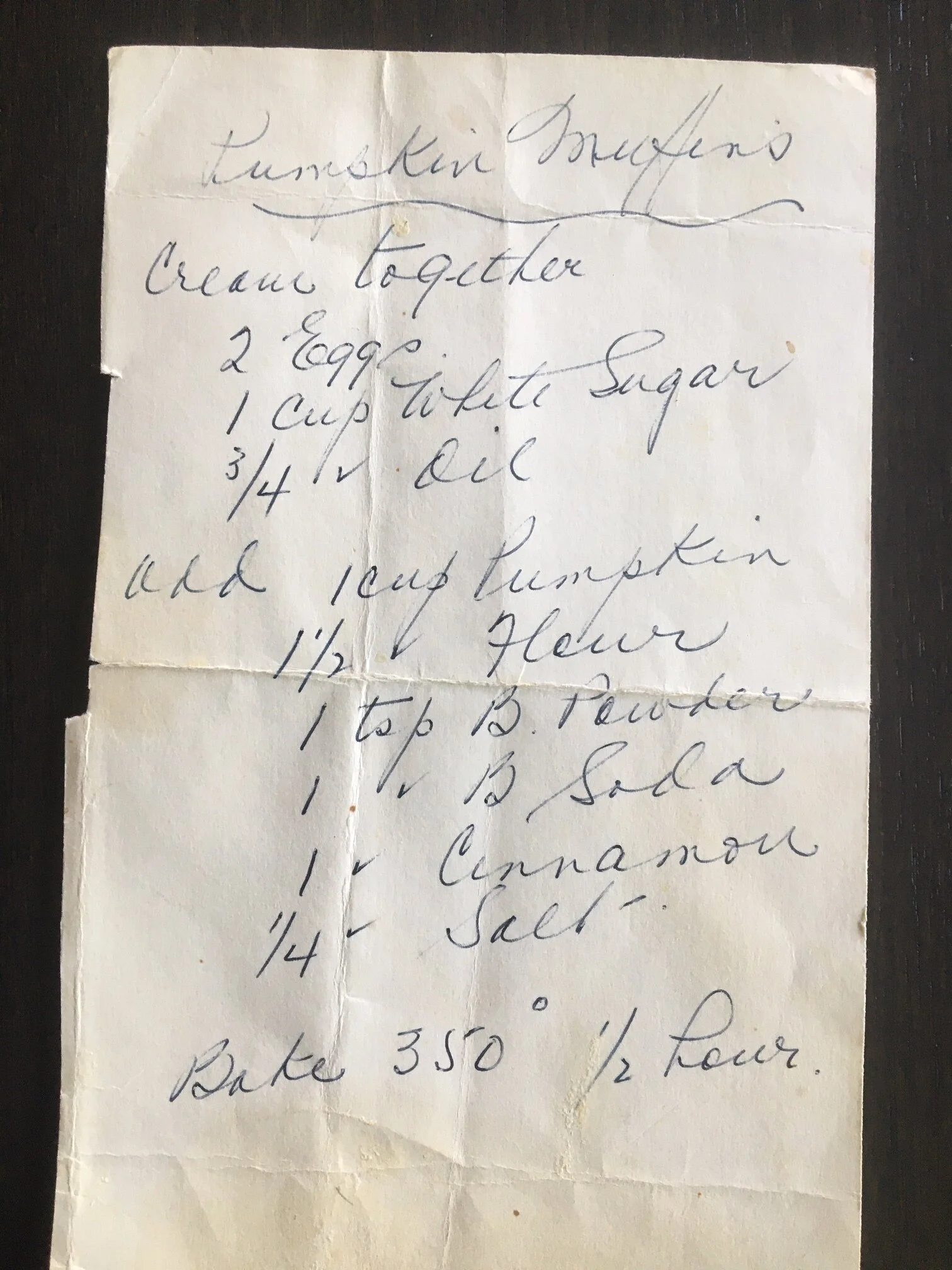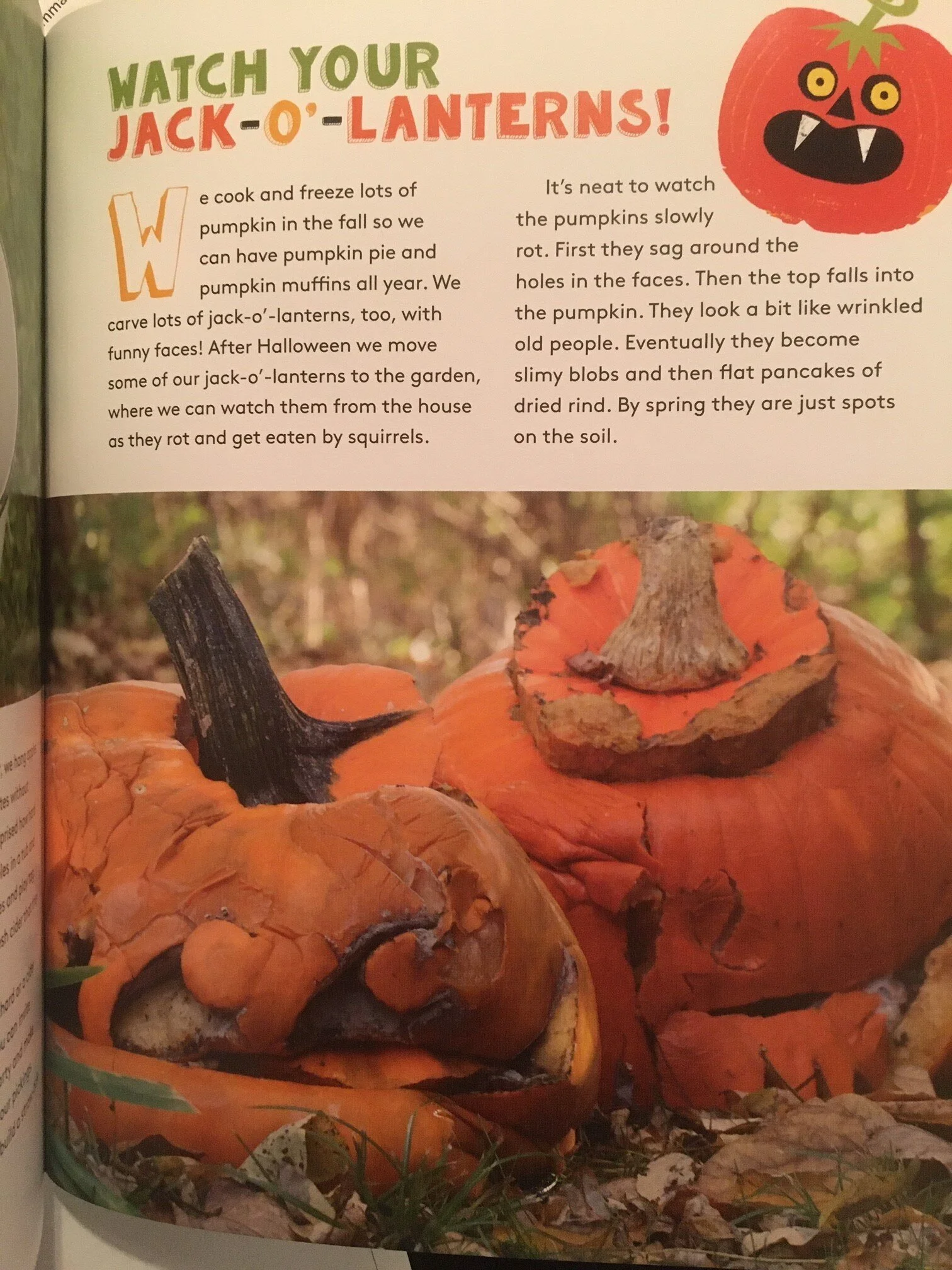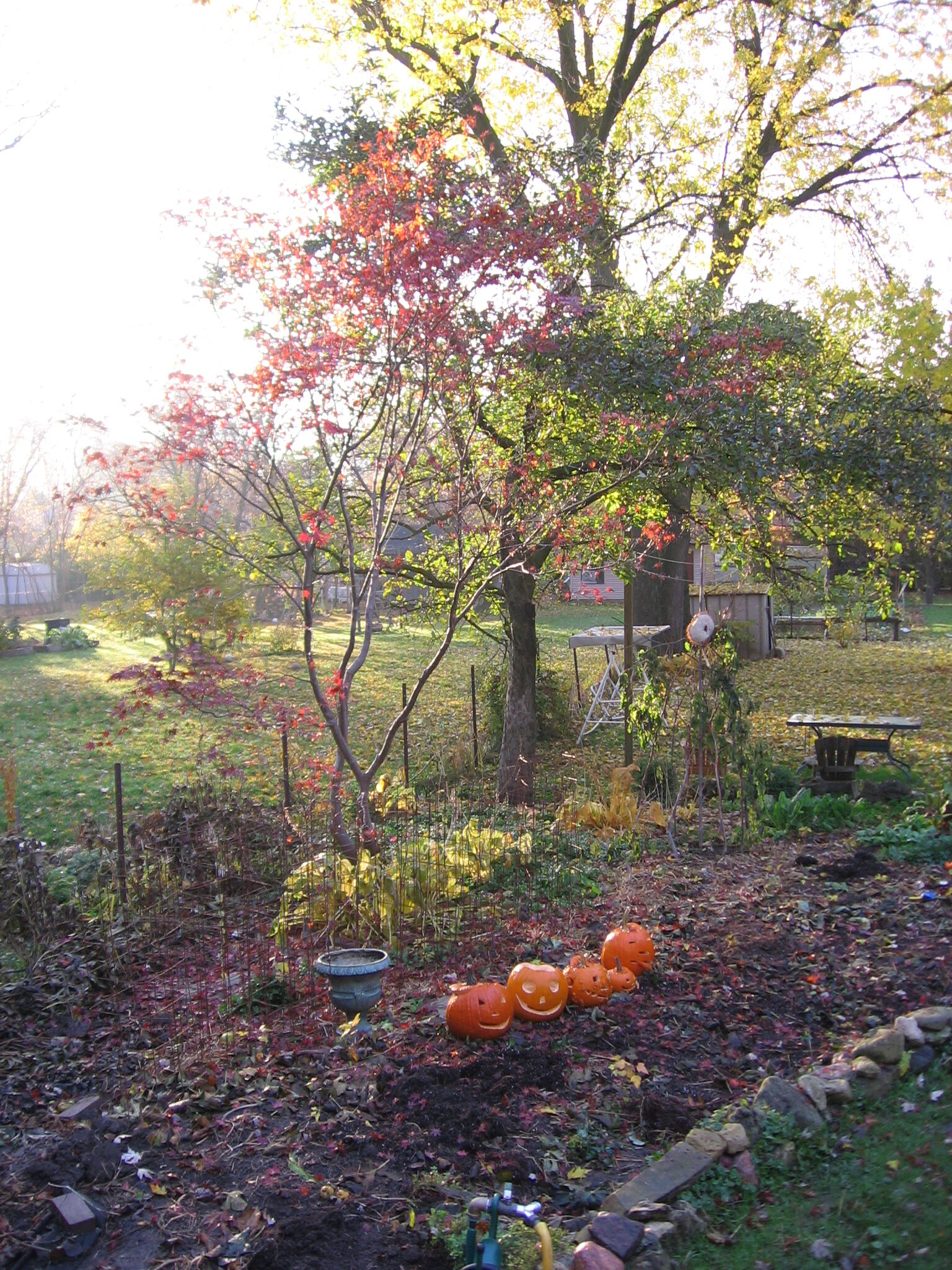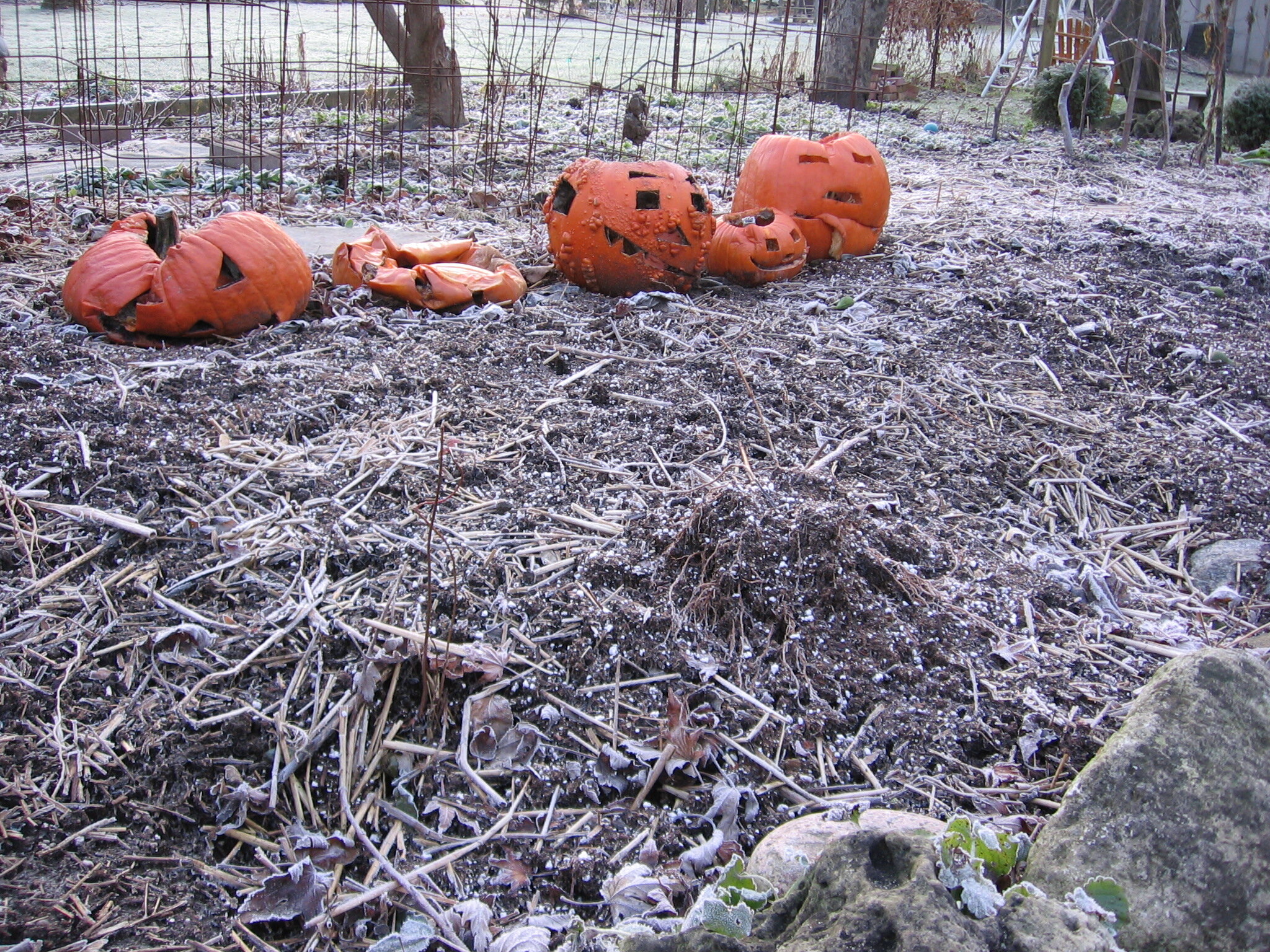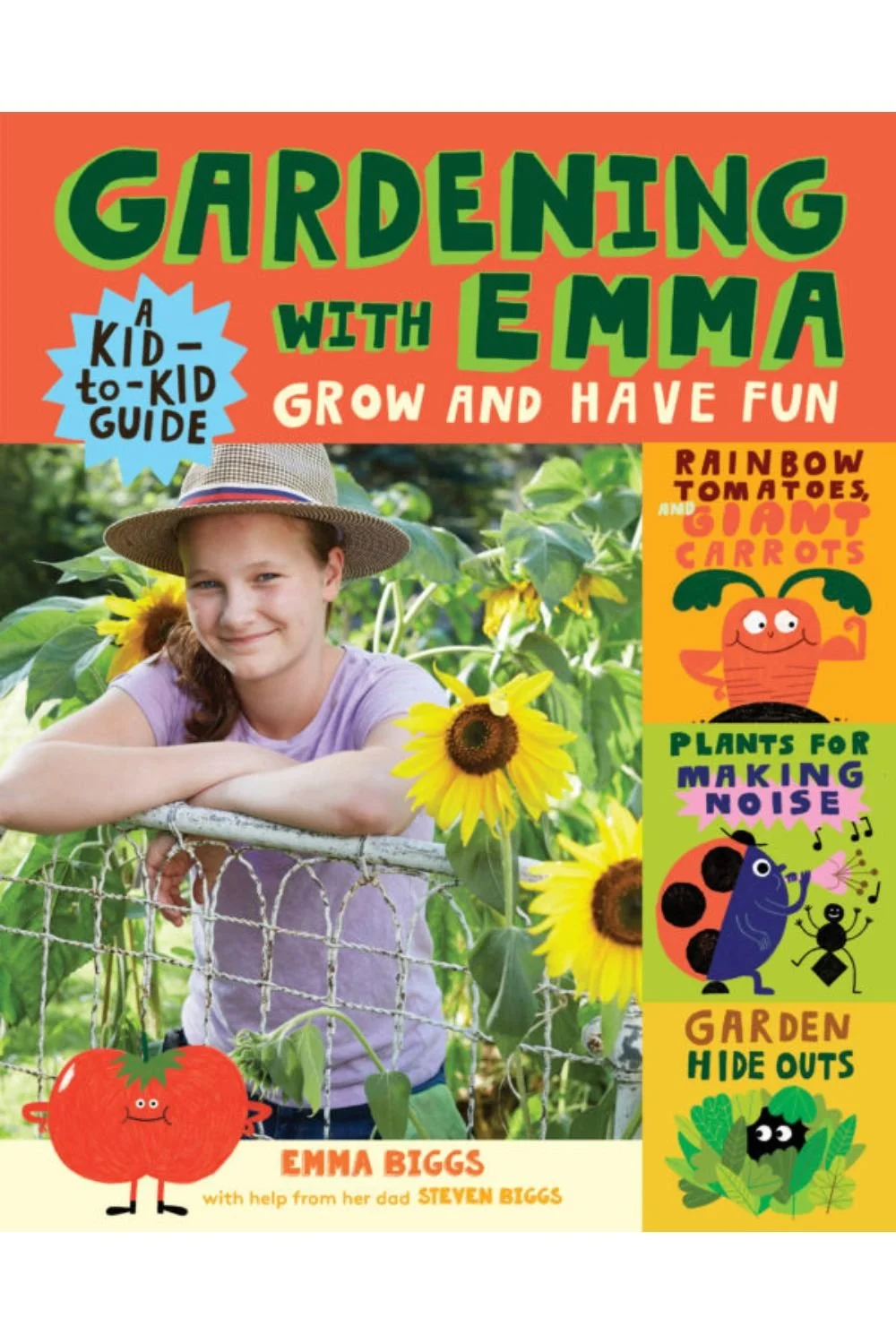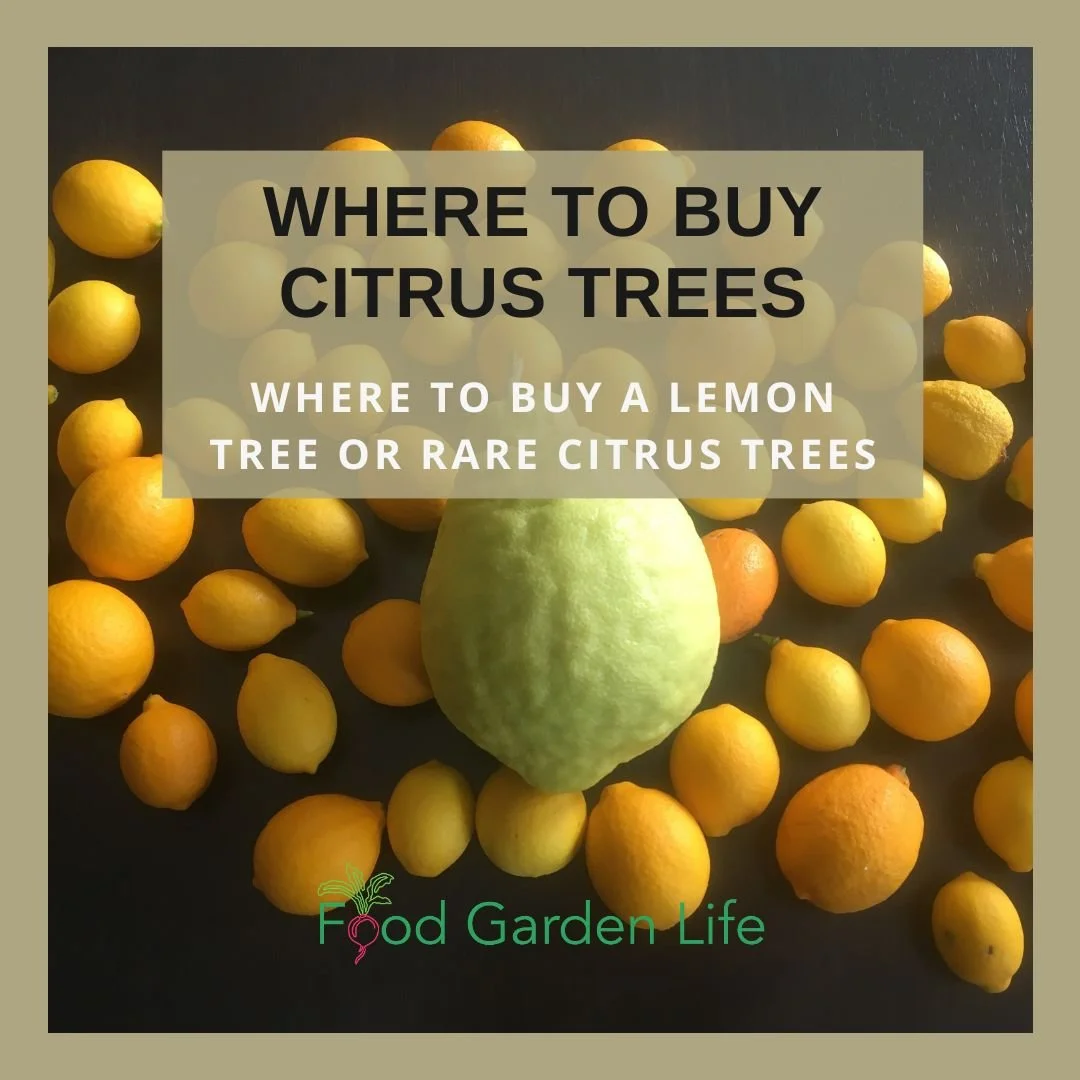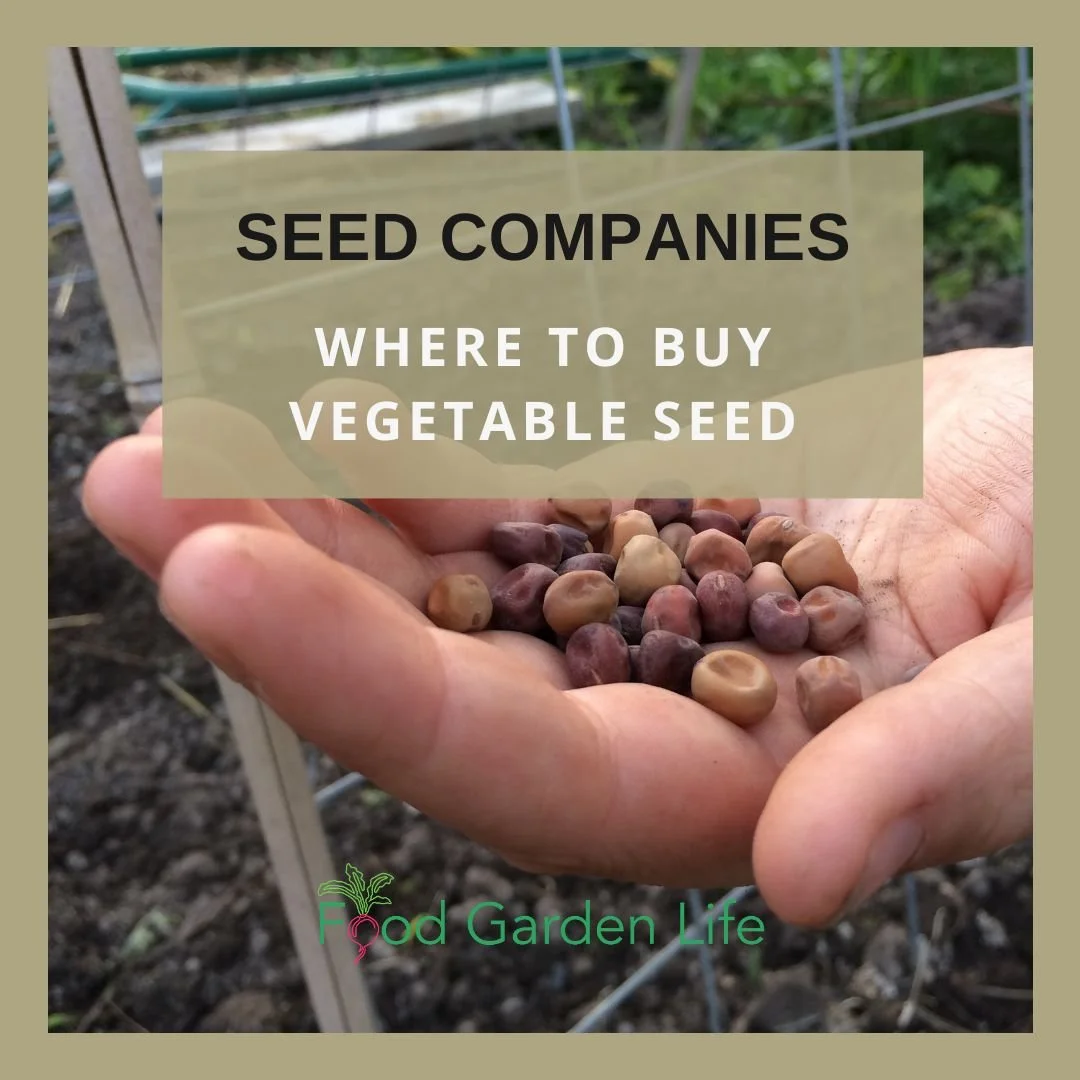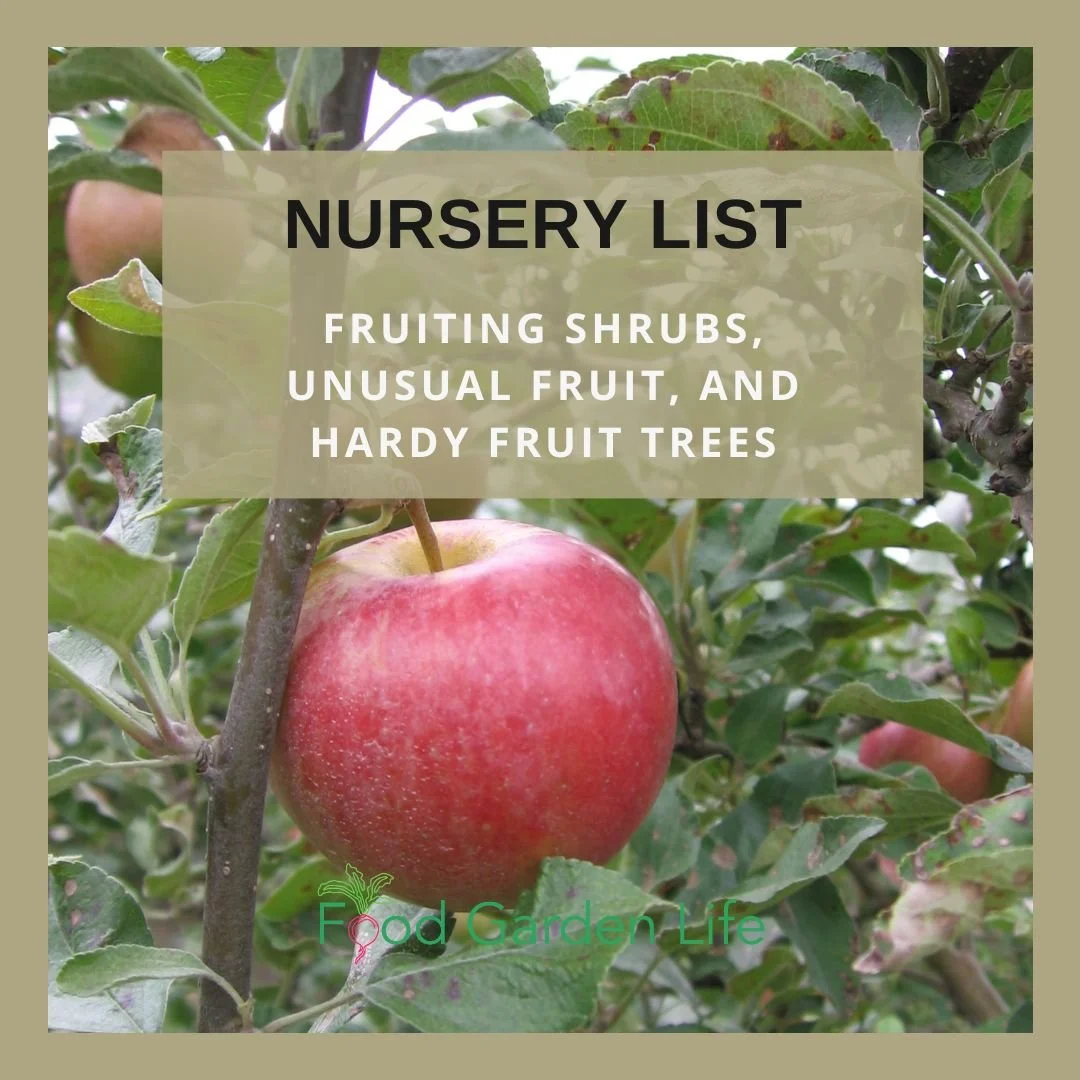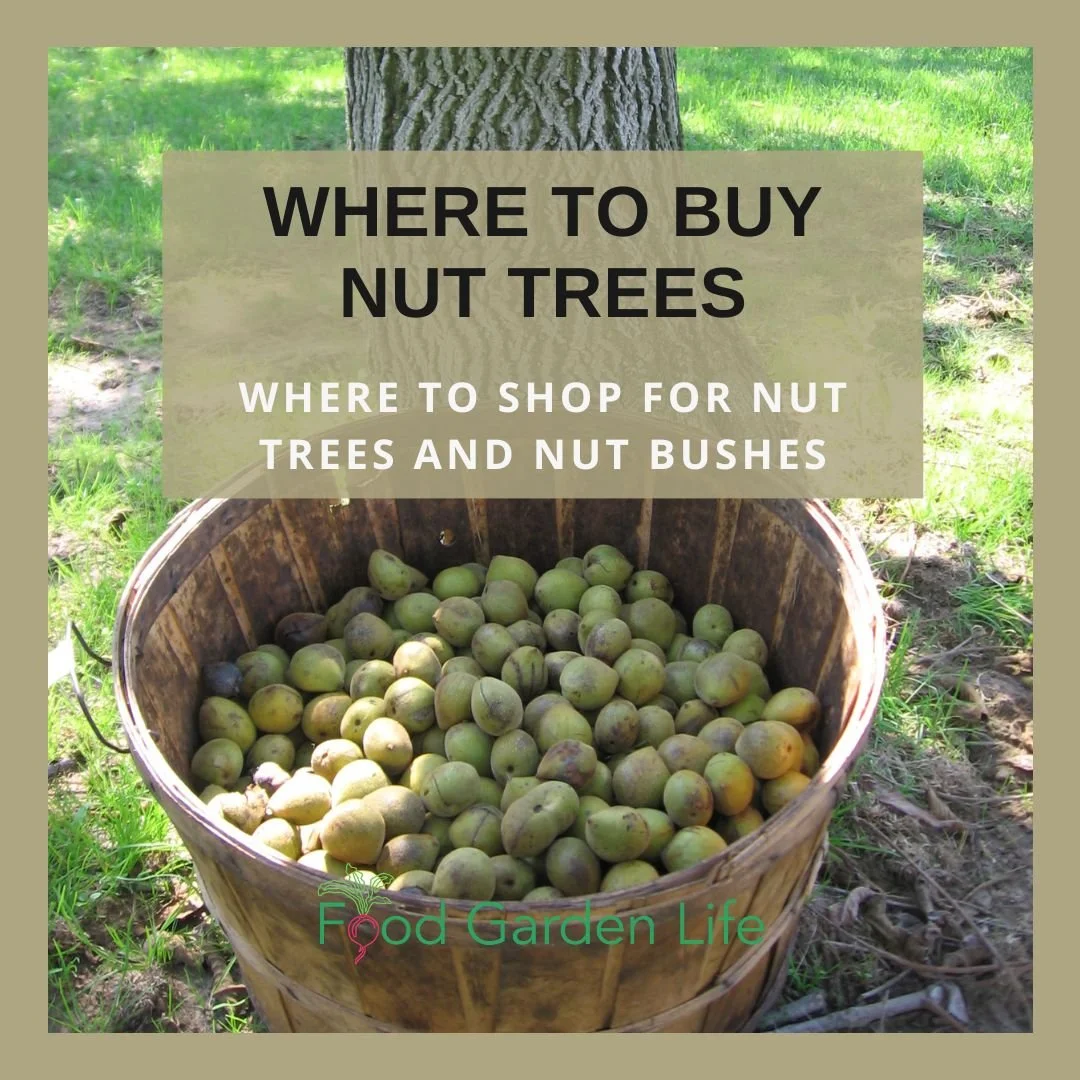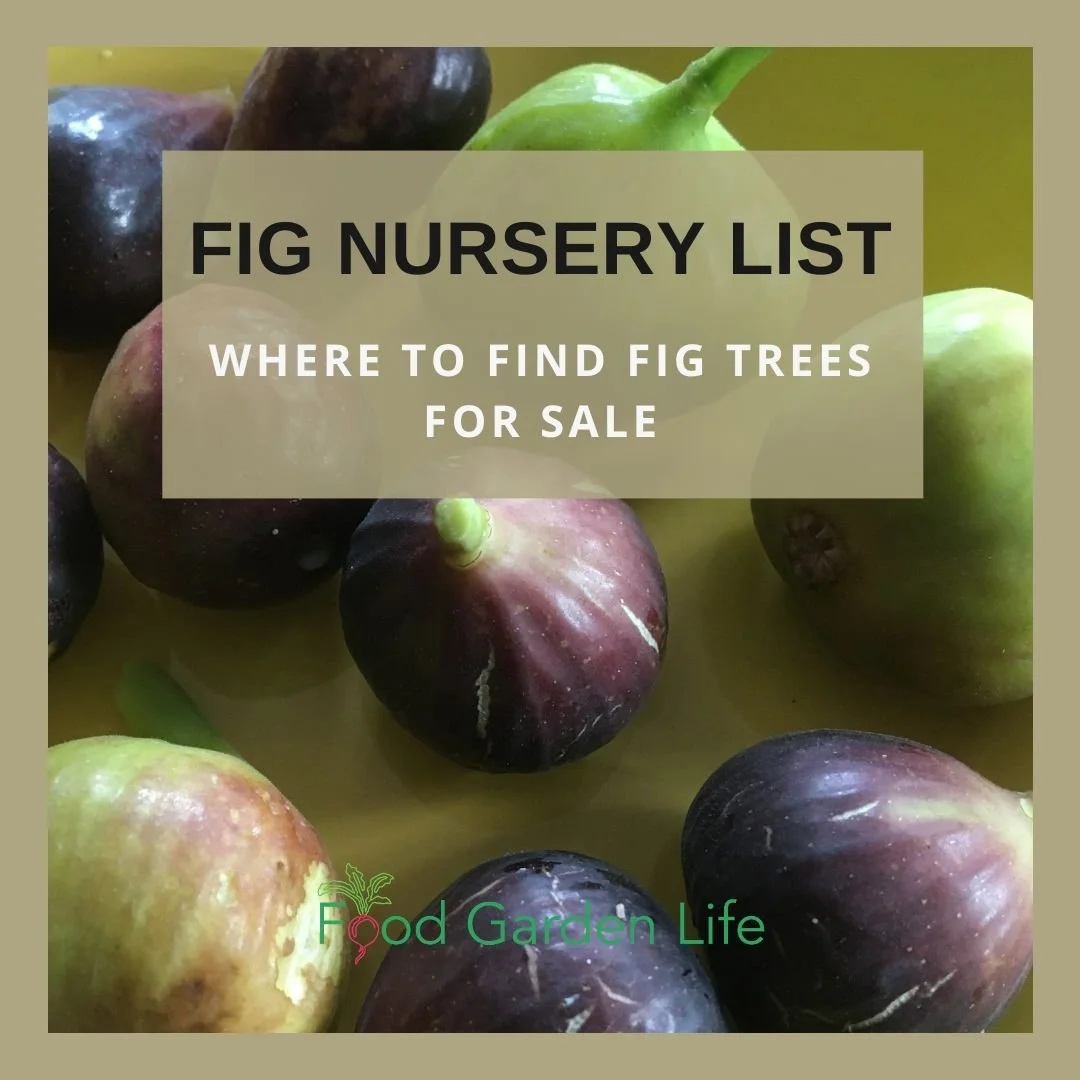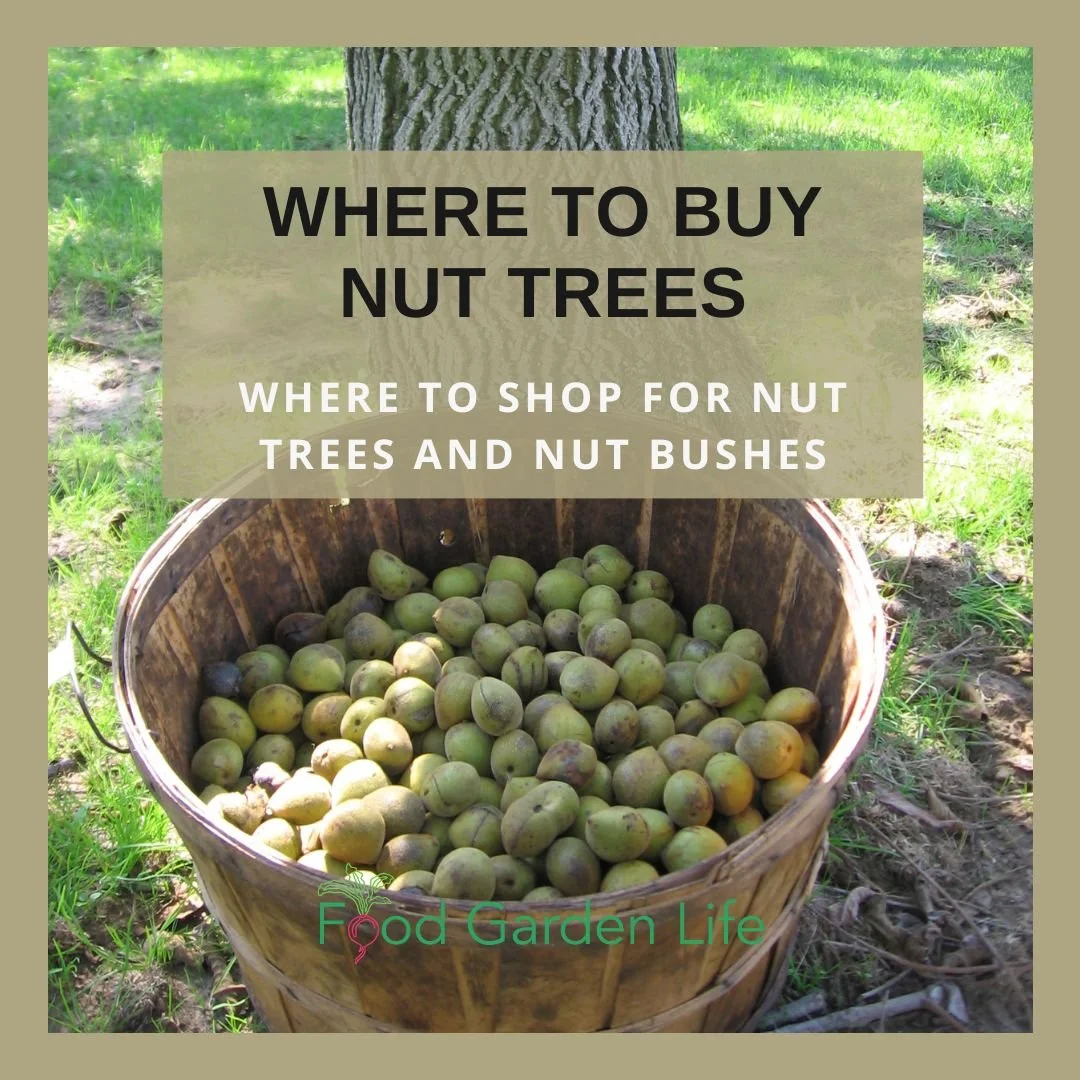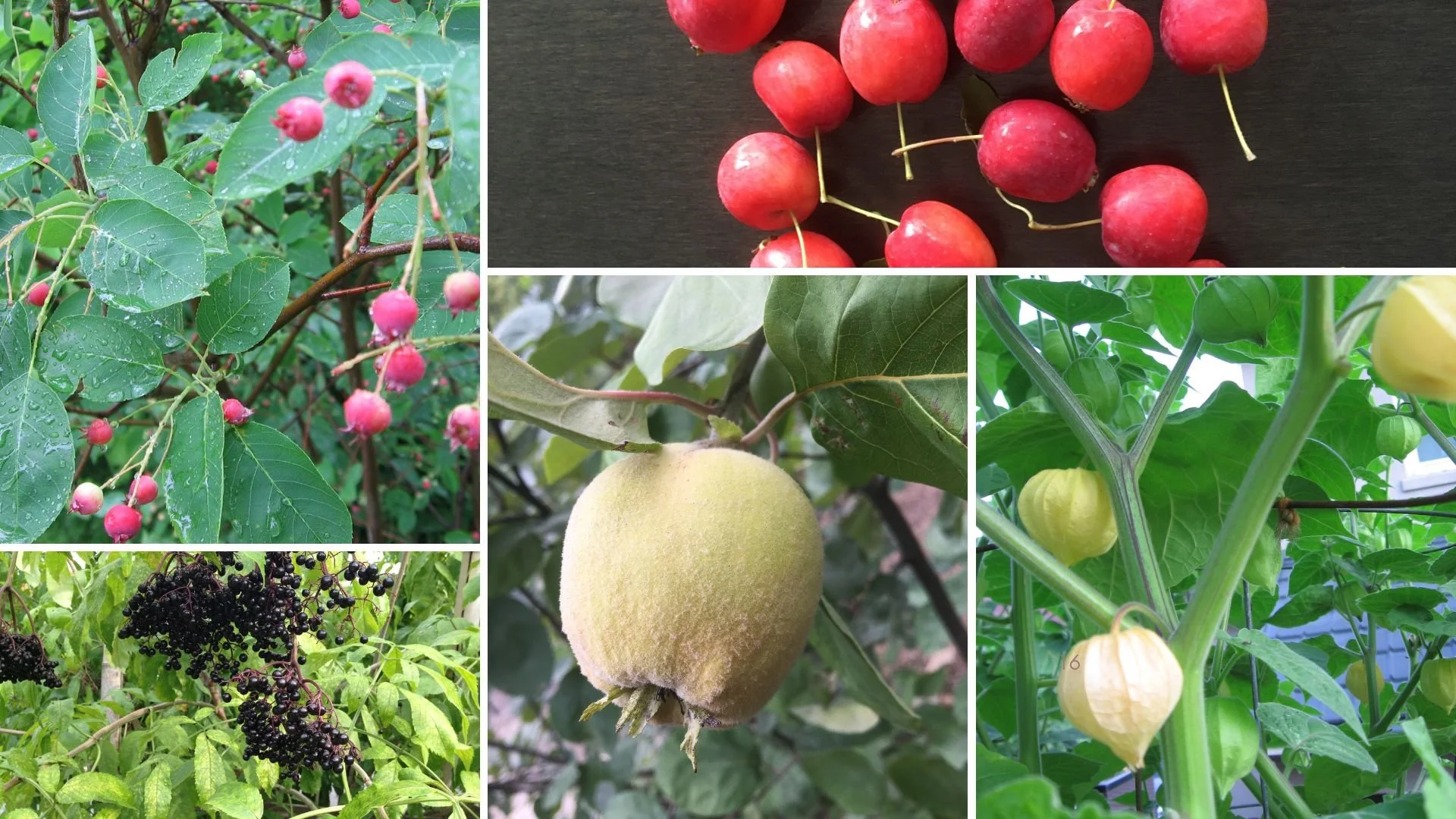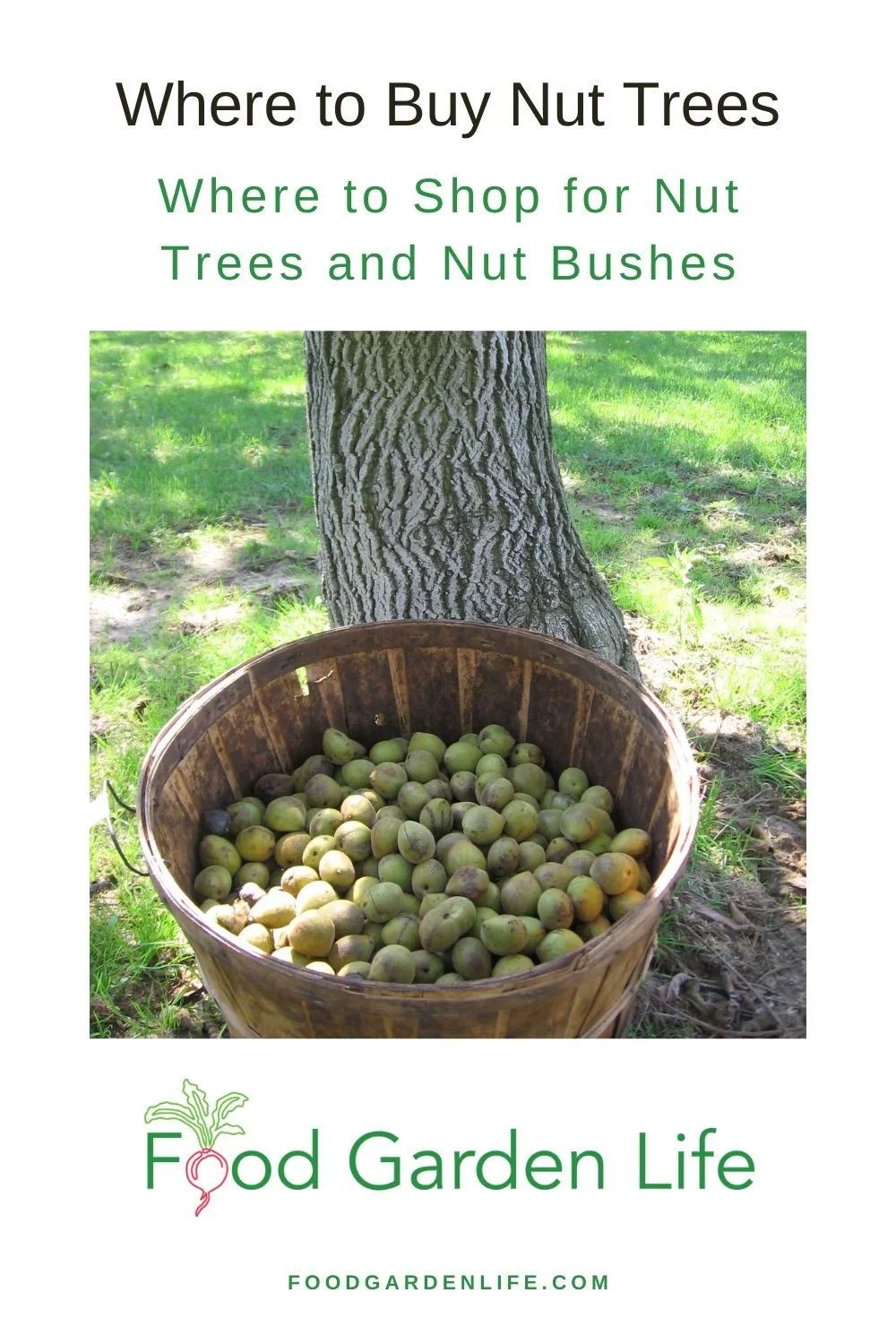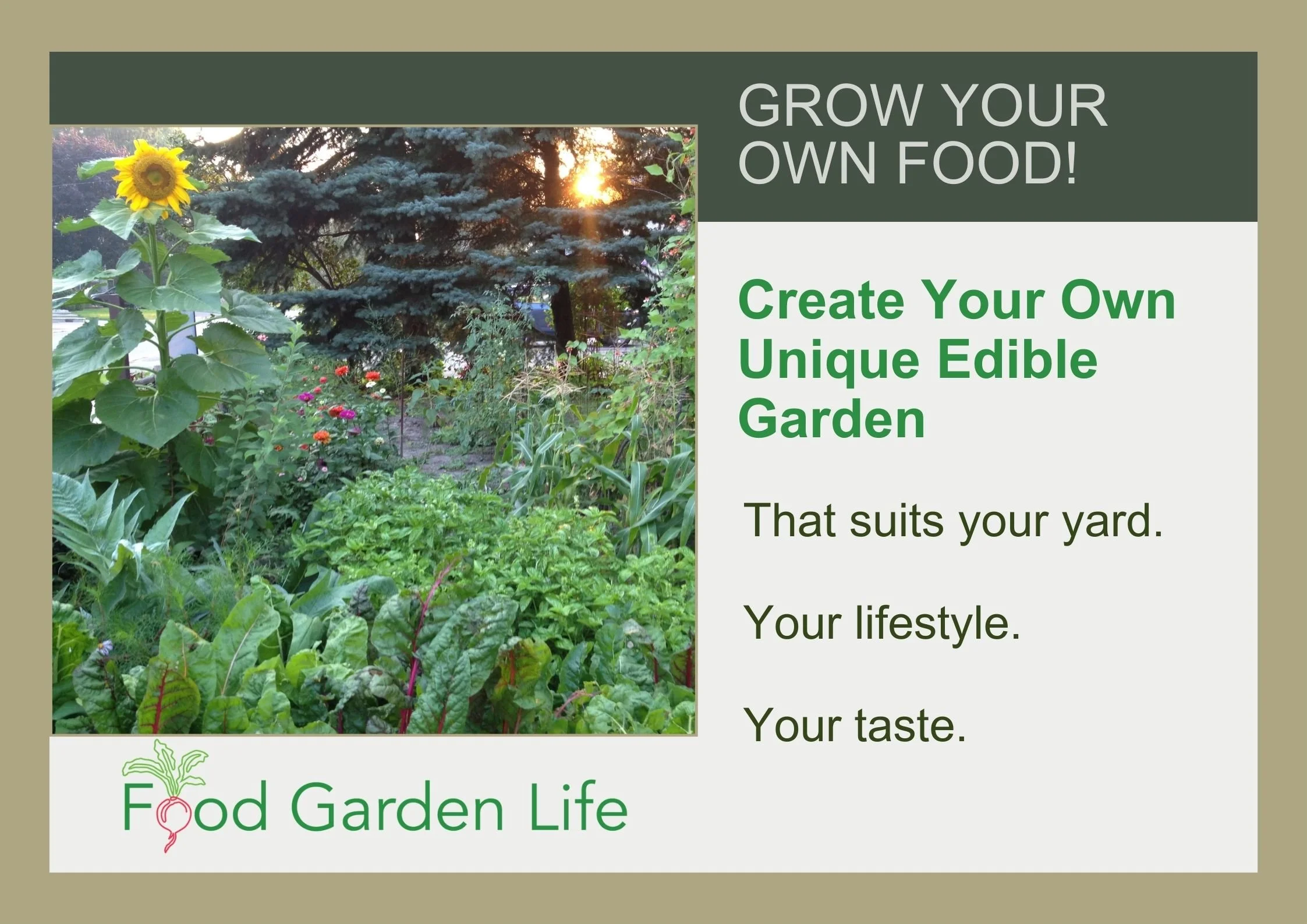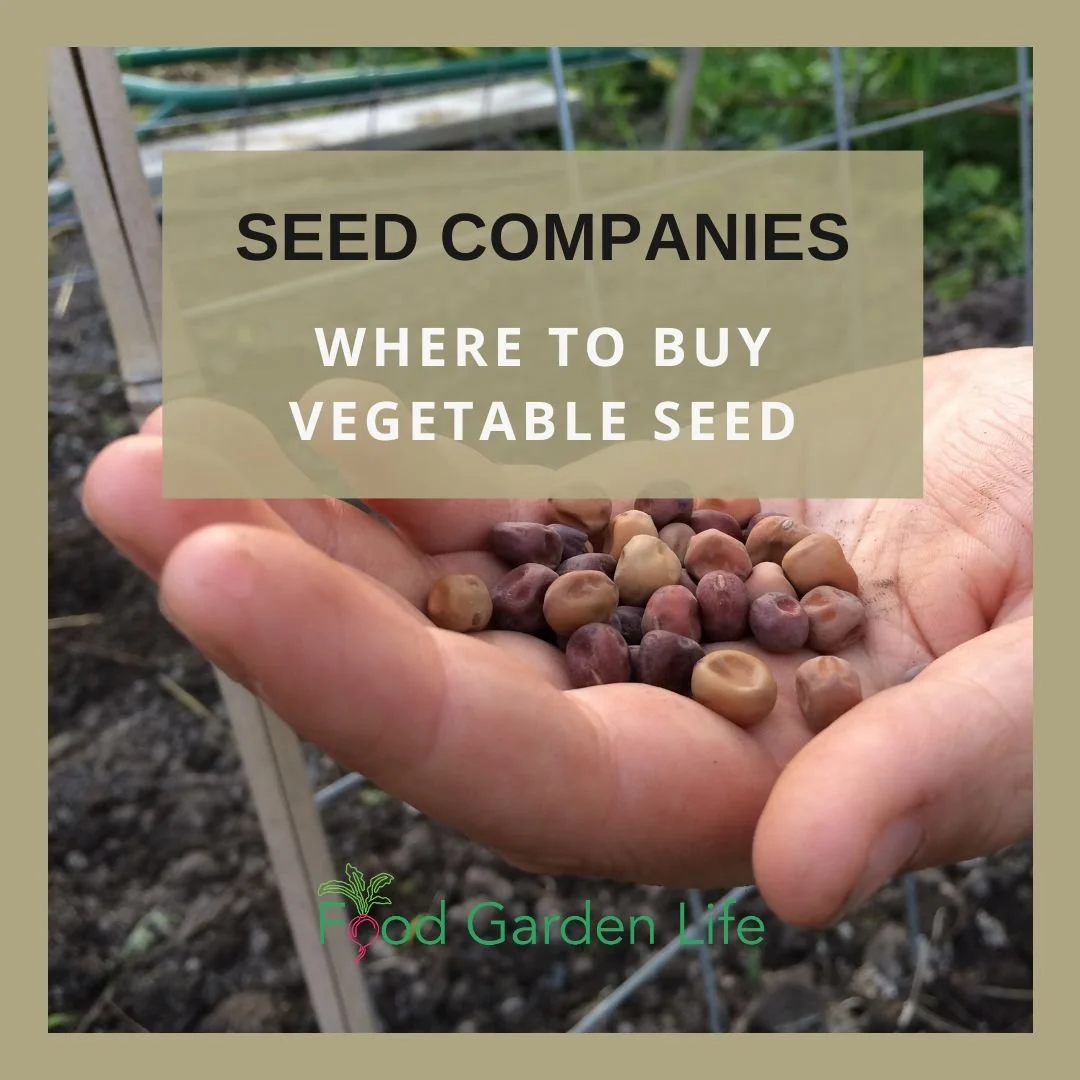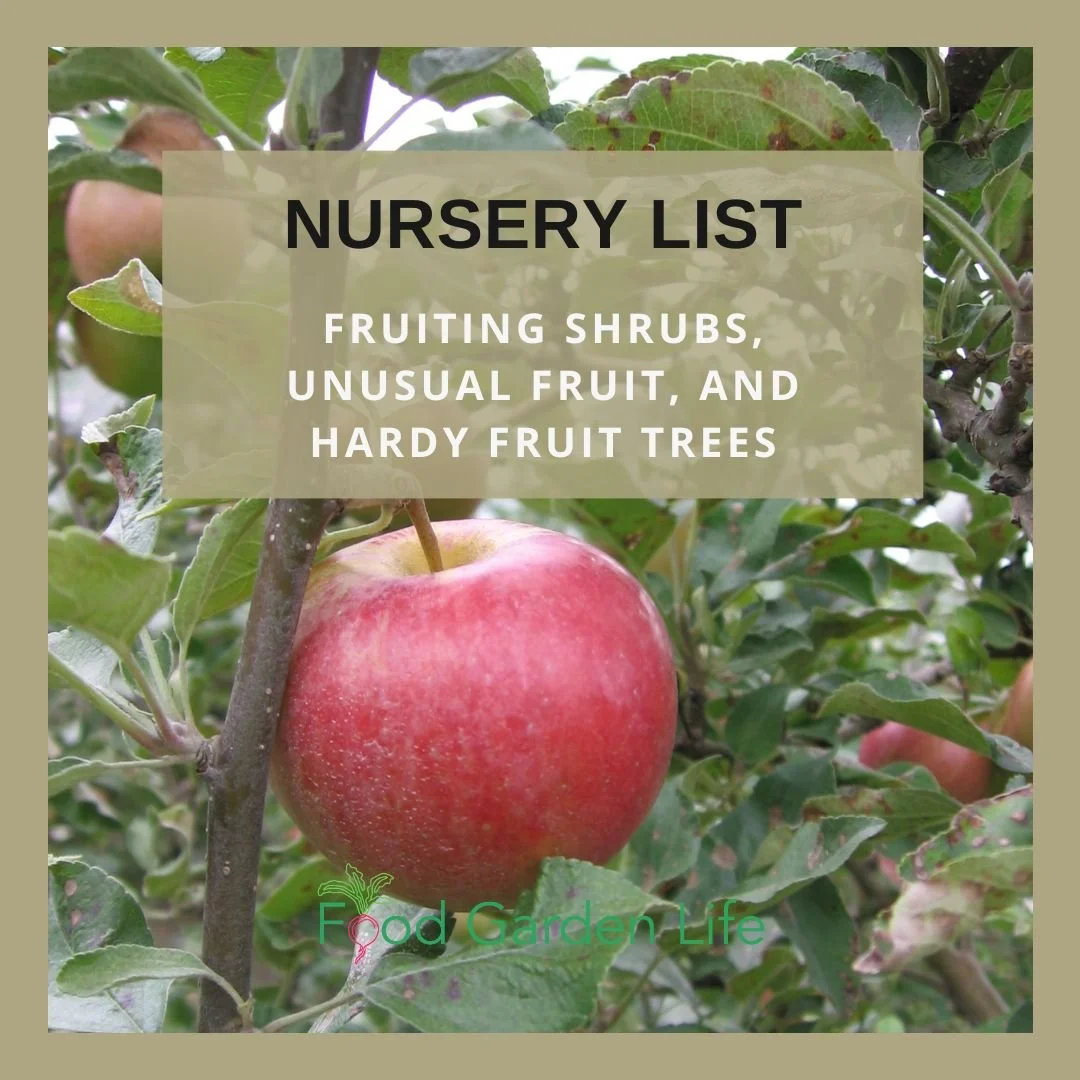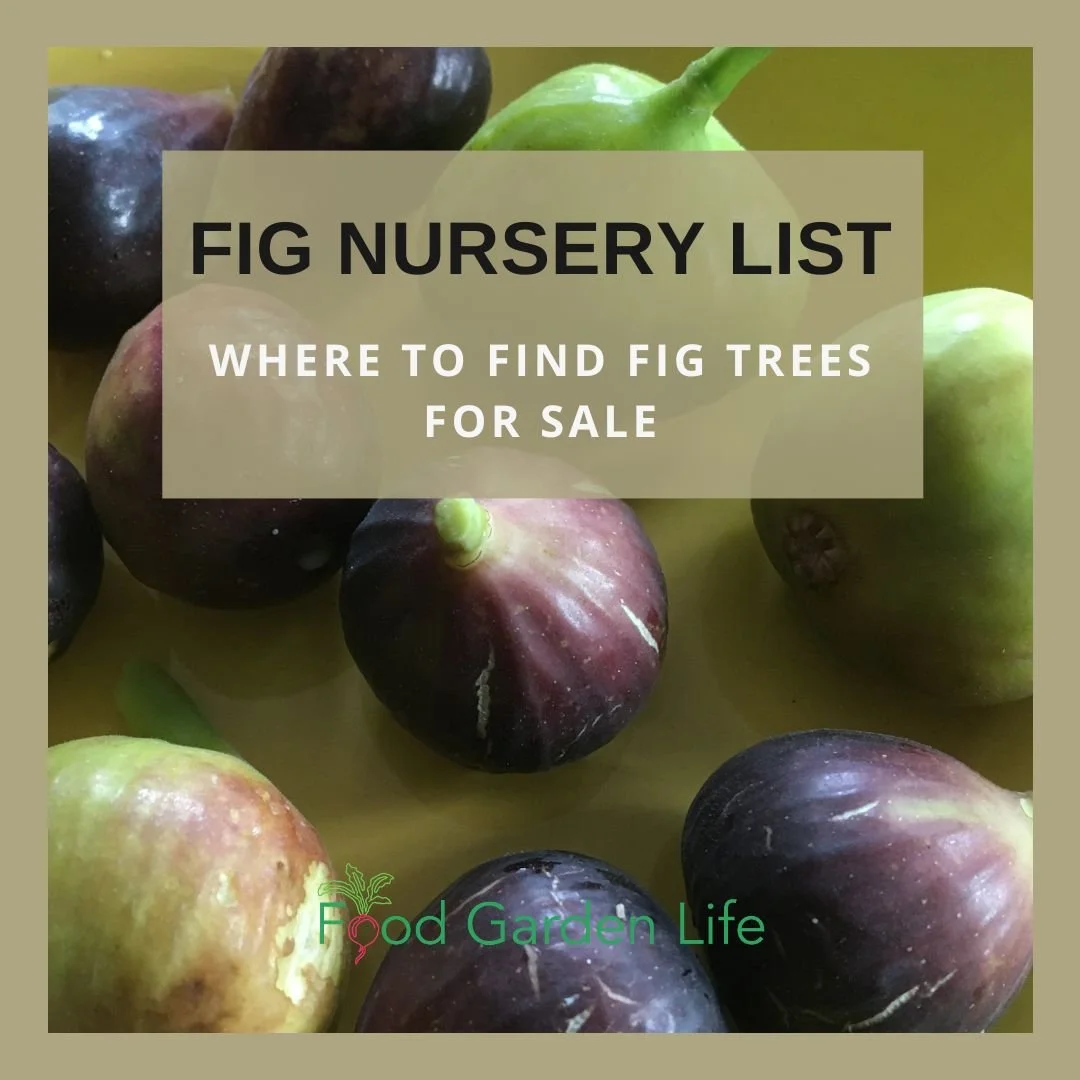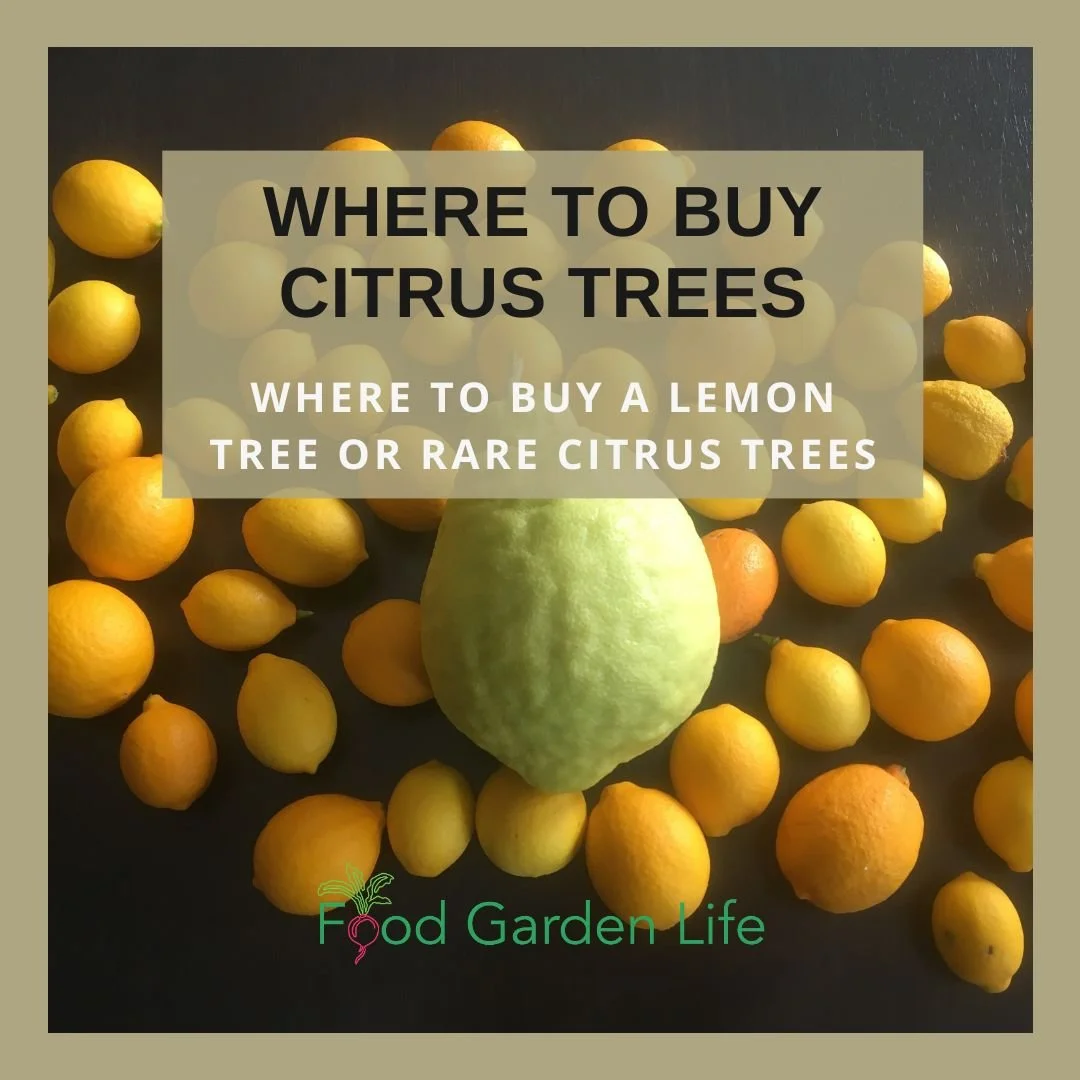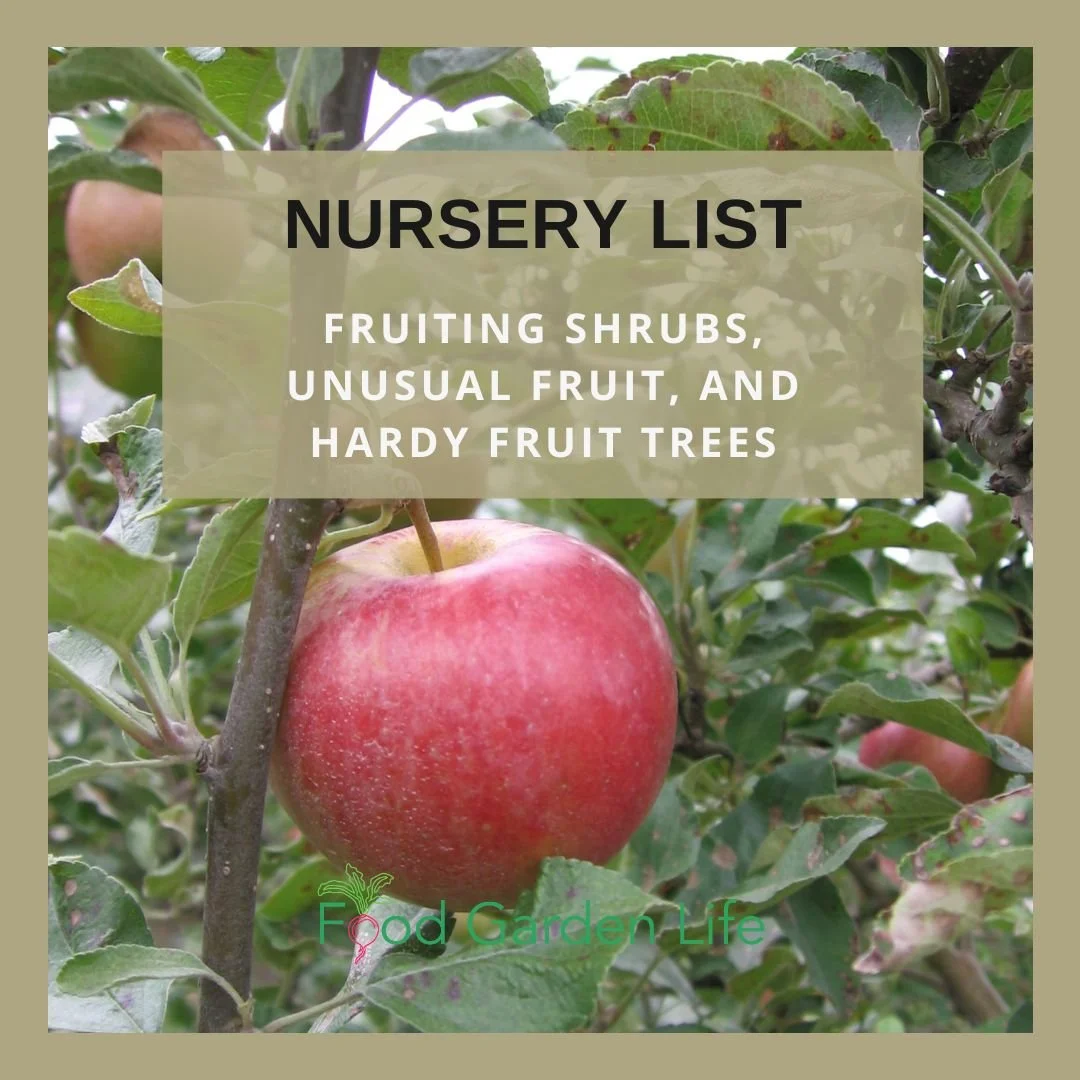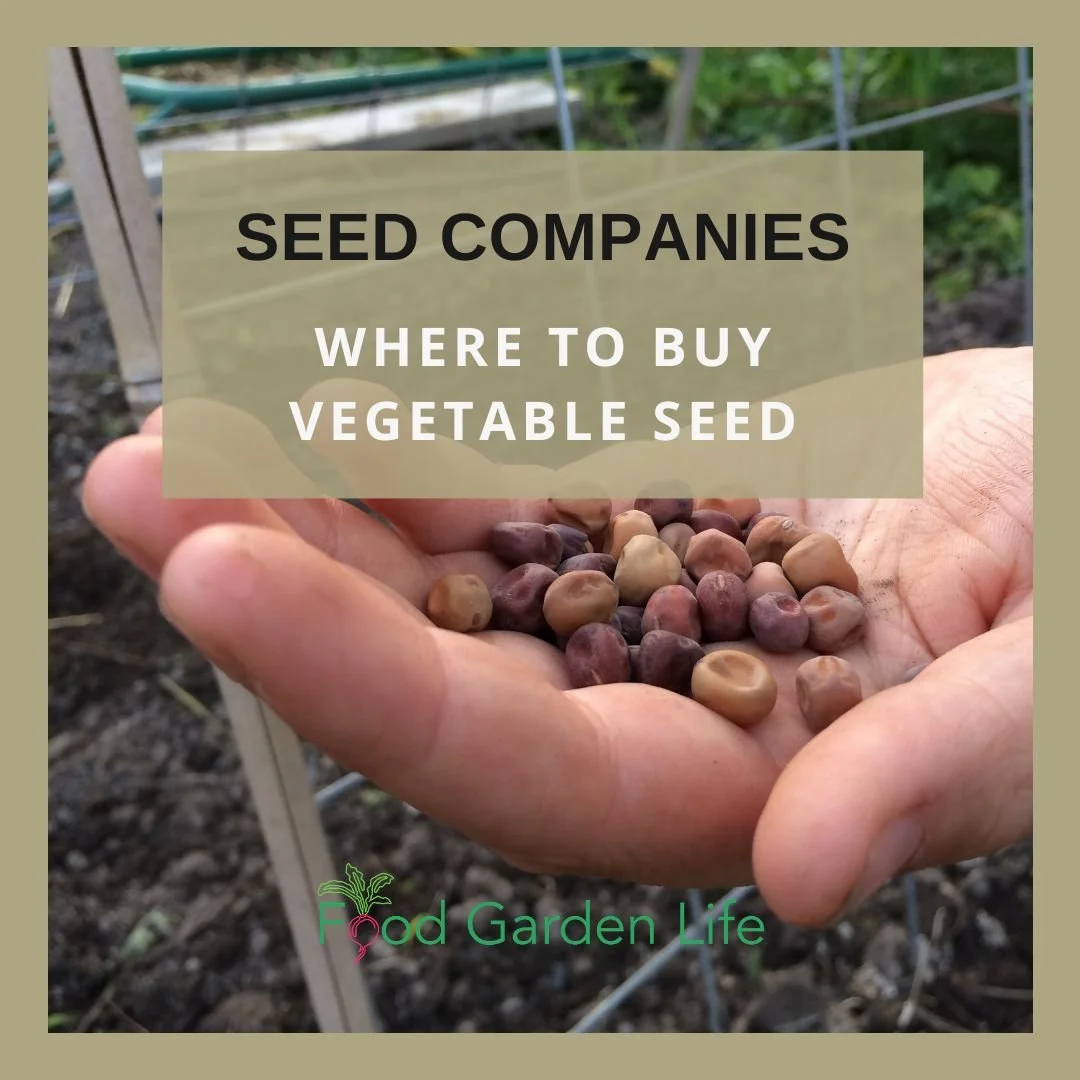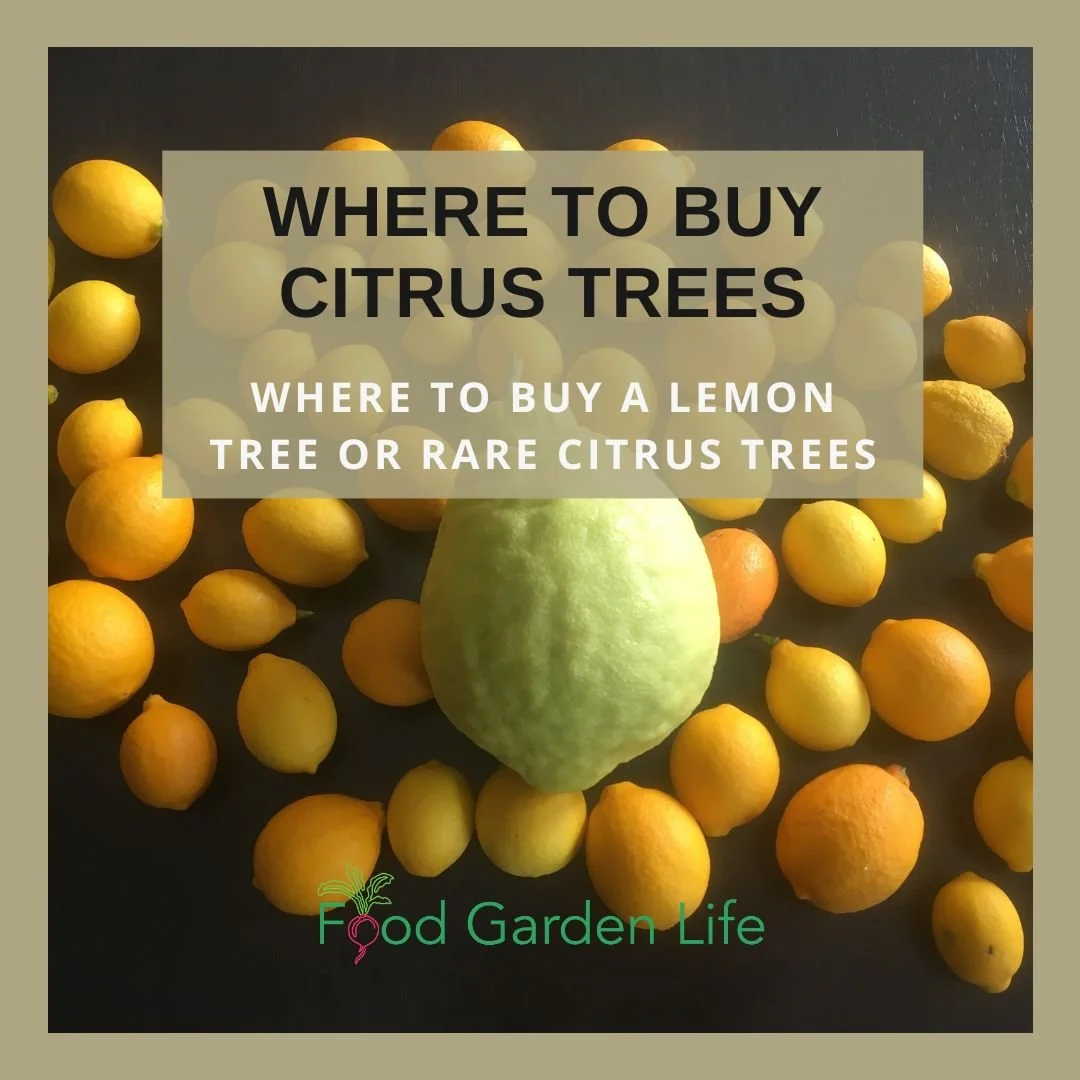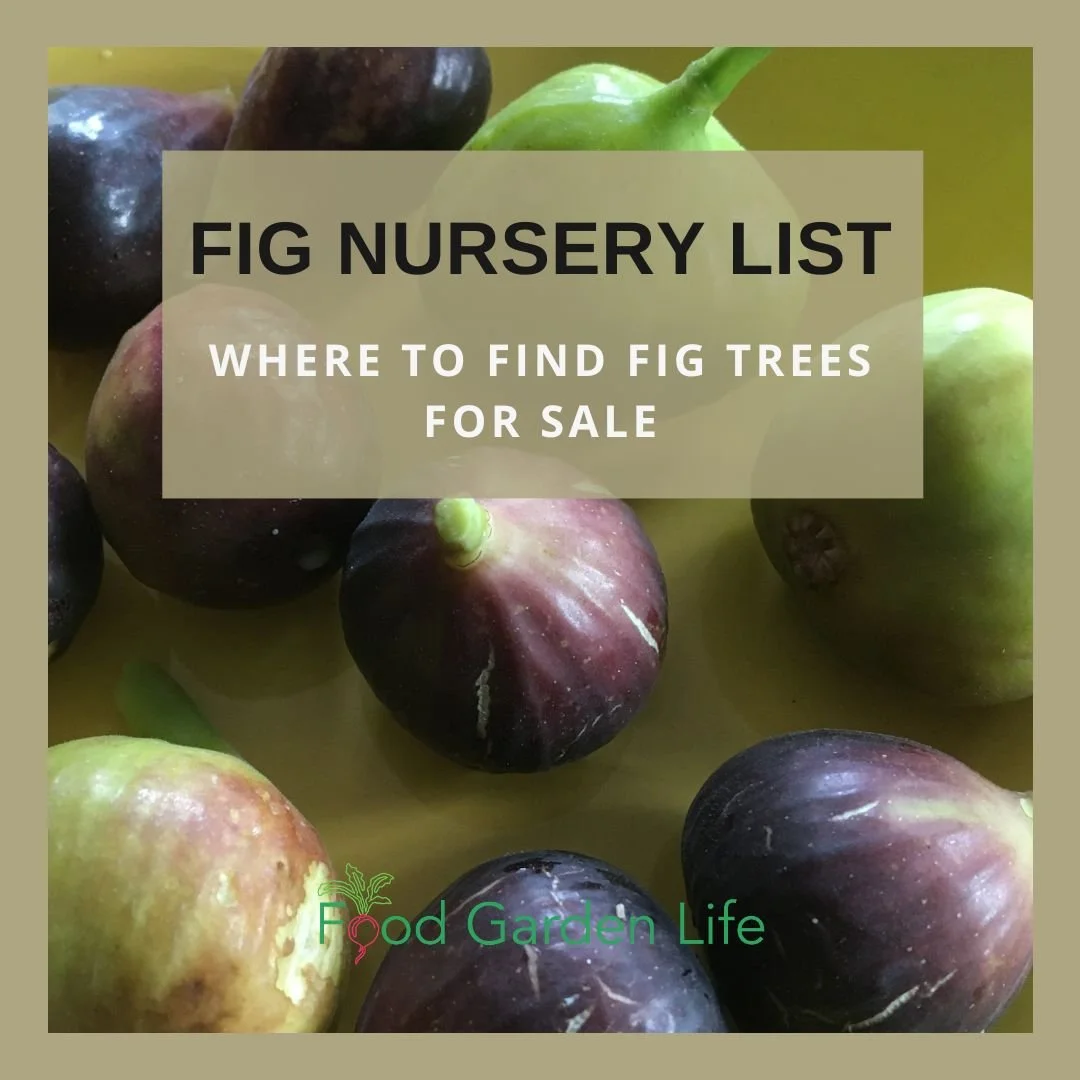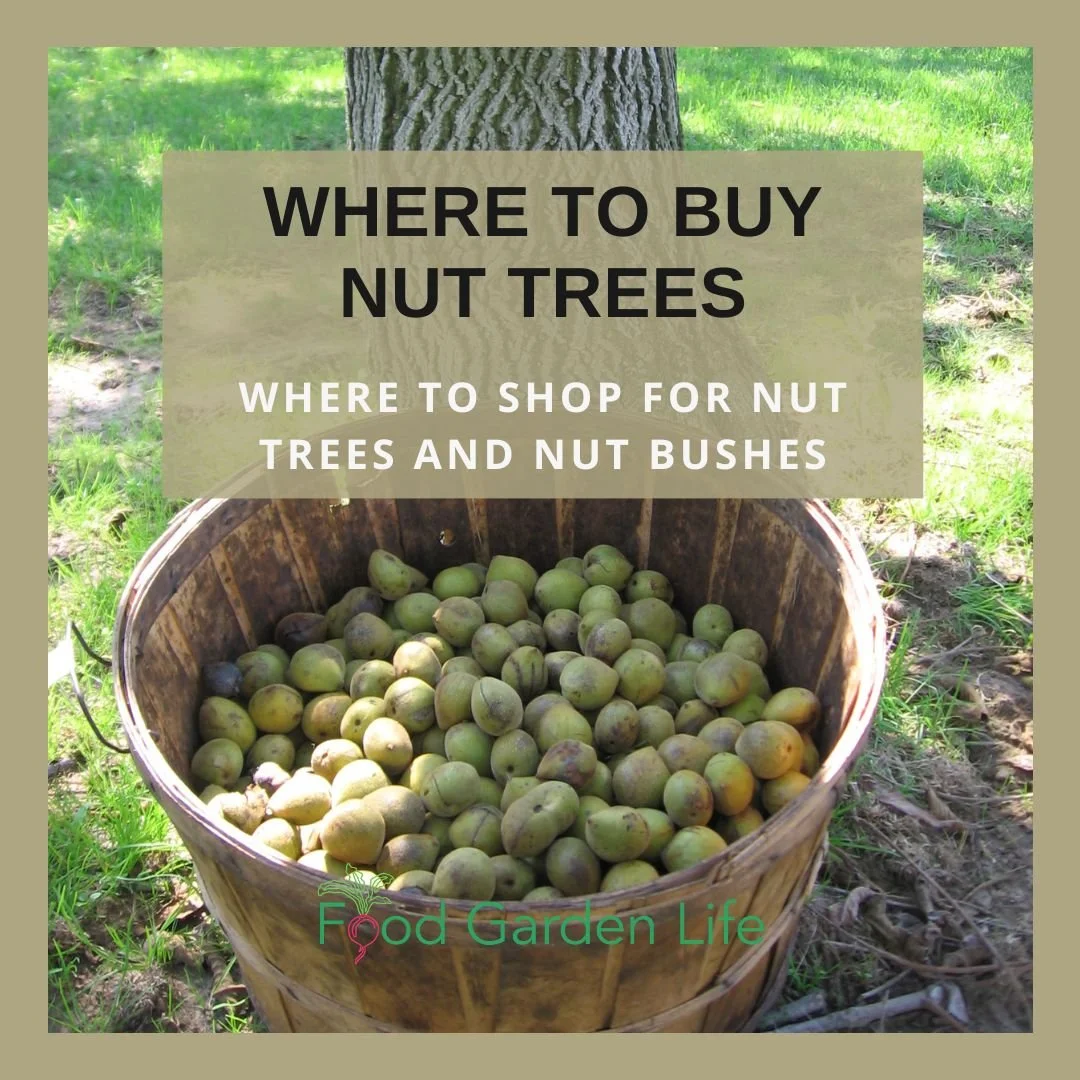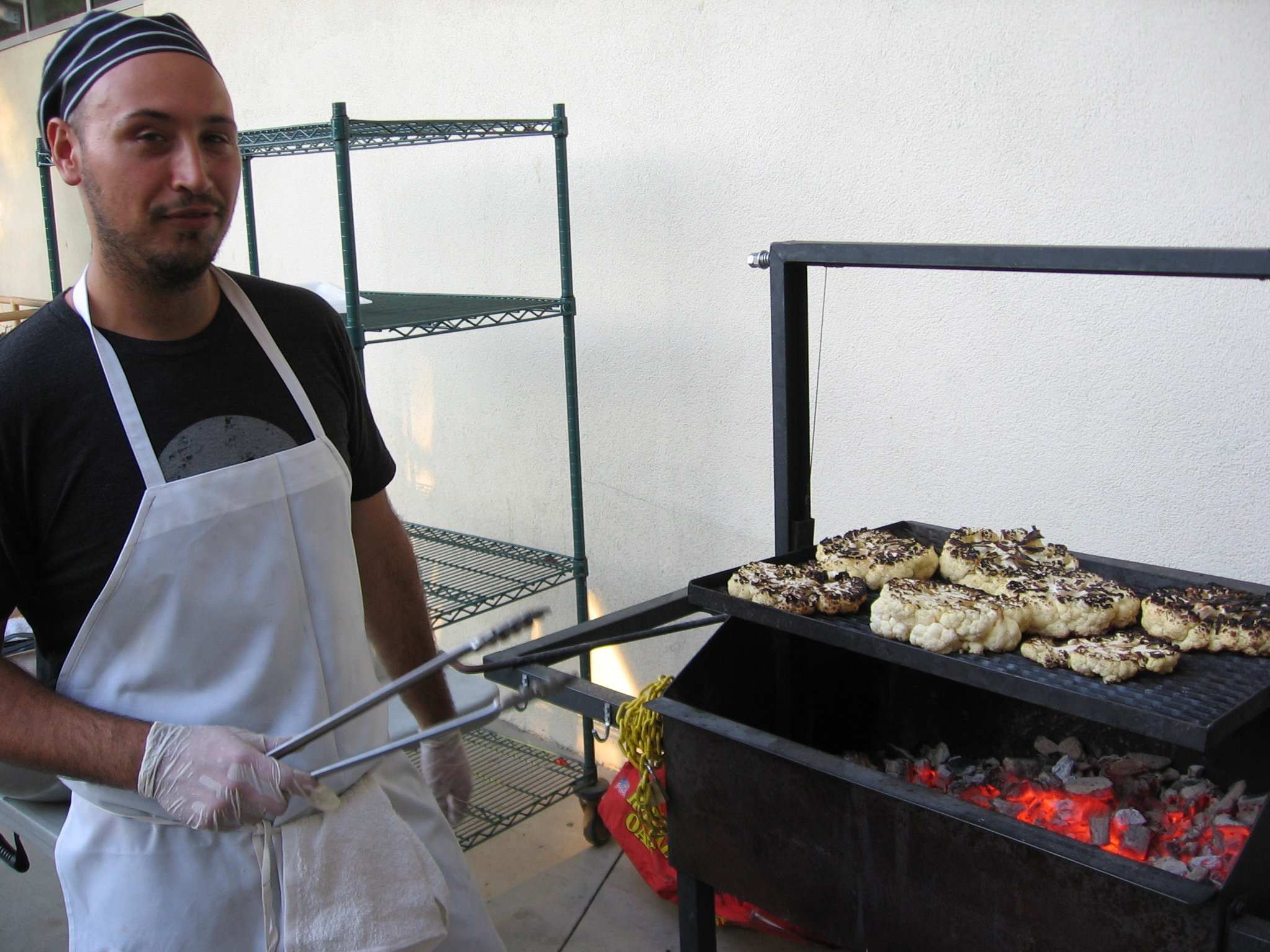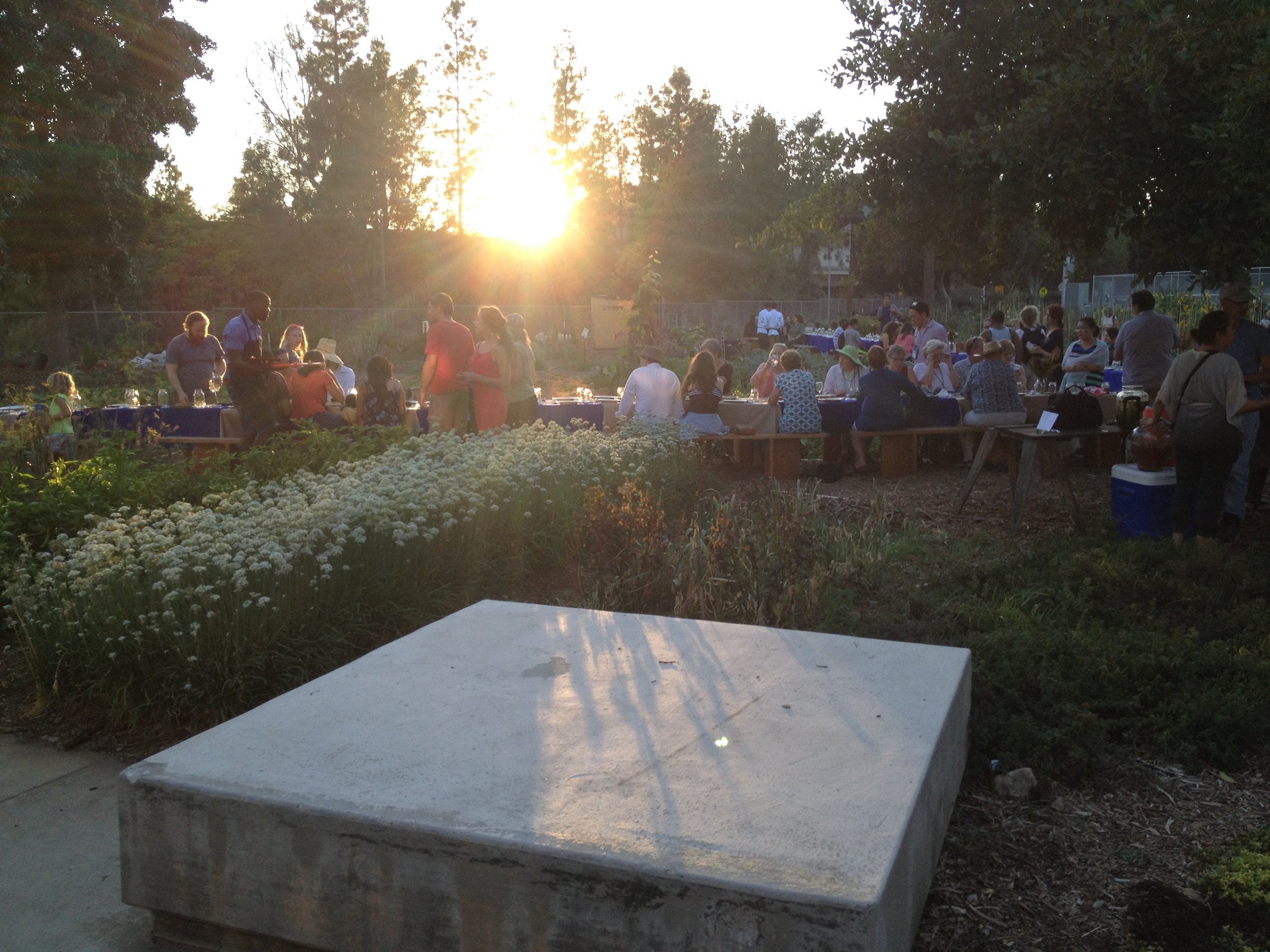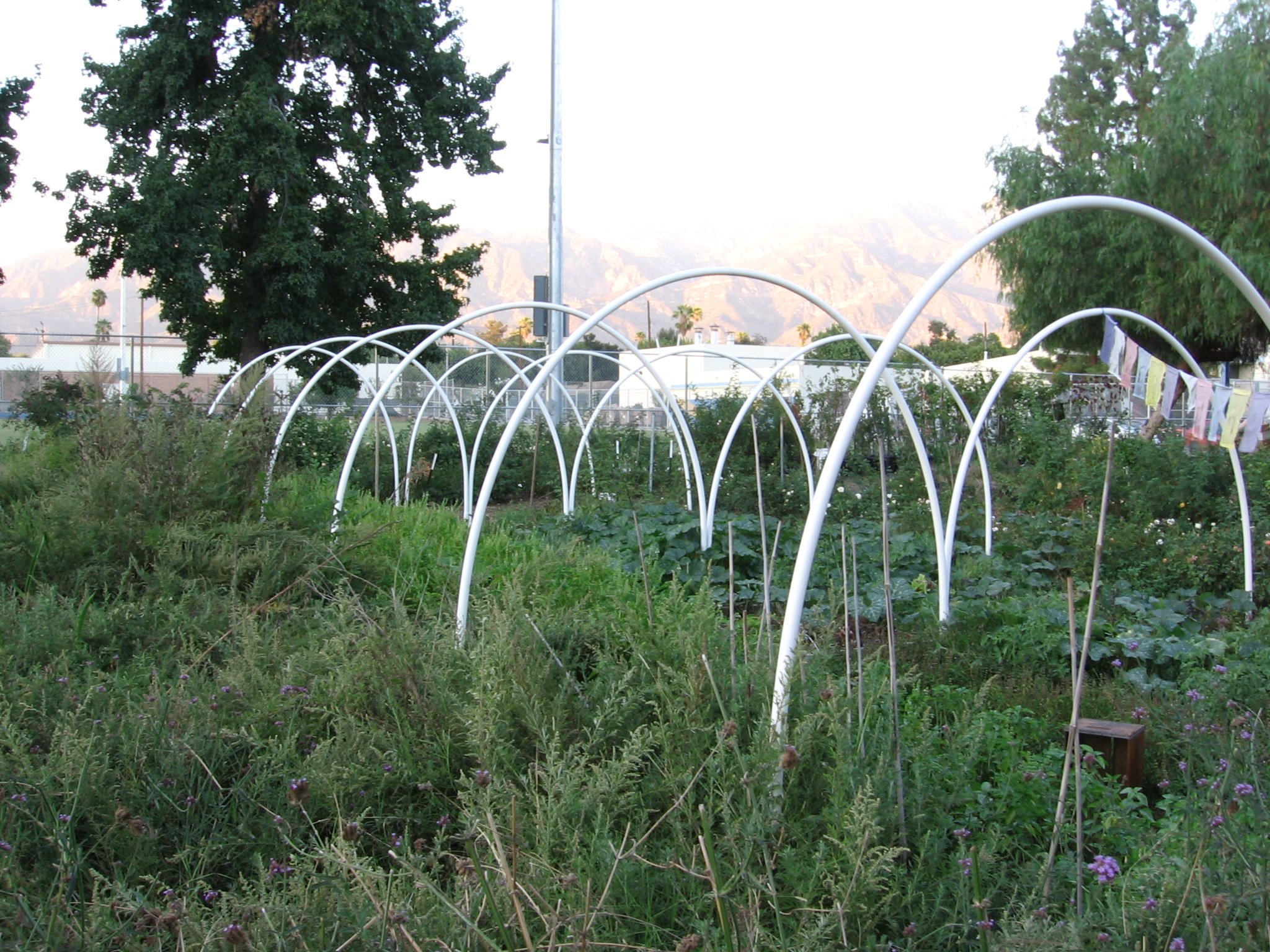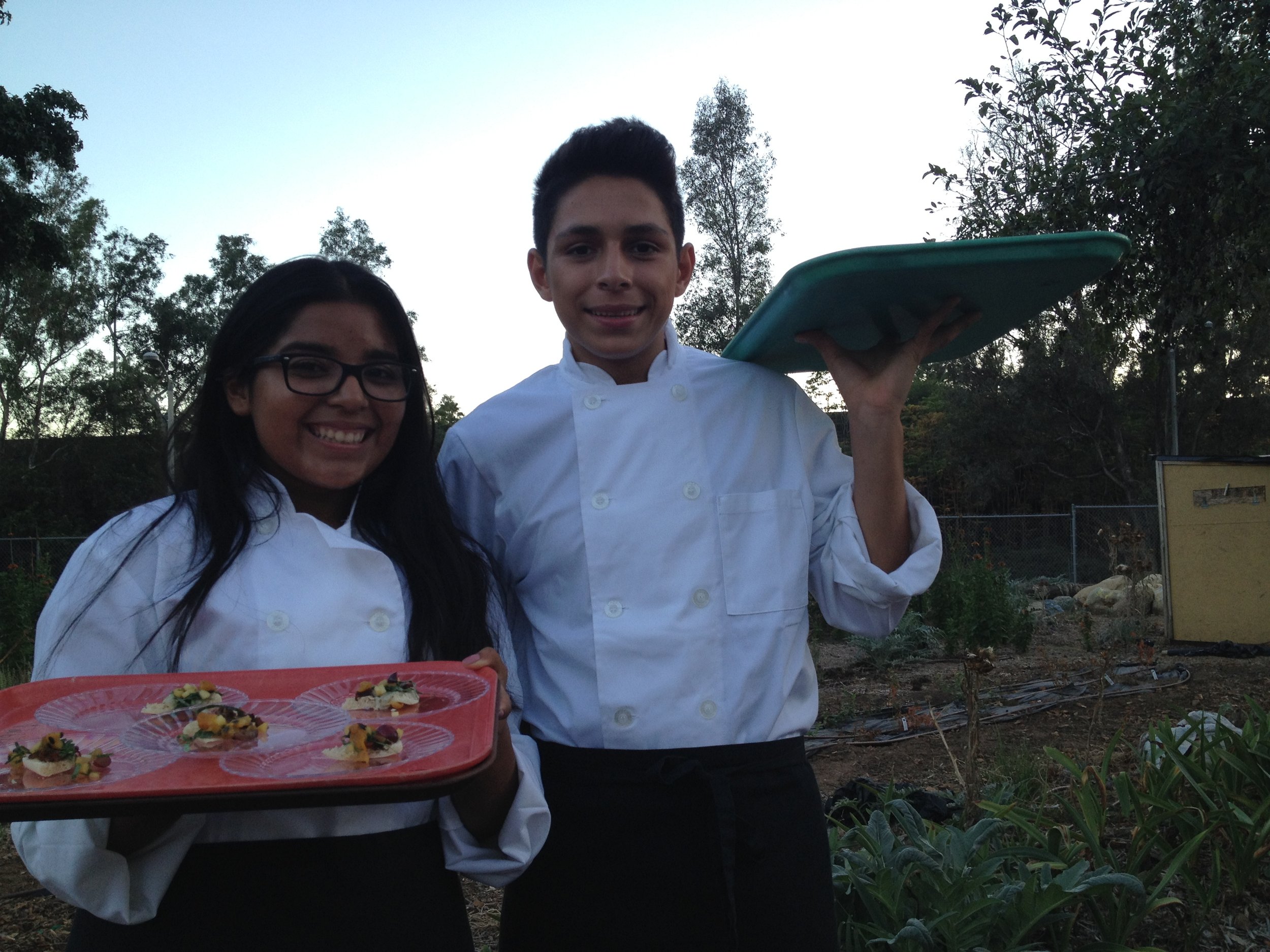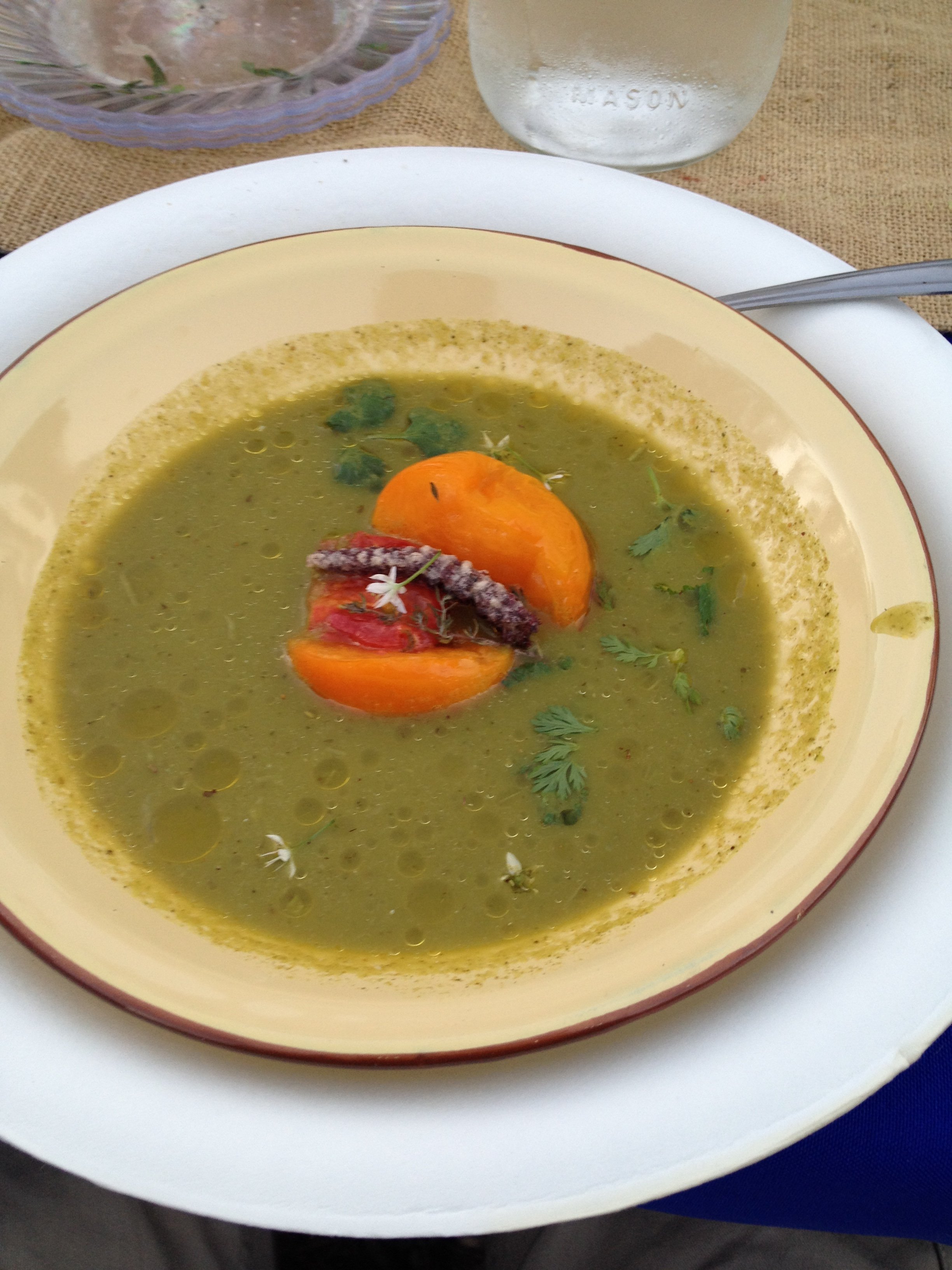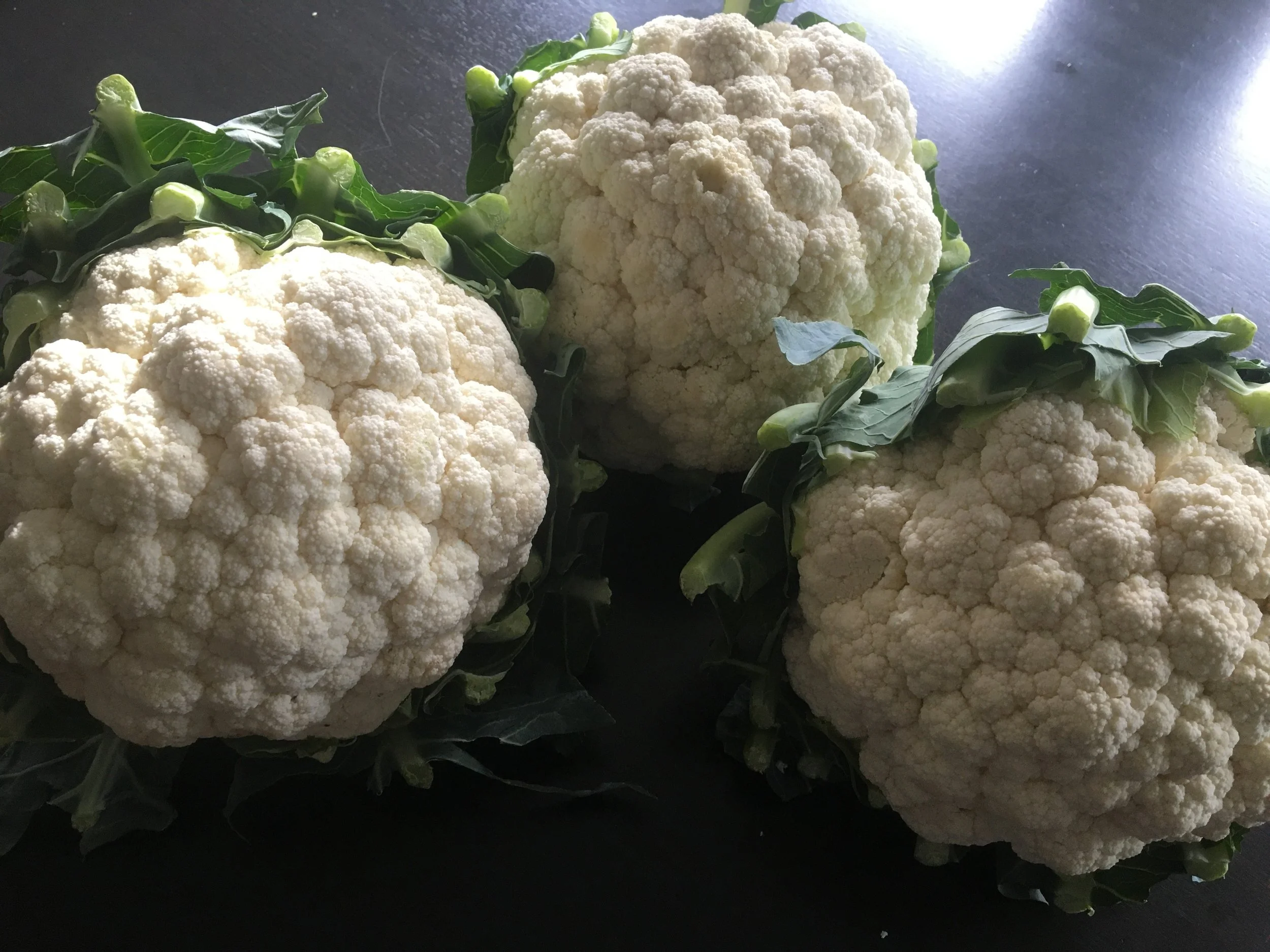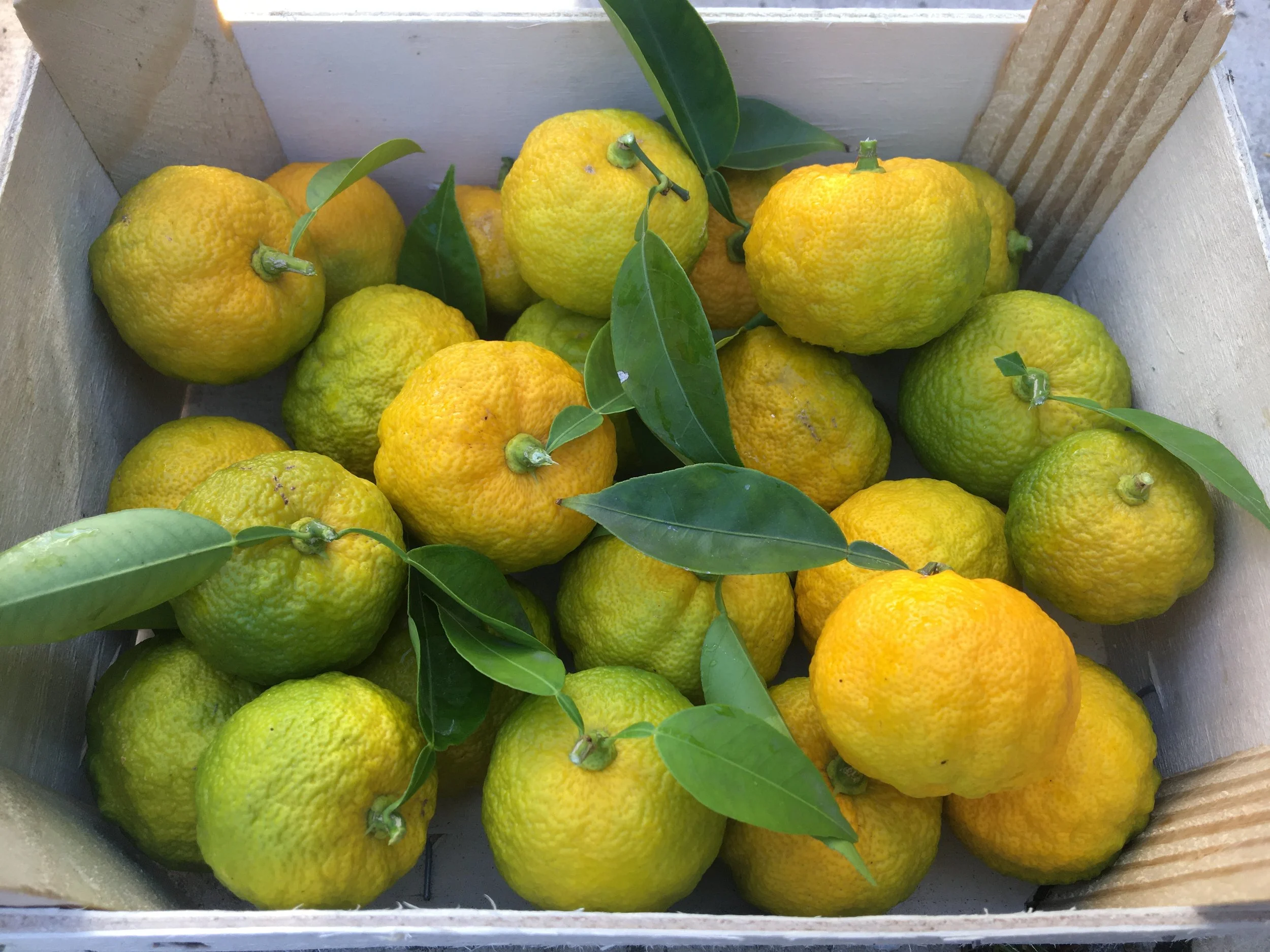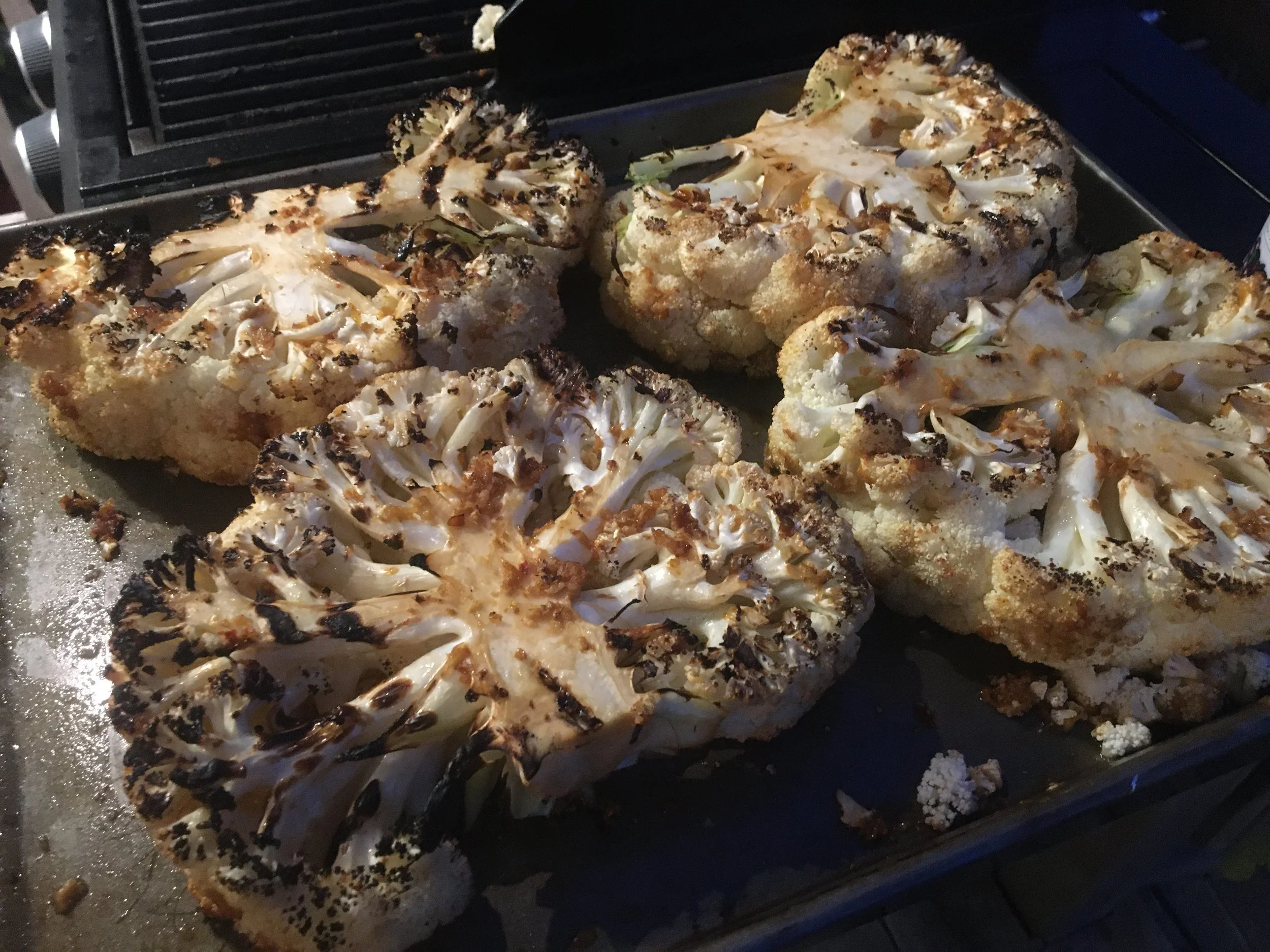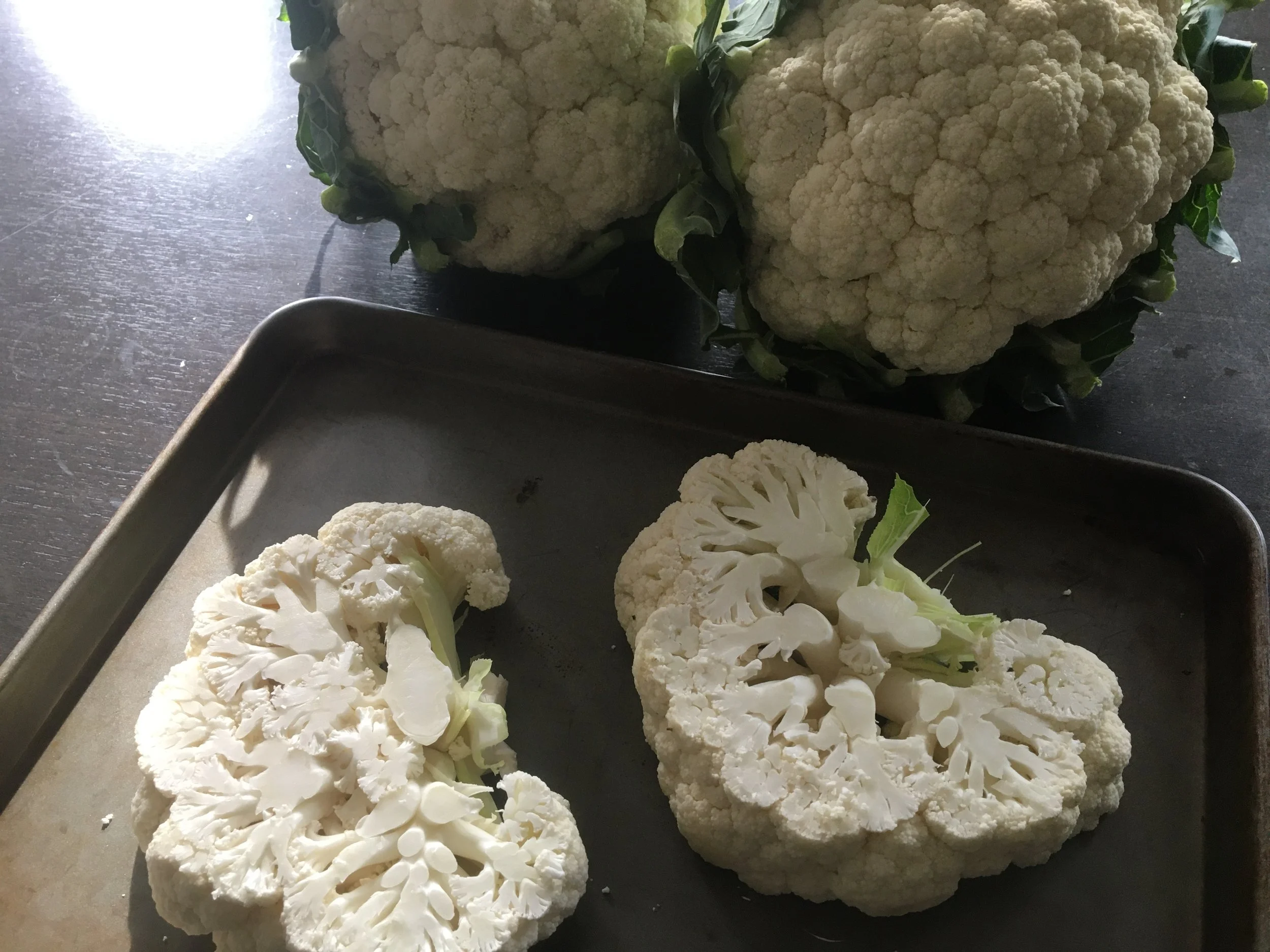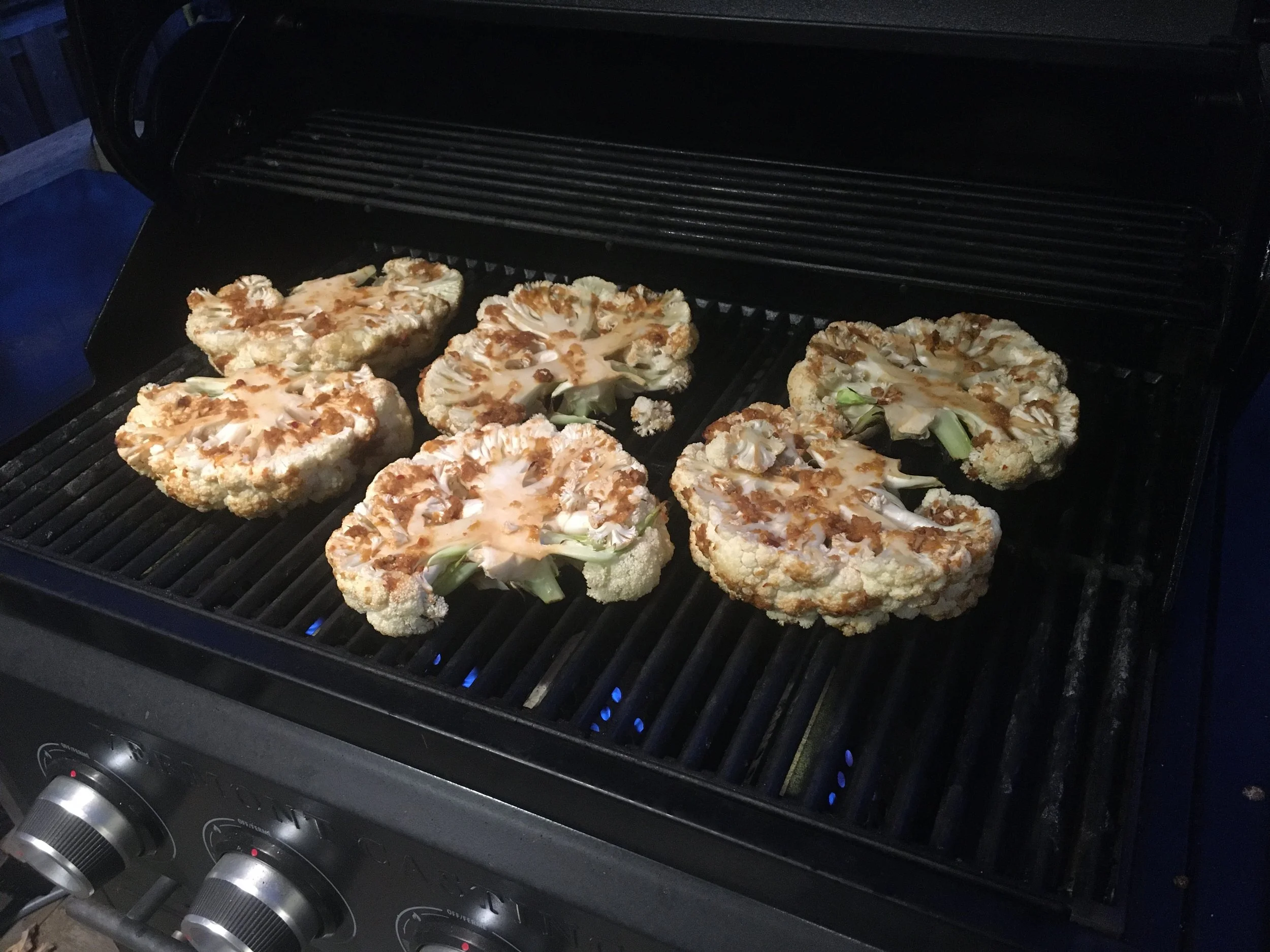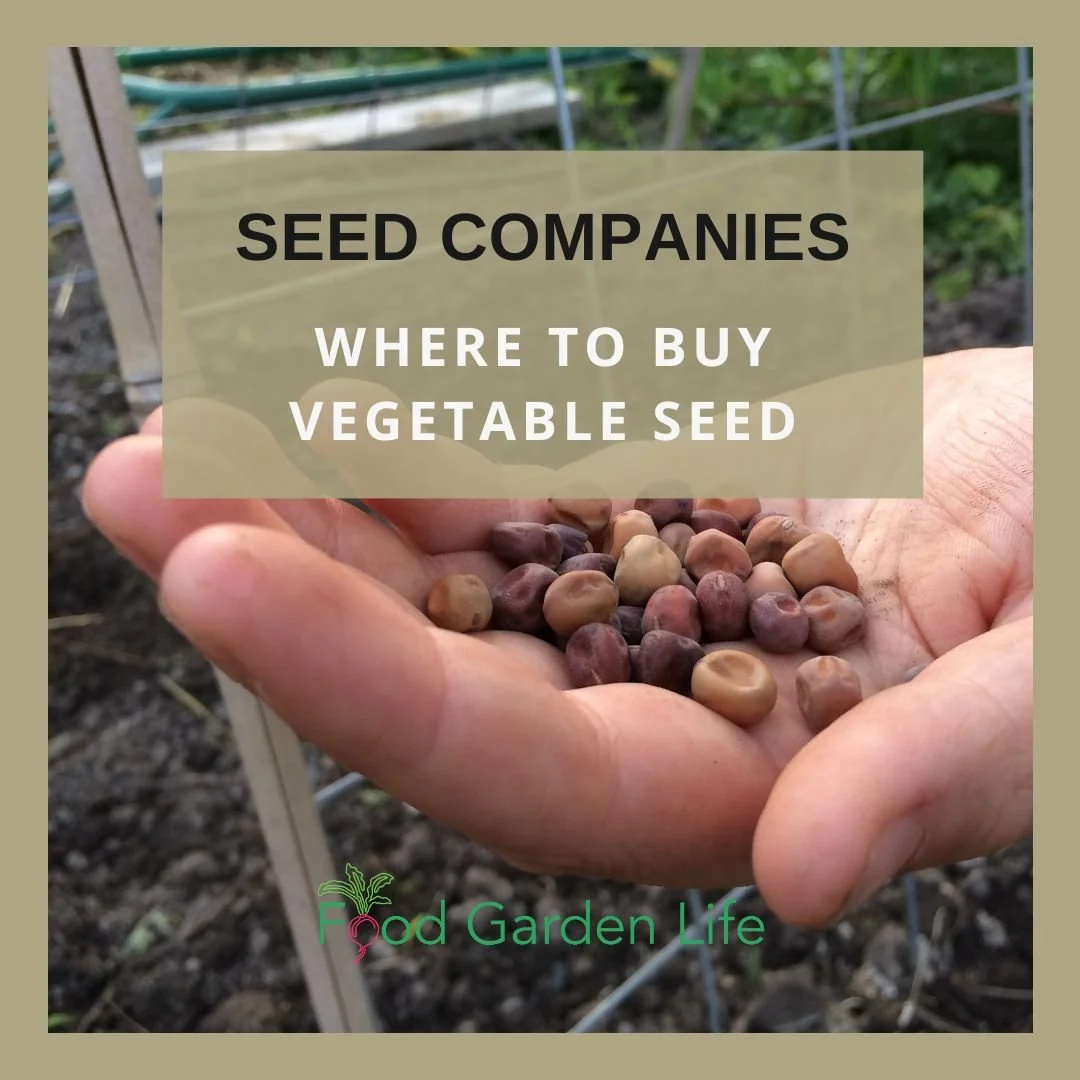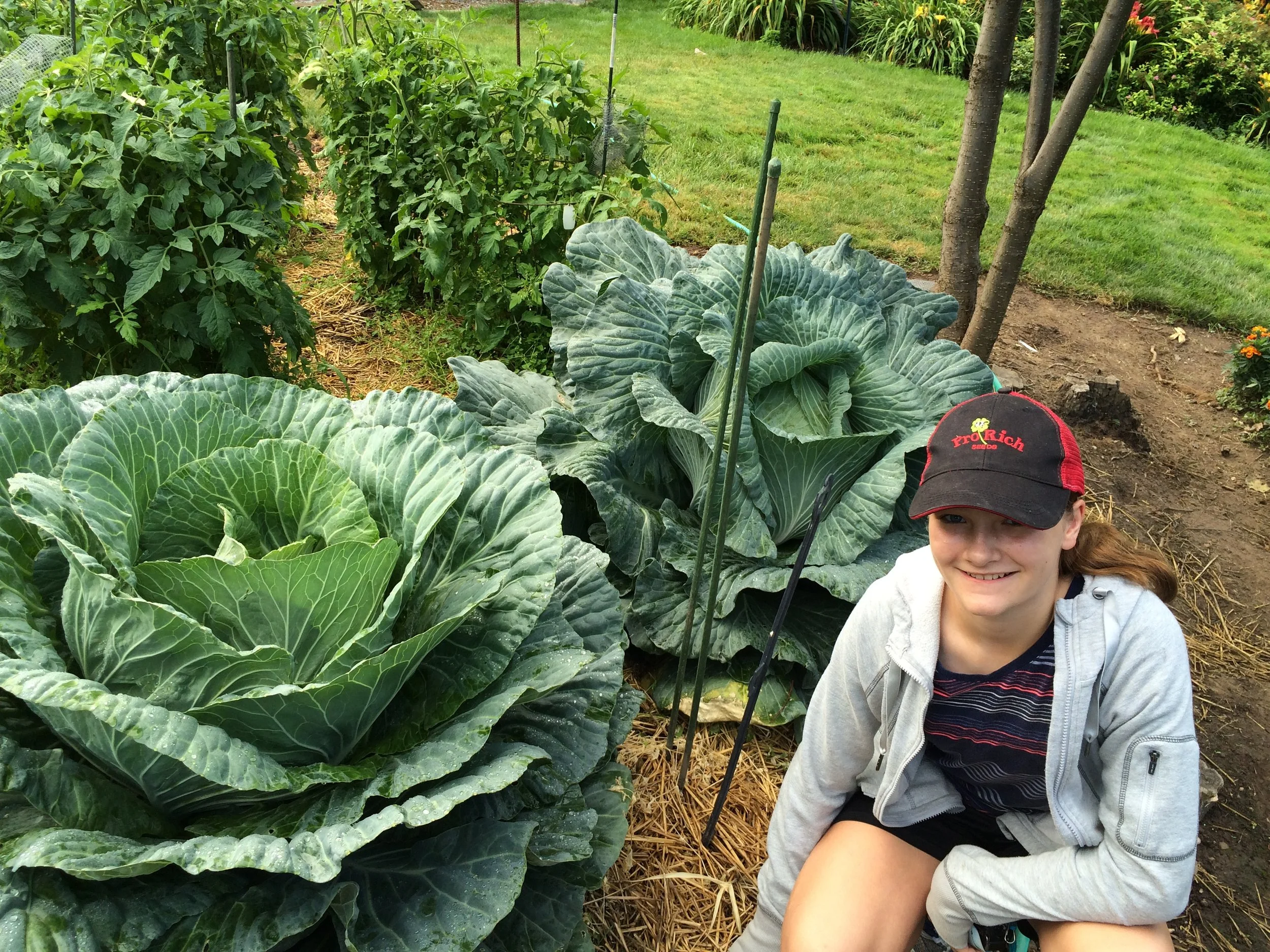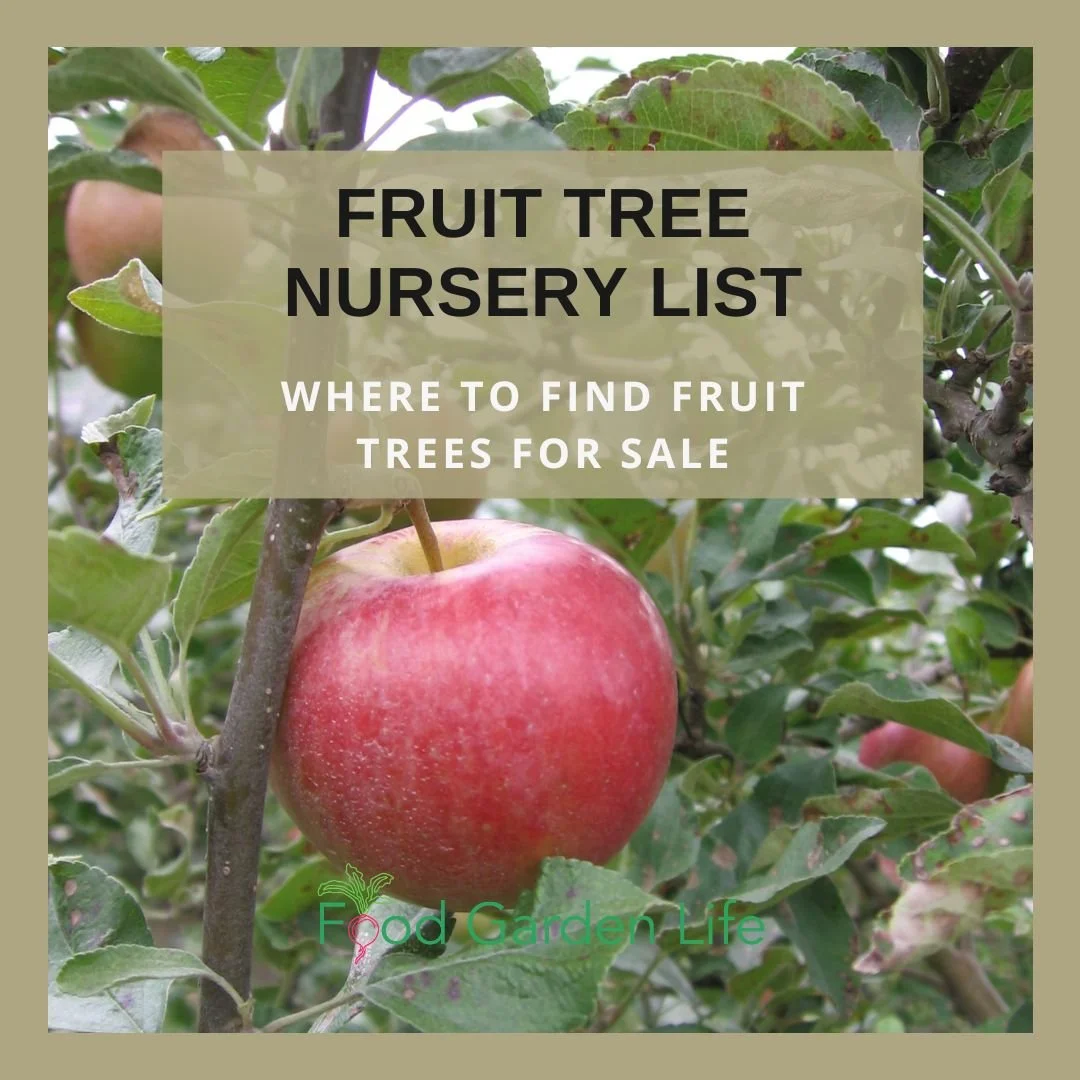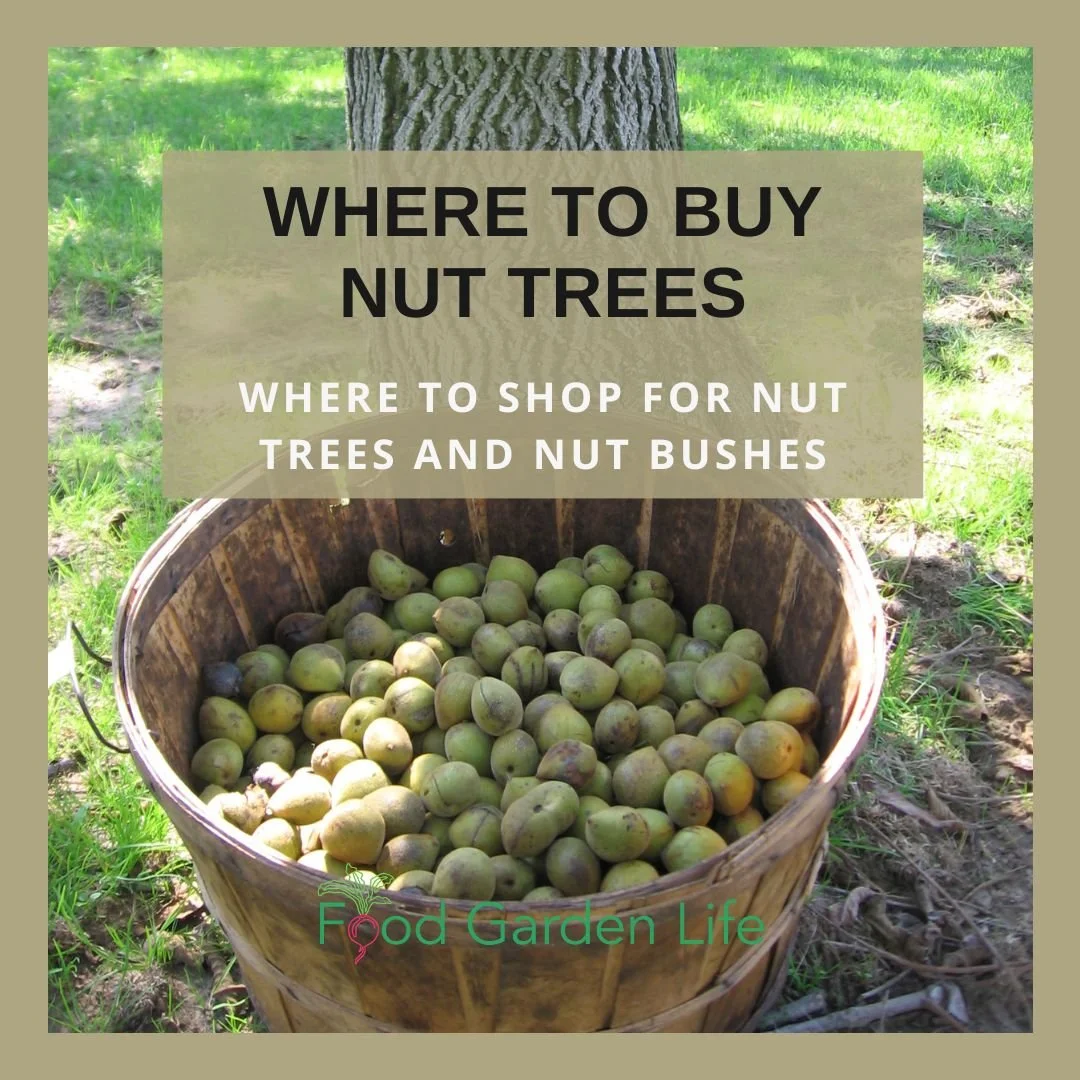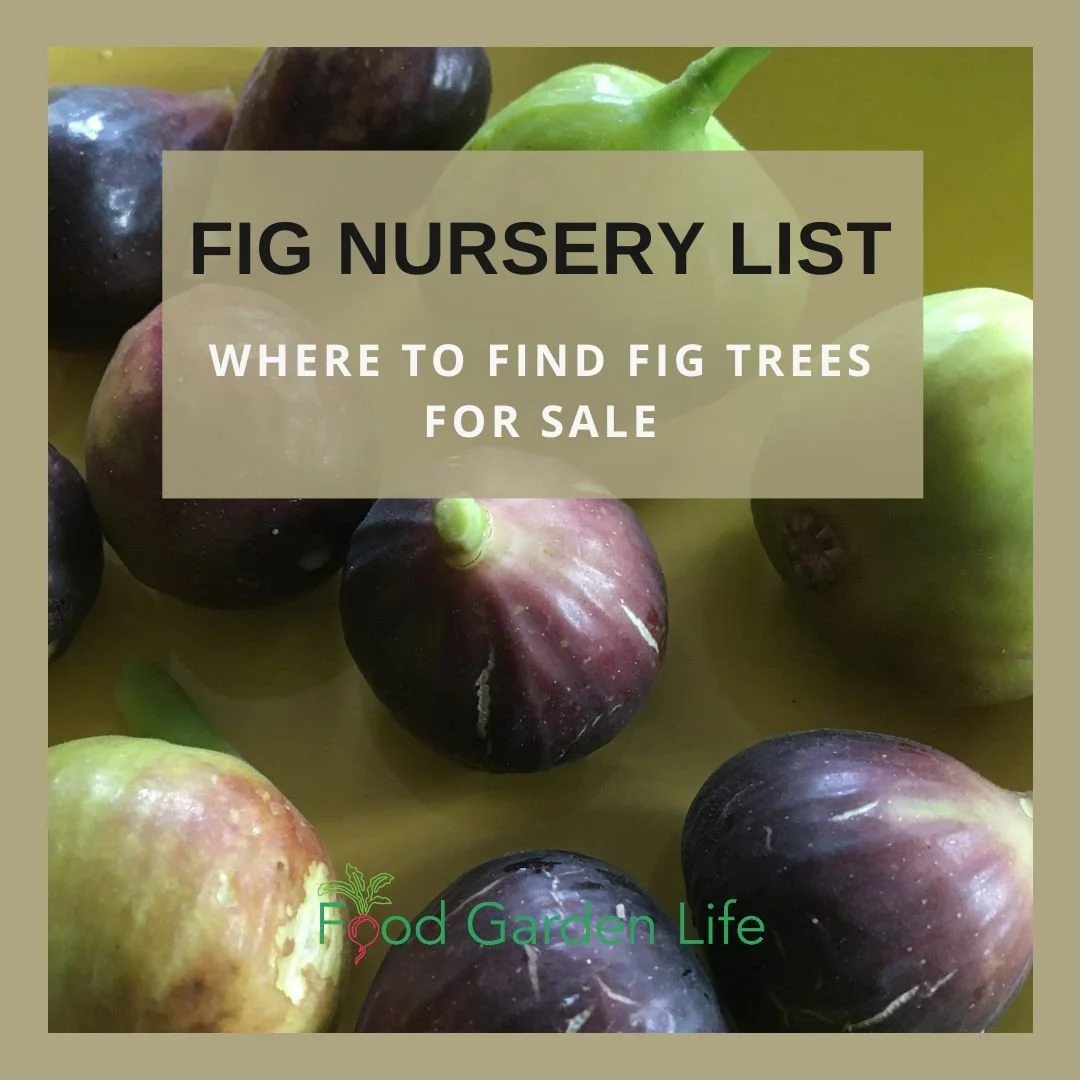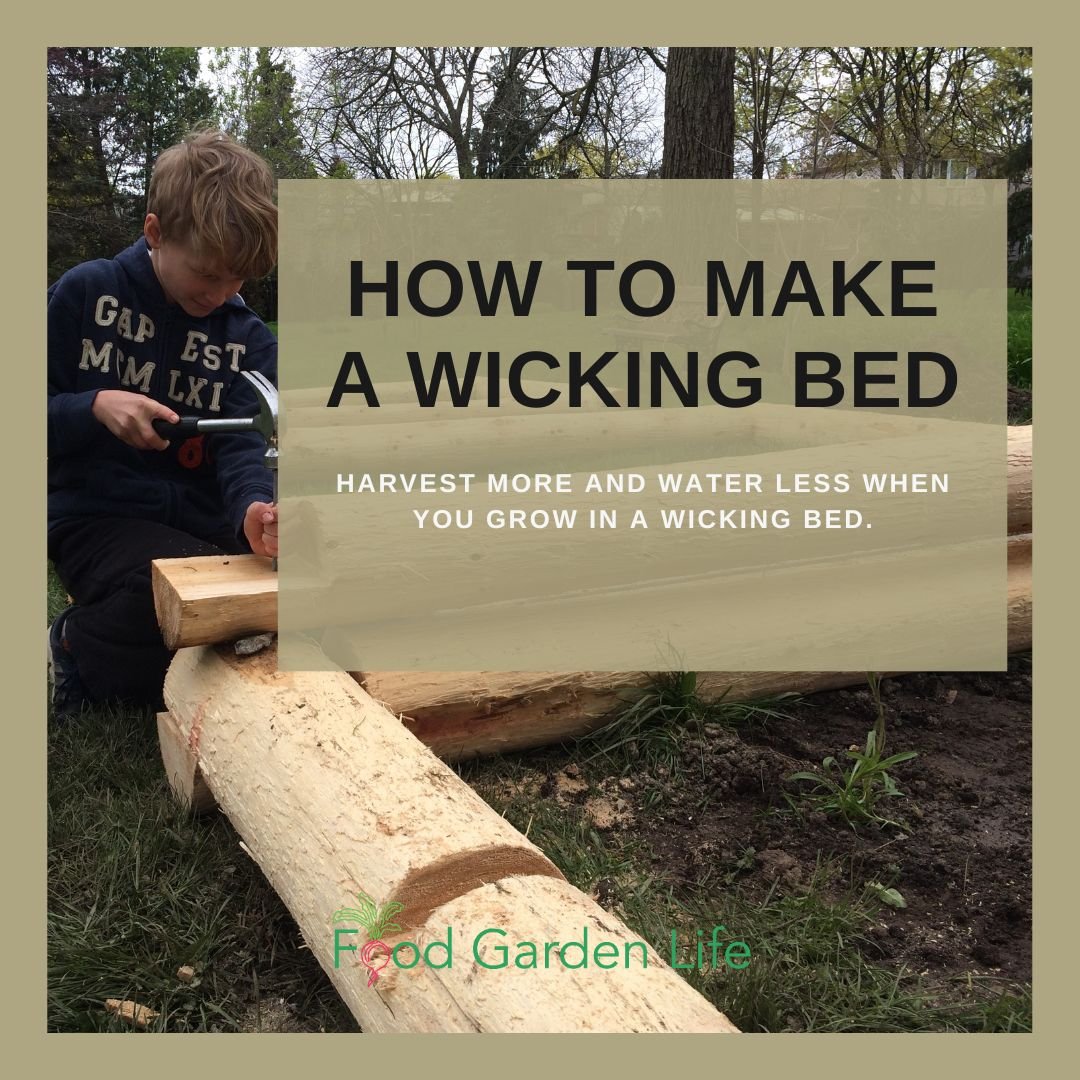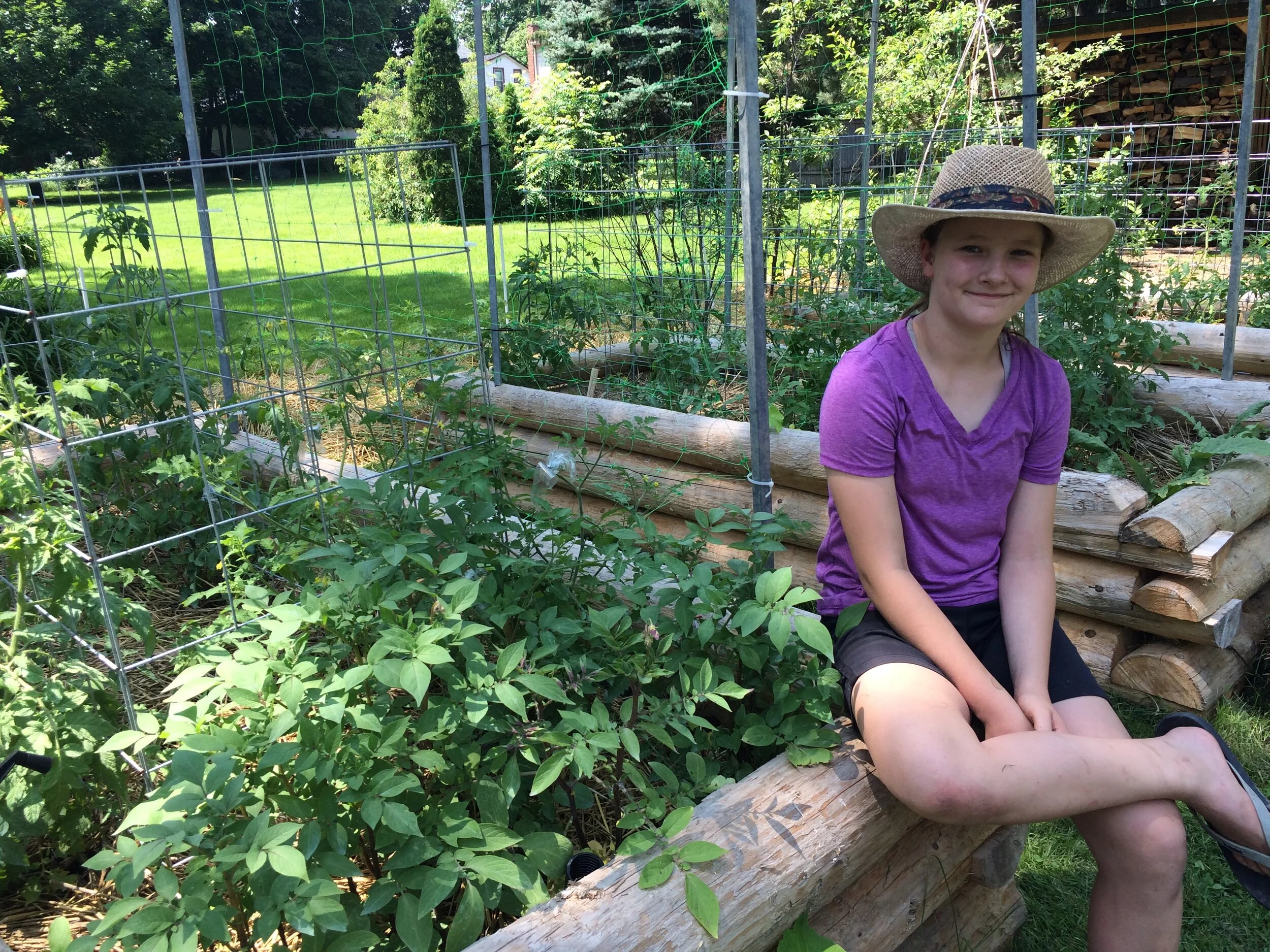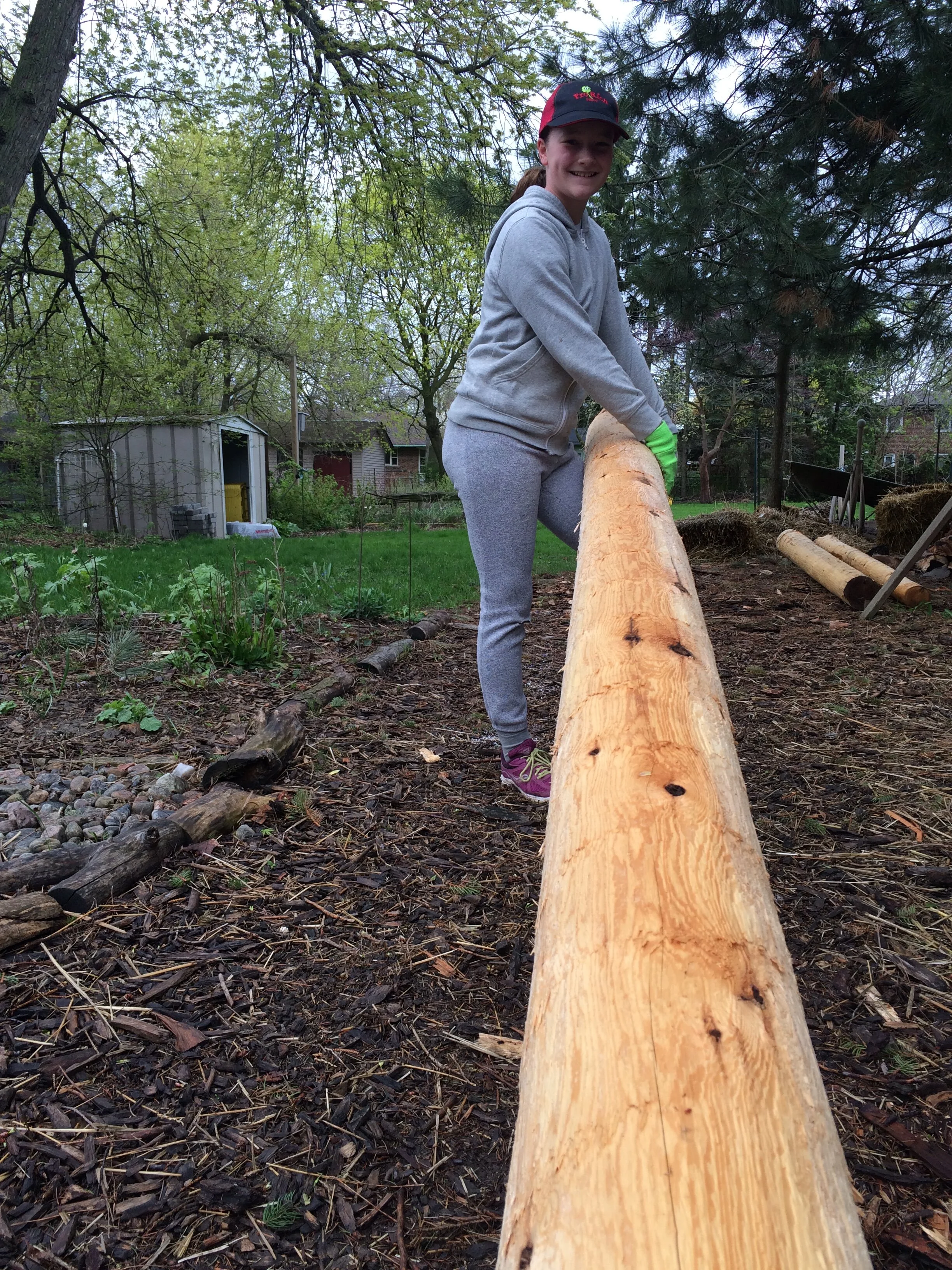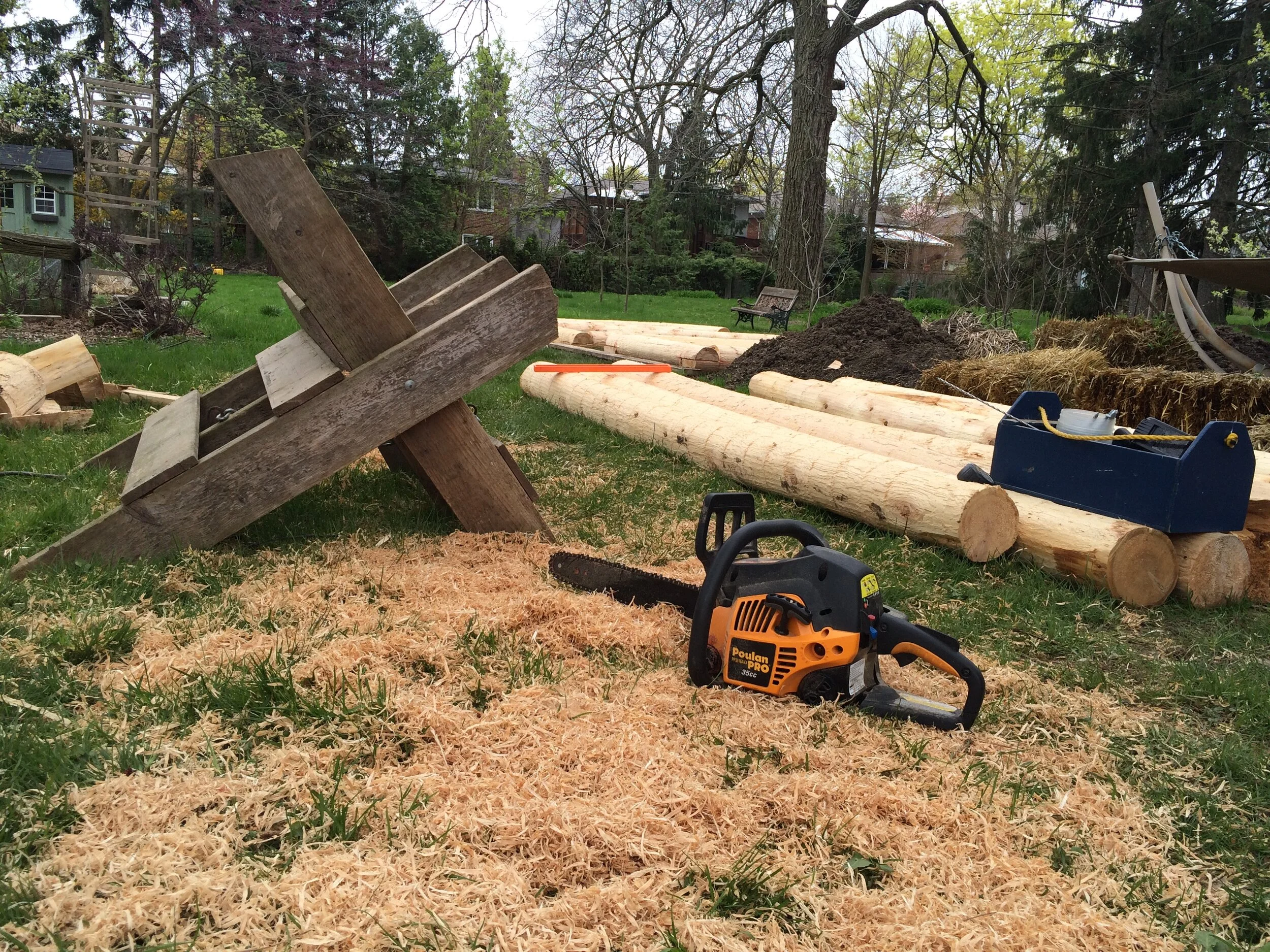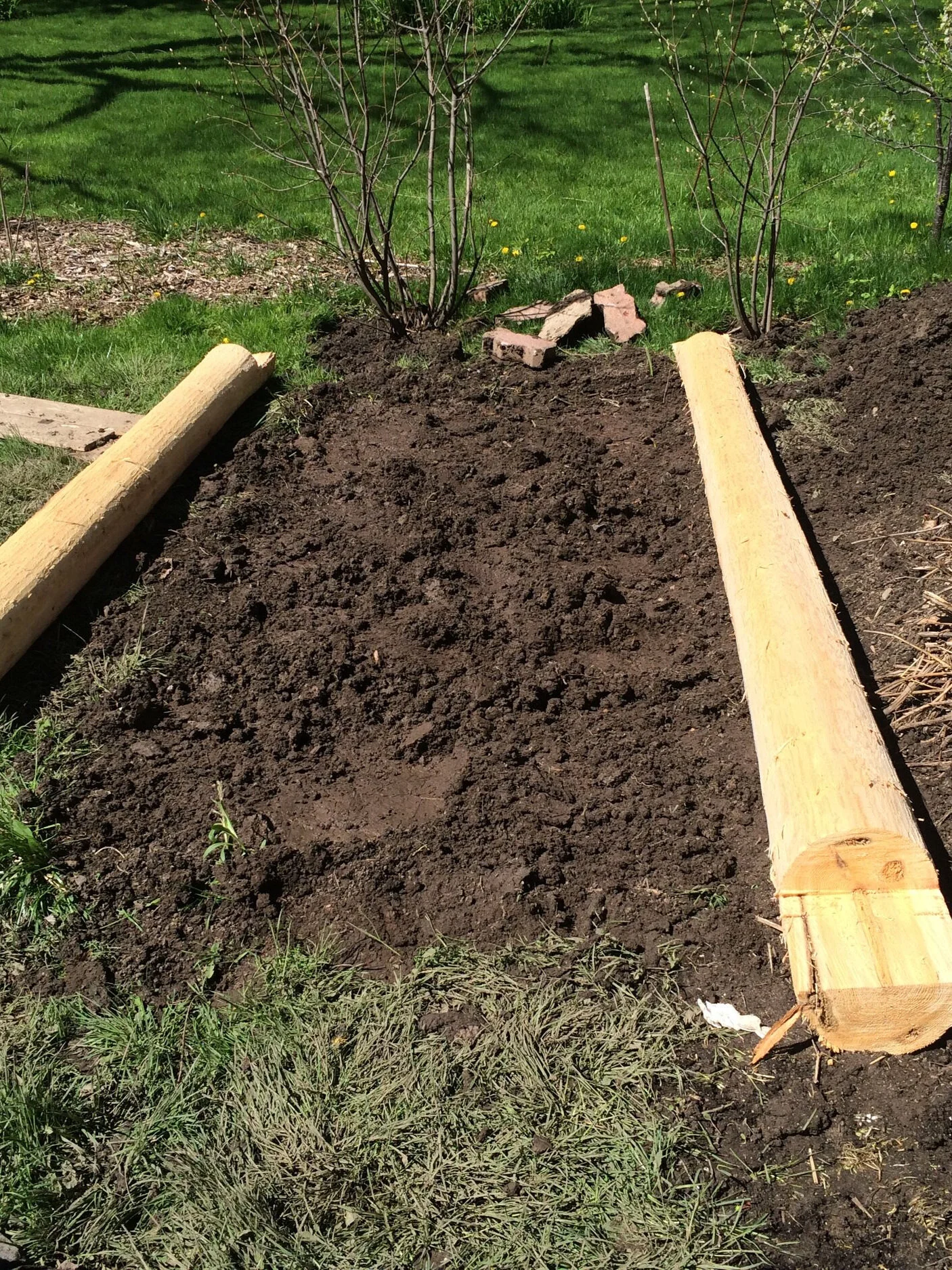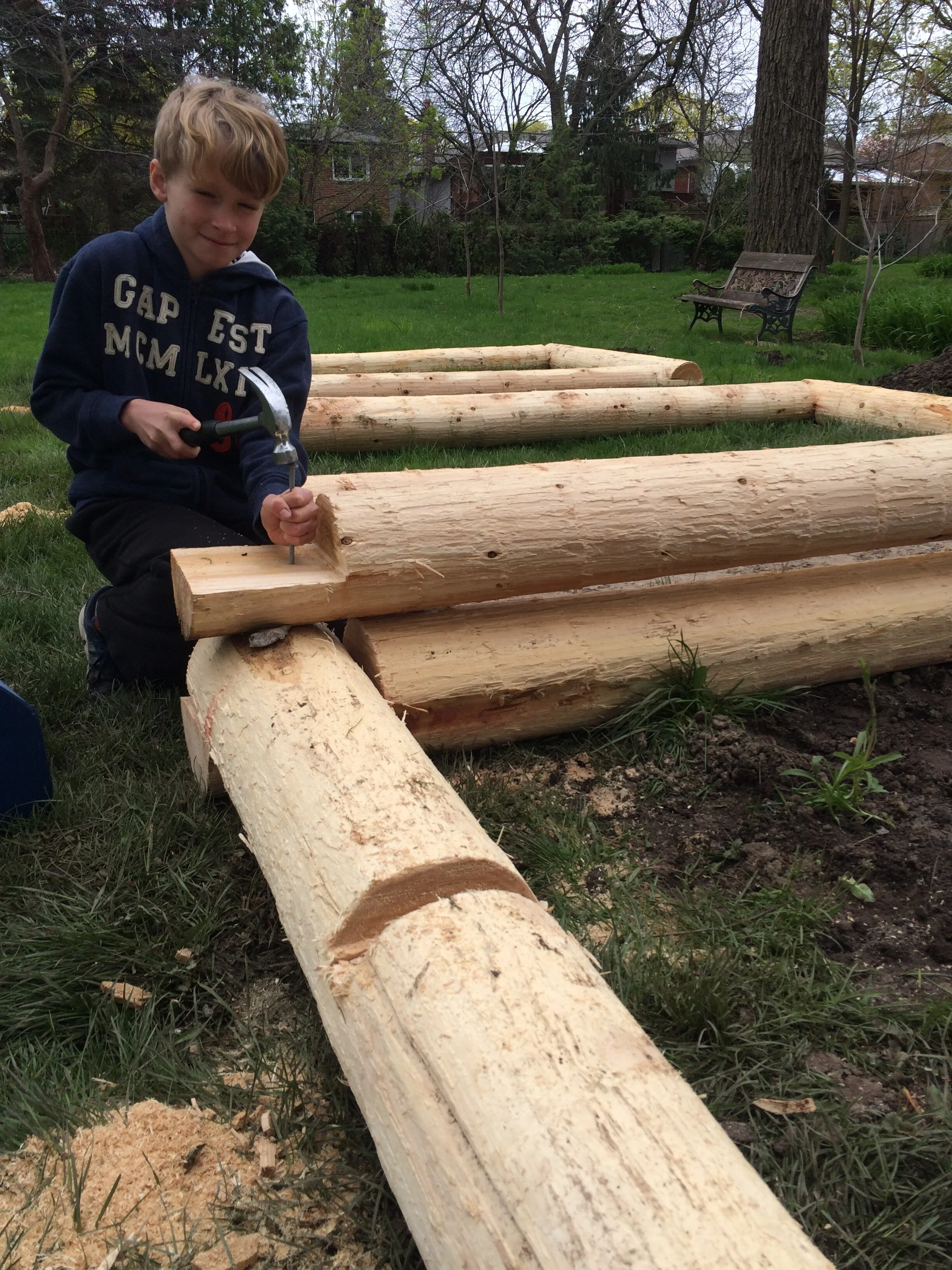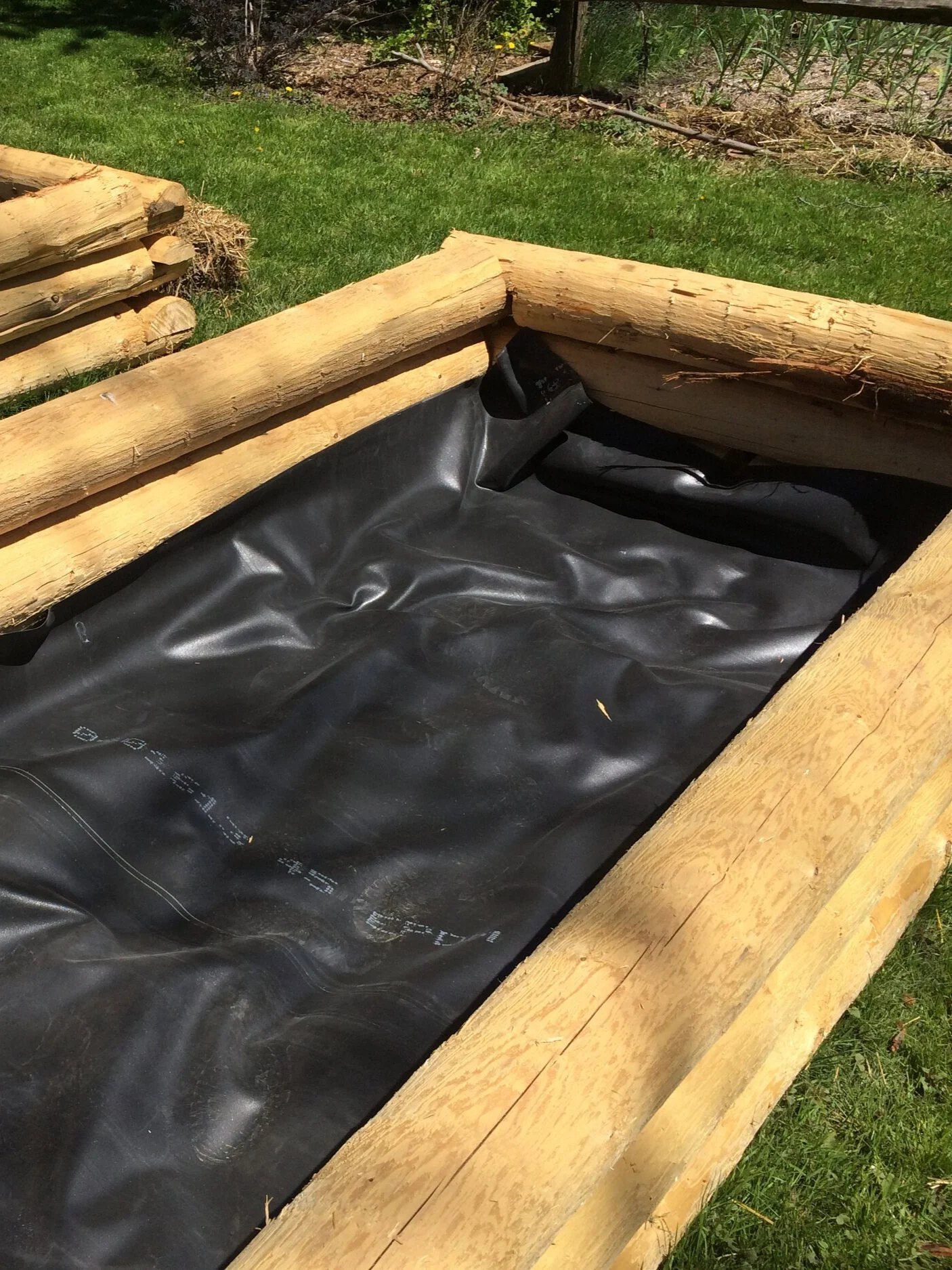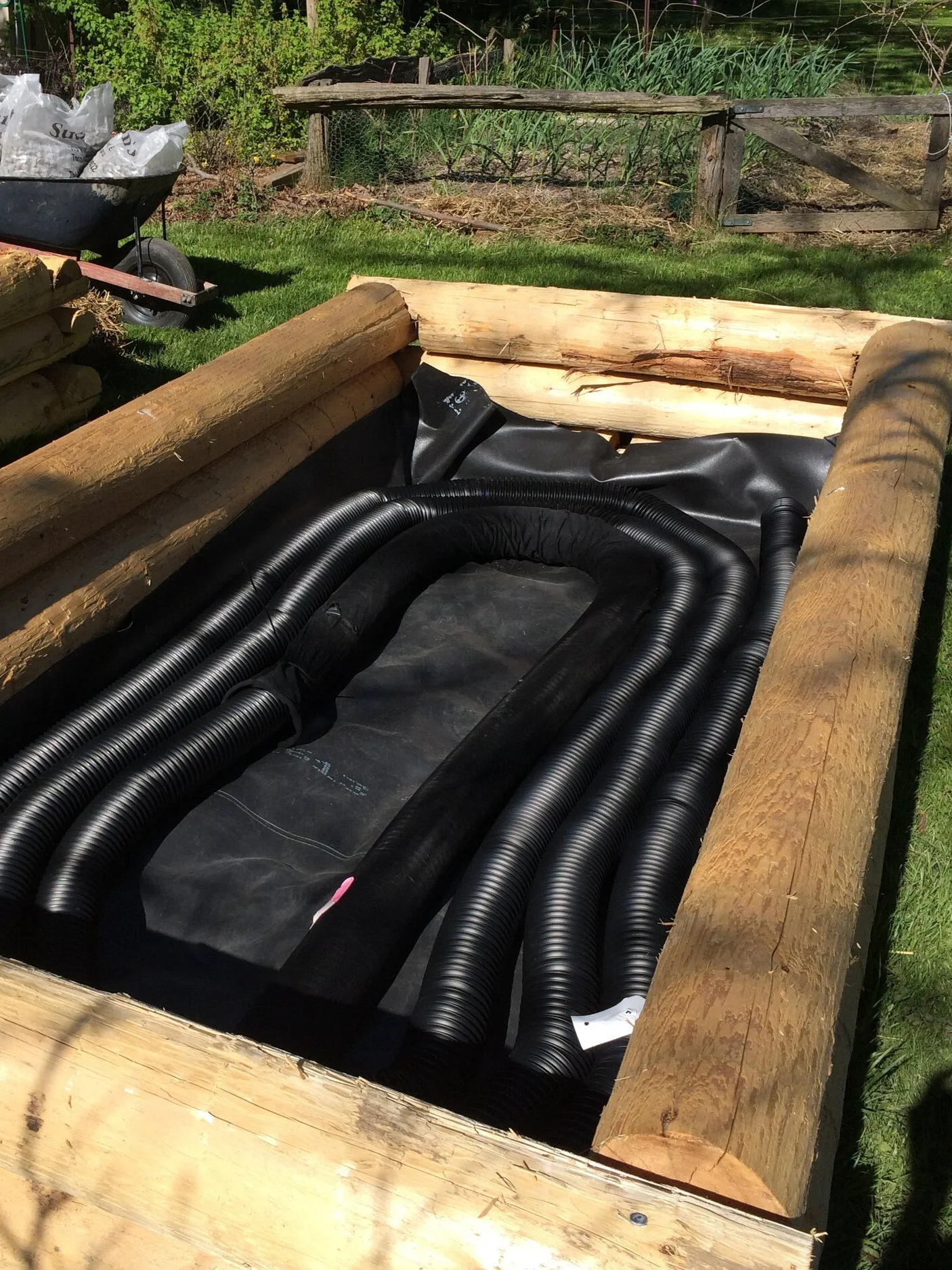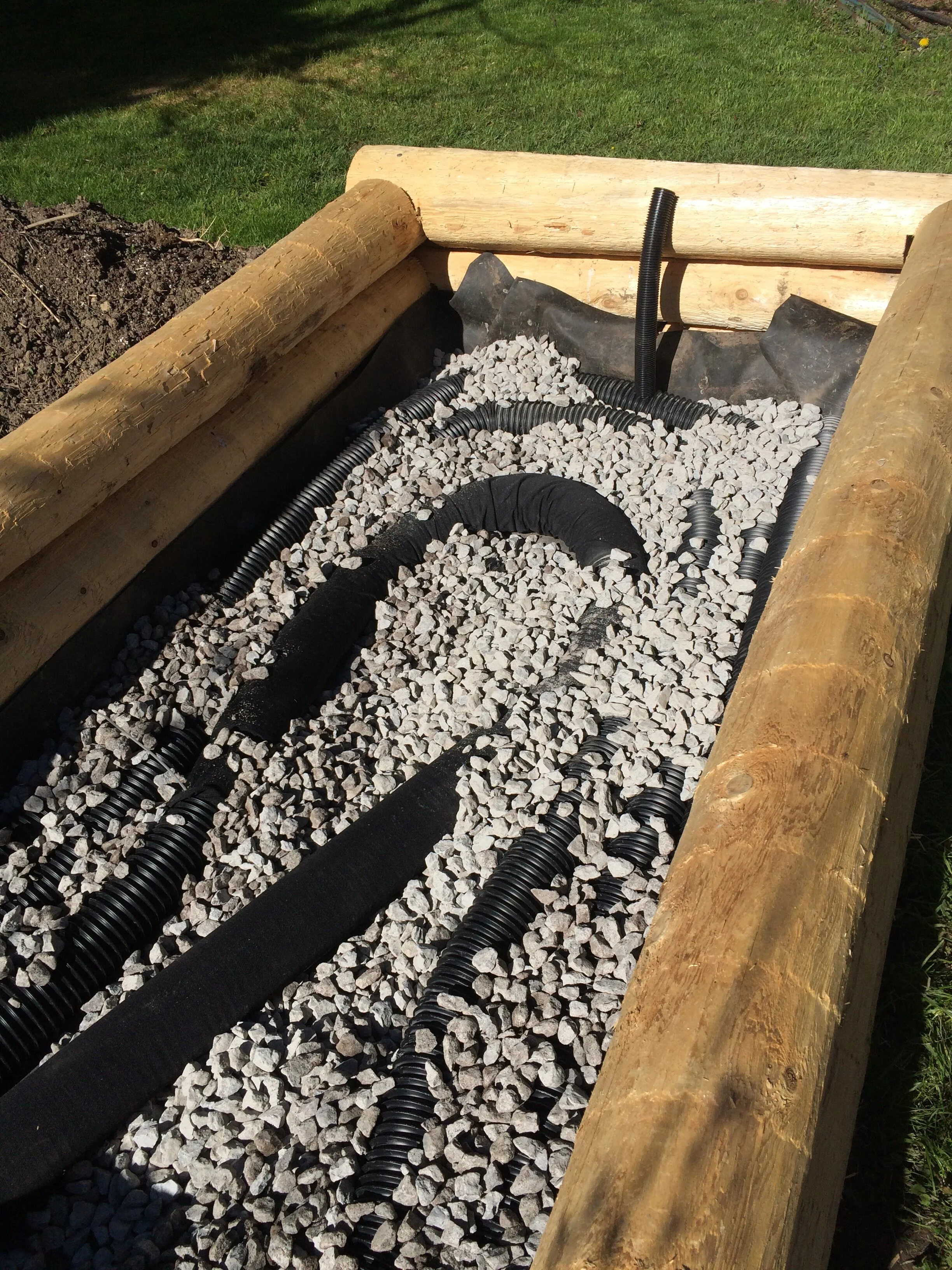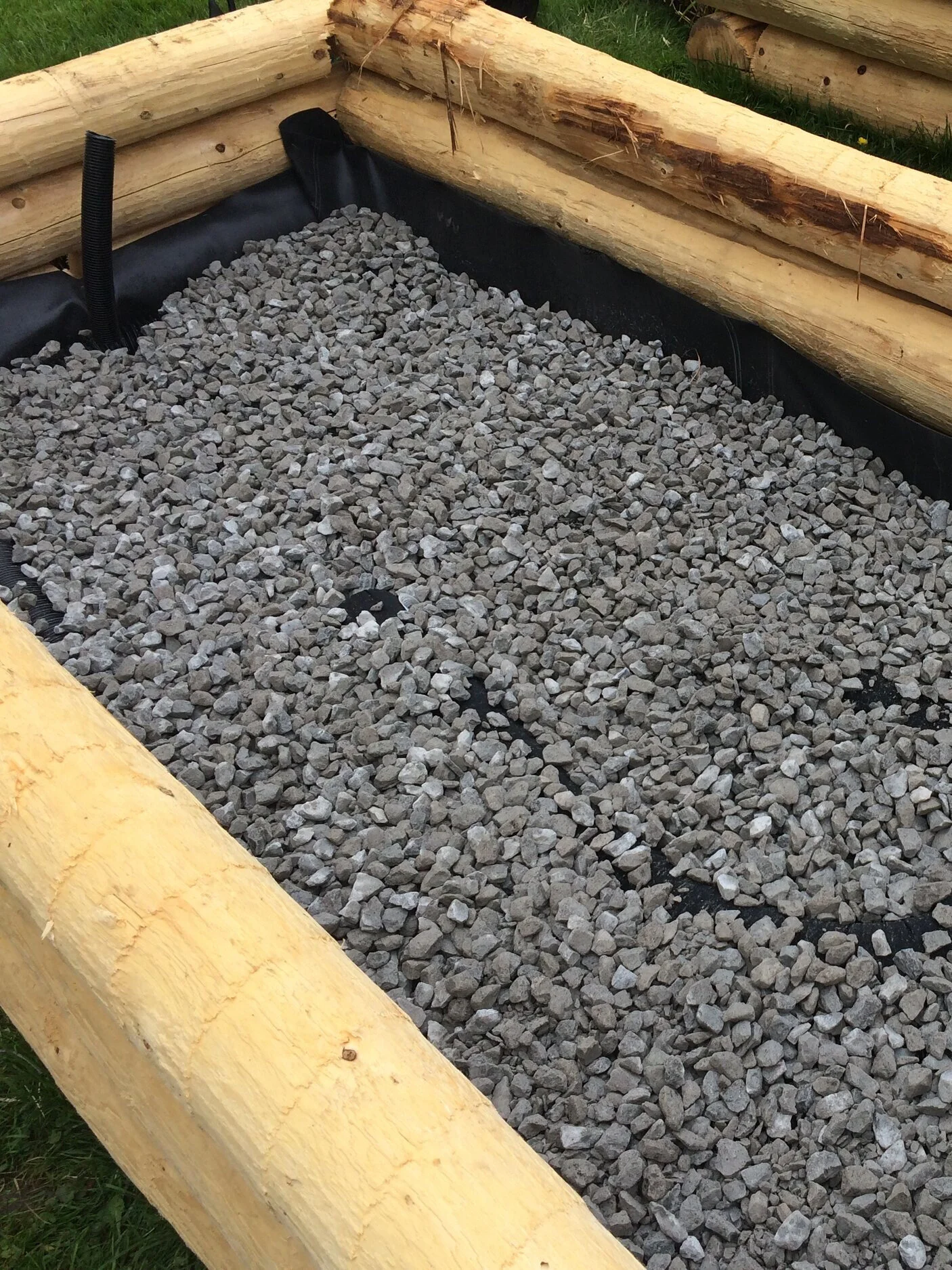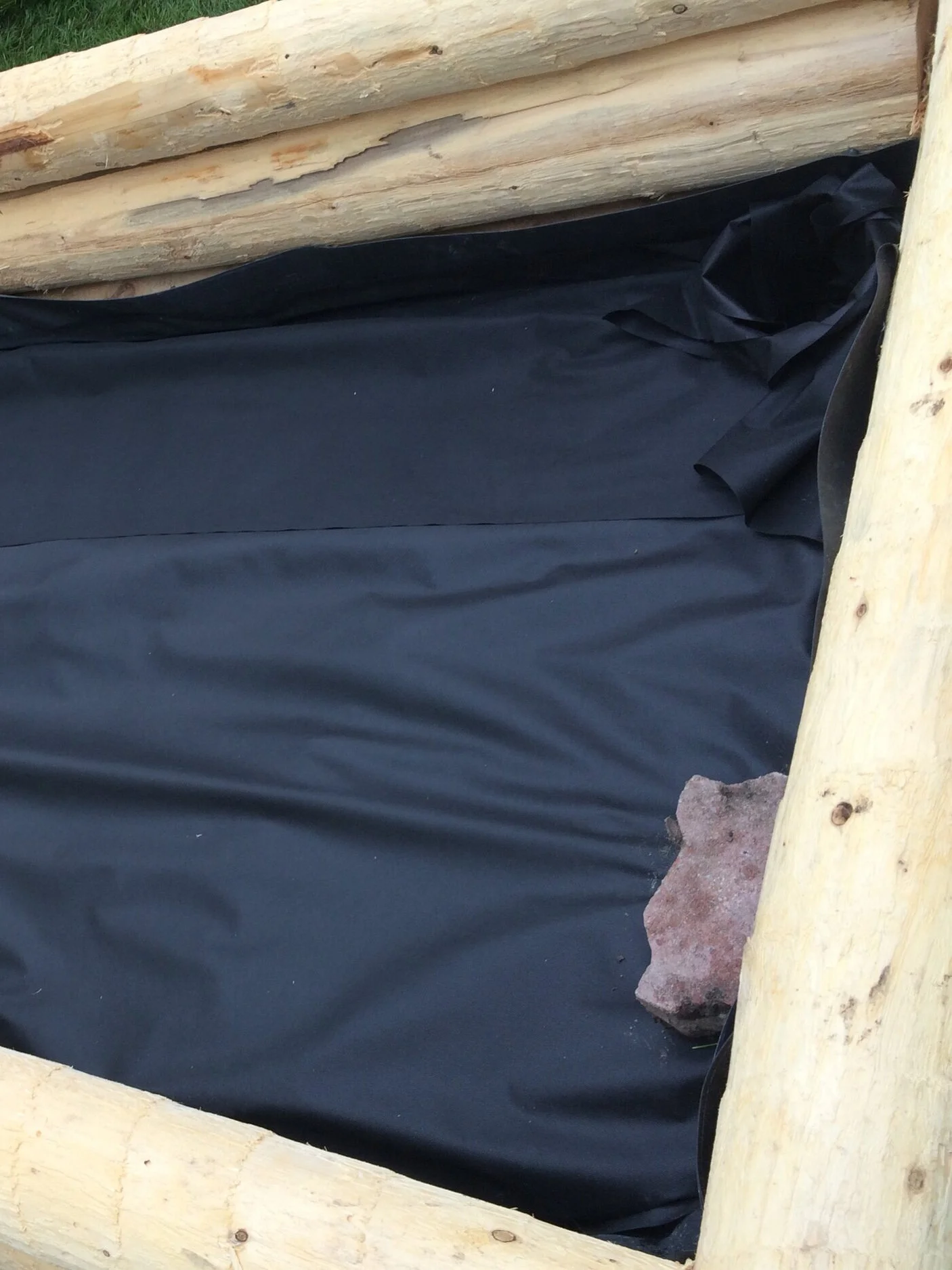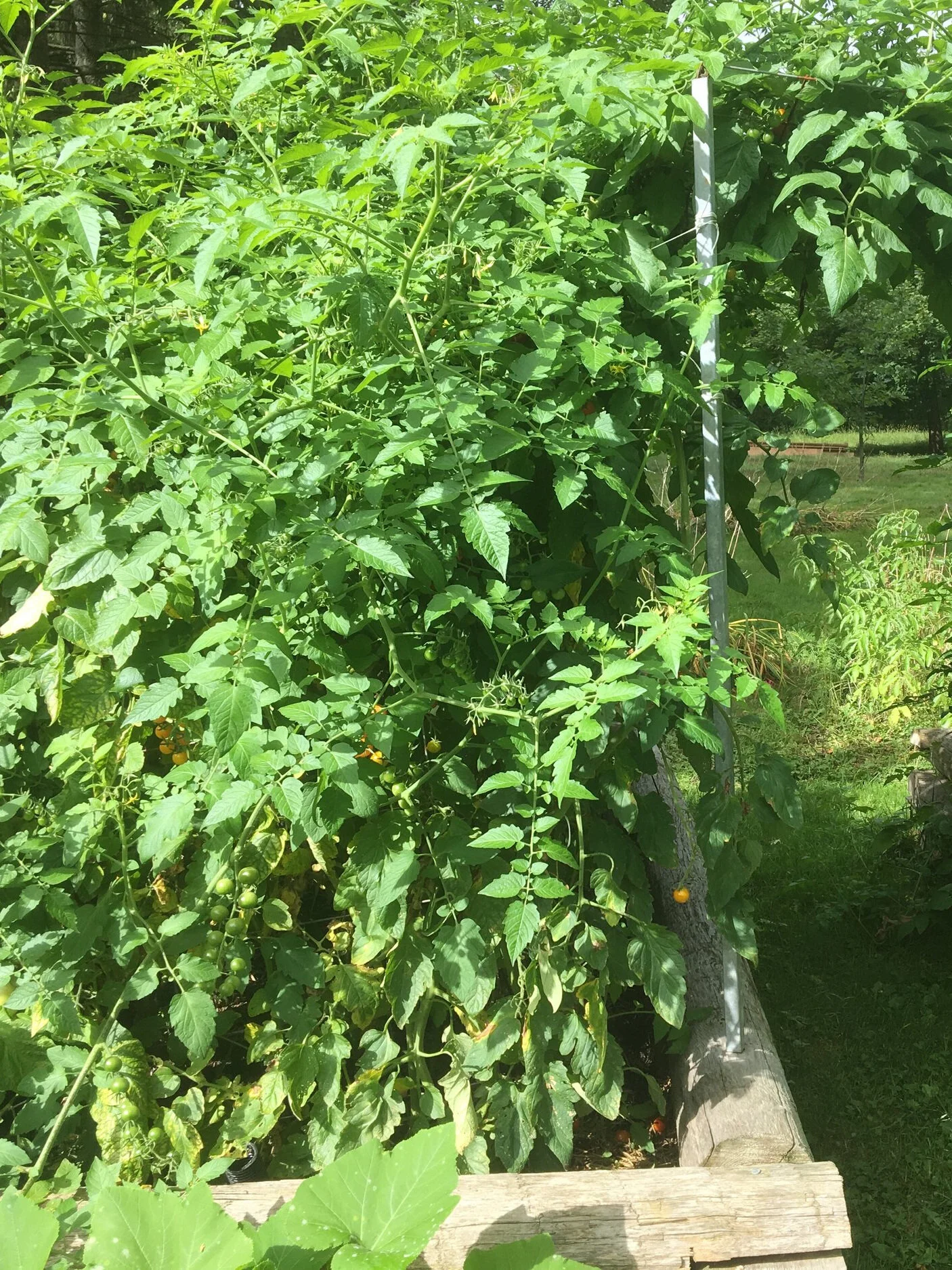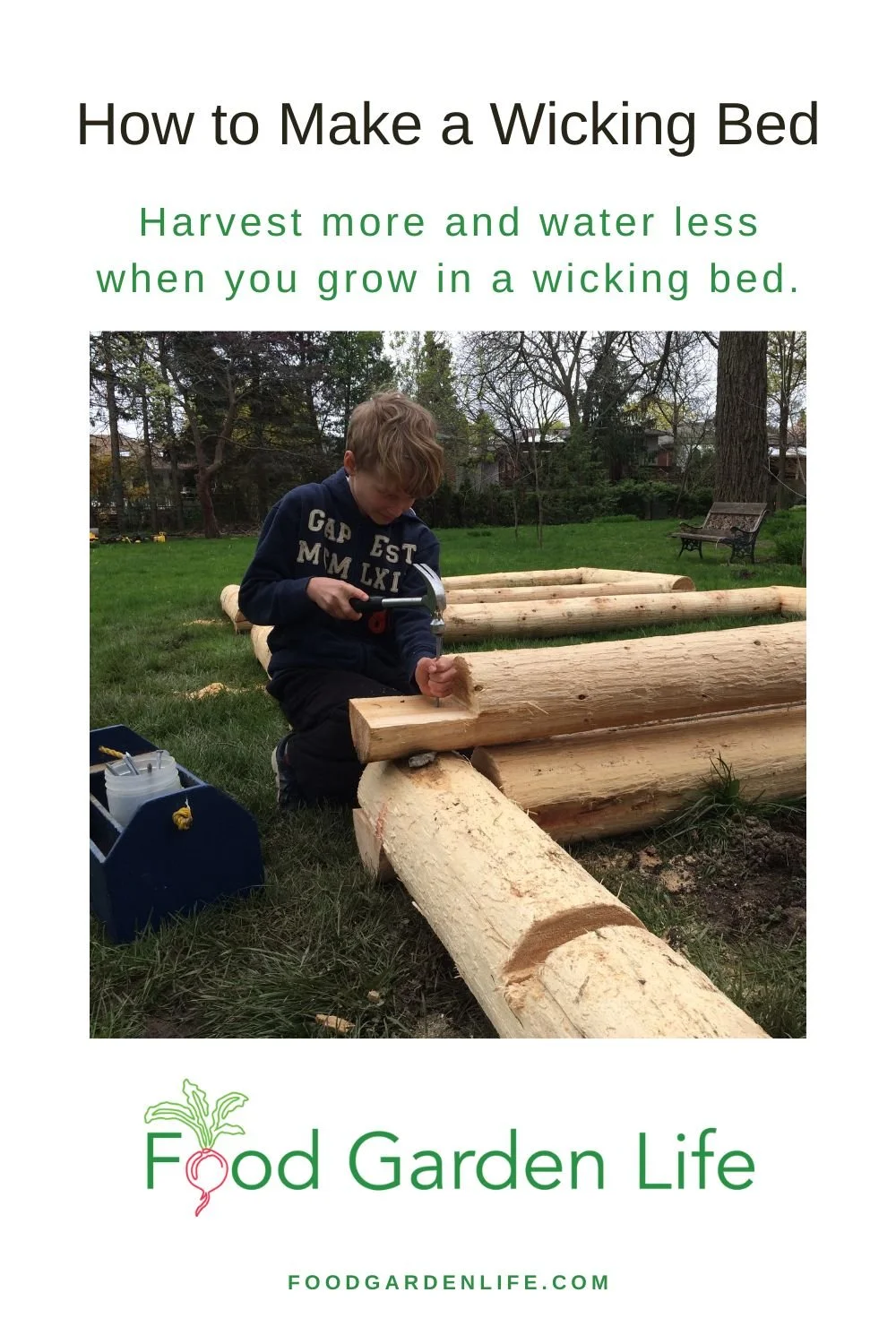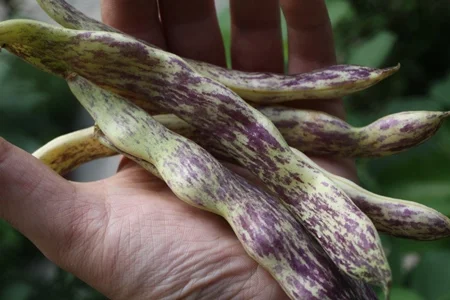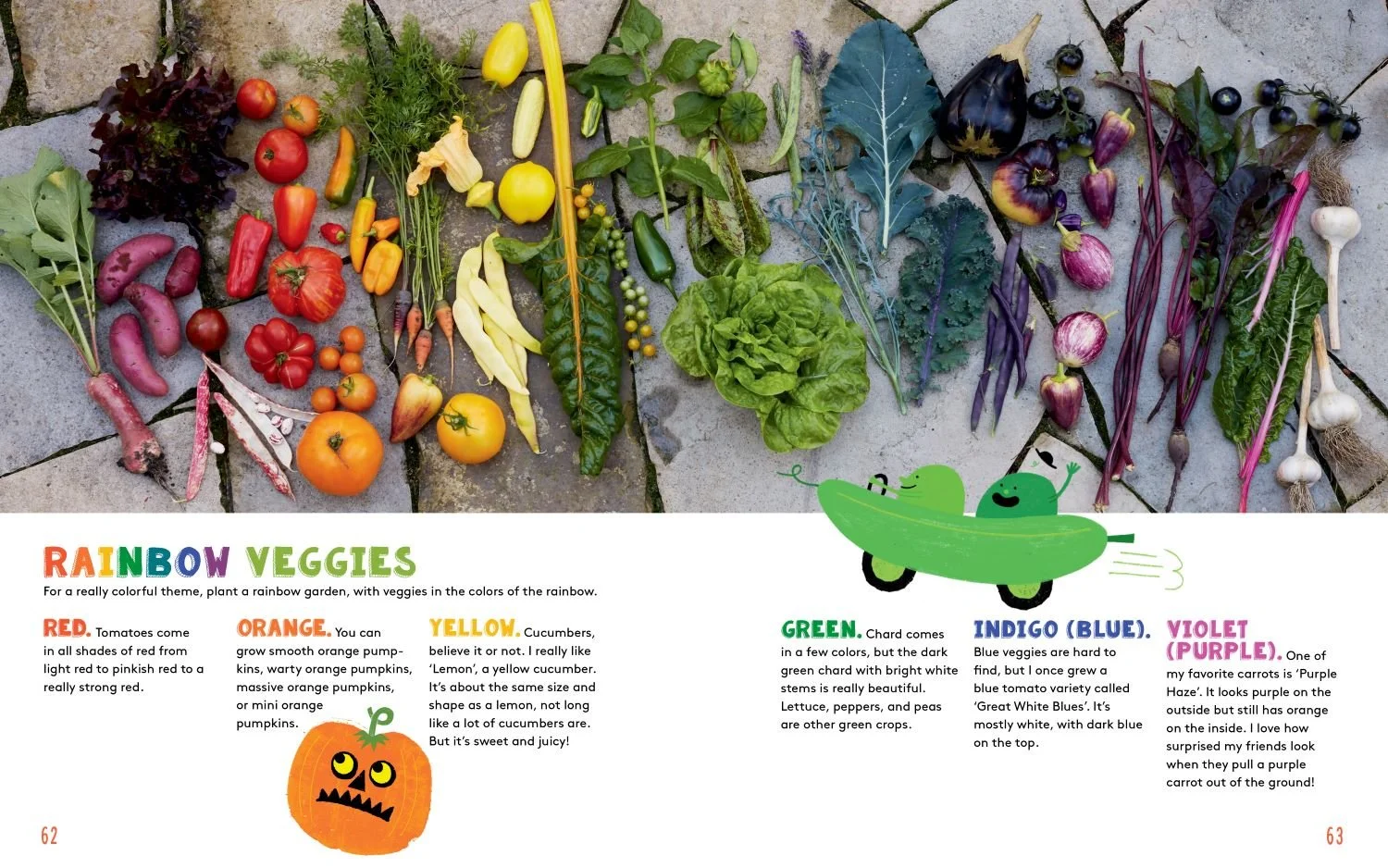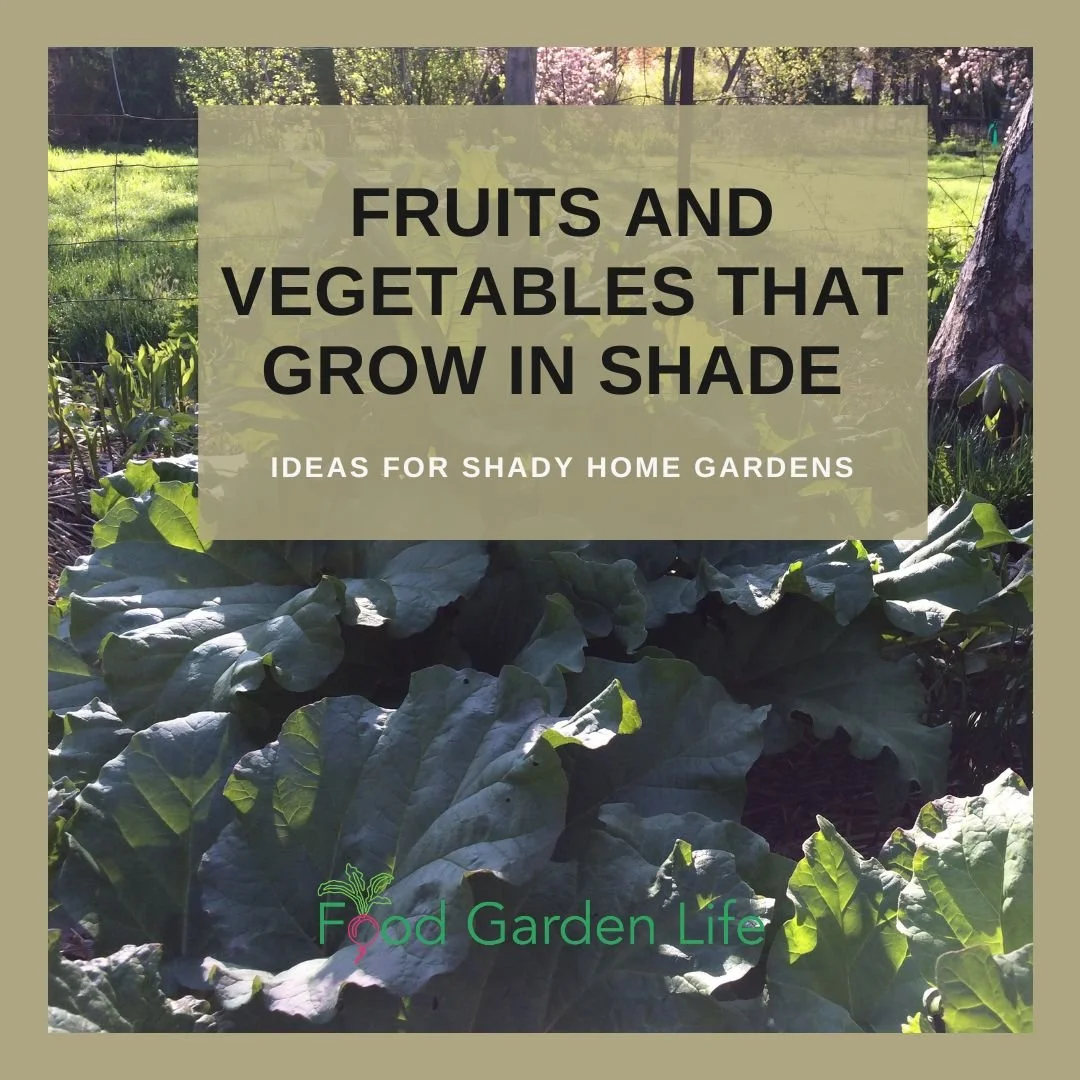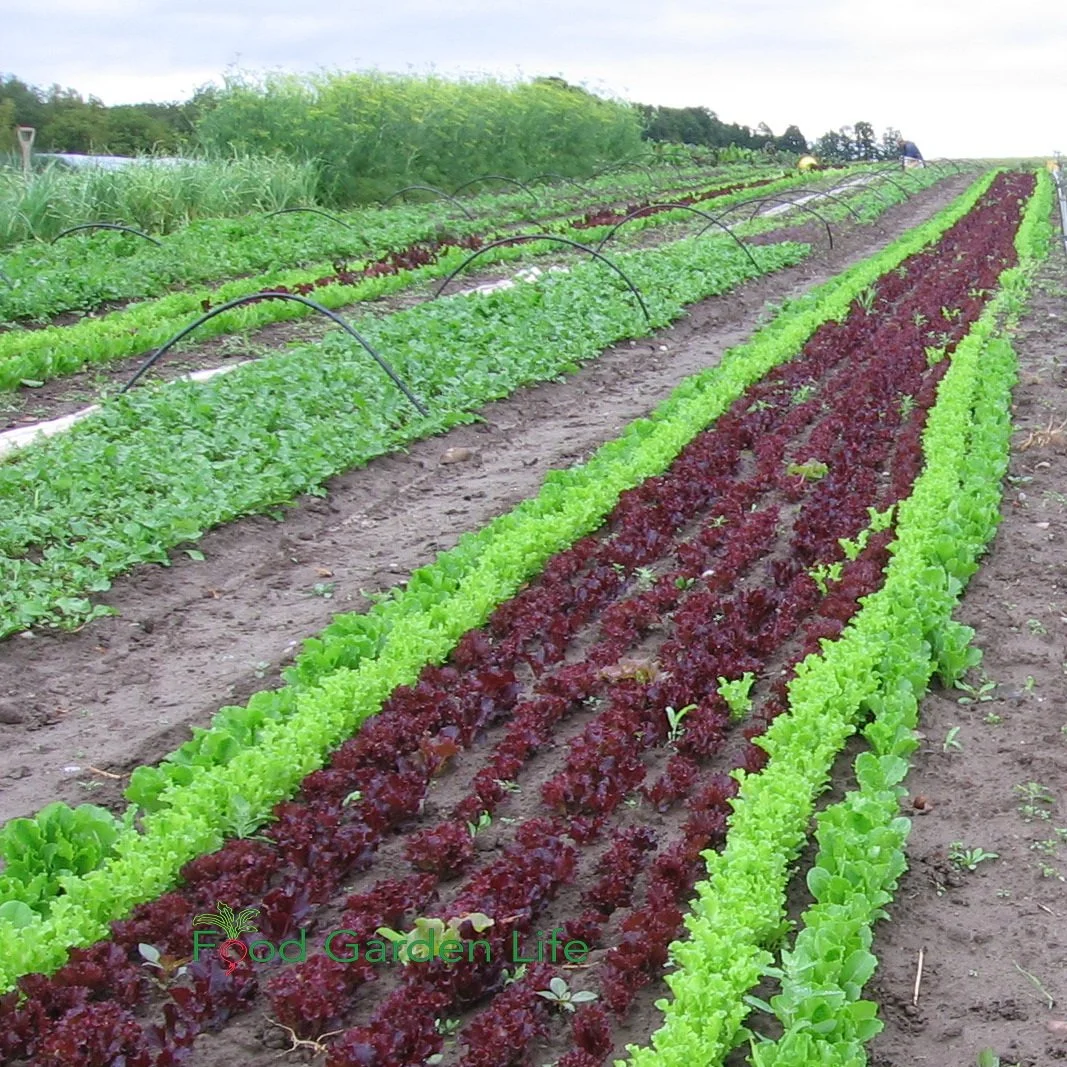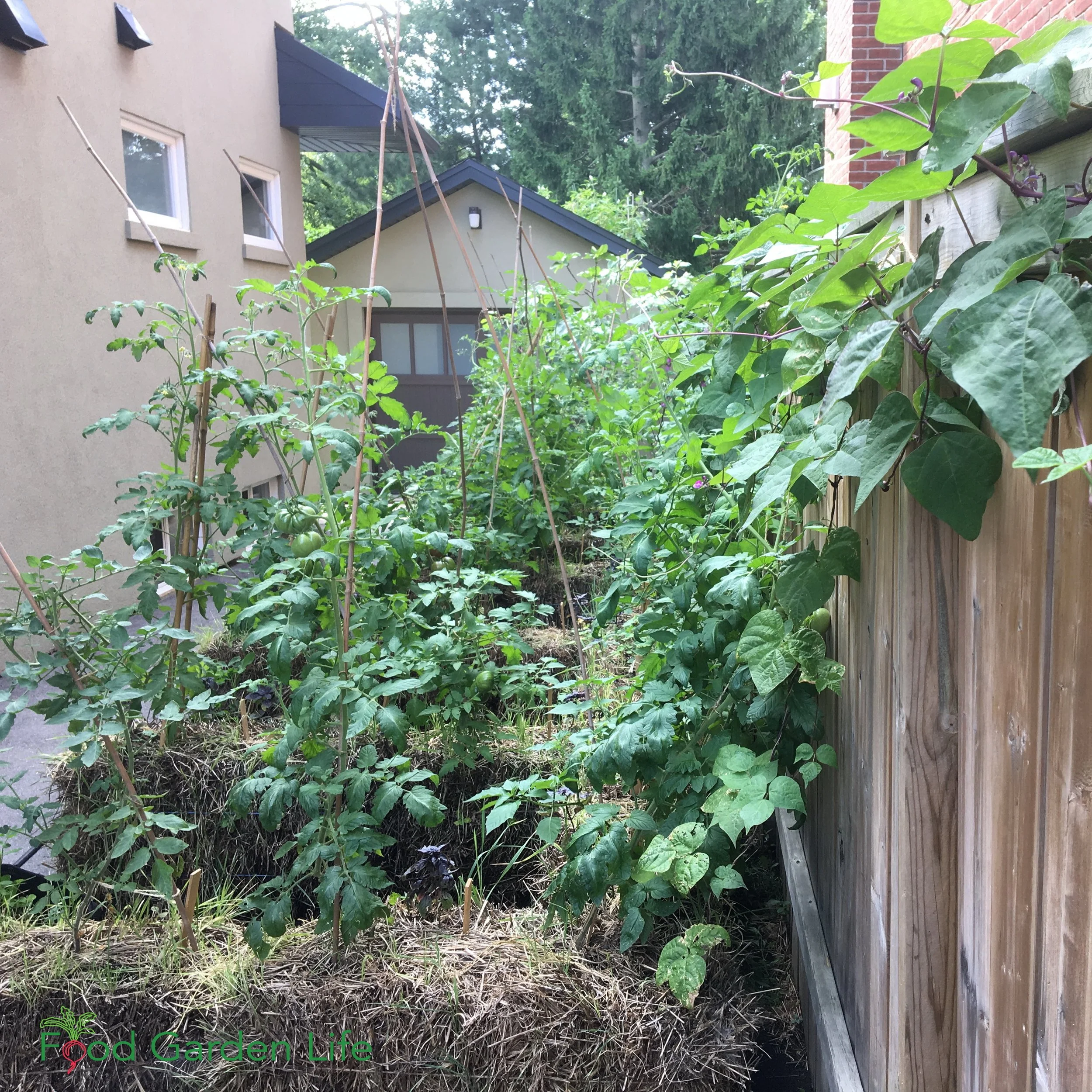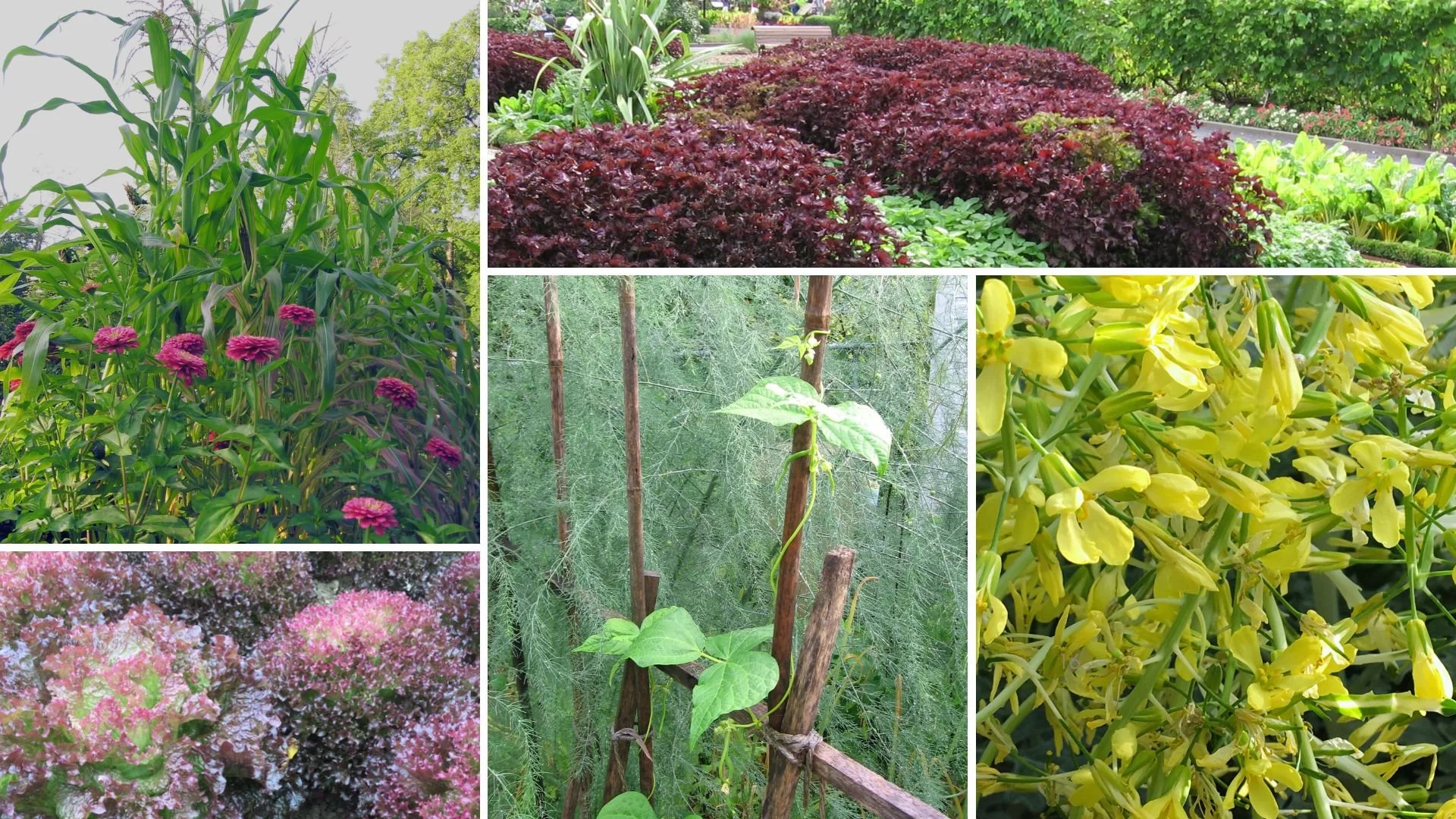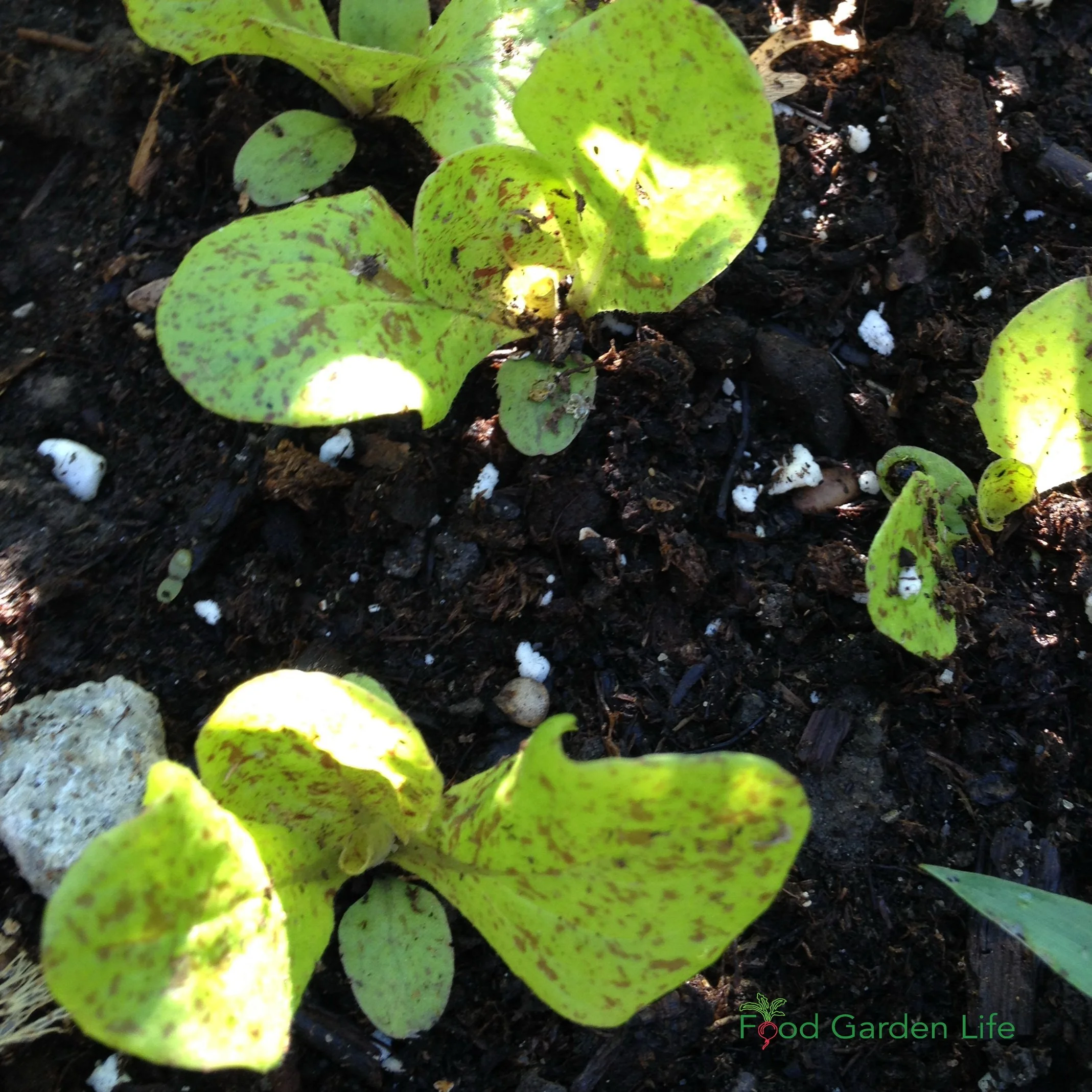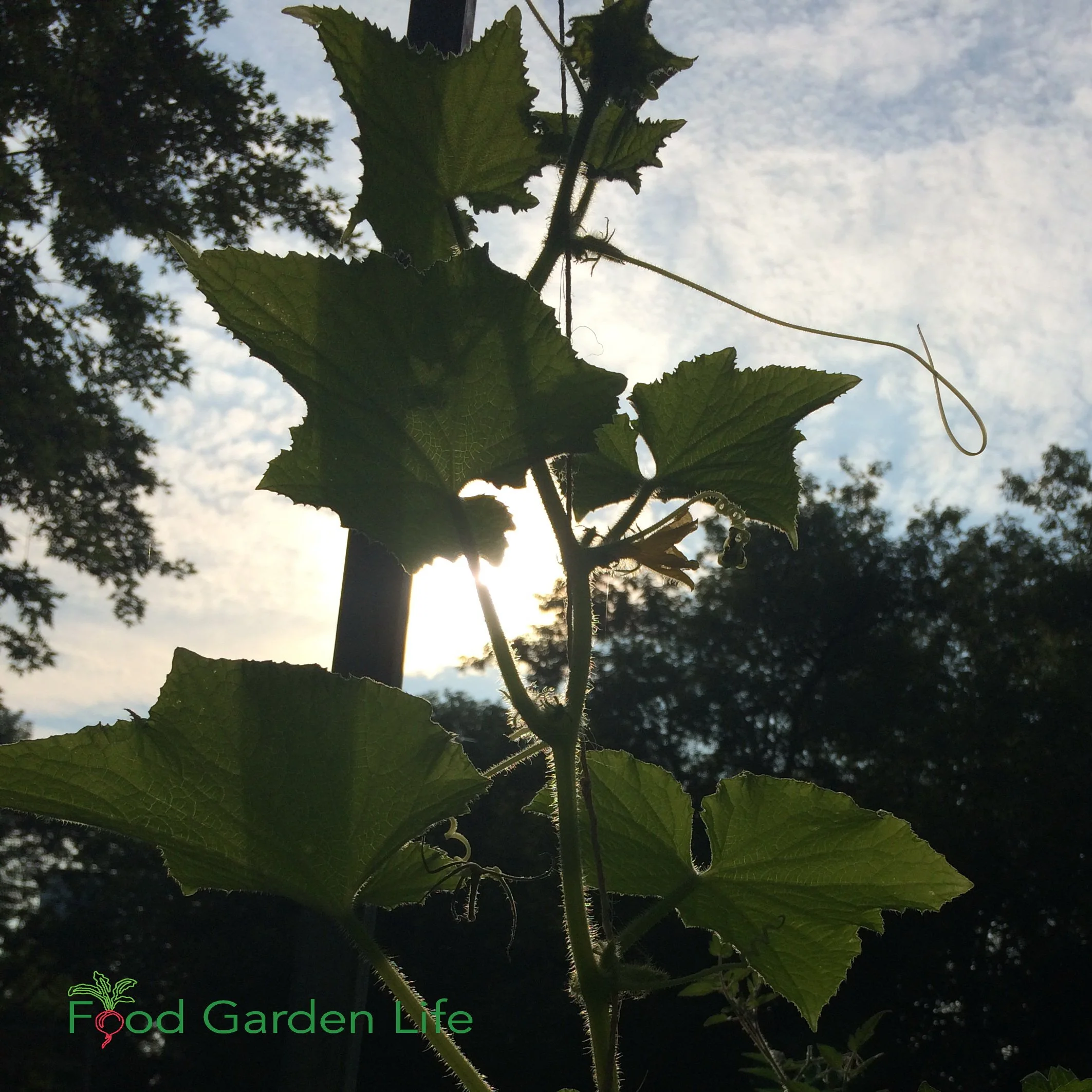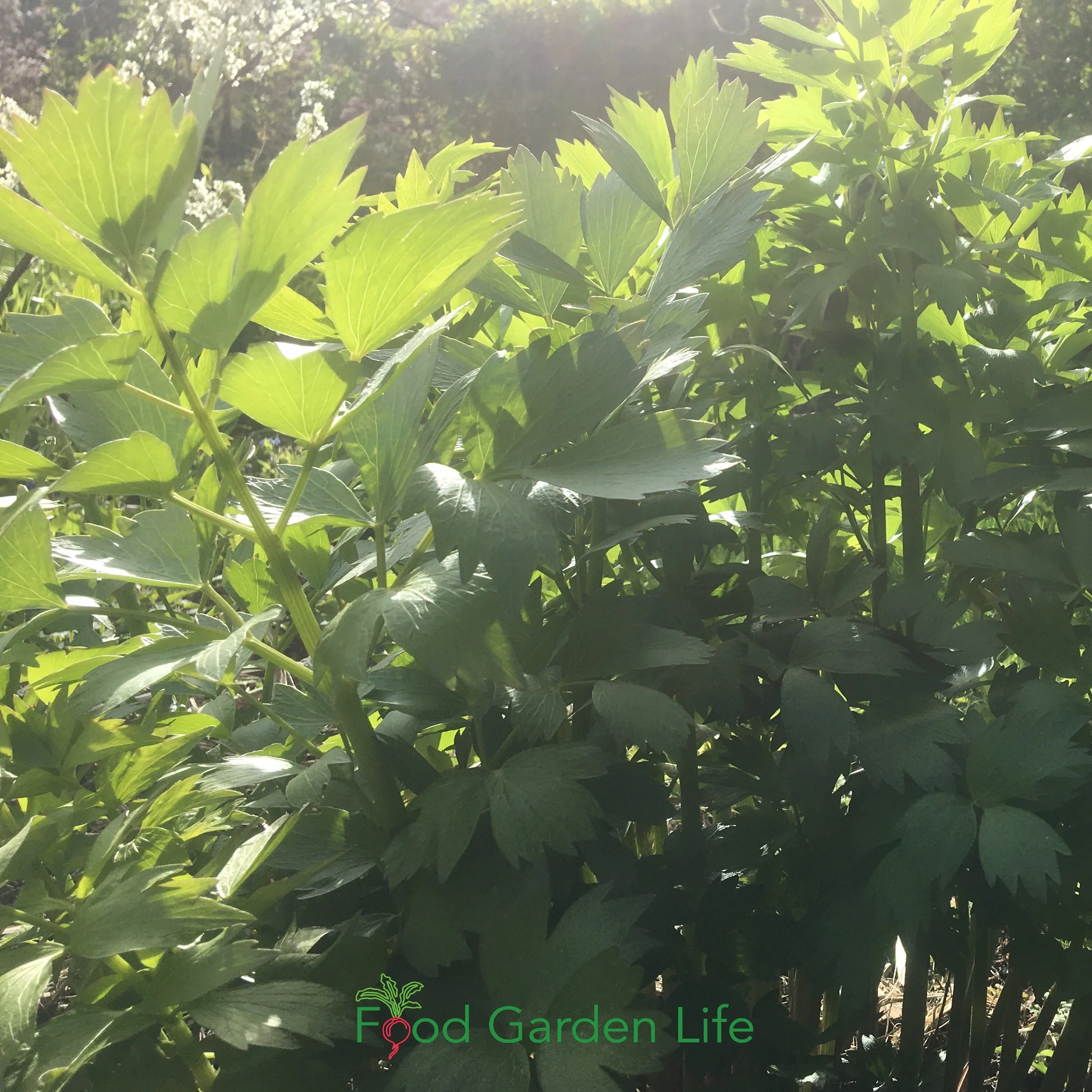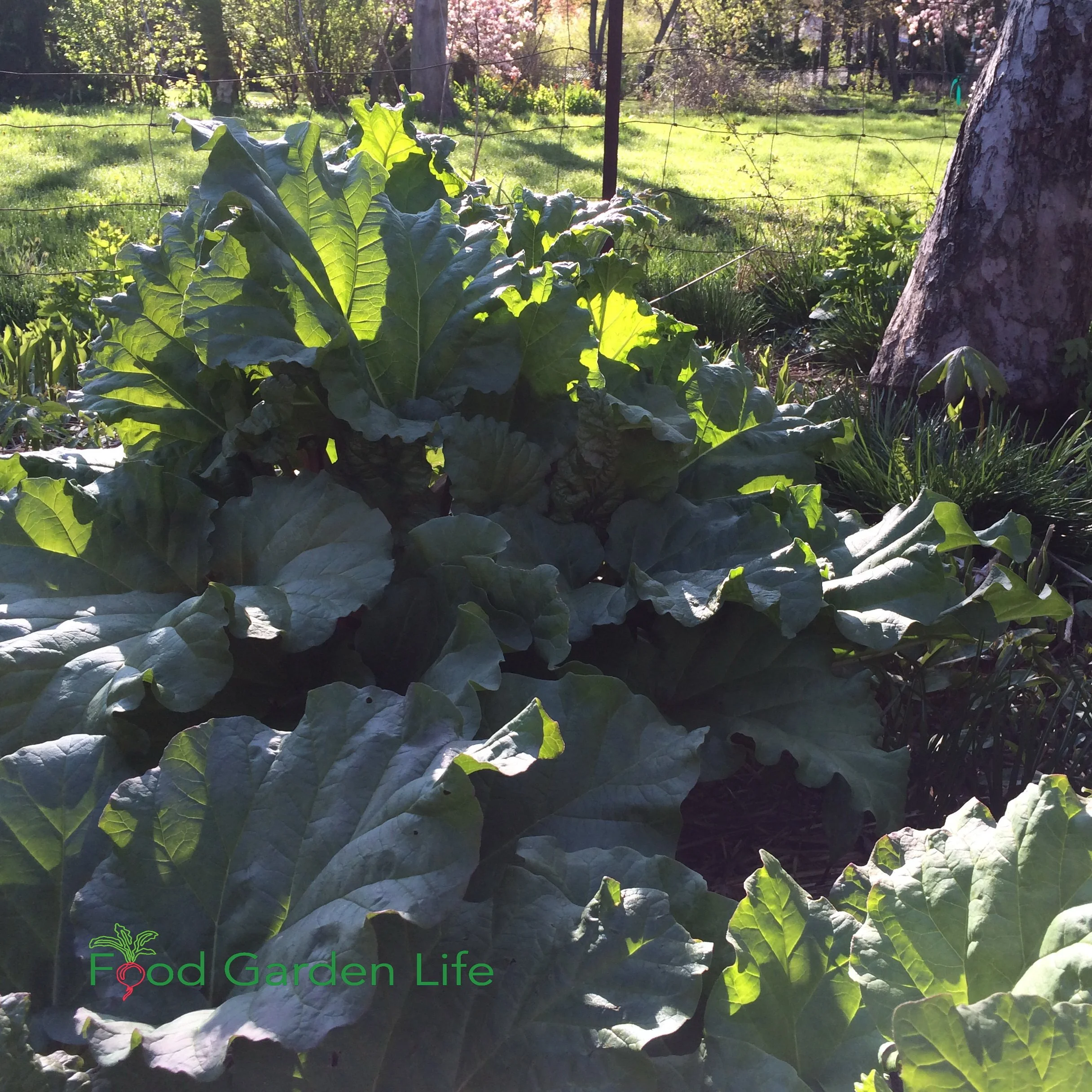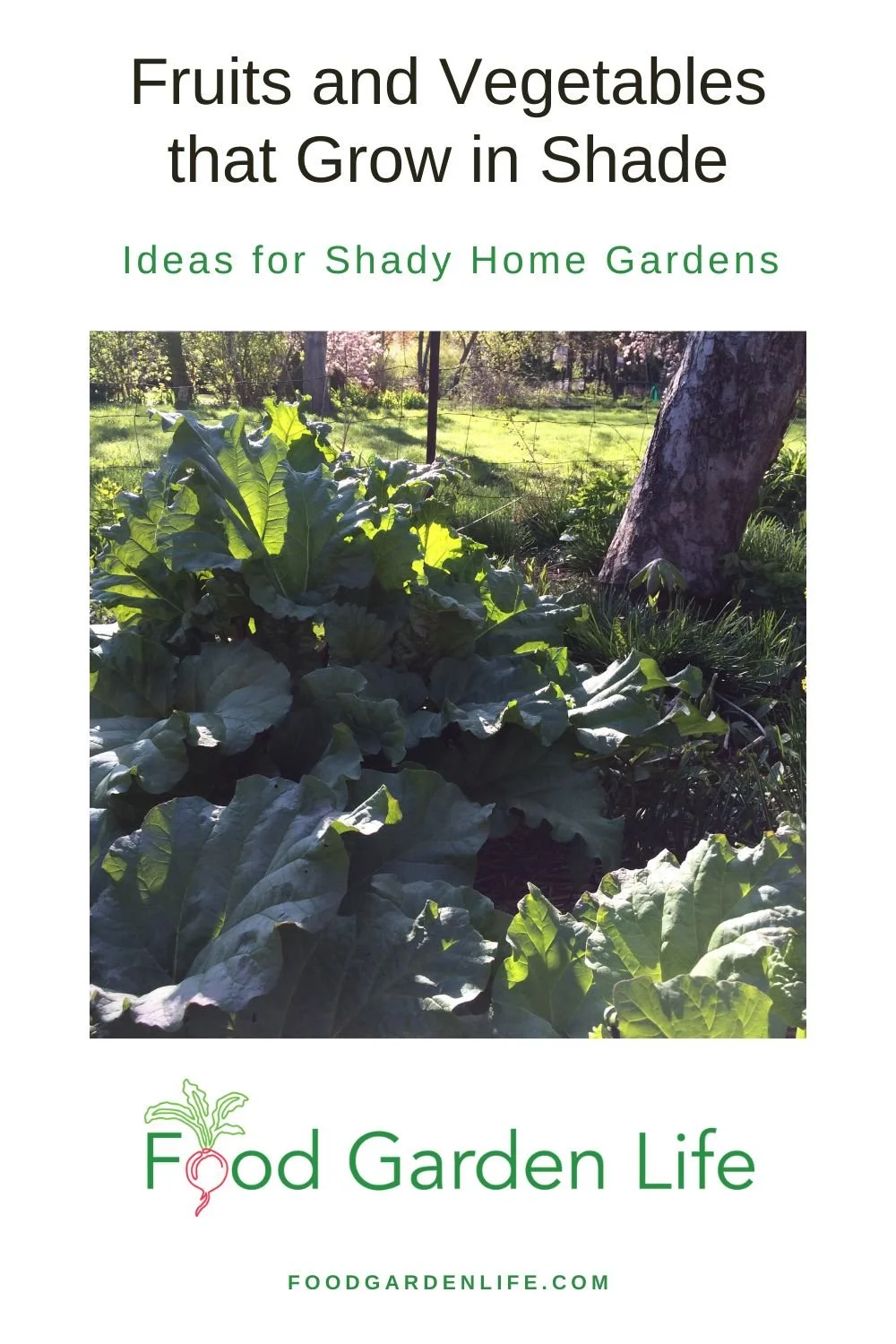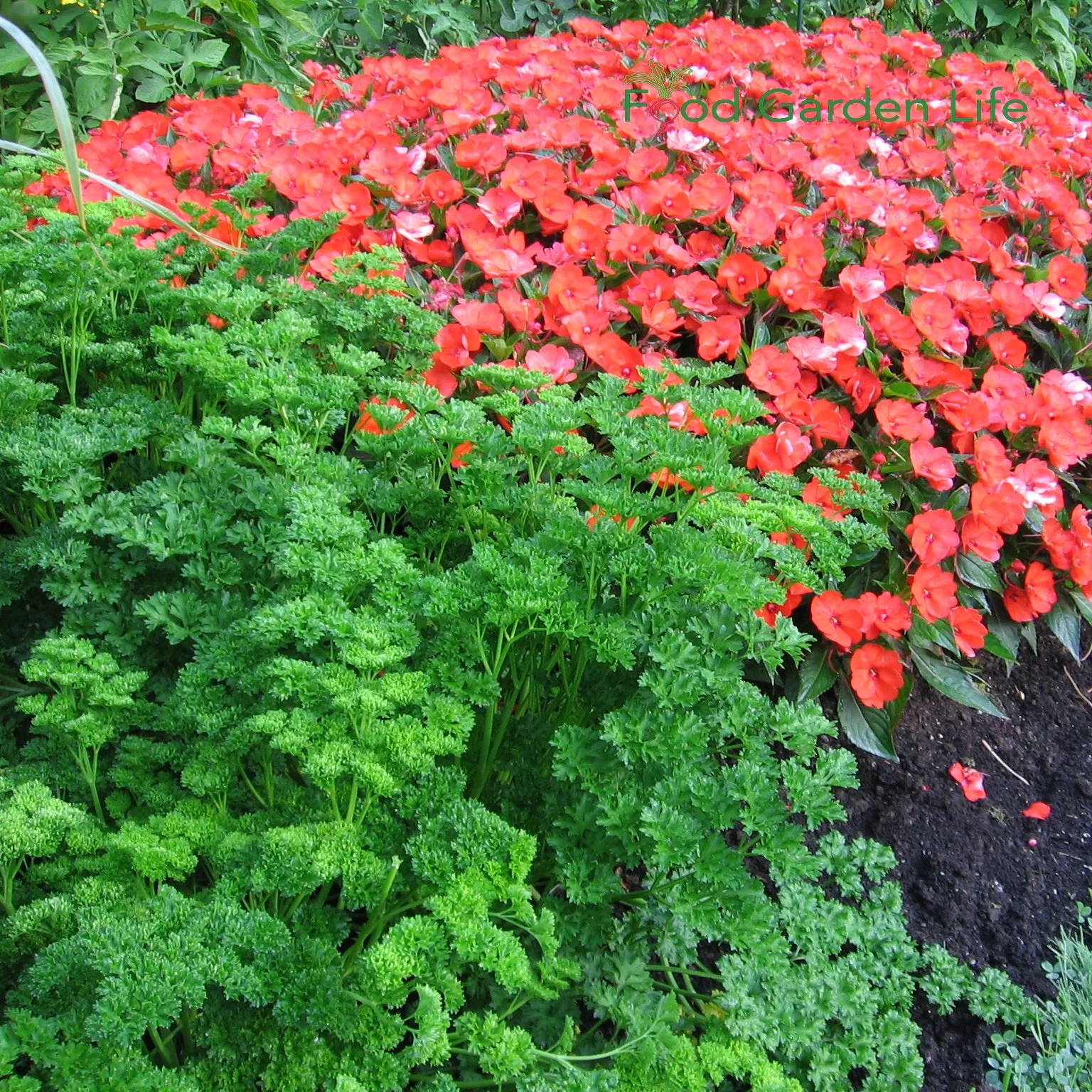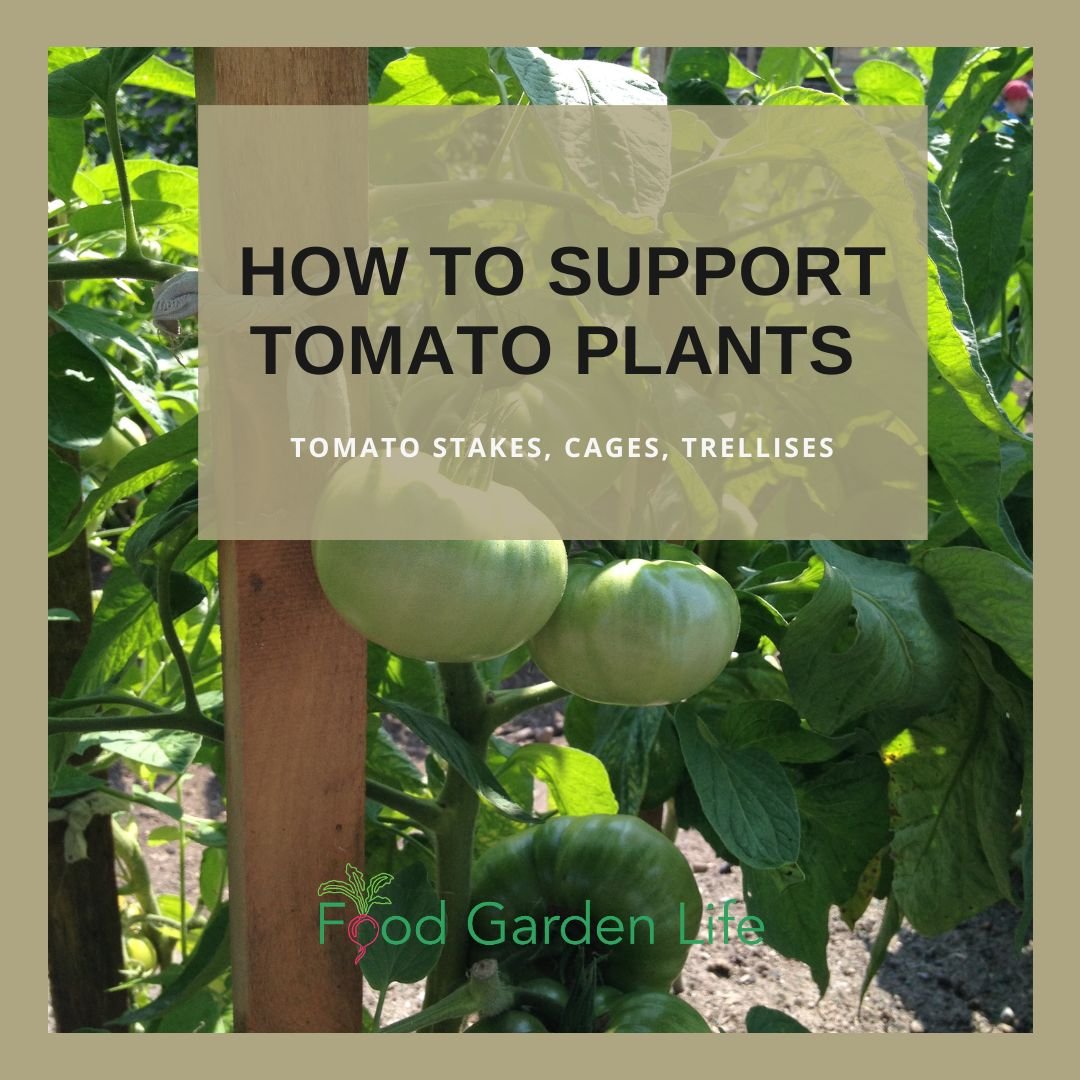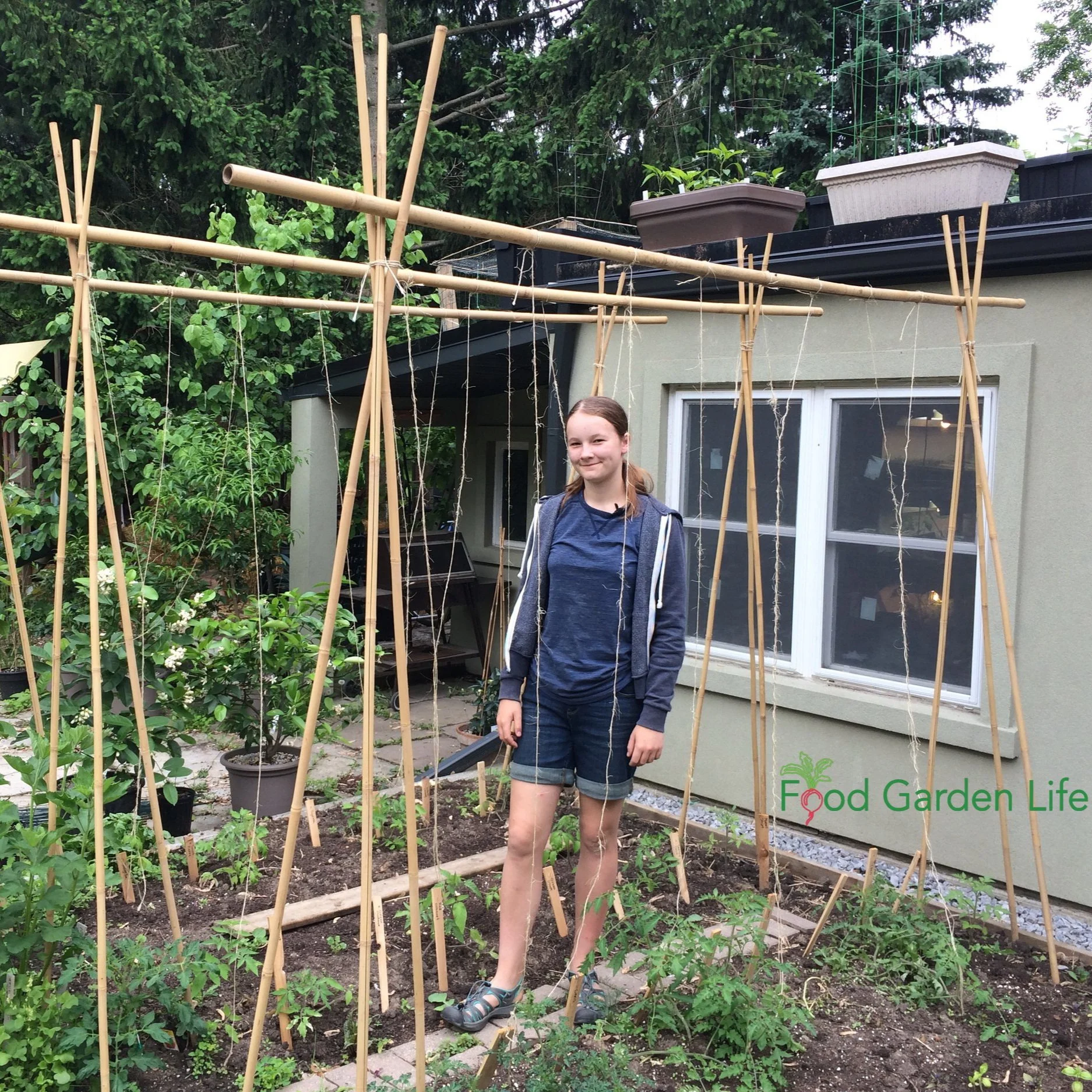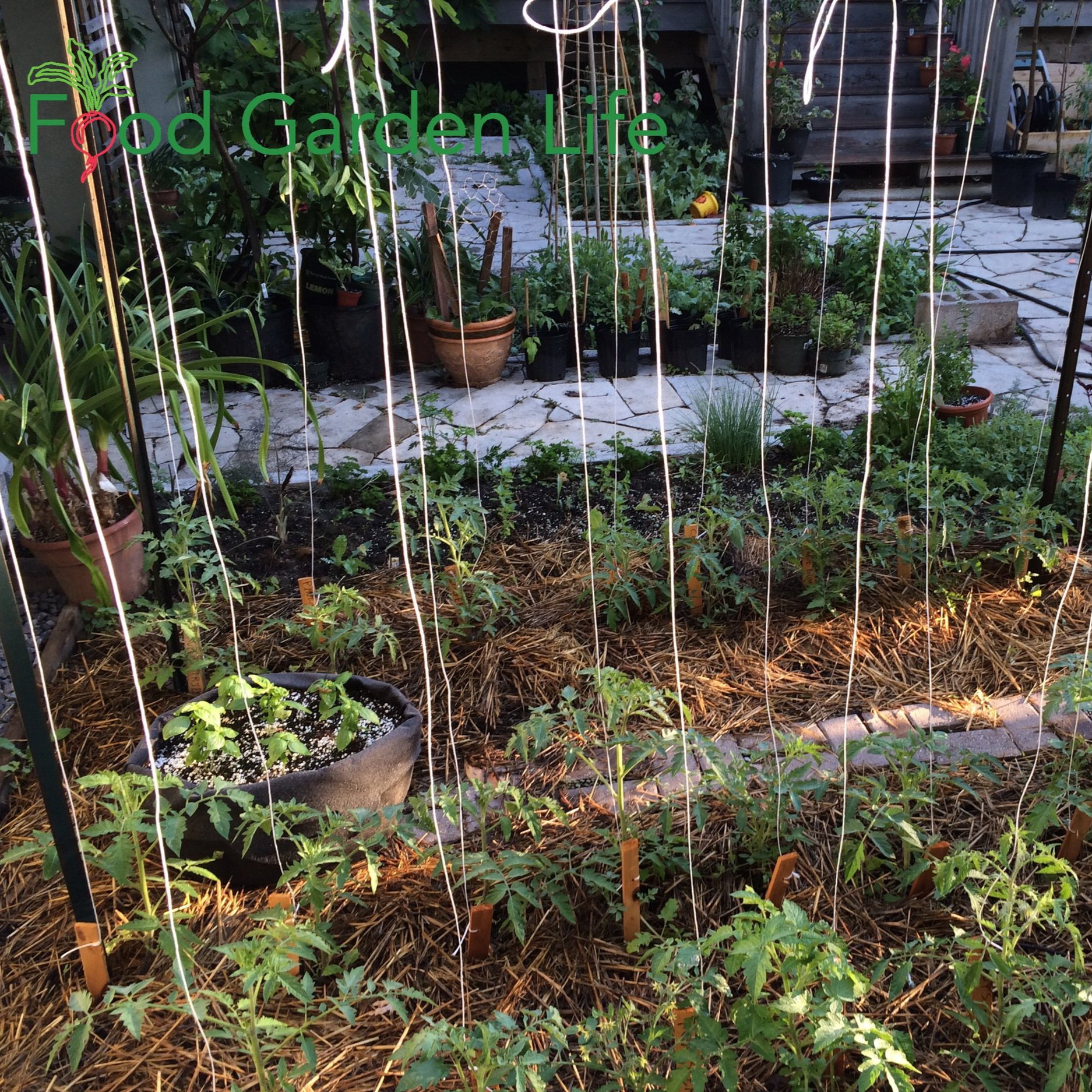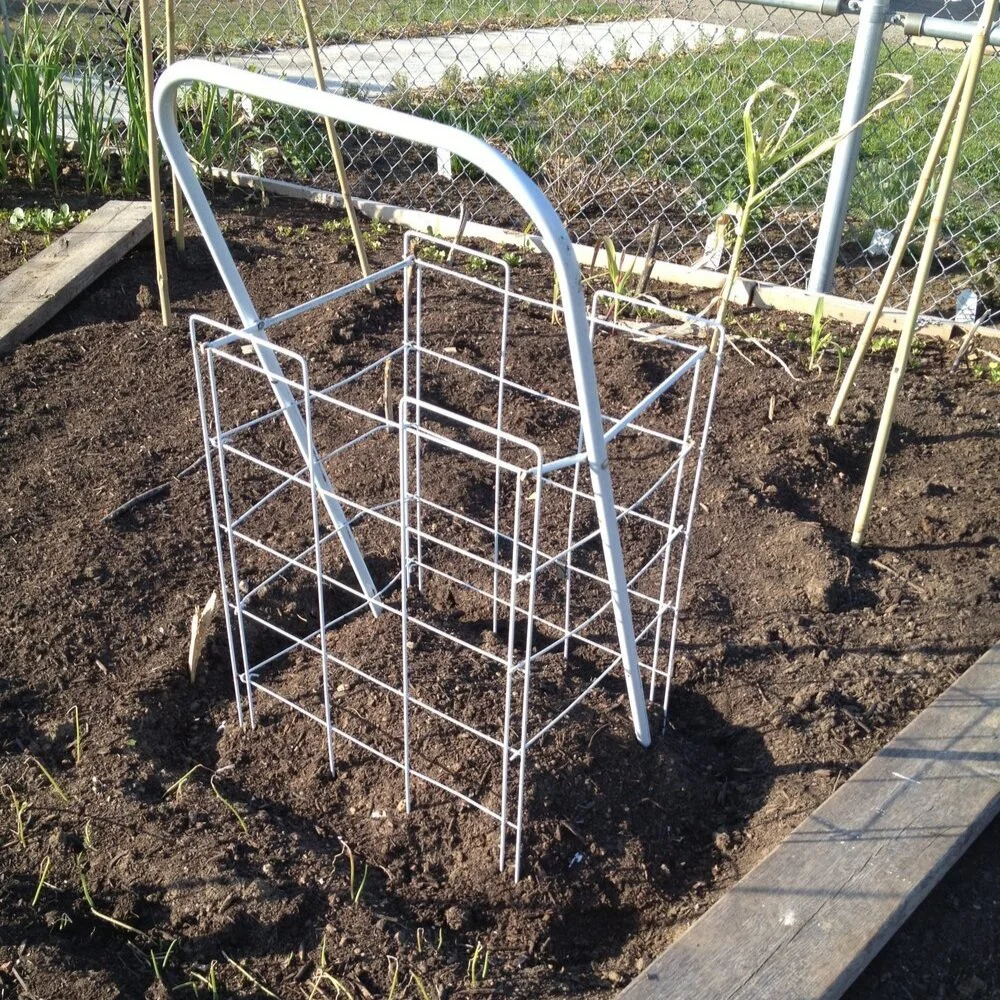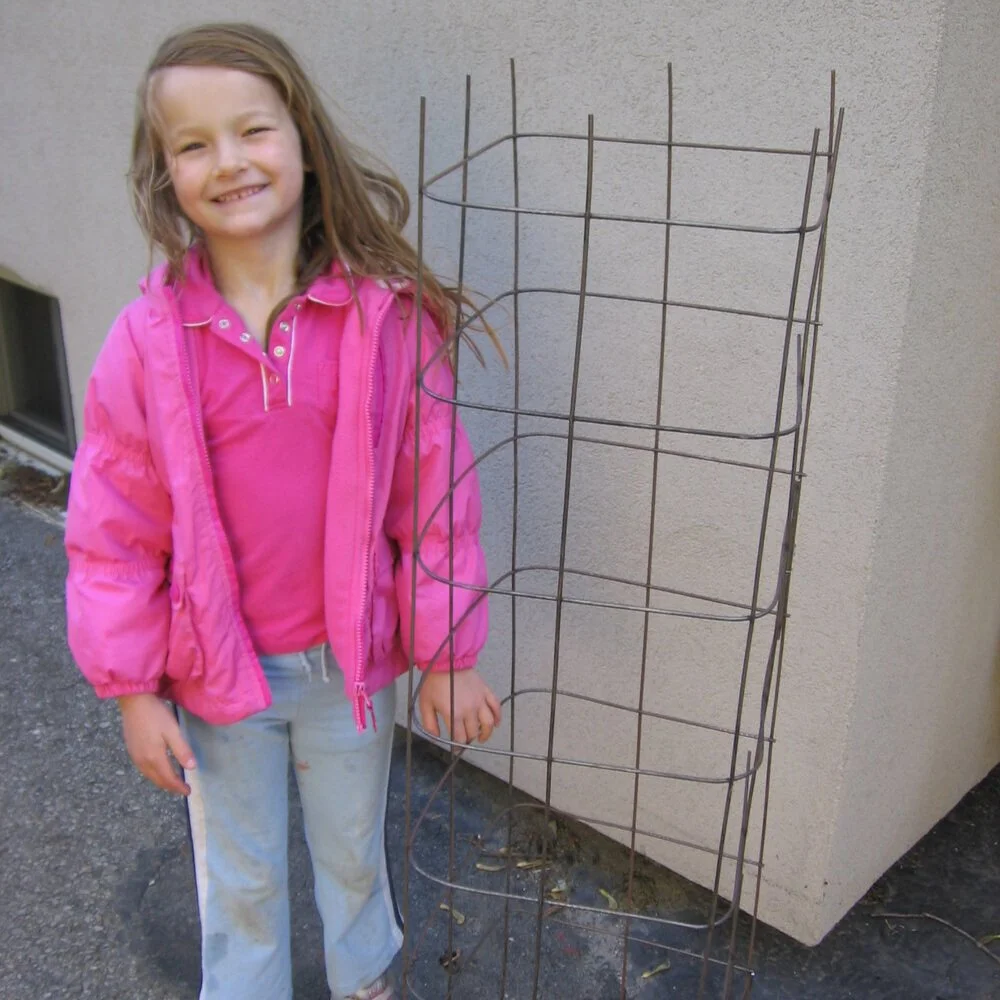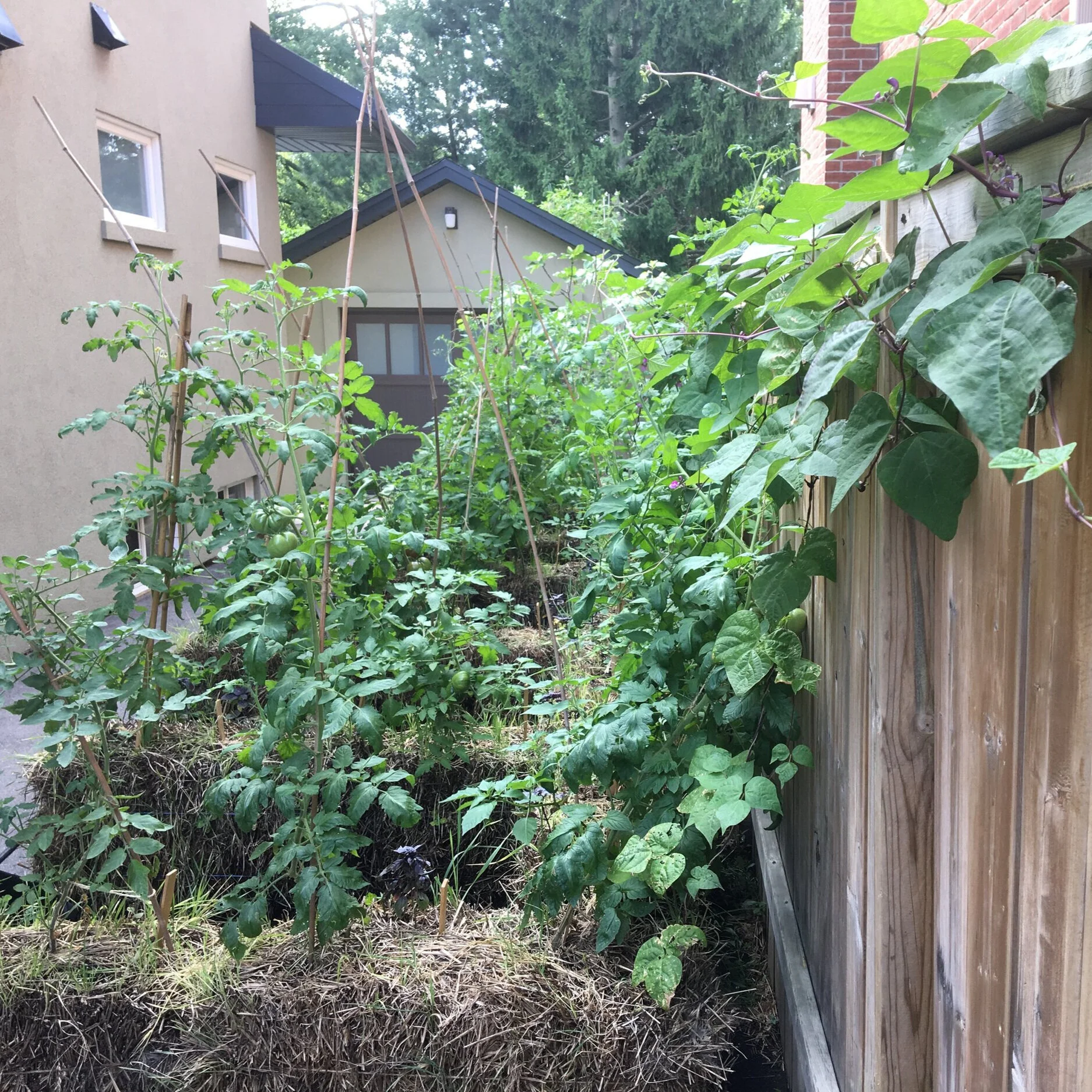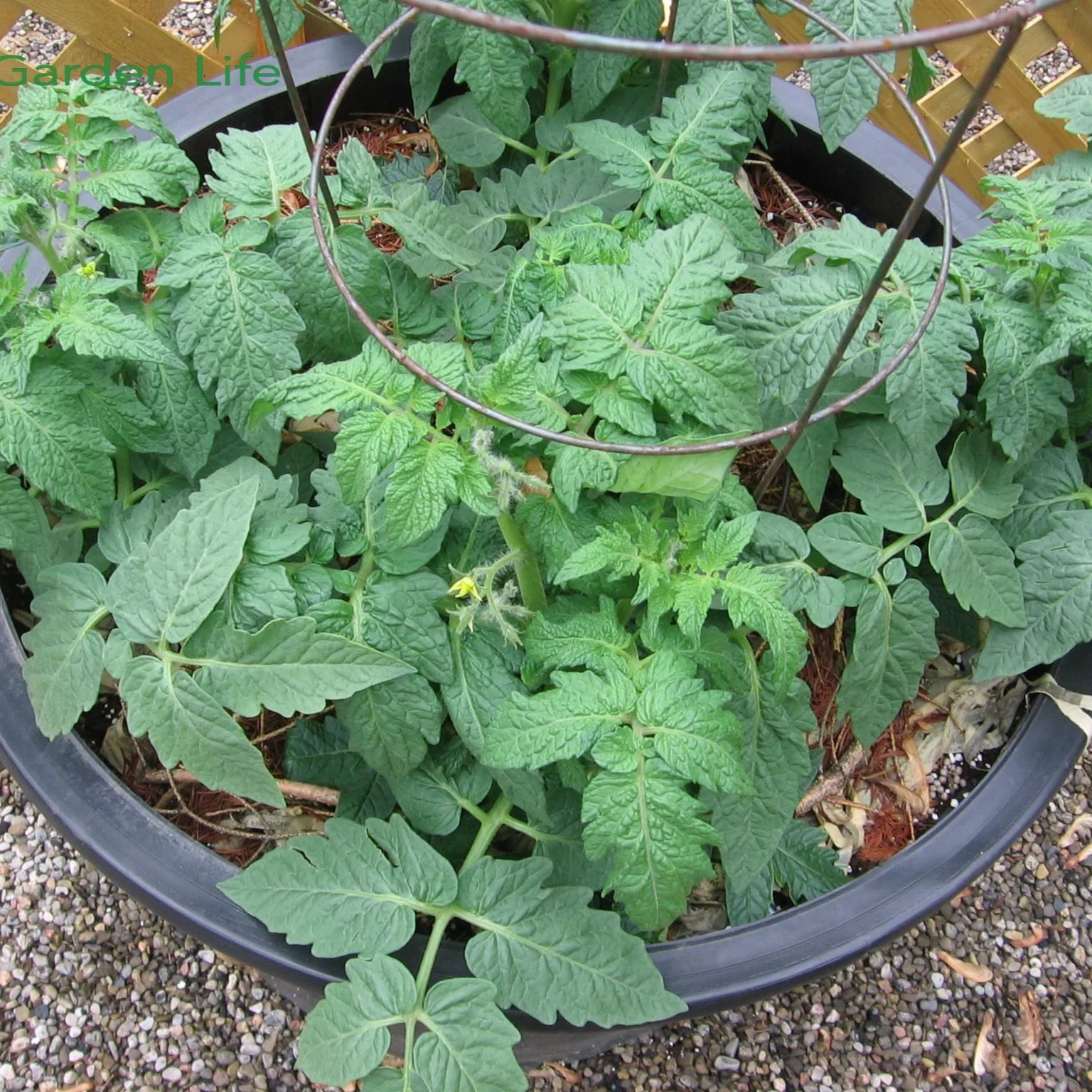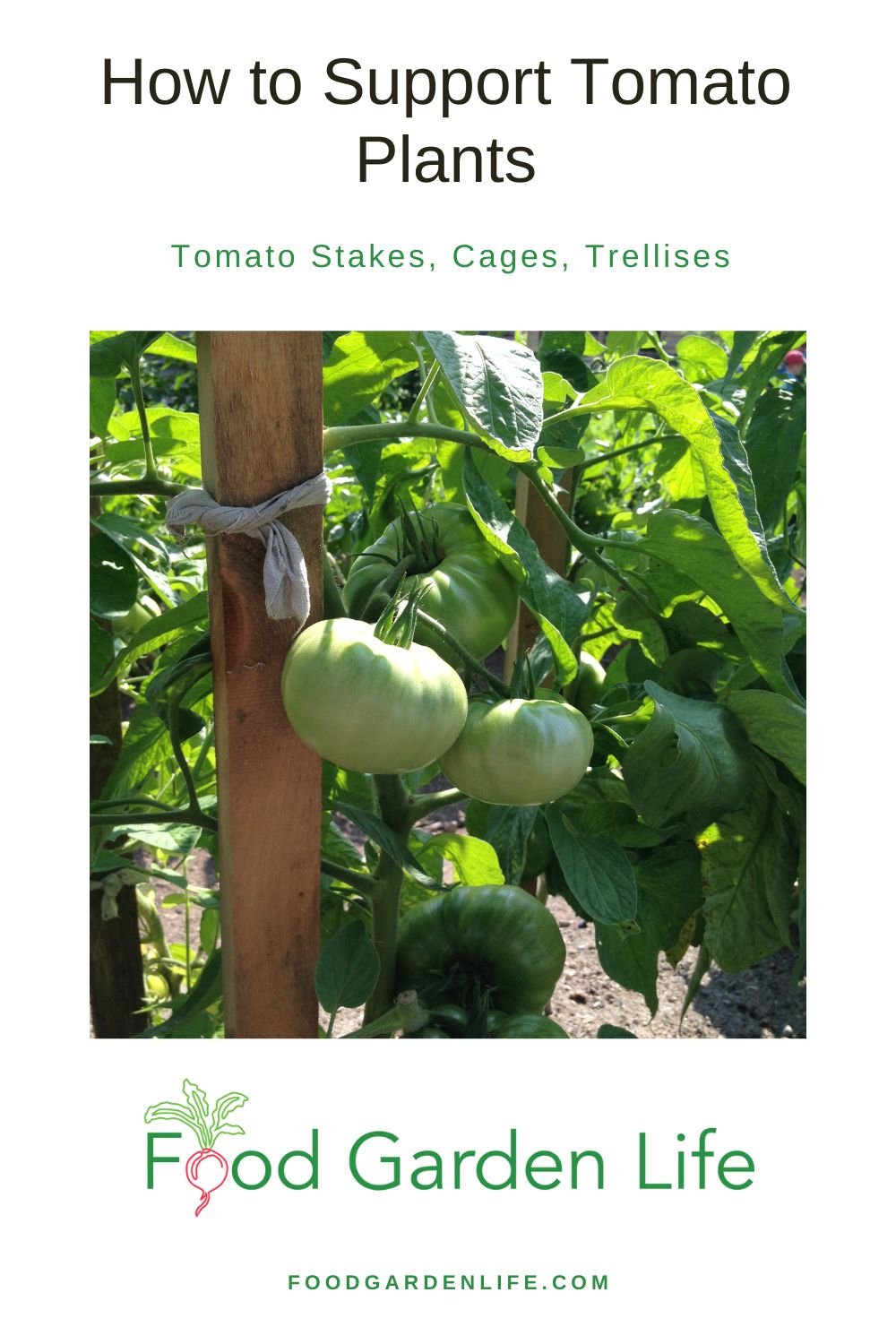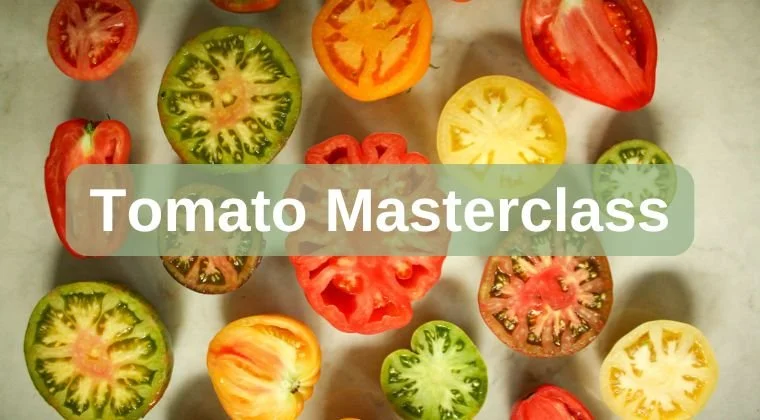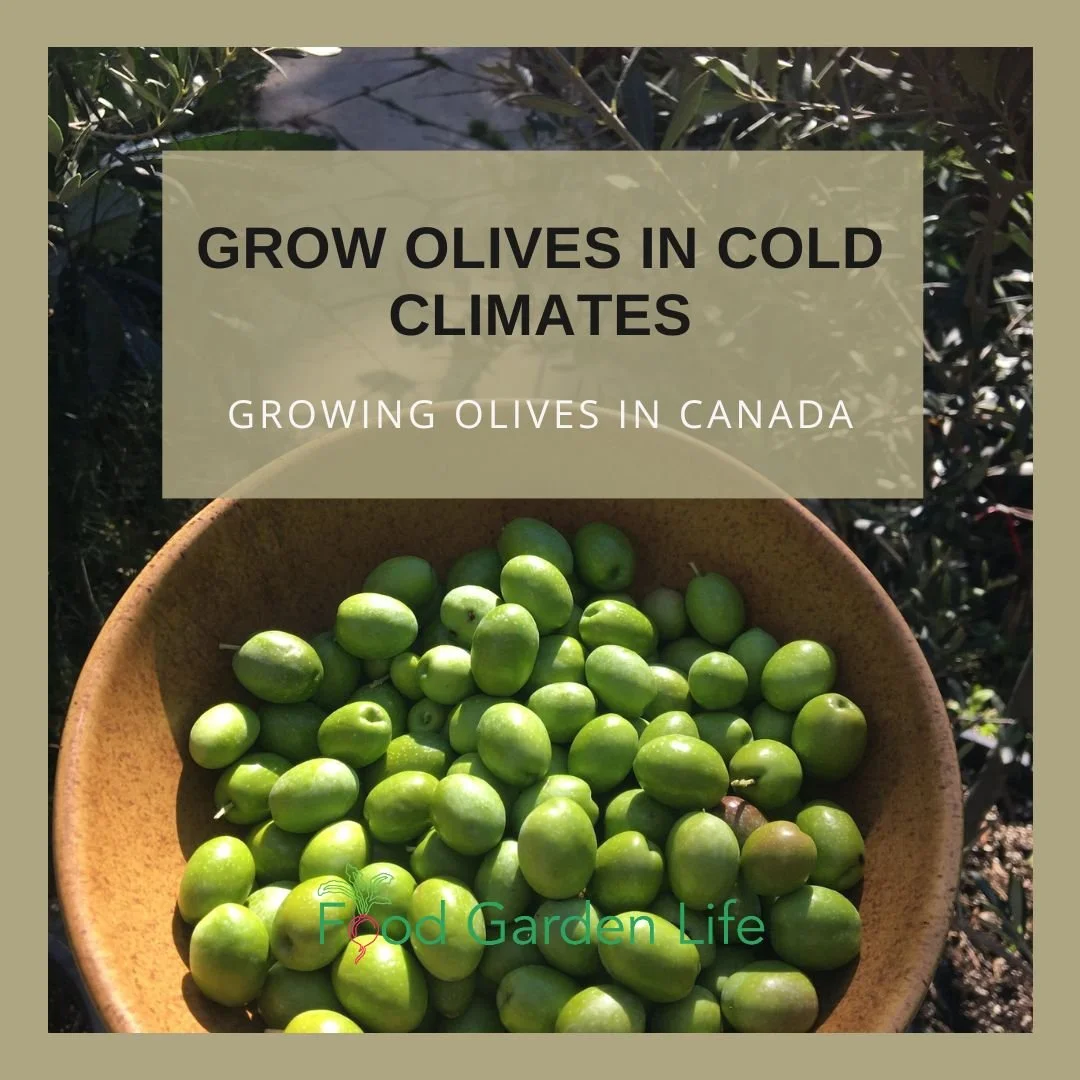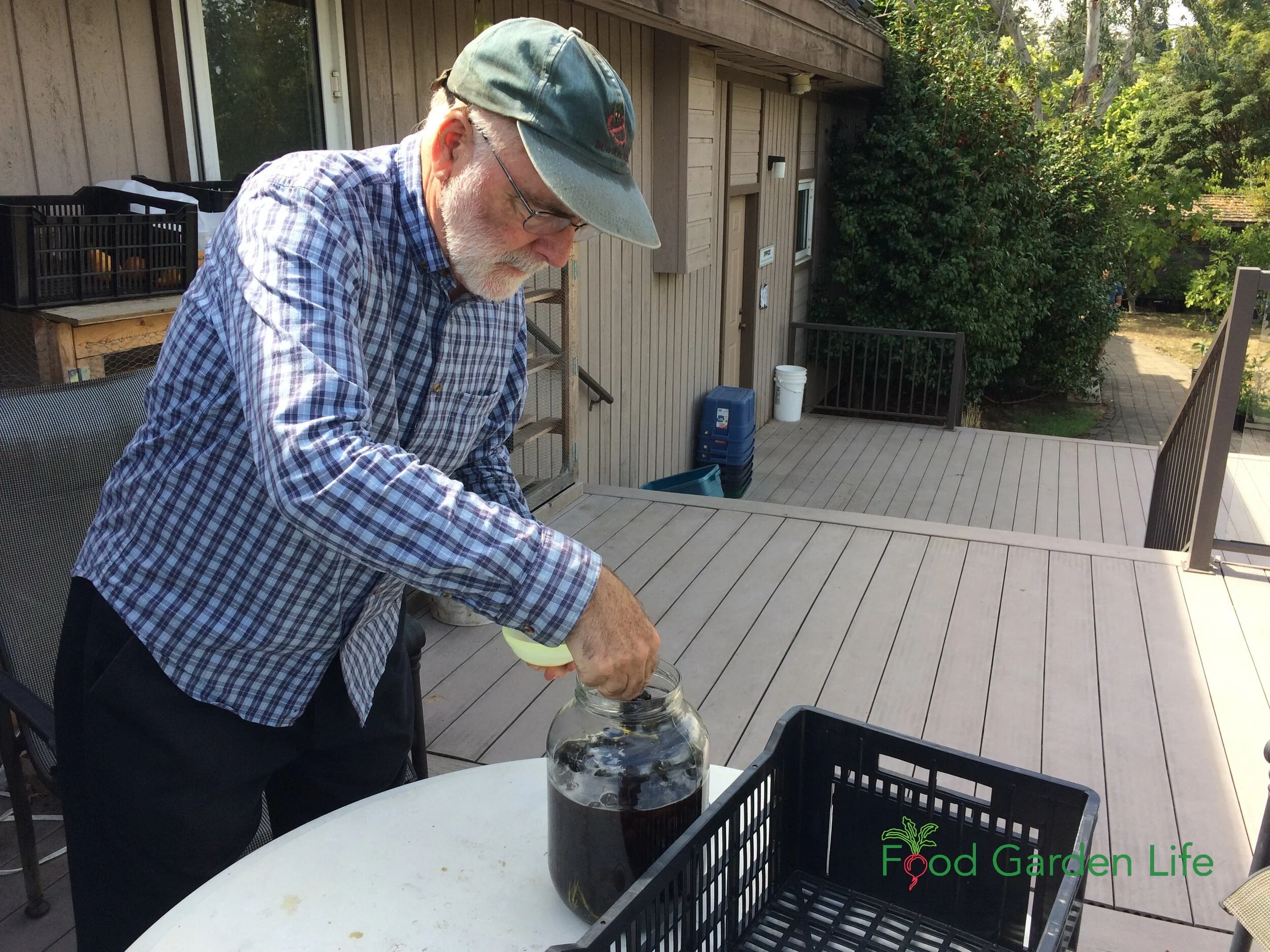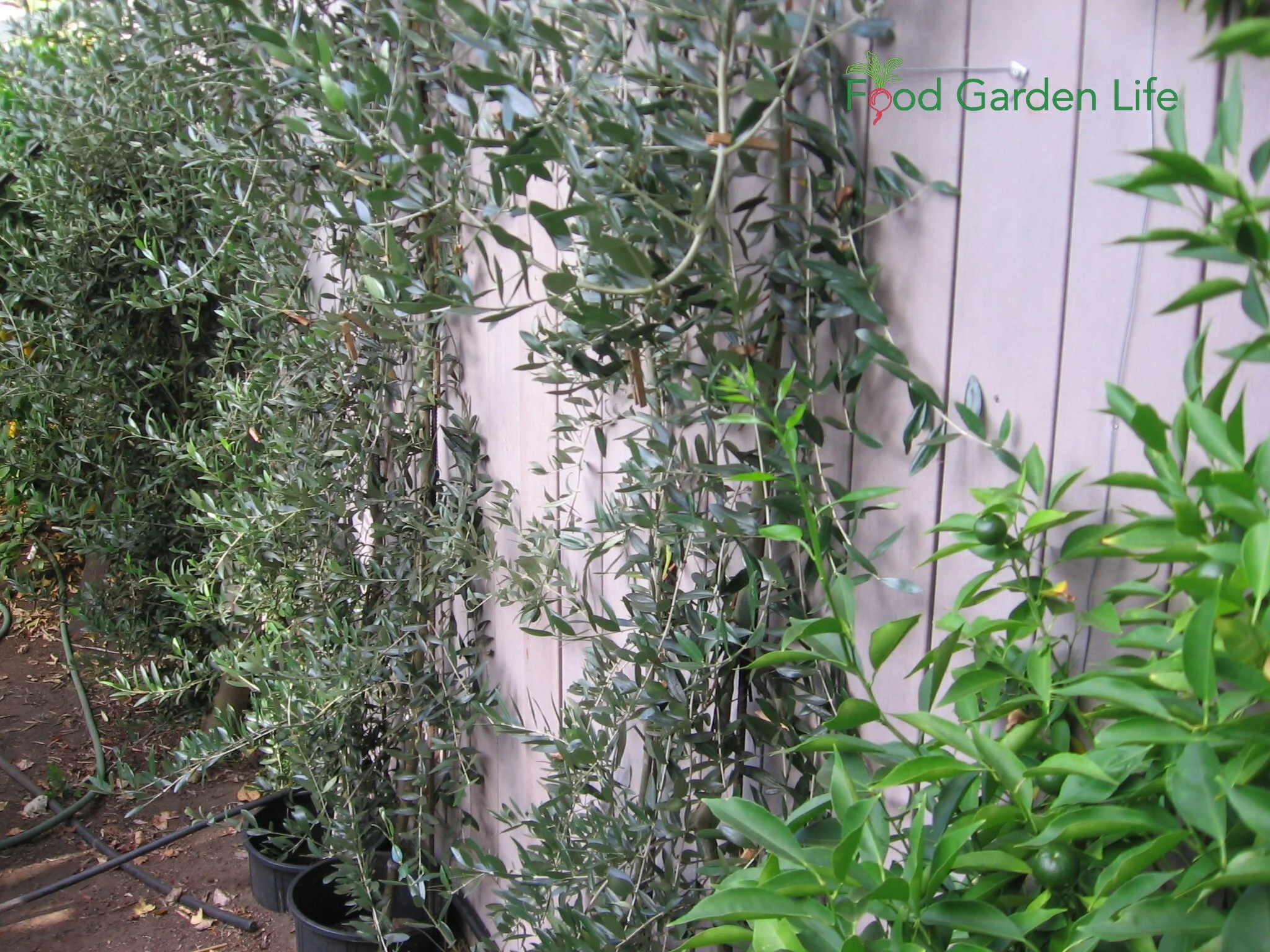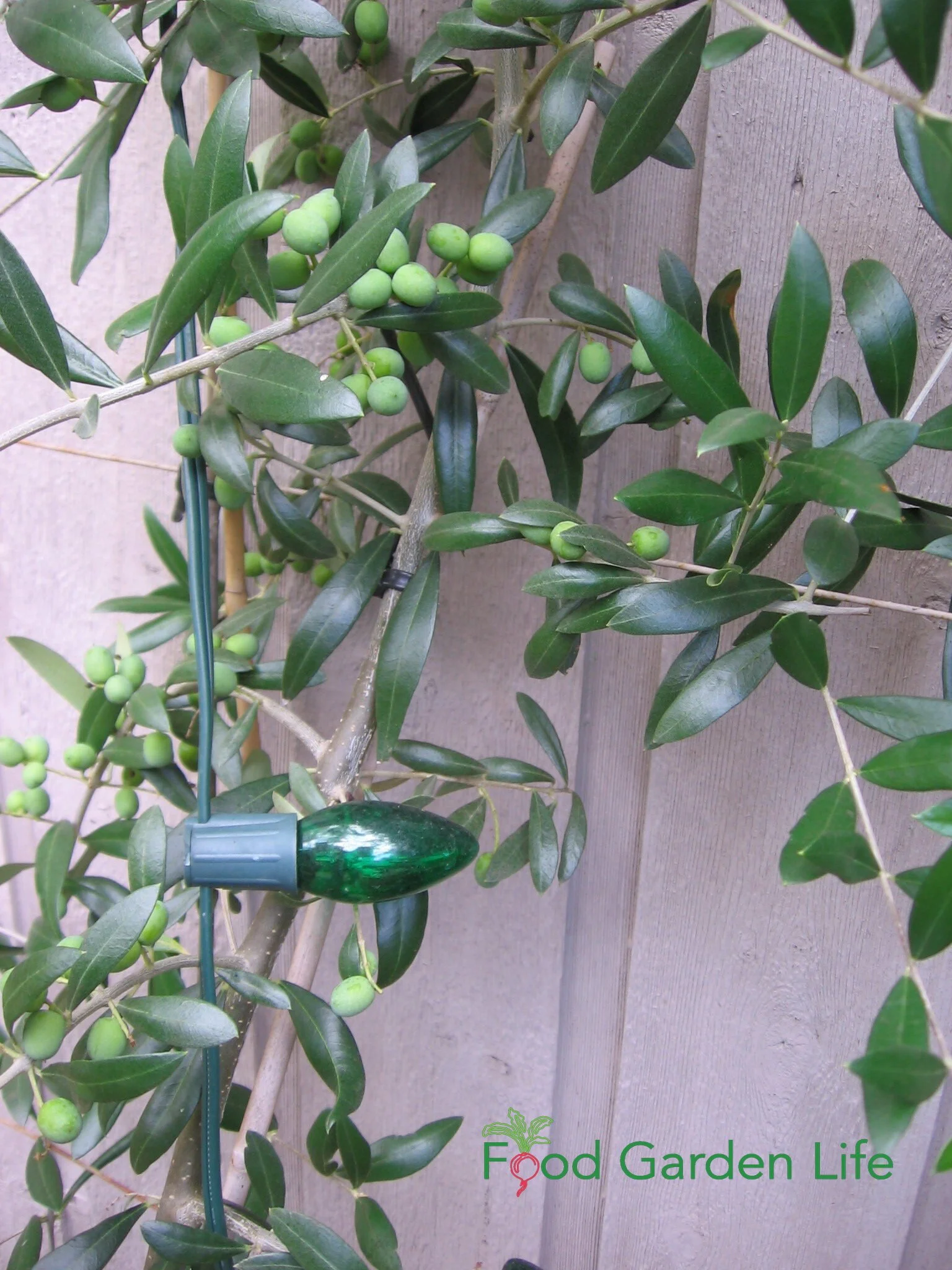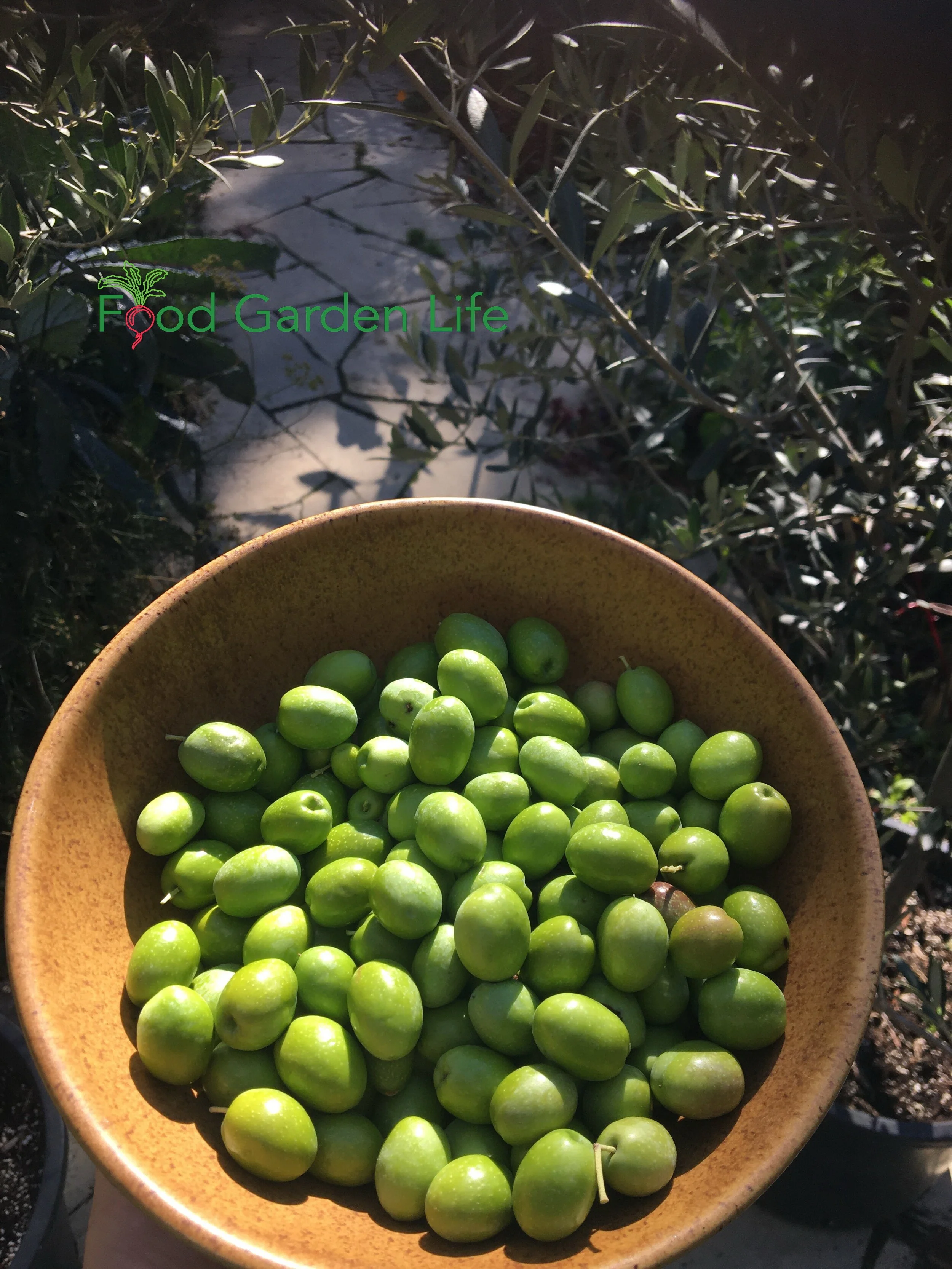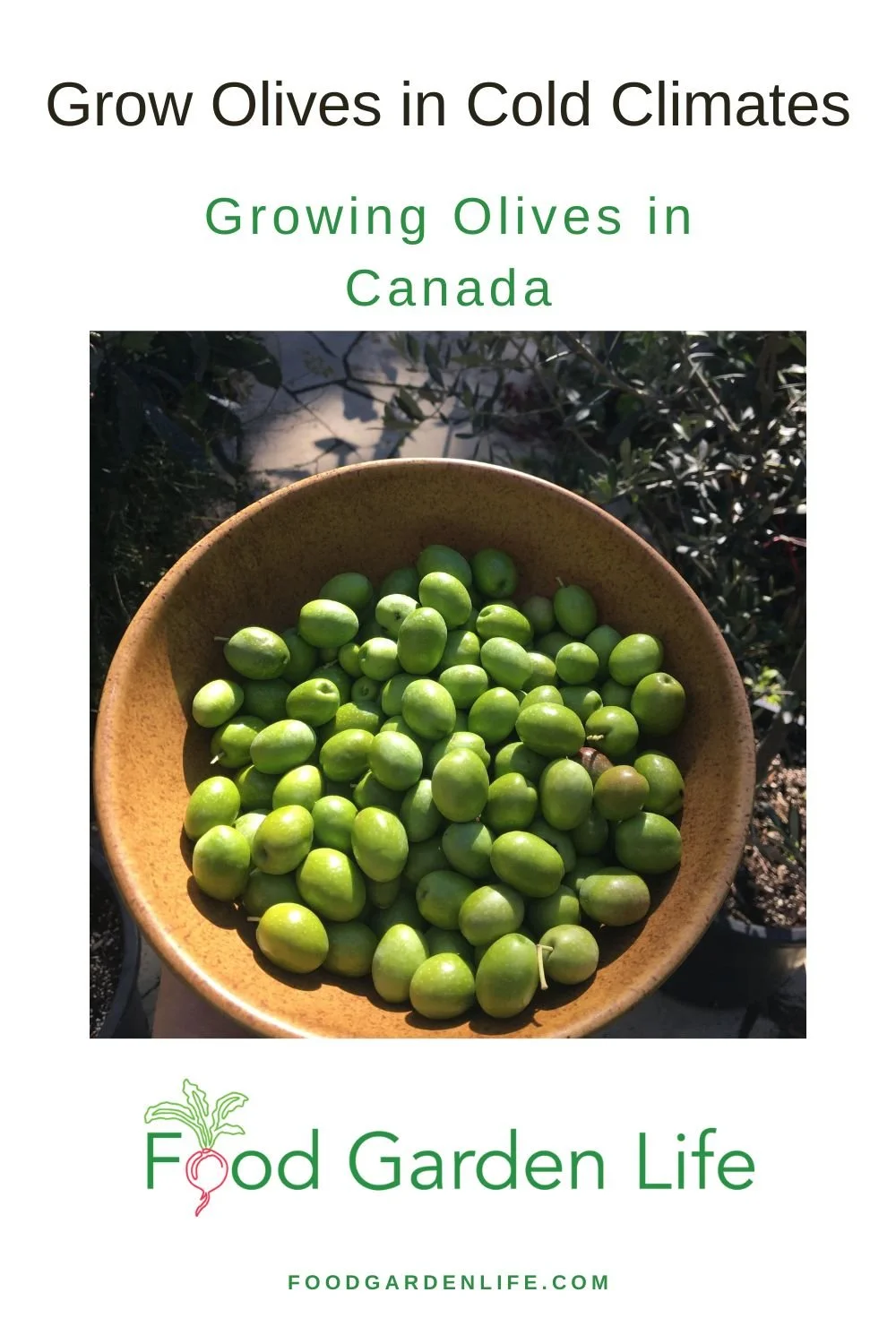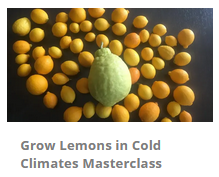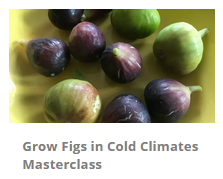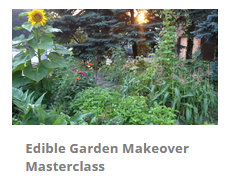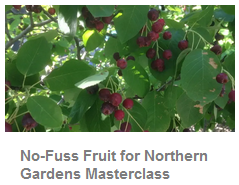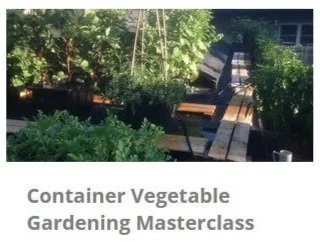
Kohlrabi Made Easy: Grow This Weird Little Veggie in Cold Climates
How to grow kohlrabi.
By Steven Biggs
Growing Kohlrabi in Home Gardens
THREE CHEERS for one of the most photogenic veggies out there.
To my kids, kohlrabi looked like flying saucers. When I look at kohlrabi from the right angle I see a person having a bad hair day.
Whatever your imagination paints it as, it’s both attractive and unusual, making it a nice fit for an ornamental edible garden.
It’s also easy to grow, quick to mature, and versatile in the kitchen.
If you haven’t tasted it before, I’d describe the flavour as a cross between a mild apple and mild turnip. Let’s call it turnip light!
In this post I’ll talk about how to grow kohlrabi and how to fit it into your garden.
It Starts as a Rosette
Kohlrabi is a member of the cabbage clan. It has an edible stem that fattens up right above the soil level. Before the stem plumps up, though, the plant is a rosette of leaves. As the stem thickens, the symmetry of that rosette remains, with leaves projecting out from the bulb-like stem.
Top Tip for Kohlrabi Success
Here’s the key to your kohlrabi success: Fast, uninterrupted growth.
To get that type of growth, grow it in well-fed soil, with cool temperatures and consistent moisture.
Site
Kohlrabi is an easy-to-grow vegetable that is versatile in the kitchen.
Like its cabbage cousins, kohlrabi grows best in soil with lots of organic matter
A spot with full sun is best (although I’ve had decent results growing kohlrabi in partial shade)
Grow Kohlrabi from Seed
Kohlrabi is easy to grow from seed, indoors or outdoors. I don’t usually bother starting them indoors in the spring, but it’s an option if you want the earliest possible harvest. If you start them indoors, there’s no need for a heat mat.
Sow seeds approximately 5 mm (1/4”) deep
Outdoors: Start sowing about 1 month before the last spring frost
Indoors: Start kohlrabi transplants about 1 month before you plant to move them to the garden
Here are a couple of ways to get a longer kohlrabi harvest:
Start additional seeds every 2-3 weeks
Grow more than one variety, choosing varieties that take different amounts of time to mature
A young kohlrabi plant, before the stem has started to fatten up.
Note: While kohlrabi plants are tolerant of cold weather, a hard freeze can cause young plants to bolt – to jump right to the flowering stage. That would mean no thick edible stem. So there’s a limit to how early you can plant them out.
Kohlrabi as a Summer Succession Crop
When kohlrabi is a succession crop, I like to pre-start seedlings indoors (or outdoors, in another part of the garden). That way, I have transplants ready to go once the desired space opens up.
While I rarely start spring kohlrabi indoors in the spring, I find it’s the best way for me to grow kohlrabi for summer succession because:
It allows me to have a tighter succession...with larger plants ready as soon as the space is open
The hot, dry summer weather that I get here is not ideal for outdoor seeding
Note: Depending on growing conditions in your area – and how much attention you give your garden over the summer – kohlrabi might or might not be a suitable summer succession crop. Dry conditions can cause erratic growth and give a woody texture with a strong, bitter flavour.
Grow a Container Vegetable Garden
And get an early harvest of crops that usually take too long!
Spacing
Thin kohlrabi plants to give a spacing of approximately 10-15 cm (4-6”) apart.
With direct-seeded kohlrabi, I usually plant them more densely than recommended. Then I thin out the row as the stems begin to fatten, enjoying an early harvest of young kohlrabi.
Kohlrabi leaves are edible, so if I thin out any plants before the stems enlarge, I can still add the leaves to a salad!
Planting more densely is also cheap insurance against losses and poor germination.
If you’re aiming to grow larger kohlrabi, increase the spacing a bit – and look for a variety know for size.
Sow the seeds approximately 5 cm (2“) apart
Thin to 10 – 15 cm (4-6”) apart
Space rows 30cm (12”) apart
If you’re aiming to grow larger kohlrabi, increase the spacing a bit – and look for a variety know for size.
Challenges
I find the early crop is not bothered much by pests. But later sowings and summer-succession transplants are growing when there are more pest pressures in the garden. That means young seedlings can be vulnerable to flea beetles, cabbage worm, and cabbage looper. An easy solution is to cover young plants with a floating row cover.
Where possible, rotate crops to minimize pest and disease pressures. That means it’s best not to plant kohlrabi where you’ve had you’ve had related crops (broccoli, cauliflower, collards, kale, turnip, rutabaga, cabbage, bok choy, Brussels sprouts, and mustards) in last 4 years.
Harvest and Storage
Kohlrabi usually take a couple of months to mature. Pick when they’re anywhere between the size of a golf ball and a tennis balls. Remember: smaller will be more tender.
Kohlrabi is frost hardy, so there is no rush to harvest it in the fall.
In the Kitchen
Kohlrabi is versatile in the kitchen.
You can eat kohlrabi raw or cooked. Either way, peel it first, because the skin can be tough. I prefer to use a paring knife (sometimes a potato peeler gets stuck on the spots where the leaf joined the stem.)
Here are some ways I’ve enjoyed serving kohlrabi:
Sliced, on a veggie platter
Grated, in slaws and salads
Poached (in white wine with butter is nice!)
Cut into ribbons, and added to a stir fry
Cubed and added to curries
Remember: The young leaves and leaf stalks are edible too!
Not Sure Where to Start?
A simple way to use raw kohlrabi is to grate it and then make a slaw. Here’s how:
Mix together some grated kohlrabi with a grated apple
I peel the apple first, so the white flesh of the apple and kohlrabi blend together
Use a slow-to-brown apple variety if you have one (at the moment, Pink Lady is my favourite)
Add salt, a dash of red wine vinegar, and olive oil.
That’s it!
Find This Helpful?
Enjoy not being bombarded by annoying ads?
Appreciate the absence of junky affiliate links for products you don’t need?
It’s because we’re reader supported.
If we’ve helped in your food-gardening journey, we’re glad of support. You can high-five us below. Any amount welcome!
How to Keep Squirrels Away from the Garden
Deter Squirrels and Repel Squirrels
Ideas to keep squirrels out of your food garden.
Squirrels can cause a lot of damage in a home food garden. They get into fruit crops, nut crops, the vegetable garden, and potted plants.
In a home-garden setting, they can be more of a problem than they are for commercial growers. That's because small, enclosed home gardens often have fewer natural predators. And because some people like watching squirrels, and actually feed them on purpose.
But there are ways to keep squirrels away, and to deter them from pilfering your crops. Keep reading if squirrels make your blood boil: This article has 50 ideas to safeguard your garden. (If you're a squirrel lover who purposely feeds them, this article is not for you.)
Key Takeaways
Keep squirrels away from your food crops using a combination of strategies:
Make your yard less inviting to them.
Make it difficult for them to get to your crops and garden beds.
Natural predators can help, and so can pets such as cats and dogs.
Plan your harvest so that you beat them to it.
Choose crops and varieties that are less likely to be bothered by squirrels.
Use repellents to make your garden less attractive.
Understand Squirrel Behavior
We'll get to a number of specific strategies you can use to prevent squirrels spoiling your harvest, but first, let's understand why they're attracted to your garden.
What Do Squirrels Eat?
There are lots of food sources for squirrels in a home garden. They feed on nuts, seeds, fruit, and insects.
Squirrels are not fussy eaters. They're omnivores. That means they feed on a variety of things including nuts, seeds, fruits, and insects. Oh, let's not forget the tulip bulbs or Halloween pumpkins! I've even caught one digging up my carrots in the fall.
For a squirrel, your garden is a buffet. And its diet changes seasonally depending on what's around.
What Attracts Squirrels to Your Garden?
If you put out food for the birds, that's a big-time squirrel attractant. Even if you feel smug about the squirrel baffles that keep them from your bird feeders, bird are as tidy as toddlers: They spill seed onto the ground. So the squirrels just feast at ground level.
If you're growing food, unfortunately, that's attractive to squirrels too. Fruit, seeds, bulbs...
They need water too, so ponds and bird baths make your garden more attractive.
What Else do Squirrels Do? Other Types of Squirrel Damage
It’s common for squirrels to dig around potted plants (and often dig them right out!)
Squirrels dig up newly worked garden beds and newly transplanted plants. That digging can be a downer if you've just planted seeds or transplanted seedlings. The digging often becomes less frenzied through summer, as they occupy themselves with other sorts of damage.
If you find the end nipped of tree branches, that's probably squirrels too.
One day I noticed a squirrel skulking around with branches in its mouth. Turned out it had chewed most of the fruiting branches from one of my espaliered apple trees so it could make a nest nearby.
Squirrels and Balconies
Balcony and rooftop gardeners might deal with squirrels too. Friends with a balcony garden on the 22nd floor asked me how to deter squirrels. To my surprise—and theirs—they kept finding nuts in their balcony planters, and their plants strewn on the floor. They described watching the squirrel descend the flat face of the building, head first. No fear.
Will the Squirrels go Away?
Squirrel populations go up and down, depending on the availability of food, on disease pressures, and how many predators are around.
And some years new squirrels come along that are smarter than the others...and figure out how to hack your squirrel-proofing. Don't worry, their life span is much shorter than yours.
So if you're in the midst of a really frustrating year, don't give up! They will go away.
Remember
In a home garden, we don't have the time or resources to grow a perfectly managed crop like a commercial grower. You might lose some of it to squirrels. But using some of the ideas below to deter squirrels or repel squirrels, you can still harvest lots for yourself. So don't sweat imperfection. Just start the gardening year knowing they will steal some stuff, but that you still have (some) control.
50 Squirrel-Busting Ideas for Your Garden
Keep Crops Out of Reach to Deter Squirrels
One way to deter squirrels is to exclude them, to prevent them from getting to your crops. They can’t dig up this newly planted bed protected by chicken wire.
Keep squirrels away from your crops using simple tactics to exclude them.
Be Cagey. When our rooftop melon crops were relentlessly destroyed, I put a big wire cage over top of the planter. This is not practical for large gardens. Nor is it pretty. But in some situations it's a practical solution. (Simple to put together with hardware cloth or chicken wire, zip ties, and bamboo poles.)
Cloak the Rows. A floating row cover (a.k.a. horticultural fleece) is a fabric that goes over top of the crop. It's usually used to hold in heat—but it's also an excellent squirrel deterrent. You can put the cover right over top of low-growing garden plants such as leafy greens, or use small hoops under the fabric for taller crops.
Protect Seeds in Pots. Squirrels often dig newly planted seeds from pots and containers. You come home only to find soil everywhere. Put a chicken-wire cover over the top of the pot or planter. Then remove it once the crops are growing. If the squirrel pressures are bad, leave it all season and let the seedlings grow right up through the holes in the wire.
Save Potted Plants. You can also use wire when potting up individual plants. Use wire cutters to make a hole in the wire for your plant to grow through. I saw an entire container garden grown in a squirrel infested neighbourhood using chicken-wire pot covers.
Trays Over Rows. Nothing is more discouraging that planting a row of seeds in the garden only to have a squirrel come and unplant them. Put upside-down web trays over newly planted seeds. Better yet, pin them down with a rock or brick so that if there's wind, they won't blow away. Great temporary way to discourage squirrels!
Flower Pots Repurposed. Same idea as the trays, above, except suited to a smaller area.
Wire Over Garden Rows. For the incorrigible diggers, you can temporarily lay chicken wire or hardware cloth over a newly seeded patch of garden.
Repurpose Cold Frames. The cold frame gives you something onto which to fasten chicken wire. Now you have a protected space for low-growing crops such as strawberries...and squirrels love strawberries.
Make a Tree Unclimbable. If squirrels are scaling a fruit tree, you might be able to sheathe part of the tree trunks in slippery metal, so they can't get to the tasty fruit above. Just keep in mind that squirrels do jump--and might be able to jump from an adjacent tree or fence...so this tactic doesn't work in all situations. The sheathing must be high enough above the ground and the tree far enough away that they can't just jump into it.
Skewer Teepee. Haven't tried this one, but a student told me how she protects newly planted tomato plants from being dug up by inserting pointy skewers (the sort used for kebabs), pointy side up, in a teepee formation around a plant or around the edge of a pot. Makes it unpleasant for the furry fiend to try to reach over it. I've also heard of people installing a row of upturned plastic forks to accomplish the same thing.
Transplants Instead of Seeds. Seed-grown sunflowers in the garden don't always work for us. Seeds get eaten before they can grow. That's when sunflower insurance comes in handy: We also start a few sunflower seeds indoors, and then transplant the seedlings into the garden a bit later.
It'll Come Out in the Wash. We've resorted to upturned laundry baskets as defensive measures for pumpkins. Ain't pretty. But it works.
Sheer Determination. A reader who is a custom drapery maker reports covering entire pots of tomatoes with sheer fabric, with a few supports to hold up the fabric. She notes that it's a bit of work to lift the fabric for harvest, but worth the effort. Sheer fabric, she says, is usually 118" wide, and sold by the yard. So a 3-yard piece of fabric is enough for a big pot of squirrel-foiling folly. Fun way to bring down the curtain on tomato theft! (Thank you Diane!)
Bottled Up. Thanks to a reader for this squirrel proofing hack for cucumbers. Take a 2-litre pop bottle, remove the label, and punch a few drainage/ventilation holes. (Soldering iron works well!) Once a cuke has formed, insert it into the bottle. If the plant is trellised, tie the bottle to the trellis. For really long English cukes (or luffa gourds or snake gourds), cut off the bottom of the bottle to allow it to grow longer. Or, force-fit your gourds into the shape of the 2L bottle! (Thank you Jurgen!)
Drink to Their Health. The bottle idea above makes me think of the pear liqueur my neighbour Dave talks about, with a large pear inside a bottle from which there's no way of retrieving it. Same idea as above: The fruit is inserted into the bottle while very small. Bet they can't chew through a glass bottle!
Plastic web trays that are used for transporting plants are a simple way to protect newly planted areas of the garden from digging squirrels.
Container Veg Gardening Course
Out of Sight, Out of Mind
Putting the soil out of sight can really help reduce digging in newly planted containers. Pictured here is burlap.
Hide the Soil. When it's out of sight, it's out of their wee minds. Sometimes just putting the soil in your planters out of sight prevents digging. They don't see the soil, they don't dig. When I fill up planters with transplants, I first cover the soil with burlap, tucked in at the sides. I use a razor to cut an X for each plant, and then plant into it. A great thing about burlap is that it's a natural fibre that breaks down over the summer, and the scraps left at the end of summer can go onto the compost pile.
Mulch It. Same idea as the burlap above, but use a plastic mulch film over the soil, either in the garden or in your planters. I don't care for the appearance of the black biodegradable plastic mulches, but they do help cut back on digging. They also hold in soil moisture.
Bag it! I put organza bags over prized fruit such as my pawpaw and my Cox's Orange Pippin apples. There's been an occasional year where a wily squirrel figures out it can chew through the bag, but most years it works nicely. (The white bags are very conspicuous, but green ones blend into the landscape a bit better.)
Biodegradable plastic mulch is another way to cover the soil in containers, so that squirrels are not tempted to dig up newly planted crops.
Accept Help
You can't be there all day to chase squirrels away from your crops. But maybe there are other creatures that can help prevent squirrel damage.
(And I should also note here that I encounter wildly varying mindsets when it comes to what I share below. For some gardeners, squirrels are garden pests—and just like weeds, they don't want them in the garden. Other gardeners appreciate them as a form of amusement, and think of them as part of nature that they don't want disturbed. I'm with the former, or I wouldn't be writing this post.)
Pets and natural predators can be one of your squirrel-proofing strategies.
Get a Dog. One reader told me he doesn't have squirrel problems; he has a 120-pound German shepherd. (Thank you, Steve!) It’s worth noting that not all dogs have the knack. The squirrels torment a nearby pooch...they run back and forth along the fence, as the dog runs back and forth along the ground barking at them.
Get a Cat. My fig mentor Adriano told me squirrels weren't a problem for him because he had a cat. (I got a cat once...turned out to be a lover, not a hunter. It spent the day accosting passersby on the sidewalk, purring, did nothing to prevent squirrels having a party in my garden.)
Watch Like a Hawk. Red-tailed hawks dine on squirrel in the big tree behind my house. We heard two red squirrels telling off a hawk one day. It quickly picked off one, and then returned for the other. Two-for-one special. The red tails hang out in my yard because I didn't clear-cut all of the big trees.
Don't Forget Foxes. The summer foxes moved in a couple of doors down from us, there was almost no squirrel thievery. The sassy squirrels were quickly dispatched. Those that remained didn't seem eager to come out of the trees. The foxes made a den under a neighbour's shed. I'm glad he didn't try to scare them away.
This Didn't Work. When my kids were small I gave them sling shots and a bag of dried chick peas, thinking is was a perfect way to chase squirrels. We ended up with a hummus-like chickpea sludge on the garage roof. It didn't keep squirrels away...merely had them darting out of range.
The Right Timing Helps
We should have picked this tomato a couple of days earlier, and then we would have had the whole thing…but we left it until it was pretty ripe, and a squirrel ate part of it.
Like many things in life, timing and patience can help you harvest more.
Go Back Later. When your newly sown seeds are repeatedly desecrated by squirrels in the spring, you'll want to pull out your hair. Exasperating. Or you find your potted plants unpotted! But sometimes if you wait a week or two, there's enough else going on in the garden that the critters find something else to do. Problem resolved.
Harvest Earlier. If you leave a big, juicy tomato on the vine until it's perfectly ripe, it might temp them. Pick it a couple of days earlier, though, and it's all yours. No nibbled-off sections. Tomatoes, like many other fruit, continue to ripen once you pick them, so you don't lose anything with this tactic. It works for apples, and melons too.
Crop Choice
Cut your losses through crop choice.
Bite This! Grow chili peppers and other hot peppers, which squirrels find distasteful. Contrast these to nice, plump bell peppers which they'll surely nosh on.
Small Wonder. Grow berries and small fruit such as currants and saskatoons. Even if they snack on a few, there's loads left for you. Contrast that to a dwarf apple tree, where they might take a bite out of each of the dozen apples on there.
Forget Big Apples. And if you must grow apples, try a culinary crab apple. ('Dolgo' makes a lovely apple sauce and a divine ice cream.) With crabapples, you get lots of smaller apples instead of a few big ones, so there will be some for you even if the squirrels steal a few.
Bye-Bye Beefsteak. When you have a tomato plant with a half dozen lovely big beefsteak tomatoes, and lots of squirrels about, you're setting yourself up for a blood pressure spike. Because they'll want to taste each of them. But if you plant a cherry tomato variety with hundreds of smaller fruit, there's lots for you too.
Go Green. I haven't seen research to back this up, but I feel like my green-when-ripe tomato varieties and my green figs fly under squirrel radar.
Knight in Shining Armour. We love litchi tomatoes, a spiny tomato relative that's really quite delicious. The plants, though, are quite ferocious. Horrid to work with. And the fruit are clad in a squirrel-proof spiny armour.
Litchi tomato is covered by spines. The covering finally opens as the fruit ripens. They’re a great crop where there are heavy squirrel pressures.
Repel Squirrels
Over the years, I've heard of all sorts of sprays and scents that people swear by. None have been as effective for me as cayenne pepper, see below. There are many scent deterrents. Some scattered in the garden, some sprayed on. The main thing to remember is that they usually need frequent reapplication.
Feeling Hot, Hot, Hot. A hot pepper decoction sprayed on your prized fruit can make it less appealing to squirrels. But it's a lot of work, because you first must make the decoction, and then reapply after rain.
Make it Nicer to go Next Door. In the same way you put burglar alarm stickers on your windows so burglars will go next door, grow something that squirrels don't like—so they go next door. I interplant flower bulbs such as tulips (which squirrels love to steal) with daffodils and fritillaria, which squirrels hate. Imagine that, you can plant bulbs to discourage squirrels!
Hot pepper decoction seem like a bother? here’s another take on using hot peppers: Amy Tan, author of the book The Backyard Bird Chronicles, sets out hot-pepper suet for the birds. Birds aren’t bothered by the hot peppers…squirrels won’t try it more than once!
If you like the idea of interplanting, here’s more (thanks Gail!): Plant bulbs like a layer cake, with tulips (which squirrels like) on the bottom, and then a layer of soil followed by narcissus and daffodil (which the squirrels don’t like). Of course, this does nothing to halt the bud-nipping as they’re about to flower…
Make Your Yard Less Attractive
Don't make your yard a gathering place, where they'll happen upon your strawberries or tomatoes when they come for a daily dose of bird seed.
This sort of spike mat is often used to deter pigeons, but can also make it difficult for squirrels to launch themselves towards somewhere you don’t want them, such as a bird feeder.
Baffle Them. As a gardener who enjoys bird watching, I don't propose you get rid of your bird feeder. But do get baffles or a squirrel-proof bird feeder. There's still bird-seed spillage, but at least you're not serving up a smorgasbord.
Flip Them the Bird. A neighbour finds that hanging the bird feeders on a clothes line isn't enough. They soon figure out how to get to them. But put noodle over the clothesline, and as the pool noodle begins to rotate under the creature's weight, the thief flips off! (Thank you, Mary!)
No More Acrobatics. A neighbour has squirrel baffles on her bird-feeder poles. But the squirrels quickly figured out that they could launch themselves from her deck railing—and about half the time, reach the feeder. Quite amusing to watch, actually. Spiky mats (often used to keep pigeons off of window ledges) on the deck railing cut short the runway for the launch.
Feed Birds Seasonally. Have the squirrels been in the habit of hanging around under your bird feeder all winter? Break the habit. Don't put out feed through the growing season.
Good Housekeeping. I'm not a believer in garden perfectionism, but I do tidy up when my neighbour's black walnut tree unloads bushels of black walnuts into my yard. No point making my yard a destination for bushy-tailed beasts. If your yard is littered with other favourite treats such as acorns, pine cones, fallen nuts, and fallen fruit, tidy up.
For Your Sanity
It's OK to Yell. Mom had a bird feeder outside her kitchen window. The squirrels appreciated it. And every so often she'd fill a pot of water, open the door, yell, and fling the water at them. They'd soon be back, but she felt better. I'll sometimes open the door and say rude words if there's one sitting on my deck railing with a fig.
It’s OK if your kids yell too. Anna writes, “My (not-at-all-scalable, and only-effective-during-waking-hours) solution is my six year old. She chases them out of the garden—usually shouting. Obviously not an effective solution if she's sleeping or at school. She's pretty effective at getting rid of hungry pigeons too.“
Slide Show. It can be fun to smear Vaseline on a bird feeder pole simply to watch squirrels climb it and slip and slide back down the pole.
Landscape with Fruit Course
Things I Haven't Yet Tried
Plastic bird netting to keep squirrels away from a flower pot.
Squirrels Have you Tearing our Your Hair? Try this! A reader writes that she uses hair from her hairbrush around tulips to deter red squirrels from nipping off tulip flowers. She's planning to do the tomatoes next...but it takes lots of hair, so collect it all year to be ready for summer! (Thanks Sandra!)
Decoys. Plastic owls or snakes. Though I've seen these used as deterrents by giant pumpkin growers, I recall the squirrels climbing the pole with a plastic owl in my parents' garden...so I'm not sure.
Hot Sauce. Some people swear by hot sauce. I'd just go for a cayenne pepper decoction. Cayenne powder costs less. And why make your garden smell like a plate of chicken wings from the pub?
Plastic Netting. I've known tormented gardeners to put a shower cap of plastic bird netting over planters. Prefer netting that’s barely visible? Black netting is another option. (Thanks Kathleen!) If you're growing something that they really want to get to, a physical barrier such as wire mesh will give better protection.
Motion Activated Sprinklers. A friend found that a motion activated sprinkler solved the problem of raccoons eating all his figs. So you might want to try it with squirrels...though I suspect you'll find you have a high water bill, and an overwatered garden.
More Scents. Some people swear by peppermint oil, coffee grounds, garlic, or even chive plants as squirrel repellents. I don't have an opinion as I haven't experimented with these. The main thing to remember with scent-based repellents is that you must reapply frequently. Recently I’ve heard people talking about using the dry, pelleted hen manure that we can buy here, though I haven’t experimented with it.
Quench the Temptation. Suzanne writes that she's heard squirrels take a bite of tomatoes because they're thirsty. So she's put a bird bath near the veg patch. Not scientifically proven, but she's finding it works. (Thanks Suzanne!)
Straight Shooter. In urban areas, squirrels might be considered wildlife and afforded protection. Not so in many rural areas. I've had rural readers write to say that with a good dog and a .22, they don't lose their crops. (Thanks Esther!)
Do you have experience with any of these? Or other squirrel repellents to report? I'd love it if you email me to tell me.
I Wish I Could Find a Study…
What’s the Scoop on Poop? A number of garden centre employees have recommended pelleted chicken manure to me as a squirrel deterrent. And there are lots of blog posts touting it. But I have yet to find research that digs into chicken manure as a squirrel repellent. If the chicken manure does work, it could be because of a couple of things: The odour is a deterrent; or the odour masks smells that cause squirrels to dig.
Don't Waste Your Time
Pin this post!
Don't Blow Your Top. I was out for a stroll one night when I saw my neighbour Joe chasing a squirrel. The squirrel had the last of the dozen apricots from his dwarf apricot tree. He didn't get the apricot back. Squirrels will outrun you.
On the Dot. My neighbour Bob thought he'd save his fruit crops by trapping squirrels and relocating them. He'd drive 3 km, across a very busy, 6-lane road, to a natural area where he'd release squirrels. When he became suspicious that he was still seeing the same squirrel, he marked an orange dot with spray paint on its back. Yup, same squirrel.
Pee. I once lived in a rental house with an attic overflowing with squirrels. They were always pouring out of the holes they'd chewed in the soffit. I could hear them up there. Sounded like a square dance. The landlord swore by the predator urine (I think coyote) that he paid big bucks for, bathing the roof of the house with the stinky granules. The pest-control technician who he finally dispatched laughed when I mentioned the urine. "Doesn't work," he said.
When All Else Fails
Gardening should be a pleasure. Use a combination of the ideas so that you can harvest more. And know that, as a home gardener, you’ll probably have more losses to pests than a commercial grower. But you can still harvest lots for yourself.
Suck it, squirrel!
Find This Helpful?
Enjoy not being bombarded by annoying ads?
Appreciate the absence of junky affiliate links for products you don’t need?
It’s because we’re reader supported.
If we’ve helped in your food-gardening journey, we’re glad of support. You can high-five us below. Any amount welcome!
Food Gardening Articles
Food Gardening Courses
Find out how to grow more great food at home with our online courses. We have both live and self-paced courses.
Guide: Olive Trees in Pots
Grow an olive tree in a pot if you live in a cold climate. They look great, and if you do it right, you can harvest your own olives. This article tells you what to do to help your potted olive tree thrive and give you olives.
By Steven Biggs
Growing Olive Trees in Containers
It was over two decades ago that I came home from a garden centre with a small potted olive tree. I was entranced by the shimmering light in olive groves in Italy—so when I saw that little potted tree here in Toronto, I grabbed it.
Olive trees are beautiful when the wind goes through them. The feathery leaves take on a silvery glow as they billow in a breeze.
My potted olive tree grew bigger and bigger. I shaped it into a nicely proportioned tree. When it sent up a sucker, I lopped off the sucker to make a second olive tree.
They were a beautiful touch of the Mediterranean in my cold-climate garden.
But they never gave me a single olive.
Not until I learned a couple of the simple but important things about potted olive trees that I share with you in this article.
A Bit About the Olive
The olive (Olea europaea) is a long-lived plant that you can shape into a bush or a tree. In climates where it is winter-hardy, it can become a small tree.
Gardeners in cold climates can grow olives in pots, where they do very well. They make fine potted patio plants because they are tough as nails.
Young branches with small, leathery, silvery-grey leaves move in the breeze, so if you're next to an olive tree on a breezy day there is a beautiful shimmering light.
Potted Olive Tree Summer Care
If it's an option, put your potted olive tree outside for the summer. It will do best with lots of sunlight. Full sun. The quality of light indoors, even near a bright window, is not as good as outdoors.
If you want to add silvery-grey tones to the garden, artichoke and cardoon have silvery-grey leaves too.
Winter Potted Olive Tree Care
Even if you live somewhere too cold for olive trees to survive the winter, you can enjoy the exotic touch of an olive tree in your garden. This book gives you what you need to know to grow an olive tree in a pot. (And get olives!) Buy at Amazon.ca and Amazon.com.
There are a number of ways to keep potted olive trees over the winter. Over the years, my mine have spent the winter in a number of settings:
Minimally heated sunroom
Insulated garage (kept just above freezing)
A cool greenhouse
My dining room
(When they were in the dining room, we put lights and decorations on the for Christmas!)
Olive trees prefer lots of sunlight. This olive tree is growing beside my deck.
If you have somewhere cool and bright, such as a sunroom, that's my recommendation. A temperature range of 5-10°C (41-50°F) is ideal.
Olives do tolerably well indoors, in centrally heated homes...but it's not ideal. The warm, dry conditions indoors are less than ideal for your olive tree.
Those warm, dry conditions in the house are:
Not conducive to flowering
Great for insect pests such as scale
But if the house is your only option, you can make it work. Choose a location with a bright window, or put the olive tree under grow lights.
The trench method is another way to keep an olive tree over the winter in a cold climate. Dig a trench, lay the olive tree in the trench, and then mulch heavily. The depth of the trench and amount of mulch you need will depend on where you are.
You can also lay over fig trees for winter. Find out how.
While in-ground trees are said to withstand -10°C (14°F), don't expose your potted olive tree to more than a light freeze. (See notes on hardiness, below.) That's because the root temperature of in-ground trees is moderated by the soil (the soil temperature doesn't swing back and forth like the air temperature). The roots of potted plants are subject to air temperature fluctuations.
Get Your Fig Trees Through Winter
And eat fresh homegrown figs!
How to get Fruit
This tree is budded up and ready to flower. Without a cool spell, the flowering cycle of the tree can be disrupted. Then it won't produce olives.
As I mentioned, while olive trees survive in a centrally heated home, growing indoors at room temperature is not ideal.
Pests aside, the main reason is that with warm conditions over the winter, your olive tree might not gear up to flower. That's because they need “winter chill” to induce flowering. It just means that the plant makes flower buds in response to cool temperatures.
Without a cool spell, the flowering cycle of the tree can be disrupted. (Some people refer to this period of cold temperature as “chill hours.”)
My original two trees—clones from the same plant—looked great but didn't produce fruit for years when I kept them over the winter in warm conditions. When I tweaked my overwintering technique to give them cool temperatures over the winter in a sunroom that almost hit the freezing mark on cold nights, they bloomed. They were covered in blooms!
So if you overwinter olive trees at room temperature, you might not get flowers.
And no flowers means no olive fruit.
Pollination
Olive flowers. When your olive tree blooms, expect lots of pollen. It's everywhere.
Olive trees are not reliably self-fertile. That means that some olive varieties require pollen from another plant, of a different variety, for successful pollination.
Even if you have an olive variety that is self-fertile, crops can be larger if there is cross-pollination with another variety.
When your olive tree blooms, expect lots of pollen. It's everywhere.
That yellow dusting of pollen is normal because olives are wind-pollinated. If you want to help the process of pollination, you can use a feather duster, or a vacuum set on reverse to blow. (I let nature take its course, and don't help with the pollination.)
Harvest
Olive harvest time depends on the growing season, the variety, and stage of ripeness. These green olives haven't fully sized up — so even if I wanted green olives, I would wait longer, until they get to their final size and the sap inside is milky.
Harvest time depends on the growing season, the variety, and stage of ripeness.
Olives can be picked at different stages of ripeness:
Green (wait until the juice inside goes from clear to milky)
As they start to develop colour
When fully coloured (the longer you leave the olives, the more colour they will develop—and the final colour depends on the variety)
Care for Olive Trees in Pots
Soil
Use a well draining soil.
For small plants that I move up to a bigger pot each year, I just use an off-the-shelf potting mix.
For my full-size olive trees, which I repot every 3-4 years, I use a loam-based potting soil such as a John Innes mix. The soil portion of this sort of potting mix is stable in the long term. I like the combination of moisture retention and weight that the soil provides. (Weight is important so that the trees do not tip over in the wind.)
Water
Olive used as a street tree in California. Just because they tolerate dry conditions doesn't mean that you can skip watering…especially olive trees in pots.
Just because olive trees tolerate dry conditions doesn't mean that you can skip watering!
Keep potted plants well watered, but not constantly wet. If that sounds like a contradiction to you, it just means let the soil get dryish—on the dry side of moist—before you water again.
Don't let the bottom of the pot stand in water; for example, keeping it in a low spot where water collects after rain, or keeping a saucer under the pot. Olive trees don't like to have “wet feet.”
Feeding
Feed your potted olive tree with an all-purpose fertilizer that has micronutrients in spring and summer. Stop fertilizing over the fall and winter.
Potted Olive Tree Autumn Care
There's no rush to bring the plants indoors in the fall. I leave mine out even as we get light frosts.
As you get them ready to bring indoors, check for pests. Scale is the most common olive tree pests indoors.
Keep Your Lemon Tree Through the Winter
And enjoy fresh homegrown lemons!
Pruning Potted Olive Trees
Shape a Young Olive Tree
Scale is the most common pest of potted olive trees indoors.
(Formative Pruning for a Young Olive Tree)
A young tree might need support until its stem thickens. Tie it loosely to a stake. As the trunk thickens, you can remove the stake.
Plants that are grown from cuttings (as are most commercially available plants) are “physiologically” mature and can fruit while quite small. Twelve-inch trees might start to flower and fruit (teenage olive plants thinking they're adults!)
Resist the temptation to let the fruit develop: While the plants are this small, you want to encourage stem growth. Fruit will slow down stem growth. Remove fruit from small trees and focus on building a permanent framework of branches.
If you're developing your young olive plant into a tree, at a certain height you will want “scaffold” branches – like arms coming out horizontally from your main trunk. Aim for 3-5 scaffold branches. If you want your olive tree to be about as tall as a person, allowing these to form at about 3' from the ground is a good starting point.
The size of potted plants is determined by the gardener. I prune the plants to six feet in height so they are easily carried through a doorway. Once the tree has reached the biggest size you can deal with, think of it like a big bonsai – and keep it at that size.
Young plants can be set back by heavy pruning, so, unless necessary, keep pruning of young plants to a minimum.
Maintenance Pruning for Established Plants
The first thing to keep in mind as you prune your olive tree is that fruit forms on growth from the previous season. So if you give the tree a haircut all around and prune off new wood, you won't get much fruit.
The second thing about olive pruning is that the plants have a growth habit which, after you develop and eye for it, actually makes them simple to prune. Branches bend under their own weight, sagging more and more as time goes on.
As the branch gets longer and the end sags, there are new branches growing upwards from it, closer to the centre of the tree. Prune off the sagging end of the branch, leaving these replacement branches. The new growth on these replacement branches gives olives.
Prune off the sagging end of the branch in the fall. This leaves the branches above as replacement branches.
Here are things to keep in mind as you prune your olive tree:
Prune to the size and shape you want
Remove crossing branches
Remove branches growing inwards, towards the centre of the bush or tree
Remove suckers that grow from the base of the plant
Remove vigorous shoots growing upwards as these are not usually very fruitful
Rejuvenation Pruning
Olive trees have an amazing ability to make new shoots from old parts of the plant. This means that if you have a tree or bush that is very overgrown, you can prune heavily, right back to major branches, and still have replacement branches grow.
When you make a major pruning like this, the response of the plant will be to send up lots and lots of new shoots.
Here's the trick: Don't leave all those new shoots until you prune the following year. Letting them all grow will let the plant waste lots of energy. Only leave the ones that you want—and snip off the rest.
One other thing if you're renovating an older tree: Avoid tearing the bark as you cut and remove bigger branches. You don't want to leave a little bit of bark attached, and then, as you pull away the pruned branch, tear a strip of bark from your tree.
When to Prune
I do the main pruning in the fall, before moving them into winter storage. My winter storage space is small, so I need to keep trees on the small size.
Potting and Repotting
Repot olive trees in the late winter or spring, just before new growth begins.
Your choice of final pot size depends on how large you want your olive trees to grow. My own olive trees are in pots that are 36 cm (14”) wide — and that's big enough for the two-metre-high trees (6' high). Because you're moving the trees around spring and fall, select a size that isn't too heavy for you.
When you're getting started with a small olive plant, like the little one I originally brought home from the garden centre, move it to a slightly bigger pot each spring.
Larger trees do not need to be repotted every year. In years that you don't repot them, top up the potting soil with some fresh potting soil and compost.
I've seen fantastic specimens in half-barrel sized pots…but that's too big for my setup.
Olive Varieties
My original two olive trees are an unnamed variety with olives that are large, plump, and green when I pick them here in Toronto in October.
There are many olive varieties. They differ in the size, shape, flavour, texture, colour, and oil content of the olives. The winter chill requirements also vary.
Different varieties also have different amounts of cold tolerance. While cold tolerance is important for in-ground olive cultivation in borderline zones, it's not an issue for potted olives that are moved to a protected space over the winter.
My original two olive trees are an unnamed variety with olives that are large, plump, and green when I pick them here in Toronto in October. My third olive is a self-fertile variety called ‘Frantoio.' It has smaller olives that are just starting to colour up as I pick before putting away my olives for winter.
Olive Tree Hardiness
Hardiness is never an exact science. It varies by variety; and is affected by the timing of the cold, the duration, and if there are large temperature swings.
The fruit can't withstand temperatures as cold as the tree.
Different sources give different minimum temperatures. The key thing to keep in mind with a potted olive tree is that potted trees can't take as much cold as in-ground plants.
So forget the exact numbers and just play it safe.
I use -2°C (28°F) as a safe minimum temperature for my potted olive trees. (I'm sure some gardeners have had potted olive trees survive temperatures colder than this — but there's no need to take a chance if you're going to all the trouble of growing a plant in a pot.)
If your olive tree is exposed to temperatures that are too cold, you will see damage to leaf and branch tips, and newer leaves that are around the outside of the tree canopy.
Are you in a borderline hardiness zone and wondering whether there's a way to grow olive trees in the ground? Read this article about growing olives outdoors in Canada.
If you're interested in the things that affect hardiness, here's a post on fig tree hardiness.
FAQ Grow an Olive Tree
The easiest way for a home gardener to propagate olive trees is to look for a sucker coming up from the base of the plant. I removed this sucker, along with roots, using a pair of secateurs.
Why does my olive only have fruit every second year?
This is called “alternate bearing” and is common with many fruiting plants. Apples are a good example. The tree uses lots of energy to develop a big crop, so no energy is used to make flower buds for the following year. This is solved by pruning and fruit thinning. If you prune your potted olive every year, you can minimize alternate bearing.
When should I bring my olive tree indoors?
It's not an exact science. I leave my olive trees outdoors for a couple of weeks of temperatures near freezing before moving them to a protected space. This helps to satisfy winter chill requirements.
Can you grow an olive tree from a pit?
Yes. My neighbour Joe had a seed-grown olive tree that he liked to show me. If you enjoy the challenge of growing from seed, try it. But know that, like apples, olive seeds won't give you a plant like the parent plant. If you want an olive with known properties, start with a cutting or a graft from a known variety.
Why can't you eat olives off the tree?
You can do it once, but I guarantee that you won't try it a second time.
Fresh olives contain alkaloid compounds that make them jarringly bitter. You'll contort your face and say something rude. And then know better next time.
How do you brine an olive?
I just slit olives lengthwise with a knife as I prepare them for brining.
There is more than one way to do this. The goal is to remove the bitterness.
Here's what I do, thanks to the guidance from friends from olive-growing regions:
I just slit olives lengthwise with a knife as I prepare them for brining.
First, break the skin so that the brine can better penetrate the olive. Some people crush the olive with a mallet or the end of a knife handle, and some people prick them with a fork. I just slit them lengthwise with a knife.
Then I put the olives in a jar or bowl of water to soak for 10 days, changing the water twice a day.
After that the olives go into a brine of 100 grams of salt per litre of water.
Leave the olives in the brine for at least 2 weeks, probably longer. Taste one, and if it's too bitter for your liking, brine the olives longer.
When I think they're ready, I put pour off the brine, and then marinate them with red wine vinegar, lemon zest and juice, a bit of olive oil, crushed garlic, rosemary, and ground pepper.
Put the olives in a jar or bowl of water to soak for 10 days, changing the water twice a day.
Find This Helpful?
Enjoy not being bombarded by annoying ads?
Appreciate the absence of junky affiliate links for products you don’t need?
It’s because we’re reader supported.
If we’ve helped in your food-gardening journey, we’re glad of support. You can high-five us below. Any amount welcome!
More on Olives
Find out about olive growers in Canada.
More Mediterranean Crops for Cold Climates
Push the Limits!
If you get a kick out of growing things where they don’t normally survive, find out about how to harvest figs and lemons in cold climates.
Articles and Interview About Figs and Lemons
Here are articles to help you grow figs and lemons in cold climates:
Courses on Figs and Lemons in Cold Climates
Here are self-paced masterclasses to help you grow figs and lemons:
Books on Mediterranean Crops
Even if you live somewhere too cold for olive trees to survive the winter, you can enjoy the exotic touch of an olive tree in your garden. This book gives you what you need to know to grow an olive tree in a pot. (And get olives!) Buy at Amazon.ca and Amazon.com.
What to do with Pumpkins after Halloween (and a Pumpkin Recipe!)
By Steven Biggs
Cook Your Halloween Pumpkins
The smell of freshly carved pumpkin is a memory trigger for me. Along with the smell, the gooey, stringy feeling when I reach inside a pumpkin to pull out the seeds makes me feel like a kid again.
I still enjoy thinking up fun faces to carve. One year I carved a blue hubbard squash into an elephant. The pointy stem end was the trunk! (Carving it was challenging. Hubbard squash store well because of the hard, thick rind.)
After Halloween, I cook our jack-o-lanterns. First, I cut them up into manageable chunks. Then I roast the chunks, uncovered, on a cookie sheet.
Once the flesh is cooked and soft, I scrape it from the skin and puree it with an immersion blender. I use some of the pureed pumpkin right away; and freeze some for later. My kids love pumpkin muffins, so I often make a batch of muffins as I’m processing our jack-o-lanterns. (Recipe below.)
Besides muffins, I use home-cooked pumpkin puree for any recipe that calls for tinned pumpkin: pies, pudding, soup, loaves. Pumpkins sold for jack-o-lanterns are not usually as sweet as pie pumpkins, and they’re often a bit more watery. So I adjust recipes accordingly.
Recipe: Pumpkin Muffins
Nana Biggs’ pumpkin muffin recipe. I halve the sugar, and add raisins and nuts.
One of Nana Biggs’ favourite recipes was pumpkin muffins. As a kid, I’d cut up my jack-o-lantern the day after Halloween, and then pack it up to take to Nana. She kept me well fed with muffins!
(My Uncle Bill didn’t like me giving Nana so much pumpkin, because he didn’t like the muffins. I never let him forget that. One year, after I’d moved away from home, I baked him a cake-sized muffin and sent it to him by courier!)
Pumpkin Muffin Recipe
Ingredients
2 eggs
1 cup white sugar
3/4 cup vegetable oil
1 cup pumpkin
1 1/2 cups all-purpose flour
1 tsp baking powder
1 tsp baking soda
1 tsp cinnamon
1/4 tsp salt
Directions
Cream together eggs, sugar, and oil
Add pumpkin
Add flour, baking powder, baking soda, cinnamon, and salt
Bake at 350°F for approximately 30 minutes, until done
Note: I halve the sugar and use less oil if the pumpkin is more watery than tinned pumpkin
Roasted Pumpkin Seeds
I roast the pumpkin seeds too.
After I rinse them (to remove slime and stringy bits), I toss them with a bit of vegetable oil, salt, and garlic powder. Then I roast them on a cookie sheet until they start to make a popping sound.
In my daughter Emma’s book, Gardening with Emma, she tells kids how pumpkins in the garden start to sag, and then become spots on the soil by spring.
(If you’ve ever wondered about hulless pumpkin seeds, the ones you see at the store are not individually shelled. They are from a pumpkin variety that produces hulless seeds.)
Can you Compost Pumpkins?
Any pumpkins that I don’t cook end up feeding the soil. I sit them on the garden, outside our back window. Then, we watch them slowly collapse into the soil. My daughter Emma shares this idea in her book Gardening with Emma.
You can also put your jack-o-lanterns in the compost pile.
Find This Helpful?
Enjoy not being bombarded by annoying ads?
Appreciate the absence of junky affiliate links for products you don’t need?
It’s because we’re reader supported.
If we’ve helped in your food-gardening journey, we’re glad of support. You can high-five us below. Any amount welcome!
Written for kids by a kid, this guide helps kids see the fun side of gardening, whether it’s growing giant vegetables, making a bug vacuum, or making a sound-themed garden.
Emma shares lots of inspiring ideas for young gardeners about how to grow healthy food, raise cool plants, and have fun outdoors.
Copies from the Food Garden Life shop are signed by Emma!
Buy a Lemon Tree
Find out where to buy a lemon tree.
By Steven Biggs
Looking for Lemon Trees? Find Out Where to Buy Citrus Trees
Find out where to shop for lemon trees and get tips for choosing and delivery.
CAPTION: Find out where to shop for lemon trees and get tips for choosing and delivery.
I get a lot of messages from people wondering where to buy a lemon tree. So I hope this list of nurseries selling lemon trees and other citrus trees helps you find what you're looking for.
This list focuses on nurseries, garden centres, and specialist nurseries in Canada and the northern USA.
It's a work in progress. If there's a nursery or garden centre that sells lemon trees near you, please to let me know.
Before you browse through the list, get started with Tips When Shopping for a Lemon Tree, below.
Tips When Shopping for a Lemon Tree
Here are tips to keep in mind as you get ready to shop for a potted lemon tree or other citrus.
Delivery vs. Pick-Up
Larger potted plants can be expensive to ship! Delivery costs depend on the distance and the size of the plants.
If picking up your plants is an option, you can usually save quite a bit of money over delivery.
Mail-order sellers usually only ship spring through fall, when the temperature outdoors is warm enough.
Seasonal Availability
Some of the sellers listed here are nurseries that propagate their own citrus and have plants year-round.
Others are garden centres that carry lemon trees and other citrus trees seasonally.
Here in Southern Ontario, I often start to see California-grown potted citrus in garden centres in the spring. A Meyer lemon tree is one of the most common. Selection usually declines through the season, and once they're sold out, that's it until the following year.
Cross-Border Shipments
Some nurseries and garden centres don't ship citrus trees out of country. That's because sending plants across the border involves inspections and paperwork.
If you find an out-of-country vendor who does ship to your area, ask about any additional cost for inspections and paperwork. Ask, too, about the delay that inspections could cause for your shipment of citrus trees.
Canada Lemon Trees and Other Citrus Trees
Looking for a lemon tree in Canada? Here’s a list of Canadian retailers of lemon trees and other citrus plants. Are you hunting for Canadian-grown plants? Remember: Not all nurseries grow their own plants. So if you want plants produced in Canada, ask the retailer where the plants come from.
Anna’s Garden
Kingsville, Ontario
This garden centre ships Canada-wide, and carries a good selection of citrus.
Angelo’s Garden Centre
Vaughan, Ontario
This is a garden centre near me, in the Toronto area, that seasonally carries citrus trees, olive trees, and fig trees. (I got my first olive tree here!) Hear owner Carlo Amendolia tell the story of their 19-foot-high fig tree.
Brugmansia Quebec
St-Valérien de Milton, Québec
A good selection of citrus plants, figs, and, as the name suggests, Brugmansia—a.k.a. angel's trumpet.
Bunchberry Nursery
Upper Clements, Nova Scotia
Along with fruit trees and bushes, nuts, and figs, specializing in alpines, heaths and heathers, dwarf conifers, rhododendrons, grasses and perennials.
Exotic Fruit Nursery
Lunenburg, Nova Scotia
Citrus trees, hardy fruit trees, exotic fruit, and nut trees.
Fiesta Gardens
Toronto, Ontario
We're big fans of Fiesta Gardens, here in Toronto. This independent garden centre brings in some really cool plant material every year—and there are usually lemon trees and other citrus too.
Fruit Trees and More
North Saanich, British Columbia
This nursery and demonstration orchard specializes in plants for Mediterranean climates. Owner Bob Duncan was the inspiration for my book Grow Lemons Where You Think You Can't. He grows citrus tree espaliers in his demonstration orchard, and has Meyer lemons espaliered on his house.
Nutcracker Nursery
Maskinongé, Quebec
Nice selection of citrus plants and figs. As the name suggests, they specialize in nuts. Also other fruit (I've ordered plums and damsons here and was pleased with the quality of the plants.)
Phoenix Perennials
Richmond, British Columbia
An excellent mail-order nursery with unusual plants. (This is where I tracked down a grafted tomato-potato plant for my daughter!) They have a good selection of citrus trees.
Sage Garden Greenhouses
Winnipeg, Manitoba
Co-owner Dave Hanson has joined me to teach about exotic edibles and Mediterranean plants. He is a wealth of knowledge.
Tropic of Canada
Rodney, Ontario
Citrus, figs, and a fun mix of exotics.
Valleyview Gardens
Markham, Ontario
Lemon tree Toronto? This Toronto-area garden centre has tropical plants year-round. When I couldn't find a yuzu citrus tree, this is where I found one.
USA Lemon Trees and Other Citrus Trees
Pin this post about where to buy lemon trees.
Edible Landscaping
Afton, Virginia
Citrus, fruit trees, fruit bushes, berries, and exotics.
Four Winds Growers
Winters, California
Specializes in semi-dwarf citrus trees.
Logee’s
Danielson, Connecticut
As well as citrus, they have figs and other exotic fruit—and a ton of ornamental plants. Their ponderosa lemon tree is over 100 years old!
McKenzie Farm
Scranton, South Carolina
Owner Stan McKenzie is passionate about cold-hardy citrus. Hear Stan tell us all about growing cold-hardy citrus on The Food Garden Life Show.
One Green World
Portland, Oregon
A delicious mix of citrus trees, olives, figs, and lots of sub-tropical fruit.
Sam Hubert from One Green World joined us on the Food Garden Life show with top cold-hardy citrus picks. Find out Sam's favourite cold-hardy citrus.
Well-Sweep Herb Farm
Port Murray, New Jersey
Lots of herbs, and a good selection of citrus.
Find This Helpful?
Enjoy not being bombarded by annoying ads?
Appreciate the absence of junky affiliate links for products you don’t need?
It’s because we’re reader supported.
If we’ve helped in your food-gardening journey, we’re glad of support. You can high-five us below. Any amount welcome!
Find Out How to Grow Lemon Trees
Drop by the lemon home page for free articles about growing a lemon tree in a pot.
Find out if you need a bright window, best conditions indoors, what soil to use, the best type of pot, how often to water, warmth, and humidity. Then you can enjoy your own fragrant lemon flowers and homegrown lemons!
More Sources for Plants
Shopping for Nut Trees? Find Out Where to Buy Nut Trees and Nut Bushes
Where to find nut trees and nut bushes for sale.
By Steven Biggs
Nut Tree Nursery List
I get a lot of messages from people looking for more edible plants for their home gardens and edible landscapes. So I hope this list of nurseries that sells nut trees and nut bushes helps you find the plant you’re looking for.
This list focuses on nurseries, garden centres, and specialty nut growers in Canada and the northern USA.
It’s a work in progress. If there’s a nursery you recommend, please e-mail me to let me know.
Before you browse nut tree nurseries, get started with Nut Tree Shopping Tips, below.
Tips When Plant Shopping
Here are tips to keep in mind as you get ready to order trees and shrubs.
Delivery vs. Pick-Up
It’s expensive to ship trees and shrubs! They’re big. And if there’s soil—they’re heavy too.
Delivery costs depend on the distance, the size of the plant, and whether it’s in a pot with soil, or is “bare root.”
(Bare root means it’s dormant, and there’s no soil.)
If picking up your fruit plants is an option, you can usually save quite a bit of money.
Ordering and Shipping Fruit Trees and shrubs
Shipping usually begins in spring, when there’s no further risk to the plants from cold temperatures.
The first to ship are “bare root” plants—dormant shrubs and trees with no soil. (Roots are wrapped in something damp to prevent them from drying out.)
Cross-Border Shipments
Some sellers don’t ship out of country. That’s because it usually involves “phytosanitary” inspections and paperwork.
Or, there might be restrictions on shipping some types of fruit to some regions (to avoid the spread of pests or diseases.)
If you find an out-of-country vendor who ships to your country, ask about the cost of phytosanitary certificates—as well as the delay that inspections can cause for your shipment.
When You Receive Your Order
Bare-root Plants. Keep them somewhere cool and dark until you’re ready to plant them, so that they remain dormant. Plant as soon as possible. Make sure the roots stay moist.
Potted Plants. There’s less of a rush planting potted plants than there is with bare-root plants. Keep plants well-watered until they’re planted.
Landscape with Fruit
That’s easy to grow in a home garden!
Canadaian Nurseries Selling Nut Tree
Looking for Canadian nurseries selling nut trees? Here’s a list of Canadian retailers of nut trees. Remember: Not all nurseries grow their own plants. So if you want Canadian-grown plants, ask the nursery if their stock is produced in Canada.
Bunchberry Nursery
Upper Clements, Nova Scotia
Along with fruit trees and bushes, nuts, and figs, specializing in alpines, heaths and heathers, dwarf conifers, rhododendrons, grasses and perennials.
Exotic Fruit Nursery
Pin this post!
Lunenburg, Nova Scotia
Hardy fruit, exotic fruit, and nuts.
Hardy Fruit Tree Nursery
Rawdon, Quebec
Cold-hardy nut trees, nut bushes, and a wide mix of fruiting plants.
Grimo Nut Nursery
We get Ontario grown pecans here! They sell a wide range of nut trees and nut bushes, along with some minor fruit.
Founder Ernie Grimo joined us on The Food Garden Life Show to talk about cold-adapted nut trees. Tune in here.
Nutcracker Nursery
Maskinongé, Quebec
As the name suggests, nut trees is a specialty. I’ve ordered plums and damsons here and was pleased with the quality of the plants.
Pépeinière Ancestrale
St-Julien, Quebec
Good mix of nut trees and nut bushes. This is where I got my first cherry-plum bushes. Fruit and nut trees.
Prairie Hardy Nursery
Two Hills, Alberta
Recommended by my horticultural colleague in Alberta Donna Balzer.
Rhora's Nut Farm and Nursery
Wainfleet, Ontario
Specializing in nut trees and minor fruit.
Silvercreek Nursery
Wellesley, Ontario
Nuts and fruit. Some of my apple trees are from Silvercreek—and I took a fantastic grafting workshop there.
Whiffletree Farm and Nursery
Elora, Ontario
Nut trees, nut bushes, fruit trees and bushes, and orchard supplies.
Willow Creek Permaculture
Dutton, Ontario
Fruit and nut trees.
USA Nut Tree Nurseries
One Green World
Portland, Oregon
Nut trees and bushes, fruit, subtropical fruits, fruiting ground covers. We chatted with Sam Hubert from One Green World on the podcast to find out all about hardy citrus. They carry lots of other fruit trees, fruit bushes, and berries too.
Raintree Nursery
Morton, Washington
A diverse collections of edible plants including nut trees and nut bushes.
Find This Helpful?
Enjoy not being bombarded by annoying ads?
Appreciate the absence of junky affiliate links for products you don’t need?
It’s because we’re reader supported.
If we’ve helped in your food-gardening journey, we’re glad of support. You can high-five us below. Any amount welcome!
Find Out How to Grow Nut Trees
More Sources for Plants
Nursery List: Fruiting Shrubs, Unusual Fruit, Berry Bushes, and Hardy Fruit Trees
Where to find fruit trees for sale.
By Steven Biggs
Buying Fruit Trees, Fruiting Shrubs, and Berry Bushes
I get a lot of messages from people wondering where to buy fruiting plants. So I hope this list helps you find a nursery with the fruit trees you’re looking for.
This list focuses on nurseries, garden centres, and fruit-growing specialists in Canada and the northern USA.
It’s a work in progress. If there’s a nursery you recommend, please e-mail me to let me know.
Before you browse nurseries, get started with Tips When Shopping, below.
Tips When Plant Shopping
Here are tips to keep in mind as you get ready to order trees and shrubs.
Delivery vs. Pick-Up
It’s expensive to ship trees and shrubs! They’re big. And if there’s soil—they’re heavy too.
Delivery costs depend on the distance, the size of the plant, and whether it’s in a pot with soil, or is “bare root.”
(Bare root means it’s dormant, and there’s no soil.)
If picking up your fruit plants is an option, you can usually save quite a bit of money.
Ordering and Shipping Fruit Trees and shrubs
Shipping usually begins in spring, when there’s no further risk to the plants from cold temperatures.
The first to ship are “bare root” plants—dormant shrubs and trees with no soil. (Roots are wrapped in something damp to prevent them from drying out.)
Cross-Border Shipments
Some sellers don’t ship out of country. That’s because it usually involves “phytosanitary” inspections and paperwork.
Or, there might be restrictions on shipping some types of fruit to some regions (to avoid the spread of pests or diseases.)
If you find an out-of-country vendor who ships to your country, ask about the cost of phytosanitary certificates—as well as the delay that inspections can cause for your shipment.
When You Receive Your Order
Bare-root Plants. Keep them somewhere cool and dark until you’re ready to plant them, so that they remain dormant. Plant as soon as possible. Make sure the roots stay moist.
Potted Plants. There’s less of a rush planting potted plants than there is with bare-root plants. Keep plants well-watered until they’re planted.
Landscape with Fruit
That’s easy to grow in a home garden!
Canadian Nurseries
Looking for a Canadian retailer of fruit trees? Or berry bushes and berry plants? Here’s a list of specialized Canadian nurseries. Remember: Not all nurseries grow their own plant material; some are resellers. If you’re looking for a Canadian product—plants grown in Canada—ask the retailer where the plants are grown.
Bambooplants.ca
Ontario
Great selection of minor and unusual fruit plants.
Boughen Nurseries
Nipawin, Saskatchewan
Boughen sells fruit trees and berries for cold climates. This is where I found my favourite culinary crabapple, ‘Dolgo.’ They also have Nanking cherry, which, despite being easy to grow, can be difficult to find in many parts of Canada.
Bunchberry Nursery
Upper Clements, Nova Scotia
Along with fruit trees and bushes, nuts, and figs, specializing in alpines, heaths and heathers, dwarf conifers, rhododendrons, grasses and perennials.
Corn Hill Nursery
King’s Country, New Brunswick
Owner Bob Osborne is a CBC radio columnist, and the author of the book Hardy Apples: Growing Apples in Cold Climates.
Hear Bob tell us about hardy apples on The Food Garden Life Show.
DNA Gardens
Elnora, Alberta
Specializing in hardy fruit trees.
Exotic Fruit Nursery
Lunenburg, Nova Scotia
Hardy fruit, exotic fruit, and nuts.
Fruit Trees and More
North Saanich, British Columbia
A nursery and experimental orchard. Well worth a visit if you’re in the area—but they do mail-order too. Lots of less common fruit such as medlar and Asian pear. (And olives, citrus, and figs!)
Grimo Nut Nursery
Niagara-on-the-Lake, Ontario
A specialty nut nursery that also has uncommon fruit such as American persimmon and a number of mulberries.
Linda Grimo shares tips on how they prune mulberries in this guide to growing mulberries.
Hardy Fruit Tree Nursery
Rawdon, Quebec
Some good articles about growing fruit trees on the website. Grafting onto full-sized rootstock.
Nutcracker Nursery
Maskinongé, Quebec
I’ve ordered plums and damsons here and was pleased with the quality of the plants.
Pépeinière Ancestrale
St-Julien, Quebec
This is where I got my first cherry-plum bushes! Fruit trees and nut trees.
Prairie Hardy Nursery
Two Hills, Alberta
Recommended to me by my horticultural colleague in Alberta Donna Balzer.
Production Lareault inc.
Lavaltrie, Quebec
Berries and small fruit. (Also asparagus, rhubarb, and kiwi.)
Rhora's Nut Farm and Nursery
Wainfleet, Ontario
Specializing in nut trees, with some minor fruit too.
Riverbend Orchards
Portage la Prairie, Manitoba
Cold-hardy fruit bushes, including haskaps, currants, and cherries.
Silvercreek Nursery
Wellesley, Ontario
Some of my apple trees are from Silvercreek—and I took a fantastic grafting workshop there.
T&T Seeds
Headingley, Manitoba
Seeds, accessories, and fruit plants by mail order. Also a garden centre if you’re in the area.
TreeMobile
Toronto, Ontario
A not-for-profit organization supplying fruit trees and supplies to gardeners.
Hear our chat with TreeMobile founder Virginie Gysel.
Whiffletree Farm and Nursery
Elora, Ontario
Trees, small fruit, and orchard supplies.
Willow Creek Permaculture
Dutton, Ontario
Fruit and nut trees.
USA Nurseries
Pin this post!
Edible Landscaping
Afton, Virginia
Fruit trees, fruit bushes, berries, and exotics like citrus.
Honeyberry USA
Bagley, Minnesta
Cold-hardy fruit bushes including honeyberry, a.k.a. haskap.
Off the Beaten Path
Lancaster, Pennsylvania
Lots of figs, as well as other unusual fruit.
Hear the owner, Bill Lauris, talk about figs in this podcast episode.
One Green World
Portland, Oregon
We chatted with Sam Hubert from One Green World on the podcast to find out all about hardy citrus. They carry lots of other fruit trees, fruit bushes, and berries too.
Raintree Nursery
Morton, Washington
A diverse collections of edible plants including nut trees and nut bushes.
Trade Winds Fruit
Seeds for rare and unusual fruit.
More Sources for Plants
Here’s a Fig Nursery List to help you find fig trees for sale.
Find This Helpful?
Enjoy not being bombarded by annoying ads?
Appreciate the absence of junky affiliate links for products you don’t need?
It’s because we’re reader supported.
If we’ve helped in your food-gardening journey, we’re glad of support. You can high-five us below. Any amount welcome!
Find Out How to Grow Fruit
Head to the Growing Fruit Home Page for articles, interviews, and guides on how to grow fruit.
More Sources for Plants
Cauliflower Steak with Yuzu Marinade
Here’s my recipe for a cauliflower steak with a yuzu marinade.
By Steven Biggs
Cauliflower Steak?
As the chef addressed our group of garden writers, he told us that he’d used a Korean-style marinade on the cauliflower steaks.
Cauliflower steaks? Yup. And not cauliflower crumbs glued together with insipid, sticky filler.
I walked over to the grill to have a peek. There were big, sizzling, round slabs of cauliflower, sliced so the central stem held everything together.
High-School Farm-to-Table Meal
We were at Muir Ranch, an urban teaching farm and teen-jobs program on a 3-acre field behind John Muir High School in Pasadena, California.
They’d set up a long table beside the field to feed us. Students were ferrying around food.
Feeding a Diverse Crowd
That farm-to-table meal was in 2015, and I hadn’t had cauliflower steak since.
Cauliflower steak is a fun way to use locally-grown cauliflower when it’s in season. Here are some Ontario-grown beauties.
But recently I had an entertaining dilemma.
I was feeding a group of friends with diverse diets. I needed an entree that was:
Vegetarian
Low-carb
Gluten-free
Keto-friendly
Farewell soy sauce…see you, sugar…bye-bye bread crumbs!
So I went hunting for my photo of the cauliflower steaks, to see if I could remember how it was done.
I set out to recreate the cauliflower steaks I’d enjoyed at a very fun farm-to-table meal.
A Perfect Fall Meal
A cauliflower steak is a great dish for feeding friends on diverse diet regimes. (Unless you’re ardently anti-vegetable, like my late Uncle Bill.)
This is also a great recipe if you’re looking for new ways to serve up locally-grown produce. For long stretches of the year here in Southern Ontario, grocers stock puny shrink-wrapped cauliflower shipped in from across the continent.
But it’s November as I write this, and there are fantastic Ontario-grown cauliflower.
Large and snow-white.
Perfect for carving into steaks.
Add Yuzu
I had one other thought in mind as I planned dinner: Feed my guests some of the yuzu fruit I’ve grown.
If yuzu is new to you (excuse the rhyme!), it’s a citrus fruit, and the rind has a floral smell and taste.
For northern gardeners looking for a fun, exotic crop to grow in a pot, yuzu is a cold-tolerant citrus.
Grown in the ground, yuzu can go to about -10°C (14°F). In a pot it can’t get quite as cold…but I stow mine in a cold garage or greenhouse that I keep just above freezing for the winter. (Grow it just like you would a lemon tree in a cold climate.
Some of my harvest of Toronto-grown yuzu fruit
The cauliflower steaks were a hit with my guests.
How to Make Cauliflower Steaks
The cauliflower steaks were a hit. If you like the sound of them, my recipe is below.
Carve Cauliflower into “Steaks”
I cut 2 steaks from each cauliflower head. Cut it from bottom to top, along the centre of the stem so that the outlying sections are held in place. After you’ve halved it, make a second cut to shave off the rounded side, leaving you with a flat steak.
(The rounded part that you shaved off will include lots of small bits. I set them aside to make a cream of cauliflower soup later in the week.)
Make a Marinade
Because the chef who made those steaks at Muir Ranch mentioned a Korean marinade, I thought I’d combine ingredients for a Korean-inspired marinade, and then add in my yuzu fruit. I made a fairly big batch – enough for the 3 heads of cauliflower. You might not need this much if you’re doing just one head of cauliflower.
Cut cauliflower from bottom to top, along the centre of the stem so that the outlying sections are held in place.
4 large cloves of garlic (hardneck ‘Red Russian’ garlic from my garden)
Grated ginger root, about 2” of it (I use a microplane, but a fine grater is OK too)
5 tbsp. tamari sauce (soy works well too…but I used gluten-free tamari for my gluten-free guest)
3 tbsp. rice vinegar
6 tbsp. sesame oil
5 tbsp. of a brown-sugar like zero-calorie sugar replacement (OK, I’ll be honest here – just use brown sugar unless you’re on a special diet.)
1 tbsp. sambal oelek hot pepper sauce (I’ve seen a lot of Korean recipes calling for gochujang hot sauce…but we keep sambal oelek in our kitchen…and you can use whatever hot sauce suits your taste)
Zest and juice of 2 yuzu fruit (Substitute lemon juice and rind if you don’t have yuzu)
I spread the marinade on the cauliflower steaks a couple of hours ahead of cooking them. Put it on both sizes, and around the outer edge.
Grilling the Cauliflower Steak
I flipped the steaks part way through, and used a fork to test the softness.
I decided to go for high heat, with the lid of the BBQ down. That’s because I like cauliflower when slightly charred or browned, which gives it a slightly nutty flavour.
I flipped the steaks part way through, and used a fork to test the softness. I like cauliflower on the firm side.
Serving Cauliflower Steak
These were whopping big steaks…nearly as big as our dinner plates, and probably more cauliflower than even the most ardent health-food nut eats in a week.
So I sliced the steaks in half, down the middle, before putting them on a serving platter.
And one other thought: Put steak knives out with your table setting. The main rib can be hard to cut if your cauliflower is on the firm side.
Cauliflower Steak FAQ
What if I don’t have a sugar substitute?
Unless you’re on a special diet, just use brown sugar. That’s what I usually use in my Korean-style marinades.
Can I use purple cauliflower?
I’ve never tried that, but I think it’s an awesome idea. Try the yellow cauliflower too.
Can I cook cauliflower steak in the oven?
Why not? I love to dry-cook cauliflower in the oven at a high temperature so that it browns and develops a nutty flavour. Just do the same thing with a steak. Put it on a baking sheet, at a high temperature, around 425°F (220°C)
Find This Helpful?
Enjoy not being bombarded by annoying ads?
Appreciate the absence of junky affiliate links for products you don’t need?
It’s because we’re reader supported.
If we’ve helped in your food-gardening journey, we’re glad of support. You can high-five us below. Any amount welcome!
More Ideas
Here are more cooking ideas, and more information on growing your yuzu in a cold climate. Grow a potted yuzu tree the same way you would a lemon tree.
Seed Company List: Where to Buy Vegetable Seed
Where to buy vegetable seed.
By Steven Biggs
Buying Vegetable Seeds Online
I get a lot of messages from people wondering where to buy vegetable seed. So I hope this list helps you find a seed company with the veggie seeds you’re looking for.
This list focuses on seed companies that have a good selection of vegetable seeds. Some have print catalogues—some sell seed online.
This list is a work in progress. If there’s a seed company or seed catalogue you recommend, please e-mail me so I can find out more about it.
Before you browse vegetable seed suppliers, get started with Tips When Shopping for Vegetable Seeds, below.
Tips When Shopping for Vegetable Seed
Here are tips to keep in mind as you get ready to order vegetable seed.
You Don’t Always Have to Shop!
To start with, you don’t always have to buy seed.
Emma and I at a GVGO field day, finding out how experts in this club grow giant vegetables. Members get free seed.
Many gardeners save seed—and are often eager to share favourite varieties. (My three favourite tomato varieties came from friends who shared the seed with me, and now I save the seed and share it with my gardening friends every year.)
Seeds of Diversity is a Canadian organization focused on protecting seed diversity. It has an annual member seed exchange. You can also visit the website to find Seedy Saturday events across Canada. These events feature seed swaps and often include a retail component with seed vendors.
Seed Savers Exchange is an American organization focused on preserving biodiversity in food crops. It collects heirloom seed varieties to store in a large, nongovernmental seed bank, and operates an online seed exchange where members can search and swap seeds.
Seed Libraries operate in many areas. Sometimes they are hosted by municipalities—sometimes by other organizations. I’ve seen some hosted by libraries—libraries with books! The idea is that gardeners can “borrow” seeds, and at the end of the year, having saved seeds, “return” seeds to the library.
A garden club can be another way to get seed. For example, Giant Vegetable Growers of Ontario (GVGO) is a garden club focused on growing giant pumpkins and giant vegetables. Members get seed when they join.
Interested in the idea of seed libraries? Tune in to hear Ben Cohen, the author of Saving Our Seeds, talk about seed libraries on the Food Garden Life Show.
Grow a Container Vegetable Garden
And get an early harvest of crops that usually take too long!
About Seed Companies
Local companies don’t always sell locally grown seed. Actually, not all seed companies grow seed. Many buy seed in bulk from around the world, and then repackage it.
Still others grow some of what they sell, and then get other local producers to grow what they don’t produce.
Some small companies grow everything they sell.
Some seed companies have trial gardens to test and showcase varieties before selling them…a worthwhile trip if you have one nearby.
As you read seed catalogues and browse seed websites, you’ll see that different seed companies have different specialties:
A regional focus—only selling seed grown in a certain region
Untreated or organic seed
Heirloom or open-pollinated varieties
New hybrid varieties
Ordering Vegetable Seed
There’s often lots of seed-related lingo in seed catalogues. Not sure exactly what heirloom vegetable seeds are? Find out more about the language of seeds in my glossary of seed terminology.
New seed catalogues start to show up in my mailbox (and e-mail inbox!) late in the year. Shipping usually begins in early in the year. The closer to planting season you leave your ordering, the more chance your order will get bogged down in the last-minute rush of orders.
Because I like to test crops and varieties, I often order from a lot of companies. But this is not a cost-effective way to seed shop, because there’s usually a minimum shipping fee for each seed company. So if you can find everything you want at one seed company, you might save money.
One more thing: Find out how the company you’re ordering from deals with out-of-stock items. Some companies will ship what they have and then keep a back-order for what’s not available; but some companies will substitute a similar variety.
Cross-Border Shipments
Some seed companies don’t ship out of country because of the extra paperwork to sell in another jurisdiction.
(The last time I tried to order my favourite sweet pea seeds from the UK, the seed company no longer shipped to Canada! But sometimes companies will have another company distribute seeds elsewhere…and this was how I got my hands on my favourite sweet pea variety—the one my late cousin Jill grew.)
When You Receive Your Seed Order
Unpack your order and check to make sure that you have everything.
See if there are any back orders.
Seed Company List
Canada Seed Companies
Looking for Canadian seed retailers? Here’s a list of Canadian companies selling vegetable seed, flower seed, and microgreen seed. Remember: Some companies grow everything they sell; others are resellers. So if you’re looking for Canadian-grown seed, check with the company to find out if it’s seed is produced in Canada.
Annapolis Seeds
Nictaux, Nova Scotia
Owner Owen Bridge started the business in 2008 as a high-school-aged seed saver. Great place to find unusual veg like Bolivian cucumber and Jamaican burr gherkin. Seeds are grown in the Maritimes by Owen and other small-scale growers.
Atlantic Pepper Seeds
Harvey, New Brunswick
Specializing in hot peppers! And if you’re interested in landscaping with edible plants, they have a section with ornamental peppers.
B.C. Eco Seed Co-op
BC-grown vegetable, flower, herb, and grain seed for sustainable farming and gardening.
Berton Seeds
Toronto, Ontario
Specializing in seeds imported from Italy.
Casey’s Heirloom Tomatoes
Airdrie, Alberta
Wide variety of heirloom tomato seeds, all raised by the owner, Jeffrey Casey.
Cicada Seeds
Errington, British Columbia
Specializing in perennial vegetables, along with some herbs and flowers.
Circle Farms
Calgary, Alberta
Seeds for the Canadian climate and a emphasis on heirloom and open-pollinated varieties.
Eagle Creek Seed Potatoes
Bowden, Alberta
Specializing in seed potatoes.
Ferri Seeds
Warkworth, Ontario
Fruit, veg, and quite a few hard-to-find seeds.
Floribunda Seeds
Keene, Ontario
Specializing in seeds for the cottage garden.
Gaia Organic Seeds
Ottawa, Ontario
Organic veg, flower, and herb seeds.
Grand Seeds
Dunnville, Ontario
Organic veg, flower, and herb seeds.
Greta’s Organic Garden
Montreal, Quebec
Good assortment of veg, herb, and grain seeds.
Giant Vegetable Growers of Ontario
Komoka, Ontario
Not a seed company, but an association for people interested in growing giant vegetables. Members receive giant vegetable seeds. Lots of fun!
Halifax Seed
Halifax, Nova Scotia
Canada's oldest continuously operating family-owned seed company, established in 1866.
Hawthorn Farm Organic Seeds
Mount Forest, Ontario
Organic vegetable, herb, and flower seeds.
Heritage Harvest Seed
Fisher Branch, Manitoba
Heirloom flower and vegetable seeds, and ancient grains.
Incredible Seed Co.
Bridgewater, Nova Scotia
Good selection of veg, along with herb and fruit-tree seeds.
Kitchen Table Seed House
Wolfe Island, Ontario
Organic vegetable, flower, and herb seeds.
Tourne-Sol Cooperative Farm
Les Cèdres, Quebec
Specializing in open-pollinated seeds. This co-operative farm has a neat model: It’s a worker's cooperative. Hear about what they do in this interview we did on The Food Garden Life podcast.
Lee Valley
Wide range of garden tools and books, including seeds.
Matchbox Garden and Seed Co.
Caledonia, Ontario
We see Hanna Jacobs, founder of Matchbox Garden and Seed Co., at Seedy Saturday events here in Southern Ontario and are fans of her heirloom and rare vegetable seed varieties.
Mumm’s Sprouting Seeds
Parkside, Saskatchewan
Seeds for growing sprouts and microgreens.
No Coast Seeds
Wroxton, Saskatchewan
Open-pollinated seeds for short-season gardens.
OSC Seeds
Kitchener, Ontario
Ships garden seed from coast to coast across Canada.
Pepper Merchant
Ottawa, Ontario
Specializing in pepper seeds, sweet to hot.
Prairie Garden Seeds
North Battledford, Saskatchewan
Small family-run (father-daughter) seed company. Veg, grains, and cereals.
Revival Seeds
Mosher Corner, NS
Family-run seed company specializing in organically grown, open-pollinated heirloom vegetable, herb, garlic and flower seeds.
Richters Herbs
Goodwood, Ontario
More than herbs, a great selection of unusual vegetable seed too. My daughter and I have given a number of gardening seminars at Richters over the years—and we’re big fans of this family business. (Don’t ask me about the time we came home with 18 varieties of mint!)
Sage Garden Greenhouses
Winnipeg, Manitoba
Great selection of vegetable seed. Co-owner Dave Hanson is a CBS Radio gardening columnist—and we teach gardening courses together. This company leads the way in how horticulture of the future can look, with compost-based fertilizing, wood-fibre biodegradable pots, and geothermal heating in the greenhouses.
Small Island Seed Co.
Mill Bay, British Columbia
Rare, cold hardy, and perennial food crops.
Stokes Seeds
Thorold, Ontario
Sells vegetable seed to commercial growers and home gardeners. It’s a family-run business, and I’ve visited the trial gardens and the seed-sorting facility as a member of a Garden Writers Association.
Sweet Rock Farm
Gabriola, British Columbia
Small, farm-based seed company recommended to me by some of my students.
T&T Seeds
Headingley, Manitoba
Seeds, accessories, and fruit plants by mail order. Also a garden centre if you’re in the area.
Urban Harvest
Warkworth, Ontario
Great source for organic and heirloom veg seeds. We’ve hung out with founder Colette Murphy at many seed events. I credit her with helping to stoke my daughter’s seed addiction!
Veseys Seeds
Charlottetown, Prince Edward Island
Usually the first glossy seed catalogue to arrive in my mailbox in December.
West Coast Seeds
Delta, British Columbia
Wide variety of untreated seeds.
Wild Rose Heritage Seed Company
Alberta
Specializing in heirloom vegetable seeds.
William Dam Seeds
Dundas, Ontario
Long one of our favourite seed companies, with a broad selection of vegetable seeds. It’s in our neck of the woods, so we like to see what’s growing in the trial garden.
Find This Helpful?
Enjoy not being bombarded by annoying ads?
Appreciate the absence of junky affiliate links for products you don’t need?
It’s because we’re reader supported.
If we’ve helped in your food-gardening journey, we’re glad of support. You can high-five us below. Any amount welcome!
Grow a Container Vegetable Garden
And get an early harvest of crops that usually take too long!
USA Vegetable Seed
Adaptive Seeds
Sweet Home, Oregon
Seeds grown in the Pacific Northwest, with a focus on unusual and resilient seed varieties. We’ve grown some fantastic kale from here!
Baker Creek Heirloom Seeds
Mansfield, Missouri
A focus on heirloom seed and unusual crops. We love the Whole Seed Catalog, their glossy guide that makes me wish I had a 10-acre garden!
Founder Jere Gettle has joined us on The Food Garden Life Show to talk about seeds. Tune in to hear him talk about how the the 12-page photocopied price list he put out as a teenager grew into what he does today.
Bene Seeds
California
Specialized in tasty tomatoes. Founded by the late tomato breed Fred Hempel.
Fedco Seeds
Clinton, Maine
Worker- and consumer-owned co-operative. (You can join and be a member!)
High Mowing Organic Seeds
Wolcott, Vermont
Serving both vegetable gardeners and commercial growers. Good selection of veg seeds.
John Scheepers Kitchen Garden Seeds
Bantam, Connecticut
Vegetable, herb, and flower seeds.
Johnny’s Selected Seeds
Winslow, Maine
Employee owned. Lots of great online growing resources. Serves commercial growers and home gardeners.
Renee’s Garden
Felton, California
Focused on varieties suited to home gardeners. Founder Renee Shepherd curates seeds from around the world, testing them in her own garden.
Row 7 Seeds
New York
Vegetable seeds chosen for taste.
Territorial Seed
Cottage Grove, Oregon
Wide selection of veggie seeds and other edibles.
Victory Seed Co.
Irving, Texas
Vegetable seed for home gardeners. And…they sell the dwarf tomato varieties released by the Dwarf Tomato Breeding Project.
Wild Boar Farms
Citrus Heights, California
With a reputation for unusual and wildly popular tomato varieties, tomato breeder Brad Gates at Wild Boar Farms focuses on flavour.
Hear our chat with Brad on The Food Garden Life Show.
Find This Helpful?
Enjoy not being bombarded by annoying ads?
Appreciate the absence of junky affiliate links for products you don’t need?
It’s because we’re reader supported.
If we’ve helped in your food-gardening journey, we’re glad of support. You can high-five us below. Any amount welcome!
More on Vegetable Gardening
Articles and Interviews
Looking for more information about growing vegetables? Drop by the Grow Vegetables home page for articles and interviews.
More Sources for Plants
How to Make a Wicking Bed: A Raised Garden Bed that Keeps the Soil Moist
Harvest more and water less when you grow in a wicking bed. Find out how to make a wicking bed.
By Steven Biggs
Harvest More and Water Less with a Wicking Bed Garden
The potting mix in the wicking bed will wick moisture up to where plant roots can get it.
Wicking beds are a great way to maximize the use of space in a small garden. That's because this sort of raised bed keeps the soil continuously moist.
And that continuously moist soil is great for your crops.
With ample soil moisture, you can plant more densely. And with ample moisture, your crops produce more for you.
There's one other benefit of a wicking bed: You spend less time watering. Instead of frequently watering by hand or setting up a sprinkler, now you can fill up your wicking bed with water...occasionally.
Want to water less often? Want crops that thrive because they get consistent soil moisture? Keep reading to find out how to make this type of self-watering garden bed.
What's a Wicking Bed?
A Raised Garden Bed with Plumbing!
A wicking bed is simply raised bed with a water reservoir (a water storage area) at the bottom.
Water moves upwards (it "wicks") from the reservoir into the soil layer above. This "wicking" is the same ideas as what happens in an oil lantern as oil moves up the wick.
Wicking beds work the same way as sub-irrigated planters (a.k.a. SIPS or “self-watering” pots): Water wicks upwards into the soil above through capillary action. But while a sub-irrigated planter is often small enough to be picked up and moved, a wicking bed is a large, stationary raised bed.
Continuous Moisture Means Less Plant Stress
And Higher Yield
When there isn't enough moisture in the soil for plants, it's a stress.
And that stress affects yield.
Because the soil in a wicking bed remains moist, the plants don't have water stress. Without that stress, the increase in yield can be considerable.
(Of course, no one minds the time saved by having to water less frequently!)
Even in the heat of summer, when the plants are quite big, we water our wicking beds about once a week.
We turbo-charged our production by growing our vegetable plants in wicking beds.
Another Reason to Use a Wicking Bed
Edible Gardening near Black Walnut Trees
Our neighbour's large black walnut tree is beautiful. But walnut trees give off a compound called “juglone.”
And juglone affects the growth of many plants…including tomatoes.
We tried growing tomatoes in the backyard many times…and they always died.
We solved the problem by growing tomato plants in wicking beds. That's because the tomato plant roots never get into the juglone-contaminated soil below.
Find out about juglone-tolerant plants for gardening near black walnut trees.
Want to Ace Your Container Garden?
Find out about top crops, how to choose the right soil, feeding your plants, and what to look for as you're choosing containers. More on Vegetable Container Gardening Class.
Make Your Own Wicking Bed
Wicking Bed Design - Be Creative!
Be creative! You might want to make a wicking bed from salvaged material—or maybe you want a bed that ties in with the aesthetic in your landscape. (I think a red-brick wicking bed would look nice in my garden! One day…)
Later in this post you'll see photos of wicking beds that I made with my kids. I used cedar fence posts. But there are all sorts of materials you can use to make them.
Not sure what to build your wicking beds with? Here are thoughts to start with:
Be creative with the materials you choose for your wicking beds. We used cedar fence posts to make our wicking beds.
Find something that ties in with the aesthetic in your garden
Choose materials that are good value
See if you have materials on hand that you can reuse as you make your beds
Here's why I chose cedar fence posts:
They are long-lasting and not much more expensive than dimensional lumber
I didn't use treated lumber because it's not suitable for edible gardening
I didn't use dimensional lumber because raised beds made with dimensional lumber often sag outwards over time
I used pond liner to create the reservoir because I already had liner from a former pond
Wicking Bed Workings
The Raised Bed
There are many materials you can use to create the frame for your wicking bed.
I've seen wicking beds made from:
Large plastic bins
Intermediate bulk containers (IBCs)
Cinder blocks
New lumber
Recycled wood
The Reservoir
The bottom of your wicking bed must hold water. It's the water reservoir.
If you're making the wicking bed from a container that is closed at the bottom (for example, an intermediate bulk container), you won't need to line the bottom of the bed to create the water reservoir. (Instead, you'll drill a hole at the top of the reservoir level for excess water to drain away.)
If you make a wicking bed from wood or stone, it won't be sealed at the bottom. So you'll need to create a reservoir at the bottom to hold water. Do this by lining the bottom of the bed with some sort of liner. Choose a material that is durable enough so you won't need to take apart your wicking bed to repair a puncture. Pond liner is very durable, and widely available.
The Plumbing
A wicking bed has a "fill tube" that extends up above the soil layer. You might also see this called the "inlet pipe."
Down below, the fill tube reaches into the reservoir area. This tube is how you add water to the reservoir. Simply put your hose into the tube and leave the hose running until the reservoir is full.
Ideas for what to use to make a fill tube:
Dishwasher drain hose (that's what I used, as it's big enough that I can put the hose into it when filling the wicking bed)
PVC pipe (sometimes called a PVC inlet pipe)
Downspout
You also need to have some way for excess water to escape once the reservoir is full. So that your plants don't have wet feet after heavy rain or if you fill it for too long!
In other words, once the reservoir is full, any additional water drains from the bed.
Ideas for an overflow:
In the case of my own wicking beds, the liner only extends up to the height of the reservoir level, so and excess water drains out behind the liner and through the cedar posts...no fancy fittings or overflow tube required
For IBCs and rigid beds, drill holes at the desired overflow level
Some gardeners also install an overflow pipe or overflow tube through the hole...looks a bit more tidy
The Wick
The water moves upward from the reservoir into the soil mix through capillary action. In other words, it wicks.
But for it to wick properly, it has to be able to move up and along something. Luckily, gravel works well. So gravel is often used to fill the reservoir area.
This might sound strange to you, filling an area intended for water with gravel. But there can be lots of open space between particles in some types of gravel...and that space is perfect for holding water.
The type of gravel available to you depends where you live. Some people use pea gravel. Around here, it's easy to get what's called 3/4" "clear" gravel which has only large rocks. That's what you want. Make sure the gravel doesn't also include fine particles too, because fine particles fill up the space that we want for the water.
A layer of landscape fabric over top of the gravel prevents soil from filling up the spaces in the gravel.
The Soil
Don't cheap out on soil. It's critical.
The soil must have good wicking action. Capillary action.
And to have that, it should have lots of air spaces within it.
So don't use straight top soil. It often packs down too much. A high quality potting mix or soil amended with lots of organic matter is better suited to making a wicking bed.
IMPORTANT POINT ON SOIL: The water will only wick upwards so far. That means if the soil is too deep, water won't wick all the way to the zone where your plant roots are. Aim for a soil depth of 30-40 cm (12-16").
Other Options
There are many ways to make a wicking bed, so if you research the topic don't be surprised when you find all sorts of variations.
Plumbing! If you're a do-it-yourselfer, you might be interested in hooking up a water supply and shut-off! I've seen videos where people demonstrate this sort of set-up, using the same sort of plumbing supplies used for toilets. When the water level gets low, this sort of system automatically refills the reservoir.
Weeping tile. A perforated pipe or drain tile in the bottom area along with the gravel permits water to quickly move through the reservoir. It also means you don't need as much gravel. You’ll see weeping tile in the pictures of my wicking beds, below.
Materials List for My Wicking Bed
Here's what I used to make wicking beds.
Cedar fence posts.
Pond liner. The pond liner holds water in the bottom of the bed. Once the sides of the pond liner are folded upwards and fixed into place, it creates a shallow water storage area at the bottom of the bed—about as high as the weeping tile.
Weeping tile.
3/4” gravel. Use “clear” gravel, which means that it does not have smaller pieces of gravel that will fill up the spaces in between. That way the space is available to hold water.
Dishwasher drain tube. To create a fill tube, sometimes called an inlet pipe.
Landscape fabric. Its purpose is to keep the soil from filling up the weeping tile and the spaces between gravel.
Soil. I used a mix of high quality potting mix blended with compost.
Steps for Making a Wicking Bed
Cut posts to length and notch the ends.
Place notched posts directly on the ground. Level the ground first.
Nail spikes into the corners of the posts to keep them in place.
Install liner at the bottom by placing it on the ground, and up about 8-10 inches at the side. Secure temporarily with staples, to keep it in place until the gravel pins it into place.
Place coils of weeping tile in the bottom. The tile permits water to quickly move through the reservoir, and it also holds up the soil above.
Add gravel. It supports the weight of the soil above, while the spaces between the pieces of gravel fill with water. Water moves upwards through the gravel by capillary action.
Note the fill tube at the far end, a piece of drain hose installed into the weeping tile. This permits filling of the reservoir with a hose after soil has been added.
Cover with landscape fabric to keep soil out of the reservoir area. Note the depressing in the top-right corner: While in theory water wicks up the gravel, I also created this soil-filled wick that dips into the reservoir. Not necessary, so I wouldn't do it again.
Soil depth: 30-40 cm (12-16") of soil works well. If there is too much soil, the water will not wick all the way to the top.
Pin this post about how to make a wicking bed.
Watering my Wicking Beds
I know that there is enough water in the reservoir when I see water coming out of the side of the bed. It's low-tech—but it works.
One More Reason for Wicking Beds
Soil contamination is another reason to consider growing in a wicking bed. Soil contamination can be a concern in areas where there is a history of industry, and also on former orchard lands where sprays with heavy metals might have been used. Or, like me, it could be from a nearby black walnut tree.
Find out more about soil contamination and what to do about it.
FAQ Wicking Beds
I’m already doing raised bed gardening. Can I retrofit my existing raised beds with this system of irrigation?
Yes, you can retrofit an existing raised garden bed to turn it into a wicking bed. But be prepared to first empty out the bed…so it means some digging!
I want my wicking bed to be a metre (3’) high. So it’s less bending for me while I’m gardening. Is that OK?
With wicking beds, less is more. Too much soil, and the water doesn’t wick all the way to the top of the soil. 30-40 cm (12-16”) soil depth is best for wicking.
If you want a taller raised bed, consider an elevated bed, on legs. (Like a sub-irrigated planter on stilts!) Then you can have the easy access you want, and the wicking won’t be compromised by excessive soil depth. And as a bonus, you won’t spend as much money on soil!
Here’s one other consideration: If you’re transplanting sizeable plants into a deep wicking bed, and don’t mind top watering for a bit until the roots reach a soil depth where there’s moisture from wicking, then maybe you don’t need to worry about soil depth.
Can it freeze in the winter? Does this work for raised bed gardening in Canada?
It’s fine for gardening in Canada and other places with cold climates. We use wicking beds in our urban garden here in Toronto.
Find This Helpful?
Enjoy not being bombarded by annoying ads?
Appreciate the absence of junky affiliate links for products you don’t need?
It’s because we’re reader supported.
If we’ve helped in your food-gardening journey, we’re glad of support. You can high-five us below. Any amount welcome!
Another Way to Add Growing Space in a Small Garden
Straw-bale gardening is a great way to grow on paved areas and areas with poor soil. And you also have a raised garden bed...so less bending required!
Find out more about straw-bale gardening.
More Ideas for Your Vegetable Garden
Find lots more articles about growing vegetables and edible plants in the Grow Vegetables area of this site.
Articles and Interviews
Courses: Edible Gardening
Create a Magical Dragon-Themed Garden for Children
By Steven Biggs
Kids Think of the Best Children’s Gardening Activities!
Endless opportunities to shape gardening activities to what interests your child. When it's fun, they'll be spending time in the garden!
A dragon-themed garden never occurred to me.
It was Finn's idea.
Finn and him mom came to my daughter Emma's talk about gardening activities for children.
She told the kids they didn't have to garden like grown ups. Because grown ups want things to look nice, she said. Kids just want it to be fun.
She told the kids in the audience to think of ways to make their garden space fun. Really fun. One way to do that, she explained, is to pick something you like, and then use it to make a theme garden.
Grow a tickling garden with plants that are good for tickling...great for the whole family
Grow a garden that's your favourite colour (she talked about a kid she met who grew a purple garden!)
Or grow a giant's garden with giant sunflowers and mammoth pumpkins
If you're looking for ideas to get kids involved in their own garden or growing their own food, keep reading for some super fun ideas!
Dragon Garden Sparks Finn's Imagination
After Emma talked about using their garden space to make a theme garden, Emma told the kids about some of her own favourite plants that summer.
And one of her favourite plants was a bean with unusual markings called ‘Dragon Tongue.'
The next morning, Finn's mom sent us a note. He loved the ‘Dragon Tongue' bean. He loved dragons. So he decided he'd grow a dragon-themed garden.
How's that for a creative children's garden!
Dragon Tongue beans for a dragon-themed garden. (Photo by Emma Biggs)
Dragon Plant Guide
Veggies and Flowers with "Dragon" in the Name
Emma and I loved Finn's idea for his own garden. His dragon-themed garden.
So we scoured seed websites and seed catalogues for dragon-themed plants. Here's what we came up with:
Dragon's Egg cucumber
Purple Dragon carrot
Red Dragon arugula
Dragon's Fire arugula
Tongue of Fire bean
Snapdragon…and there are so many sizes and colours
Dragon's Toe pepper
Green Dragon cucumber
Thai Dragon hot pepper
Blue Dragon dracocephalum
Flower Dragon watermelon
Black Dragon coleus
Dragon's Claw millet
Taking the Dragon-Garden Idea Further - More Fun!
Dragon-Like Vegetables and Flowers
Then we thought about how we'd describe a dragon. We came up with ideas like spiny, toothy, winged, and pointy.
That helped us find even more plant ideas for the dragon-themed children's garden:
Litchi tomato for it's spiny skin! Perfect snack for a dragon.
Toothy. (An agave looks pretty toothy to my imagination. Or, if you want to stretch things, dandelion comes from French—dent-de-lion—which means "lion's tooth.” I even found a daylily called ‘Snaggle Tooth.')
Long and pointy for the tail. (Corn? …I'll let the kids brainstorm this one.)
Leathery or spiny for dragon-like skin. (I'm picturing citrus rind here; and Litchi Tomato would be perfect!)
Serpent-like shape. (I think snake gourds might work!)
Wings (How about a winged bean, angel wing begonia…or maybe something with winged seeds such as maple?)
I'm sure there are lots more plants with a dragon connection. E-mail us if you have any to add to the list!
How to Build a Dragon Garden
Turn an Outdoor Space into a Kid's Garden
If you think a dragon-themed garden is a fun way to keep your kids occupied this summer, here are steps you can go through with them. Older kids might be able to do much of this on their own. Little ones might need you to guide them through the process.
Choose a garden space. It could be a corner of your garden, or maybe you want to help them create a new garden.
Get the space ready. Digging can be a fun part of the process, so include the kids right from the beginning.
Decide what you'll grow. For first-time gardeners, starting with a handful of plants is more doable.
Get seeds or plants. Buy or trade seeds and plants. (Here's a guide to seed companies.)
Start your seeds indoors in the spring. (Here's a guide to growing plants from seed.)
Transplant seedlings outdoors into the garden when there's no more risk of frost. You can help guide the plant spacing, but remember it's more fun for kids when they help plant the garden.
Care for your dragon-themed garden over the summer. Water the plants and remove any weeds that grow.
Take pictures to show friends!
Another Themed Garden for Kids
Check out the picture below of the harvest from Emma's rainbow-themed garden. It's full of veggies with as many colours as possible.
A Rainbow-themed garden, from the book Gardening with Emma. If you're looking for ideas for gardening activities, you'll love the book.
More Theme Garden Ideas
Pizza garden. Vegetables and herbs used to make a pizza!
Salsa garden. Herbs and veggies to make homemade salsa.
Bug's garden. For kids who love bugs, set up an outdoor space where they can have their own nature scavenger hunts for bugs! Include logs and rocks that kids can lift up to hunt for bugs, and flowers for flying insects.
Hummingbird garden. For children who are interested in birds, select flowers that attract hummingbirds.
Mud kitchen. Not so much a garden as an outdoor space for kids to use soil, seeds, flowers...whatever you're willing to part with, to enjoy the sensory aspects things related to gardening. Great way to get them in the fresh air, and for little kids, a fun way to work on gross motor skills. (We had lots of mud stew prepared in our garden over the years.)
Gardening Benefits for Children
Gardening can be a fun way of spending time together with kids. It can be terribly boring, too, if it's too adult-centric.
So think of ways to make it fun for kids. A little bit of ownership and responsibility can go a long way.
Besides growing plants in a garden, there are also lots of gardening activities to get kids outdoors in the fresh air. For example, instead of raking leaves onto a compost heap, rake them into a pile to jump on. Then rake them into the shape of imaginary buildings. Make a few buildings!
Find This Helpful?
Enjoy not being bombarded by annoying ads?
Appreciate the absence of junky affiliate links for products you don’t need?
It’s because we’re reader supported.
If we’ve helped in your food-gardening journey, we’re glad of support. You can high-five us below. Any amount welcome!
More Kids Gardening Ideas
Kids Gardening Articles and Interviews
Looking for more kids gardening ideas?
Click the button below to head over to the children's gardening area for more gardening activities for kids.
Kids Gardening Book
Want a fun book to inspire the kids in your life to explore the garden?
My daughter, Emma, wrote Gardening with Emma. It's full of super fun gardening activities for kids.
Guide to Fruits and Vegetables that Grow in Shade
Looking for fruits, vegetables, and herbs that grow well in a shady garden. This article has partial-sun crop ideas for you.
By Steven Biggs
Shade-Tolerant Vegetables and Fruits for the Edible Landscape and Food Garden
Don’t have full sun? Think your garden needs full sun? Find out about shade-garden vegetables, fruit, and herbs.
Not enough sunny growing space in your yard? Lots of partial sun? Light shade? You're not alone.
When I first landscaped my place, my neighbour Bob asked, "Steve, why is your patio so far from your house?"
"It's all about the vegetables,” I replied.
I reserved as much direct sunlight for my vegetables as possible. And used the shady spot for the patio."
There are lots of things around a home garden that cast shade: There’s the house, garage, fence, shed, trees, and hedges.
Not all fruits and vegetables grow well in shade. Lots of crops need "full sun" (6-8 hours of direct sunlight every day) to grow optimally.
But there are fruits, vegetables, and herbs that do nicely in a shady garden. Keep reading if you want to learn about vegetable plants that grow in shade, growing herbs in shade, shade-tolerant fruit, and how to plan your garden for shade.
Perfectionism Meets Shade Garden
Don’t have a sunny field for growing vegetables? That’s fine, when planting a garden there are many shade-tolerant crops.
Before we get to shade-tolerant crops, let's start with the elephant in the room.
Perfectionism.
Many seed packets suggest full sun...and many yards don't have full sun. You might be contrasting your semi-shaded yard to bright, sunny fields of vegetables.
Your space doesn't compare...
So what?
So what if your plants don't look as good as what a commercial grower would grow! If you're a home gardener, you're growing edible plants for yourself, not to sell.
When I needed more growing space, I decided to reclaim the end of my driveway as a straw-bale garden. (Find out more about straw-bale gardens here.)
My driveway garden is in partial sun, nestled between two houses. You can still enjoy vegetable gardening if you have some shade.
The driveway is nestled between two houses. It gets less than six hours of sun exposure. But it’s better to have less-than-perfect tomato plants on that driveway and get a decent harvest than not to harvest any tomatoes from the driveway.
Five hours of sun isn't perfect. So what? The results are fine. It’s a successful garden. Even though I don’t have full sun.
A vegetable garden is a great cure for perfectionism. In home gardens we often have less-than-perfect conditions. So what!
A Word on Shade
Not all sun (and not all shade) is created equal. Here are things to consider as you look at the shady spots and sunny spots around a yard:
Dappled shade. Think of the shade under a locust tree, spotted with little flecks of light.
Heavy shade. This is where no light is gets through or is reflected, like next to buildings or under trees with dense canopies. (Norway maple...I'm talking about you!)
Afternoon shade. A.k.a. morning sun...and morning sun isn't as strong as afternoon sun.
Morning shade. Or afternoon sun.
Create Your Own Unique Edible Landscape
That fits for your yard, and your style!
Crops for Partial Shade
Grow Leafy Greens in Shade
Start with greens when gardening in partial shade.
The reason partial shade is fine for leafy greens is that we're not trying to grow a perfect crop: All we want is the leaves. We're not growing for flowers or fruit or seeds. We don’t care if the plant completes it’s life cycle.
(And with a bit of shade, leaves are often bigger and more tender!)
Many of the greens crops (e.g. arugula, lettuce, and spinach) have a short life cycle that's less that the length of the growing season. And that means that at some point they give up making tender leaves, and send up a flower stalk. (This is called "bolting.")
Bolting happens more quickly in hot, sunny locations. By growing leafy green crops in partial shade during intense summer heat, they'll bolt more slowly, and make tender leaves for longer time.
Here’s more about how to prevent lettuce from bolting.
Vegetable Plants that Grow in Shade
Here are a few greens that do very nicely in partial shade:
These lettuce plants will do well in this dappled light over the summer. It’s cooler than in direct sun.
Amaranth
Arugula
Beets (for the edible leaves…don’t expect as much from the roots as you would get in a sunny location)
Bok choy
Claytonia
Collards
Corn salad
Cress
Endive
Kale
Lettuce
Mizuna
Mustard greens
Spinach
Swiss chard
If you have a favourite green that's not on this list, try it. Leafy greens usually do very nicely in partial shade.
One more crop that I don't think of as a leafy vegetable (even though we eat the leaves) is green onions. With green onions, we're not trying to encourage bulb development...we're just trying to get tender leaves. So partial shade is fine.
Vine Crops as Shade-Garden Vegetables
Vine crops can grow up and into the sunlight.
If you have a partially shaded area where vining crops could grow up into a sunnier location, this can be a useful strategy.
Not only do they tolerate partial shade: You can train them up a trellis, arbour, hedge, or tree into sunnier conditions.
Cucumbers. They grow respectably well in partial shade. I've grown them in afternoon sun, up a trellis on the west side of a garage with very respectable results.
Squash. Like cucumber, they do fine in partial shade. I've grown them along a semi-shaded cedar hedge, and was delighted to find the hedge studded with squash at the end of the season.
Pole and runner beans. The year I grew runner beans up a tee-pee underneath my apple tree they grew right up into the tree above...and those scarlet flowers looked great amongst the green apples!
Vining Peas. Some pea varieties are bush-like, but if you want a vining crop to grow up into a sunnier space, look for vining peas. And with peas, you can also harvest and eat young shoot tips and tendrils.
All of these vine crops work well for vertical gardening. Find out how to make a vertical vegetable garden.
Grow a Container Vegetable Garden
And get an early harvest of crops that usually take too long!
Beyond Leafy Vegetables
I already told you about my 5-hour-a-day driveway tomatoes.
If you're experimenting with other sun-loving vegetables in partial shade, just expect them to have lanky growth and lower yield. And at a certain level of sunlight, you won't get enough to make it worth your while. Growing vegetables in shade might take some experimenting.
But if you don't try, you won't know.
Herbs that Grow in Shade
Lovage is a perennial herb that tolerates some shade.
There are many herbs that tolerate partial shade. Here are my favourites:
Chives
Cilantro
Dill
Lemon Balm
Lovage (this perennial herb lives in my semi-shaded perennial border)
Mint (see Full Shade, below)
Parsley
Fruit Crops for Partial Shade
When growing fruit in partial shade, take the same approach we do with veggies. Just adjust expectations accordingly.
Here are fruit crops that grow well in partial shade:
Choke cherry. Often found on the forest edge, where there's some shade. (Find out about 5 Types of Cherry Bushes for Edible Landscapes.)
Currants. My favourite. Here’s an article about how to grow currants.
Elderberry. Often found on the forest edge, where there's some shade.
Gooseberry. They take the same low-light conditions as currants.
Hardy Kiwi Vine.
Pawpaw. While young pawpaw trees benefit from shade, best fruit production is in full sun. But they fruit well in partial shade. No surprise as that's where you often find them in the wild.
Serviceberry. An understorey tree often found on the forest edge, where there's some shade. My favourite member of the serviceberry clan is the Saskatoon bush. Find out more about the Saskatoon bush.
Landscape with Fruit
That’s easy to grow in a home garden!
What About Heavy Shade?
This rhubarb plant is in partial shade, but I’ve seed decent rhubarb patches even in heavy shade.
If you have a space without any direct sunlight, reflected sunlight, or dappled sunlight, your crop options are more limited. This is what people call “full” shade or “deep” shade.
Here are ideas for you:
Mint and shade: Mint is an invasive plant that I normally only grow in containers. But in full shade, mint can be your friend. This is the one situation where I plant mint in the ground.
Rhubarb can do very nicely in heavy shade. My friend Chris had a lovely rhubarb plant that graced the edge of his shady pond...it looked quite tropical with the big leaves! Find out how to force rhubarb indoors over the winter.
Currants and gooseberries are a good fit underneath bigger trees. My neighbour Mr. Browne had a currant bush growing in the full shade of an apple tree...and that bush faithfully fruited year after year, albeit not as much as it would have in a sunnier spot.
FAQ Shade Tolerant Crops
Pin this post!
What is the best shade tolerant vegetable?
Parsley. Hands down. Because it's delicious, tolerates a wide range of conditions—and it’s very ornamental. I use it as a flower-border edging plant on the north side of the house. The curly-leaf types add great texture, and last well into the fall in cooler temperatures—until there's a hard freeze.
You might be saying, "But it's a herb." I've heard people argue it's a herb, others say it's a vegetable. In the quantities I use in my salads, I'm using it as a veg.
Can vegetables get too much sun?
Yes. Too much sun and too much heat cause many of the leafy greens to bolt quickly. They do better in shady areas in the heat of summer.
What is the difference between partial sun and partial shade?
If you read different sources, you'll come up with various definition.
To me, it's semantics. It just means less than full sun. I guess it depends whether you're the type of person who sees the glass as half full or half empty!
Parsley does very well in shady locations. And it’s a great plant for adding texture to a garden!
Find This Helpful?
Enjoy not being bombarded by annoying ads?
Appreciate the absence of junky affiliate links for products you don’t need?
It’s because we’re reader supported.
If we’ve helped in your food-gardening journey, we’re glad of support. You can high-five us below. Any amount welcome!
More Articles on Growing Crops
Articles about Growing Vegetables
Find out how to stake and support tomato plants.
Courses
How to Support Tomato Plants: Tomato Stakes and More
Support those tomato plants! This guide tells you how to stake, trellis, train, and cage tomatoes so you can fit in more plants and get a great harvest.
By Steven Biggs
Tomato Stakes, Cages, Trellises
Tomato stakes,tomato cages, and more: Pick a method that suits your garden and your approach to gardening.
Joe uses tomato stakes.
I don't.
My neighbour Joe's backyard is all garden. Full-on backyard farm. He has row after row of tomatoes, neatly staked, pruned, and trained.
My garden is maxed out on tomatoes too. But my tomato patch looks entirely different from Joe's.
I have some tomatoes in cages. The tomato plants on my driveway (where I can't hammer in a stake) are supported by a trio of stakes in a teepee formation. In another area, I grow indeterminate tomatoes up twine.
Joe and I both grow in ways that suit our garden layout and approach to gardening.
This guide has information about tomato stakes, tomato cages, and other ways to provide support for your tomato plants.
To Stake or not to Stake
When tomatoes are staked or supported, the fruit isn't touching the soil.
When to Provide Support
The easiest way to grow a tomato plant is to let it sprawl on the ground. This is often how processing tomatoes are grown on a field scale.
There are reasons for home gardeners to support tomato plants:
When tomato plants are staked or supported, the fruit isn't touching the soil, so it's cleaner, and there's less chance of rot and insect damage
Upright plants take up less space…so if you stake tomatoes, you can fit more plants into your garden
An upright tomato plant has more air circulation around the leaves—and that reduces the chance of disease
In my garden we have a high-density approach to growing tomatoes because my daughter grows over 100 varieties in our urban yard. We grow them much more densely than many gardeners, but it works well because we support and prune the plants.
Choose a Type of Support to Suit the Plant Type
Decide if You Need to Provide Support
Whether or not you need to support the plants depends on the type of plant you're growing.
“Dwarf” tomato plants are quite compact and usually don't need any pruning or support. Great for container gardeners!
“Bush” tomatoes (also called determinate tomatoes) get to a certain height and then don't get any taller. The harvest window is shorter. Great if you want a concentrated harvest for sauce-making or processing. Stake or cage determinate tomato plants to increase planting density and to keep tomatoes off the ground.
Indeterminate tomatoes keep getting taller and taller all summer long. Great if you want an ongoing harvest. Prune and support indeterminate tomatoes to optimize production—and know that they can get very tall by the end of the summer.
Tomato Staking and Support Ideas
Tomato Stakes or Cages?
There are lots of ways you can stake and support tomato plants. Pick one that suits your garden and the amount of time you want to spend tending your tomato crop.
Here are ideas for supporting your tomato plants:
Staked tomato plants with wooden tomato stakes.
Tomato Stakes
Tie your tomato plant to a stake. A lot of gardeners keep one main stem, pinching off side shoots (called suckers). See ideas for support stakes below.
We tie the plants to the tomato stakes with a soft twine. Some gardeners prefer to use plant clips. My dad used strips of plastic garbage bags because they were soft and stretched.
Tomato Cages
Grow the tomato inside a supportive cage-like frame. Plants in cages can be wider—so having more than one main stem is common. See below for a tip on making your own heavy duty tomato cages.
Grow Tomato Vines up Twine
Visit a commercial tomato greenhouse and you're likely to see tomato vines growing up a piece of twine that is suspended from above.
We use a variation of this twine method in our garden, where we make tall A-frames with bamboo, and run a horizontal pole between them—six feet up in the air. Then we dangle pieces of twine from the horizontal pole, and train the stems up the twine. This way we can space our tomatoes very closely together so that we can fit more tomato varieties into the garden.
We make tall A-frames with bamboo, and run a horizontal pole between them.
Then we dangle pieces of twine from the horizontal pole, and train our tomato plants up the twine.
Florida Weave
The “Florida Weave,” where twine supported by two end stakes is woven around the tomato plants for support.
In this method of supporting tomato plants, we weave the tomato stems between horizontal rows of twine. Start by putting stakes at both ends of your tomato row. As plants get taller, keep adding rows of twine, and weave the stems between them.
Grow a Tomato Arch
If you have an archway in your garden, use it for tomato plants.
Indeterminate tomato varieties get taller, and taller, and taller. As they reach the top of the arch, you can train them down the other side.
Make Your Own Tomato Cages
Make a tomato arch with cattle panel wire.
A lot of the so-called tomato cages sold at garden centres are just too small to be useful. And if you find larger cages, they can cost you an arm and a leg.
We make our own tomato cages from the sheets of wire mesh used to reinforce concrete.
Cut the 4' x 8' sheet into two 4' x 4' sections (bolt cutters work well)
Then, bend the mesh into a cage
The bending takes effort as this is a strong material (I find that it works best if I place a board over the line I want to bend along, and then stand on the board as I bend the wire upwards)
These homemade tomato cages are long-lasting. Our oldest ones are over 15 years old and going strong.
If you're creative, you might come up with other materials to make your own tomato cages. I've seen old bundle buggies used!
Be creative! A bundle buggy as a tomato cage.
My daughter Emma and I made our own tomato cages by cutting and bending wire mesh.
Ideas for Tomato Stakes
Bamboo for tomato stakes. Make sure it's thick enough as thinner pieces might be too flimsy.
There are lots of other things you can use as tomato stakes. Here are ideas:
Iron rebar
Iron t-bars
Lumber (1x2 and 2x2 stakes are common, and if you buy pre-made 2x2 stakes they often come with a pointed tip)
Bamboo
Metal pipe
Bamboo and wood rot over time. But they widely available and relatively inexpensive.
My Favourite Tomato Stakes
I'm not a fan of the flimsy plastic-coated tomato stakes sold at garden centres. They're short-lived and look pretty ugly as the plastic ages and cracks.
My favourite tomato stake is iron rebar. Here's why:
It's long lasting
It's thin, making it easier to push into the ground by hand (iron t-bars last a long time too…but need hammering into the ground)
As it oxidizes, it becomes brown and blends into the surroundings
Create Your Own Unique Edible Landscape
That fits for your yard, and your style!
Best Twine to Use
If you opt to grow tomatoes up twine, keep in mind that by the end of the season, a tomato-laden plant weighs a lot. We've used natural-fibre twines such as just and sisal some years—but they aren't always up to the task for the whole season.
If you can find it, get a tomato twine. Such a thing exists; it's what's used in commercial tomato greenhouse operations.
How to Stake a Tomato Plant in a Straw-Bale Garden
The tomatoes in this driveway straw-bale garden are supported with bamboo tripods.
If the concept of straw-bale gardening is new to you, read this article.
Straw bales break down as the summer progresses. That's what we want. But the result is that what seem like a firmly anchored support stakes in the spring will move (unless you drive the stake deep enough that it goes right through the bale and into the underlying soil.)
In our driveway straw-bale garden, we make tripods out of lumber or bamboo, tied together at the top. If the base is spaced out and balanced, they support the plants all summer.
How to Support a Tomato Plant in a Container
Determinate plants in containers need some sort of support, such as the tomato cage shown here.
If you're growing dwarf tomato plants, they likely won't need support.
But if you're growing determinate plants, you'll probably want to support them. I find that cages work well.
Note: When growing in containers, the shorter the better. That's because if the plants are too tall, there's a chance of the container tipping over in the wind.
Tomato Support FAQ
How often should I prune and train my tomato plants?
Ideally you don't want to let suckers get too big before pruning them out…it's a waste of energy that would be better spent growing tomatoes! In the summer when they're actively growing, check them once a week. (But don't sweat it if you miss a week.)
Pin this post about tomato stakes!
What should I do when the tomato plants gets taller than the tomato stakes?
Find a taller tomato stakes, or bend over the top of the plant and allow some stems to grow from down below.
Should I leave one stem or more than one stem?
It's up to you. But here's what I do: For tomatoes on twine, I leave only one stem. In a cage, I allow 3 or 4 to grow because the plant has more space.
What should I use to tie my plants to the tomato stakes?
I use a natural-fibre twine such as sisal or jute because at the end of the season I can compost it or let it fall to the soil where it decomposes.
Here are more ideas for tying plants to stakes:
Dad used to cut up black garbage bags into strips because it made a soft tie that didn't damage the tomato stem
My neighbour Sally used strips of old panty hose as tomato ties
You can buy purpose-made ties…but don't waste your money
Will the tomato cage tip over when the plant gets big?
Can do. I drive one stake into the ground and secure a corner of the cage to it. That prevents any tipping as the plants get bigger.
Find This Helpful?
Enjoy not being bombarded by annoying ads?
Appreciate the absence of junky affiliate links for products you don’t need?
It’s because we’re reader supported.
If we’ve helped in your food-gardening journey, we’re glad of support. You can high-five us below. Any amount welcome!
More on Tomatoes
Check Out These Tomato Guides
Hear Experts Share Tomato Tips
Course: Tomato Overload Masterclass
Want to up your game growing tomatoes?
This self-paced course helps you choose great varieties, grow great seedlings, give plants the care they need, and enjoy an abundant harvest.
More on Edible Gardening
7 Vegetable Garden Layout Ideas To Grow More Food In Less Space
Course: Edible Landscaping
Think You Can't Grow an Olive Tree in a Cold Climate? These Canadians Grow Olive Trees
Want to grow olives but live in a cold climate? This article tells you how you can grow and harvest your own olives.
By Steven Biggs
Be Creative and You Can Grow this Mediterranean Staple
An olive tree won't survive winter temperatures in most parts of Canada…but there are creative ways to grow one.
As Bob Duncan points to the olive trees on the south and west walls of his house he tells me, “Don't waste the walls on rose bushes!”
Duncan is near Victoria, British Columbia. And amongst the olive branches against his south and west walls I see a heavy crop of olive fruit.
While olive trees (Olea europaea) don't survive winter temperatures in most parts of Canada, in the balmier parts of British Columbia they do.
“The trees are absolutely fine at -10°C,” says Duncan, owner of Fruit Trees and More nursery.“
Last year, that one was thick with olives. Thousands of them,” he says, pointing to a 10-year-old olive tree.
It's not surprising that olive trees do well here, says Duncan. He explains that they are planted extensively in Mediterranean countries, where winters are similarly cooler than summers.
Growing Olive Trees in Southern B.C.
Planting an Olive Tree Where There's Protection
Bob Duncan, serving me home-grown table olives. This olive variety is from Italy.
Duncan grows olive trees flat against his house on a series of horizontal wires. If temperatures drop below -10°C (14°F), he drapes the outward-facing side of the olive trees with a floating row cover (a breathable, lightweight, cloth-like material).
He also has another trick to protect the olive trees during cold spells: Old-fashioned incandescent Christmas lights. When temperatures get low enough, he turns on the lights, which emit just enough heat to keep the temperature in a safe zone.
Olive Trees Elsewhere in B.C.
Conditions Similar to the Mediterranean
Michael Pierce grows olive trees in the ground, out in the open, at his home on Saturna Island, B.C. His nursery, Saturna Olive Consortium, specializes in olive trees.
He says that while the climate on some of the southern Gulf Islands and around Victoria makes it possible to grow an in-ground olive tree, it's borderline.
“They grow more slowly because the growing season is shorter and the conditions are cooler,” he explains.
Duncan tells local gardeners not to waste the south- and west-facing walls on their property on roses…save them for an olive tree!
Growing an Olive Tree in Colder Canadian Climates
Grow Your Olive Tree in a Container
If temperatures drop low enough, Bob Duncan turns on the incandescent Christmas lights on his olive plants as a source of heat.
My own potted olive trees in Toronto survive winter in a cool sunroom or an insulated garage. They’ve even spent the season in our dining room, though that’s not ideal.
A friend overwinters her olive tree by the south window in the house.
Find out more about how to grow an olive tree in a pot.
While an olive tree can make an attractive indoor plant, Duncan and Pierce both point out that without a cool spell, the flowering cycle of the olive tree can be disrupted. So if you overwinter it at room temperature, you might not get flowers. No flowers means no olive fruit.
Don Moffat, who works as an ornamental gardener in Toronto, has helped clients overwinter olive trees. A smaller olive tree, he says, can be buried in the ground to protect it from the cold.
Duncan notes that while an in-ground olive tree easily withstands -10°C (14°F), a potted olive tree should be exposed to no more than a light freeze. “The roots are not as tough as the upstairs,” he says.
Getting an Olive Tree to Flower and Fruit in Canada
An Olive Tree in a Container Needs a Cold Spell!
My Toronto olive harvest! I harvest them as green olives.
My original two olive trees—clones from the same plant—looked great but didn't give me olives for years. Duncan told me that they likely needed a cold spell. So I tweaked my overwintering technique to give them cold, bright conditions over the winter in a minimally heated greenhouse. They only get partial sun over the winter; that's fine.
Duncan also explained that because my plants are both the same variety, and because an olive tree is not always self-fertile, I should get another variety so they can cross-pollinate.
While Duncan has seen plants in isolation produce some olives, “It's better to have two varieties,” he says.
So I got a third olive tree—another variety. And between having two varieties, and providing a cold, bright spell over winter, my olives began to flower and set fruit.
Olive Tree Pollination
Want to Help Your Olive Tree?
“There is pollen everywhere,” says Duncan, as he talks about when the trees bloom.
Olive trees are wind-pollinated. But he helps to pollinate his olive trees, using a feather duster, or a vacuum set on reverse to blow.
I don't use a feather duster or vacuum for my potted olive trees. But I do keep the pots fairly close together when the trees bloom.
Olive Harvest
Even if you live somewhere too cold for olive trees to survive the winter, you can enjoy the exotic touch of an olive tree in your garden. This book gives you what you need to know to grow an olive tree in a pot. (And get olives!) Buy at Amazon.ca and Amazon.com.
Pierce usually harvests olives in November. Harvest time depends on the growing season, the variety, and stage of ripeness.
Olives can be picked before the fruit is ripe, while still green. That where green olives come from.
But green olives eventually ripen to another colour, and they can also be picked as they start to change colour, or when fully coloured.
Maintaining an Olive Tree
An olive tree will do best in full sun. When grown in a pot, make sure there are drainage holes. Use a well-draining potting soil and feed with a balanced fertilizer in spring and summer. Keep your potted olive tree well watered, but you don't want the soil to be constantly wet: Duncan advises that they be kept on the “dry side of moist.”
Only have partial sun? Conditions are rarely perfect in a home garden. Worth a try. And if your olive tree is growing in a container, you can move it around to give it as much sunlight as possible.
A young olive tree might need support until its stem thickens. Pruning is usually done in the spring. Prune to obtain the desired size and shape, removing crossing branches. Olives grow into small trees. Duncan's reach up to the eaves of his house.
But the gardener decides when the olive tree has reached its final size. My own olive trees are in 14” pots; I prune the plants to six feet in height so they are easily carried through a doorway.
An olive tree grown from cuttings (as are most commercially available plants) is “physiologically” mature and will fruit while still small. Pierce says, “I've seen a little, twelve-inch olive tree start to flower and get fruit.”
Pin this post about How to Grow an Olive Tree!
Olive Tree Varieties
Choose an Olive Tree for Hardiness and the Type of Olives
There are many olive varieties, and some are more tolerant of cold than others, says Duncan. Pierce finds the cultivars Frantoio and Leccino have good cold hardiness. These varieties are both from Italy.
But for gardeners growing olives in pots and providing a protected spot for the winter, this cold hardiness is not as important as it is for people growing an olive tree in the ground in southern BC.
My original two olive trees are an unnamed variety with olives that are large, plump, and green when I pick them here in Toronto in October. My third olive tree, which came home in the suitcase from Bob Duncan's nursery, is a Frantoio, and it's smaller fruits are just starting to colour up as I pick from my olive trees before stowing them away for the winter.
There are some varieties grown mainly as table olives. Other are for the olive oil. Some are for both olive oil and fruit.
More on Growing an Olive Tree in Cold Climates
Find out how to grow an olive tree in a pot.
Find This Helpful?
Enjoy not being bombarded by annoying ads?
Appreciate the absence of junky affiliate links for products you don’t need?
It’s because we’re reader supported.
If we’ve helped in your food-gardening journey, we’re glad of support. You can high-five us below. Any amount welcome!
Here’s More Exotic Fruit You Can Grow
If you get a kick out of growing things where they don’t normally survive, find out about how to harvest figs and lemons in cold climates:

